ARLES 2019

47€ TTC FRANCE ISBN 978-2-330-12485-4





 Jacques Pénanguer, JR exhibition, 2009.
—
Jacques Pénanguer, Maurizio Cattelan and Pierpaolo Ferrari’s exhibition, Toiletpaper, Atelier des Forges, Parc des Ateliers, 2016.
Jacques Pénanguer, JR exhibition, 2009.
—
Jacques Pénanguer, Maurizio Cattelan and Pierpaolo Ferrari’s exhibition, Toiletpaper, Atelier des Forges, Parc des Ateliers, 2016.
—
— Véronique Vercheval, Selection for the screening of the “o ” festival, Place du Forum, 1984.
— Claudio Marcozzi, Patti Smith for the Agence Vu’s 20th anniversary, 2006.
— Pierre-Jean Amar, Guy Le Querrec’s workshop, 1976.
Jean-Claude Gontrand, Maryse Cordesse, Sam Wagsta and Robert Mapplethorpe, 1981.
—




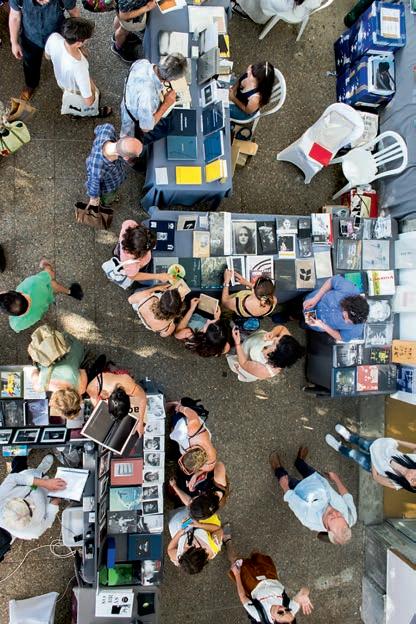






 — Véronique Vercheval, Place de la République 1982.
— Anaïs Fournié, Bring Your Own Paper, 2018.
— Claudio Marcozzi, François Hébel at the Théâtre Antique 2007.
— Pierre-Jean Amar, Robert Doisneau 1975.
— Véronique Vercheval, Lucien Clergue and Jean-Maurice Rouquette rue des Arènes, 1984.
Antonio Biasiucci’s Cows exhibition at the cloître Saint-Trophime, 2002.
— Véronique Vercheval, Place de la République 1982.
— Anaïs Fournié, Bring Your Own Paper, 2018.
— Claudio Marcozzi, François Hébel at the Théâtre Antique 2007.
— Pierre-Jean Amar, Robert Doisneau 1975.
— Véronique Vercheval, Lucien Clergue and Jean-Maurice Rouquette rue des Arènes, 1984.
Antonio Biasiucci’s Cows exhibition at the cloître Saint-Trophime, 2002.
—
Jacques Pénanguer, Michael Wolf’s Life in Cities exhibition, Église des FrèresPrêcheurs, 2017.
—
Véronique Vercheval, Arles 1981.
—
Jean-François Dalle-Rive, Iconoclasts Arles’ street, 1984. —
Véronique Vercheval, Conference 1989. —
Marie Brosillon, Claude Gassian’s exhibition, Atelier de la Mécanique, Parc des Ateliers, 2010.
— Romain Protin, Cosmos-Arles Books, 2018. —
INSTITUTIONAL PARTNERS
MAIN PARTNERS
MEDIA PARTNERS
THE RENCONTRES D’ARLES ENJOYS THE SUPPORT OF PRIX PICTET, FONDATION JAN MICHALSKI POUR L’ÉCRITURE ET LA LITTÉRATURE, THE SWISS CONFEDERATION, LËT’Z ARLES (LUXEMBOURG), BNP PARIBAS, THE LOUIS ROEDERER FOUNDATION, TECTONA, ACTES SUD, THE SWISS ARTS COUNCIL PRO HELVETIA, DEVIALET, SAIF, ADAGP, PROVENCE TOURISME, LUMA ARLES, COMMUNAUTÉ D’AGGLOMÉRATION ARLES CRAU CAMARGUE MONTAGNETTE.




THE SUPPORT FROM ÉDITIONS LOUIS VUITTON, MALONGO, FONDATION SWISS LIFE, FNAC, RIVEDROIT AVOCATS, SQUIRE PATTON BOGGS, FIDAL, JEAN-FRANÇOIS DUBOS, HAHNEMÜHLE FINEART, MATMUT, LIBÉRATION, POLKA, FISHEYE, AMA, RÉPONSES PHOTO, MÉTROBUS, PICTO FOUNDATION, DUPON - PHIDAP, PROCESSUS, CIRCAD, DEUXIÈME ŒIL, ATELIER SHL & GAMBIER, ANITA SAXENA INTERPRÉTARIAT.
AND THE ACTIVE COLLABORATION OF CENTRE NATIONAL DE LA RECHERCHE SCIENTIFIQUE, INSTITUT POUR LA PHOTOGRAPHIE, ASSOCIATION DU MÉJAN, MONOPRIX ARLES, MUSÉE DÉPARTEMENTAL ARLES ANTIQUE, ABBAYE DE MONTMAJOUR, ÉCOLE NATIONALE SUPÉRIEURE DE LA PHOTOGRAPHIE D’ARLES, MUSÉE RÉATTU, MUSÉE NATIONAL DE LA MARINE TOULON, CARRÉ D’ART – MUSÉE D’ART CONTEMPORAIN DE NÎMES, FRICHE LA BELLE DE MAI, COLLECTION LAMBERT AVIGNON, FRAC PACA, HÔTEL DES ARTS TOULON, CENTRE D’ARTS FERNAND LÉGER, MUSÉE DU VIEUX NÎMES, MUCEM, VILLE DE CAVAILLON, CENTRE PHOTOGRAPHIQUE MARSEILLE, CAMPREDON CENTRE D'ART, FONDATION MANUEL RIVERA ORTIZ, SERVICE DU PATRIMOINE DE LA VILLE D’ARLES, MUSÉE DE LA CAMARGUE, FONDATION VINCENT VAN GOGH, ASSOCIATION POUR UN MUSÉE DE LA RÉSISTANCE ET DE LA DÉPORTATION EN ARLES ET PAYS D’ARLES, INRAP, THÉÂTRE D’ARLES, INA, FESTIVAL PHARE, FESTIVAL CINÉGRAPHIES, LE BAL, MUSÉE DÉPARTEMENTAL ALBERT KAHN, CINÉMAS ACTES SUD (LE MÉJAN).

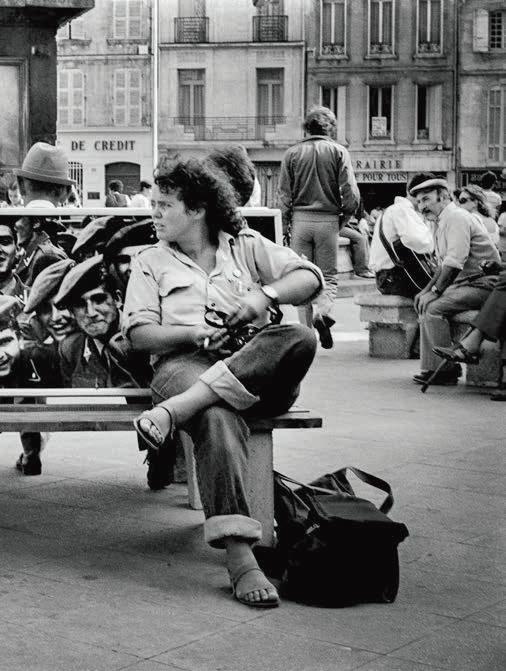 — Andres Donadio, ttJR exhibition, Atelier des Forges, Parc des Ateliers, 2007.
— Lucy Vigoureux, Françoise Nyssen, Minister of Culture, in the center, Hervé Schivetti, Mayor of Arles, on the right, Sam Stourdzé, on the left, and one of the maid of honor of the Queen of Arles, 2017.
— Pierre-Jean Amar, Mary Ellen Mark, 1976.
Basile Simon, Architecture of Memory exhibition, Église des FrèresPrêcheurs 2012.
— Andres Donadio, ttJR exhibition, Atelier des Forges, Parc des Ateliers, 2007.
— Lucy Vigoureux, Françoise Nyssen, Minister of Culture, in the center, Hervé Schivetti, Mayor of Arles, on the right, Sam Stourdzé, on the left, and one of the maid of honor of the Queen of Arles, 2017.
— Pierre-Jean Amar, Mary Ellen Mark, 1976.
Basile Simon, Architecture of Memory exhibition, Église des FrèresPrêcheurs 2012.
—
Véronique Vercheval, Arles, 1981. — Jean Pajot, Maryse Cordesse and Willy Ronis, 1980. —
PROGRAM
P. 20
MY BODY IS A WEAPON
Existing, resisting, photographing.
P. 22
LIBUŠE
EVOKATIV
P. 30
P. 86
LIVING
An inventory of domestic spaces.
P. 88
JARCOVJÁKOVÁ
LA MOVIDA
A CHRONICLE OF TURMOIL, 1978—1988
P. 38
RESTLESS BODIES
EAST GERMAN PHOTOGRAPHY, 1980—1989
P. 46
EVANGELIA KRANIOTI
THE LIVING, THE DEAD, AND THOSE AT SEA
P. 52 PIXY LIAO
EXPERIMENTAL RELATIONSHIP
P. 56
ON THE EDGE
A map of horizons and their limits.
P. 58
MARINA GADONNEIX
PHENOMENA
P. 64
PHILIPPE CHANCEL
DATAZONE
P. 70
WALLS OF POWER
MAN - MADE BARRIERS
THROUGHOUT EUROPE
P. 74
MOHAMED BOUROUISSA
FREE TRADE
P. 80
GERMAINE KRULL
GERMAINE KRULL & JACQUES RÉMY, A VOYAGE, MARSEILLE- RIO 1941
DAPHNÉ BENGOA & LEO FABRIZIO BUILDING ON A HUMAN SCALE, FERNAND POUILLON AND ALGERIA
P. 94
MARIO DEL CURTO VEGETAL HUMANITY, AS THE GARDEN UNFURLS
P. 98
HOME SWEET HOME
1970—2018: THE BRITISH HOME, A POLITICAL HISTORY
P. 104
THE ZONE
AT THE GATES OF PARIS
P. 108
REREADING
Photography revisited.
P. 110
HELEN LEVITT OBSERVING NEW YORK’S STREETS
P. 118
VARIÉTÉS , AVANT-GARDE REVIEW
BERENICE ABBOTT, FLORENCE HENRI, GERMAINE KRULL… THE AMSAB COLLECTION REVEALED
P. 124
EVE ARNOLD, ABIGAIL HEYMAN & SUSAN MEISELAS UNRETOUCHED WOMEN
P. 132
TOM WOOD
MOTHERS, DAUGHTERS, SISTERS
P. 136
THE OTHER PHOTOGRAPHY
A tribune for hoarders andobsessivepeople.
P. 138
PHOTO | BRUT COLLECTION BRUNO DECHARME & COMPAGNIE
P. 146
POSTCARDS NEWS FROM A DREAM WORLD
P. 152
THE SAGA OF INVENTIONS FROM THE GAS MASK TO THE WASHING MACHINE, CNRS ARCHIVES
P. 158
BUILDING THE IMAGE
Materialist practices of photography.
P. 160
VALÉRIE BELIN PAINTED LADIES
P. 164
YANN POCREAU CATHEDRAL
P. 166
LAURENCE AËGERTER CATHÉDRALES HERMÉTIQUES
P. 170
CLAUDE MARTIN-RAINAUD CAMERA OBSCURA
P. 172
RANDA MIRZA EL-ZOHRA WASN’T BORN IN A DAY
P. 176
CAMILLE FALLET LICENSE COLOR PHOTO STUDIO
P. 178
MARJAN TEEUWEN DESTROYED HOUSE
P. 184
THE ANONYMOUS PROJECT THE HOUSE
P. 190 ON EARTH IMAGING, TECHNOLOGY AND THE NATURAL WORLD
P. 196
PLATFORMS OF THE VISIBLE
New documentary approaches.
P. 198 CHRISTIAN LUTZ ELDORADO
P. 204
EMERIC LHUISSET WHEN THE CLOUDS SPEAK
P. 208
EMERGENCES
The festival is a trailblazer. It seeks out tomorrow’s talents.
P. 210 LOUIS ROEDERER DISCOVERY AWARD
TOBE GALLERY
MÁTÉ BARTHA
YCOS - PROJECT STEEVE BAURAS
CÉDRIC BACQUEVILLE GALLERY
DAVID DE BEYTER
TRACEY MORGAN GALLERY STACY KRANITZ
LA CASTIGLIONE GALLERY JJ LEVINE
STEPHEN BULGER GALLERY & PIERRE- FRANÇOIS OUELLETTE ART CONTEMPORAIN
MERYL M C MASTER
TAKA ISHII GALLERY
HANAKO MURAKAMI
GALERIA DA GÁVEA
SHINJI NAGABE
LUMIÈRE DES ROSES
LAURE TIBERGHIEN
HACKELBURY FINE ART ALYS TOMLINSON
P. 252 LEI LEI ROMANCE IN LUSHAN CINEMA
P. 256
KURT TONG
COMBING FOR ICE AND JADE
P. 260
GUILLAUME SIMONEAU MURDER
P. 264
AN UNUSUAL ATTENTION
FOUR ENSP GRADUATES FROM THE CLASS OF 2019
P. 266
HAPPY BIRTHDAY!
A jubilant jubilee.
P. 268
50 YEARS OF PHOTOGRAPHY FESTIVAL HISTORY AND COLLABORATIVE COLLECTION
P. 274 WHAT A STORY! ARLES TURNS 50, THE RENCONTRES COLLECTION
P. 278
CLERGUE & WESTON FIRST SHOW, FIRST WORKS
P. 282 50 YEARS, 50 BOOKS A SELECTION FROM THE MARTIN PARR COLLECTION
P. 284
GUESTS
The Rencontres d’Arles gives carte blanche to two favored institutions to explore, each in its own way, their relation to images.
P. 286
ARAB IMAGE FOUNDATION ON THE POTENTIAL OF PHOTOGRAPHY THE 0069FA COLLECTION, AN ARCHIVE AT WORK
P. 290
OPÉRA NATIONAL DE PARIS
3 E SCÈNE
SATELLITES
P. 292
ARLES ASSOCIATED
Institutions and Arles venues associated with the Rencontres program.
P. 294
FONDATION MANUEL RIVERA-ORTIZ HEY! WHAT’S GOING ON?
P. 298
LËT’Z ARLES CLAUDIA PASSERI KRYSTYNA DUL
P. 302 THE NONANTE-NEUF
P. 304 ASSOCIATION DU MÉJAN CAMILLE MOIRENC LIONEL ASTRUC & ÉRICK BONNIER
P. 306
ÉCOLE NATIONALE SUPÉRIEURE DE LA PHOTOGRAPHIE MODERNITY OF PASSIONS
P. 310
VR ARLES FESTIVAL
Virtual reality (VR) as new way of writing images.
P. 312
ARLES BOOKS
The photography book in all its forms.
P. 312
TEMPLE ARLES BOOKS CONTEMPORARY PRACTICES IN PHOTOGRAPHY PUBLICATION
P. 314
THE 2019 BOOK AWARDS
LEAF THROUGH BOOKS PUBLISHED WITHIN THE LAST YEAR
P. 315
LUMA RENCONTRES
DUMMY BOOK AWARD 2019 THE BEST 2019 DUMMY BOOKS
7 6
P. 316
GRAND ARLES EXPRESS
The wind of photography blows through the Great South…
P. 318
MARSEILLE
MUCEM
THE MAKING OF ILLUSIONS
FOUAD DEBBAS COLLECTION AND CONTEMPORARY COMMENTARIES
CENTRE
PHOTOGRAPHIQUE
MARSEILLE
JEAN-LOUIS GARNELL PICTURES FOR A WHILE
FRAC
PROVENCE-ALPESCÔTE D’AZUR
MOHAMED BOUROUISSA
ISLAND
CAROLINE CORBASSON
LOOKING FOR YOU
FRICHE LA BELLE DE MAI
LUDOVIC CARÈME
BRAZILS
40 YEARS LATER
CONTEMPORARY
PHOTOGRAPHY
IN CAMBODIA
P. 319
TOULON
HÔTEL DES ARTS
HARRY GRUYAERT, PHOTOGRAPHE
MUSÉE DE LA MARINE
RAYMOND DEPARDON
1962—1963, MILITARY PHOTOGRAPHER
P. 320
AVIGNON
COLLECTION LAMBERT
VIK MUNIZ IMAGINARIA
CAVAILLON
CHAPELLE DU GRAND COUVENT
THE LUBERON OF WILLY RONIS
L’ISLE-SUR-LA-SORGUE
CAMPREDON CENTRE D’ART
GUY BOURDIN
IMAGE WITHIN AN IMAGE
PORT-DE-BOUC
MAISON DES PROJETS
ANNE-CATHERINE BECKERECHIVARD
NO FISH NO FUTURE
P. 321
NÎMES
CARRÉ D’ART
RAYYANE TABET
FRAGMENTS
DANIEL G. ANDÚJAR
LEADERS
ART COLLECTION
TELEKOM
30 YEARS LATER
MUSÉE DU VIEUX NÎMES
TATTOOS
THE CHARLES PERRIER COLLECTION
P. 330
ARLES & C O.
Our favorites outside the program.
LUMA ARLES
RACHEL ROSE
MUSÉE RÉATTU
WE WERE FIVE
GALERIE ARENA
15 SUMMERS
P. 338
OPENING WEEK
NIGHT
WOMEN IN MOTION AWARD
DAY
P. 348
EDUCATION & TRAINING
PHOTOGRAPHY WORKSHOPS
CLICKS AND CLASSES
IMAGE EDUCATION
P. 354
ARLES
OFF-SITE
TRAVELING
EXHIBITIONS
JIMEI X ARLES
INTERNATIONAL PHOTO FESTIVAL
P. 358
CREDITS
PARTNERS
ACKNOWLEDGEMENTS
BOARD OF DIRECTORS
TEAM
8
50 YEARS OF PHOTOGRAPHY
HUBERT VÉDRINE PRESIDENT OF THE RENCONTRES D’ARLES
This summer, the Rencontres d’Arles will celebrate their 50th edition in style. The festivities will begin during the opening week and last until September, for our and your greatest pleasure. New cities and institutions will be joining the celebration through the rich program of the Grand Arles Express. Let us bid them welcome, from Port-de-Bouc, Cavaillon, Marseille, Toulon and Nîmes. Many thanks to Frac PACA, the MuCEM, Carré d’Art de Nîmes, the Hôtel des Arts de Toulon, and the Collection Lambert in Avignon, who remain by our side to proudly represent photography.
This 50-year anniversary is also an opportunity for us to look back on our history, our archives and collections. For the past two years, we have made an inventory of our photographic and audiovisual archives, of which close to 300,000 have already been listed. This meticulous process allowed us to update our exceptional collection of 3,300 photographs, which have been indexed and digitized. The collection, kept at the musée Réattu, will be shared online this summer, extending a task that has been close to our heart since the very beginning: to promote the work of the photographers we have defended and who put their trust in us.
The Rencontres d’Arles also and especially embody 50 years of a wonderful human adventure, undertaken by Lucien Clergue, Jean-Maurice Rouquette and Michel Tournier, a festival created by photographers, for photographers. To this day, it remains a growing story of friendship and passion, serving photographers. Over the years, the identity of the festival has also been shaped by a desire to act in favor of individuals known to be isolated
from the employment market. By o ering six-month contracts at the festival reception, the Rencontres d’Arles are a major contributor to integration through their economic activity. In ten years, nearly 2,000 Arlesians have been part of this plan, which o ers both extensive training and eld work. Close to 70% have found a long-term job the following year. At the peak of its activity, nearly 400 people work together to deliver a successful festival and to promote the work of photographers and artists who change our perception of the world.
I hope you will enjoy the festival and make the most of its anniversary by discovering the 50 exhibitions celebrating its 50 years of existence.
MANY THANKS TO ALL OUR PARTNERS!
The Rencontres d’Arles would like to thank the Ministry of Culture and Communication, the Provence-AlpesCôte d’Azur Regional Directorate of Cultural A airs, the ProvenceAlpes-Côte d’Azur Regional Council, the Bouches-du-Rhône Departmental Council, the city of Arles, the Ministry of Education and Youth, the Canopé network, the Center for National Monuments, the Arles-Crau-Camargue-Montagnette metropolitan area, and all our public partners for their enduring support. The Rencontres d’Arles are happy to join the CNRS for its 80th anniversary celebrations, as well as MPG2019, Year of Gastronomy, backed by Provence Tourisme. We would like to thank our patrons and private partners for their generosity and renewed con dence, especially Olympus, the Luma Foundation, BMW, SNCF Gares & Connexions, the Prix Pictet, the Fondation Jan Michalski pour l’Écriture et la Littérature,
the Swiss Confederation, Lët’z Arles (Luxembourg) and BNP Paribas, along with many whom we could not name here.
We extend a warm welcome to all the partners who are joining us for the rst time and to Kering, with whom we are proud to create an ambitious program honoring the work of outstanding women photographers.
We are looking forward to pursuing and strengthening our collaboration with partners who have recently joined us: the Louis Roederer Foundation, Devialet, Éditions Louis Vuitton, Hahnemühle FineArt and Malongo.
Finally, we wish to thank our main media partners who share and promote the image of the festival: France Inter, ARTE, Konbini, LCI, Le Point, Madame Figaro, Libération, Fisheye, Polka and AMA.
11 10
HAPPY BIRTHDAY TO THE RENCONTRES!
SAM STOURDZÉ
DIRECTOR OF THE RENCONTRES D’ARLES
Lucien Clergue left us in 2014. He was the photographer of Arles, a tireless photography booster and a link between France and America. In 1974, he asked Ansel Adams, a monument of Californian photography, to teach a master class in Arles. The festival was just four years old, living hand-to-mouth and struggling to survive from one year to the next. When Adams accepted the invitation, the festival’s future was ensured. Still-reluctant photographers were convinced that making the trip to Arles would be worthwhile. From then on, amateurs as well as the 20th century’s biggest names, including Jacques Henri Lartigue, Henri Cartier-Bresson, Gisèle Freund, Manuel Álvarez Bravo and W. Eugene Smith, came to Arles, which gradually became the capital of photography.
Michel Tournier died in 2016. One of the three musketeers, he co-founded the Rencontres photographiques d’Arles, in 1970, with Lucien Clergue and Jean-Maurice Rouquette. Few people know that, once in a while, the author of Friday, or the Other Island and The Erl-King hosted an ORTF show entirely devoted to photography called La Chambre noire [The Dark Room]. In the heyday of television, for 52 minutes he and Albert Plécy, the editor-in-chief of Point de vue, Images du monde and a connoisseur of photography, would interview major photographers, from Man Ray to André Kertész, Brassaï and Lucien Clergue. Right from the start, Tournier gave the festival a Parisian touch.
Jean-Maurice Rouquette passed away in 2019, the same year as the 50th anniversary celebration. He was nearly 88. Another Arles native, he shaped the festival’s soul with Lucien Clergue. One embodied a contemporary art form—photography, which
still had not received its due. The other defended the city’s historic landmarks and spearheaded the campaign for its inscription on UNESCO’s World Heritage List on two counts: its Roman and Romanesque art and architecture. Deeply a ected by the war’s destruction, these visionary builders helped, each in his own way, to rebuild Arles, which drew people passionate about photography from around the world. Together they had the brilliant idea that festival-goers must be o ered a comprehensive experience, that seeing amazing places would greatly contribute to making their visit worthwhile. In a few years, they forged a community, o ering projections, workshops, debates and even a photo-safari alongside exhibitions. From the outset, they made institutional recognition of photography a militant act. The rst festival featured three manifesto exhibitions, Photography Is an Art, tracing the history of major exhibitions devoted to the medium; and two solo shows devoted to Gjon Mili and Edward Weston, historic gures of photography.
Today, in tribute to those auspicious beginnings, we are recreating the Weston show as it was presented in 1970 and having it dialogue with Lucien Clergue’s earliest works, whose striking minerality echoes the American master’s straightforward, bare-bones vision.
The anniversary is also an opportunity to start working seriously on the archives and photography collection the Rencontres has built up over the years. From the outset, those exhibiting photographers who wanted to have left us works. In 50 years, we have built up a cherished collection of over 3,300 works preciously conserved at the Musée Réattu.
We have given Françoise Denoyelle, a historian passionate about photography, the opportunity to write our history. She has published two books: one lavishly illustrated by works in the collection, the other, more theoretical, narrating the great Rencontres d’Arles adventure in detail. Reading them, it is easy to understand that the project launched by three friends has outstripped their expectations. In a few decades, the Rencontres d’Arles became a major institution playing the role of trendsetter and contributing, as the founders wished, to the recognition of photography. In the space of a few years, they left us. Wanting to perpetuate their trailblazing spirit, we devised a busy program to celebrate the jubilee of an adventure that has lost none of its vibrancy and insightfulness in half a century. Carrying on the adventure addresses a seemingly unanswerable question: how can a summer atmosphere and a festive mood be conciliated with creating photography’s leading event?
The original aims remain unchanged. Arles is still where careers are launched, discoveries made, manifestoes proclaimed and where bold exhibits, as well as unexpected venues, consistently challenge ways of showing photography. Naturally, while telling this story and saluting the work of those whose commitment and talent have kept the festival’s spirit alive for 50 years, we wanted to set our sights on tomorrow. Celebrating the last 50 years while looking ahead to the next 50 is a way of continuing, with the same high standards, to achieve our goals of revealing trends and discovering the new generation. This year, complementing many historical shows— Helen Levitt, Variétés, Photo | Brut, Germaine Krull and so on—we are o ering four new sequences corresponding to the program’s themes: My Body Is a Weapon, On the Edge, Living and Building the Image. They shed light on a world in upheaval where the image often plays a key role as witness or actor.
From communist Czechoslovakia and Germany to post-Franco Spain, photographers recorded a counter-culture where staging one’s everyday life was an act of resistance against the established order and an alternative to dominant models. Existing, resisting, photographing: the body is also a weapon.
Where is my home? Where is my country?
The next two sequences revisit the theme of borders and home, endless sources of inspiration for artists in step with current events. As we celebrate the 30th anniversary of the fall of the Berlin Wall, the Walls of Power show recalls that walls are still news in Europe. Then, there is “the zone,” a 250-meter-wide strip of land ringing Paris that was o -limits to construction for military defense reasons but gradually lled up with all the capital’s homeless. The Zone tells the story of a huge shantytown around Paris in images. Today many artists build the image. A new generation of photographers creates photo installations. Examples include Camille Fallet and Yann Pocreau, who take over space, play with light and give the history of photography a new twist.
Talking about yesterday, today and tomorrow, tirelessly exploring photography, entering its zones of friction, where artists reveal the unspeakable, the Rencontres d’Arles has gone all-out to o er an ambitious, eclectic and electric program. Thanks everybody! Thanks to the artists, our partners, our many supporters, the amazing Rencontres team and everybody who helped us organize this year’s outsized edition. With 50 shows for its 50 years, the festival approaches its midlife crisis with some emphasis, much pleasure, and, above all, a strong desire to share the overflowing energy that drives photography.
Happy birthday to the Rencontres!
13 12
THE CURATORS OF THE EXHIBITIONS
ISABELLE BONNET
Born 1965, Poitiers, France. Lives and works in Paris, France.
Isabelle Bonnet worked for twenty- ve years in fashion photography between Paris and New York. In 2011, she resumed her university studies in art history. Under the supervision of Michel Poivert, she wrote two dissertations: Casa Susanna’s Cross-Dressers Photographs and The Interiors in English Photography, 1970-1980. She’s currently a Ph.D. student in visual culture, under the supervision of Bertrand Tillier, at the same university. Her thesis research focuses on the social imaginary of the crime scene in contemporary photography.
LUCIE ČERNÁ
Born 1983, Kutná Hora, Czechoslovakia. Lives and works in Prague, Czech Republic.
Lucie Černá devotes herself to photography and contemporary art. She has been involved in a close collaboration with Libuše Jarcovjáková for more than three years. She curated Jarcovjáková’s most recent exhibition, organized as part of the European Month of Photography, Berlin.
EXHIBITION: LIBUŠE JARCOVJÁKOVÁ, EVOKATIV — P. 22
FELIPE ABREU
Born 1989, Campina, Brazil. Lives and works in Barcelona, Spain.
Felipe Abreu has been the editor of OLD magazine since 2011. He was responsible for the night projections at the Valongo and Foto em Pauta festivals in 2017 and 2018, and for the exhibitions
Em Construção (Under Construction, 2017) and Novos Protagonismos: Fotogra a, Poder e Escolha (New Protagonisms: Photography, Power and Choice, 2018), both at the Valongo Festival.
EXHIBITION: SHINJI NAGABE, BANANA REPUBLIC — P. 240
BÉRÉNICE ANGREMY
Born 1968, Chamonix, France. Lives and works in Beijing, China.
Bérénice Angremy is co-director, with Victoria Jonathan, of Jimei x Arles International Photo Festival, created, in 2015, by the Rencontres d’Arles and Three Shadows Photography Art Centre in Xiamen (China). She and Jonathan founded Doors 门艺 Art & Culture Agency to grow cross-cultural projects between Europe and China.
A graduate of the École du Louvre, she has curated several exhibitions, including the China program at Rencontres d’Arles 2007.
EXHIBITION: LEI LEI, ROMANCE IN LUSHAN CINEMA — P. 252
PAULA AISEMBERG
Born 1966, Buenos Aires, Argentina. Lives and works in Paris, France.
Paula Aisemberg is a curator and art historian. She is currently an artistic project director for Emerige, charged with creating its coming foundation, for which she will provide general direction. From its opening in 2001 to its closing in 2018, she ran the Maison Rouge—Fondation Antoine de Galbert. In 2018, she co-curated several exhibitions: Où est la maison de mon ami? Regard sur la scène artistique syrienne en exil (Mda, Malako ).
EXHIBITION: PHOTO BRUT, COLLECTION BRUNO DECHARME & COMPAGNIE — P. 138
OLIVIER ASSAYAS
Born 1955, Paris, France.
Lives and works in Paris.
Olivier Assayas is a screenwriter and director. His lms include Destinées sentimentales, Carlos, Sils Maria and Personal Shopper Doubles vies [Non-Fiction], his latest motion picture, was released in 2019. He has written several books on lm, including Présences, a collection of essays published by Gallimard in 2009.
EXHIBITION: GERMAINE KRULL & JACQUES RÉMY, A VOYAGE, MARSEILLE-RIO 1941 — P. 80
ANTOINE DE BEAUPRÉ
Born 1971, Paris, France. Lives and works in Mallorca, Spain.
Antoine de Beaupré, who founded Galerie 213 in 1997, has worked extensively in the world of photography, beginning with a bookstore specializing in antique and contemporary photography. Later he founded Les Éditions 213 and curated exhibitions, such as Bernd and Hilla Becher Printed Matter 1964–2013 or Total Records.
EXHIBITION: LA MOVIDA, A CHRONICLE OF TURMOIL, 1978 — 1988 — P. 30
PASCAL BEAUSSE
Born 1968, Richelieu, France. Lives and works in Paris, France.
Pascal Beausse is in charge of photography collections at the Centre National des ArtsPlastiques in Paris. A curator and art critic, he teaches history and photographic theory at HEAD, the Geneva School of Art and Design. He also conducts research in the laboratory of the Curatorial/Knowledge program at Goldsmiths College, University of London. He was selected for a research and arts residency at the Villa Kujoyama, Kyoto, 2007.
EXHIBITION: HANAKO MURAKAMI, CONCEPTION — P. 236
BRUNO DECHARME
Born 1951, Paris, France. Lives and works in Paris.
Bruno Decharme studied philosophy and art history before becoming a director. His encounter with Jean Dubu et’s art brut collection in the mid-1970s was a turning point that changed his life, which he divides between making lms and his collection. He now owns 5,000 lms by 300 creators from the mid-19th century to the present. In 1999, he opened his collection up to the public and created abcd (art brut connaissance & di usion), an organization focusing on research, publishing, seminars, lms, and exhibitions.
EXHIBITION: HOME SWEET HOME, THE BRITISH HOME, A POLITICAL HISTORY — P. 98 ADRIEN
BOSC
Born 1986, Avignon, France. Lives and works in Paris, France.
Writer and publisher Adrien Bosc won the Académie Française's Grand Prix du Roman and the 2014 Prix de la Vocation for his rst novel, Constellation He published Capitaine in 2018. He founded Les Éditions du Sous-Sol and is deputy director of Éditions du Seuil.
EXHIBITION: GERMAINE KRULL & JACQUES RÉMY, A VOYAGE, MARSEILLE-RIO 1941 — P. 80
CLARA BOUVERESSE
Born 1989, Paris, France. Lives and works in Paris.
Clara Bouveresse is a lecturer at Université d’Evry-Val-d'Essonne and a photography specialist. She has published Histoire de l’agence Magnum (Flammarion) and co-organized the Magnum Manifesto exhibition at the International Center of Photography, New York, in 2017.
EXHIBITION: EVE ARNOLD, ABIGAIL HEYMAN & SUSAN MEISELAS, UNRETOUCHED WOMEN — P. 124
YVES CHATAP
Born 1977, Cameroon. Lives and works in Paris, France and Yaoundé, Cameroon.
Yves Chatap is an exhibition curator, art critic and publisher. Currently artistic director of the 3rd edition of the YaPhoto Festival (Cameroon), Yves Chatap was associate curator of the 10th Rencontres de Bamako (2015) and organized several exhibitions, including On the Roof (Arles, 2011), Intimités (SAVVY Contemporary, 2013), and Last Showing (Glasgow Photography Festival, 2014). He writes regularly for specialized reviews and artists’ catalogs.
EXHIBITION: STEEVE BAURAS, WHITE DREAMS EXTENDED — P. 216
FRANÇOIS CHEVAL
Born 1954, Belfort, France. Lives and works in Chalon-sur-Saône, France.
From 1996 to 2016, François Cheval directed the Musée Nicéphore Niépce in Chalon-sur-Saône. Since then, he has been curating exhibitions at the MuCEM for Marseille-Provence 2013, at the Pavillon Populaire in Montpellier, at PHotoEspaña, Kyotographie and the Rencontres d’Arles. He also co-founded and co-directed the new Lianzhou Museum of Photography, the rst public museum in China dedicated to photography. In 2016, he founded The Red Eye with Audrey Hoareau, an independent organization supporting photographic projects.
EXHIBITION: EMERIC LHUISSET, WHEN THE CLOUDS SPEAK — P. 204
EXHIBITION: PHOTO | BRUT, COLLECTION BRUNO DECHARME & COMPAGNIE — P. 138
FANNIE ESCOULEN
Born 1978, Valence, France. Lives and works in Marseille and Paris, France.
A graduate of the École Nationale Supérieure de la Photographie d’Arles, Fannie Escoulen is a freelance curator specializing in contemporary photography. She was assistant director at the BAL in Paris, from 2007 to 2014, and has curated solo shows of work by Antoine d’Agata and Stéphane Duroy at the BAL, Kate Barry at the Rencontres d’Arles and Anne-Marie Filaire at MuCEM.
In 2018, the Ministry of Culture asked her to program female photographers at Paris Photo. She regularly works with publishers and advises companies and sponsors on photography.
EXHIBITION: LAURENCE AËGERTER, CATHÉDRALES HERMÉTIQUES — P. 166
15
MARCEL FEIL
Born 1968, Zeist, Netherlands.
Lives in Haarlem and works in Amsterdam, Netherlands.
Marcel Feil is deputy director at Foam in Amsterdam. Since 2002 he has worked as curator at Foam and organized a wide range of historical and contemporary photography exhibitions. From the beginning he has been one of the editors of Foam Magazine, the international photography magazine published by Foam. Since 2010 he has been responsible for the museum’s exhibition programming, international exhibitions, Foam Magazine, and all other artistic activities.
EXHIBITION: ON EARTH, IMAGING, TECHNOLOGY AND THE NATURAL WORLD — P. 190
PEPE FONT DE MORA
Born 1961, Madrid, Spain. Lives and works in Barcelona, Spain.
Pepe Font de Mora founded in 1985 and directed until 2001 the Librería y Foto-Galería Railowsky in Valencia, Spain. As director of the Fundación Foto Colectania (Barcelona), he manages the collection’s acquisitions and organizes exhibitions, among them Resonancias Brassaï /Colom (2003), Vidas privadas (2004), Recorridos (2007), Trabajos de campo. Hara/Sanz Lobato (2009), Cara a cara, El retrato en la colección Foto Colectania (2016).
EXHIBITION: LA MOVIDA, A CHRONICLE OF TURMOIL, 1978 — 1988 — P. 30
AUDREY GENOIS
Born 1977, Quebec, Canada. Lives and works in Montreal, Canada.
Audrey Genois has been the executive director of MOMENTA | Biennale de l’image (formerly Le Mois de la Photo à Montréal) since 2016. For fteen years, she held the position of associate curator at Galerie de l’UQAM, where she coordinated over sixty exhibitions and twelve international touring shows. She has also edited and coordinated the production of forty publications on contemporary art.
EXHIBITION: GUILLAUME SIMONEAU, MURDER — P. 260
BÉATRICE GROSS
Born 1979, Boulogne-Billancourt, France. Lives and works in Paris, France, and New York, United States.
Béatrice Gross is an independent curator and art critic. She has organized numerous exhibitions, such as François Morellet, Dia Art Foundation (New York); Cholet-New York, François Morellet and Ellsworth Kelly, Sol LeWitt, Fred Sandback, Frank Stella, kamel mennour (Paris); Threads Left Dangling, Veiled in Ink, Emanuel Layr (Vienna); Drawing
Dialogues: Selections from the Sol LeWitt Collection, The Drawing Center (New York). She is editorial and curatorial advisor for Mémoire Universelle (Brussels) and a columnist for The Art Newspaper France.
EXHIBITION: MARINA GADONNEIX, PHENOMENA — P. 58
HINDE HAEST
Born 1987, Utrecht, Netherlands. Lives and works in Amsterdam, Netherlands.
Hinde Haest is a curator at Foam, where she has worked on exhibitions including Masahisa Fukase – Private Scenes and William Eggleston – Los Alamos. She previously worked on photography exhibitions at the Rijksmuseum, The Huis Marseille, the Victoria and Albert Museum and the Barbican Art Gallery. She has authored books on the photography and photobook collections of the Rijksmuseum and the Nederlands Fotomuseum, and has contributed to magazines such as Aperture Metropolis M and Foam Magazine.
EXHIBITION: ON EARTH, IMAGING, TECHNOLOGY AND THE NATURAL WORLD — P. 190
EMMANUELLE HALKIN
Born 1976, Rouen, France. Lives and works in Paris, France.
Emmanuelle Halkin is co-artistic director and head of development at The Anonymous Project. She is a graduate of the École du Louvre. She works as an independent editor on photographic projects ranging from publishing to exhibitions and live events. In 2014, she joined the Paris-based Circulation(s) festival. She is also the curator of Inter Kultur Foto Art, a biannual photography festival in Stuttgart, Germany.
EXHIBITION: THE ANONYMOUS PROJECT, THE HOUSE — P. 184
MATTHIEU HUMERY
Born Paris, France. Lives and works in Paris, Arles, and New York, United States.
Photography expert and curator Matthieu Humery runs the new Living Archives program for Luma Arles. Exhibitions he has organized include Annie Leibovitz The Early Years: 1970–1983; Archive Project #1, 2017; and Jean Prouvé, Architecte des Jours Meilleurs (architect of better days), 2018, for the Luma Foundation. Lately, he has organized Untroubled, the rst exhibition of Irving Penn’s work in the Middle East, at the Mina Image Center, Beirut.
EXHIBITION: 50 YEARS, 50 BOOKS, MASTERPIECES FROM THE LIBRARY OF MARTIN PARR — P. 282
MARION ET PHILIPPE JACQUIER & ZOÉ BARTHÉLÉMY
Marion Jacquier, born 1961, Lyon, France. Philippe Jacquier, born 1960, Casablanca, Morocco. Zoé Barthélémy, born 1990, Paris, France. Live and work in Montreuil, France. In 2004, Philippe and Marion Jacquier created the Lumière des Roses gallery in Montreuil. Their pioneering work on exploring and revaluing anonymous photography quickly made them known to French and international collectors and institutions, who found themselves at their Paris Photo booth, where their “photographic harvest” was presented. In 2013, the couple was joined by Zoé Barthélémy, freshly graduated from the ENS-Louis-Lumière. In 2017, they started to collaborate with contemporary artists whose works resonate with the old photography collection which constitutes the base of the gallery.
EXHIBITION: THE ZONE, AT THE GATES OF PARIS — P. 104
VICTORIA JONATHAN
Born 1985, Paris, France. Lives and works in Beijing, China. Victoria Jonathan is co-director, with Bérénice Angremy, of the Jimei x Arles International Photo Festival, created in 2015 by the Rencontres d’Arles and Three Shadows Photography Art Centre in Xiamen (China). She and Angremy founded Doors 门艺 Art & Culture Agency (in 2017). She has directed documentaries about Beijing’s art scene for French radio and television. She has collaborated as executive producer or art director on a number of projects with art institutions (Centre Pompidou, lille3000, UCCA) and festivals (Caochangdi PhotoSpring – Arles in Beijing, Nuit Blanche).
EXHIBITION: LEI LEI, ROMANCE IN LUSHAN CINEMA — P. 252
MARTHA KIRSZENBAUM
Born 1983, Vitry-sur-Seine, France. Lives and works in Paris, France and Los Angeles, United States.
Martha Kirszenbaum is a curator and writer. She graduated from Sciences-Po (Paris) and Columbia University. Kirszenbaum is the curator of the French Pavilion of the 58th Venice Biennale represented by Laure Prouvost. Previously, she was the director and curator of Fahrenheit in Los Angeles, and has held positions at the MoMA in New York, the Centre Georges Pompidou in Paris, the New Museum in New York, the Belvedere Museum, the 21er Haus in Vienna, and the Kunsthalle Mulhouse.
EXHIBITION: TOM WOOD, MOTHERS, DAUGHTERS, SISTERS — P. 132
LUCE LEBART
Born 1970, Asnières-sur-Seine, France. Lives and works in Paris, France and London, United Kingdom.
Luce Lebart is a historian of photography, curator and French correspondent for the Archive of Modern Conflict collection. She directed the Canadian Institute of Photography from 2016 to 2018 and the collections of the Société française de photographie from 2011 to 2016. She was the curator of (among others) Souvenirs du sphinx and Lady Liberty at the Rencontres d’Arles; Illuminations (Foto/Industria, Bologna); Frontera (National Gallery of Canada) and Gold and Silver (MBAC and FOAM Amsterdam, 2018). She has published several books, including Les Grands Photographes du XXe siècle (Larousse, 2017).
EXHIBITION: THE SAGA OF INVENTIONS, FROM THE GAS MASK TO THE WASHING MACHINE, CNRS ARCHIVES — P. 152
IRENE DE MENDOZA
Born 1978, Barcelona, Spain. Lives and works in Barcelona.
Irene de Mendoza is the artistic director of Fundación Foto Colectania (Barcelona). She holds a degree in Humanities from the Universitat Autònoma de Barcelona and a postgraduate diploma in Aesthetics and Art Theory from the Universitat Pompeu Fabra. She has curated several exhibitions, such as Joan Colom. Album (2011); Photobooks. Here and Now (2014); The Temptation to Exist (2015), about photographers Christer Strömholm and Anders Petersen.
EXHIBITION: LA MOVIDA, A CHRONICLE OF TURMOIL, 1978 — 1988 — P. 30
FLÓRA MÉSZÁROS
Born 1986, Pécs, Hungary. Lives and works in Budapest, Hungary.
Flóra Mészáros is an art historian focusing on avant-garde and contemporary art, completing a Ph.D. at the IV-Sorbonne University. She is a senior lecturer at Károli Gáspár University, Budapest, teaching contemporary photography and other subjects. In her independent curatorial practice, she deals with modern and contemporary Hungarian and international art. She worked as an assistant curator at the Kunsthalle Budapest. She is also an author and editor.
EXHIBITION: MÁTÉ BARTHA, KONTAKT — P. 212
17 16
WALTER MOSER
Born 1979, Wels, Austria. Lives and works in Vienna, Austria.
Walter Moser is chief curator for photography in the Albertina Museum, Vienna. His PhD was on Warren Lynch’s lm stills for Erich von Stroheim’s Greed He has curated exhibitions such as Lewis Baltz (2013), Blow-Up: Antonioni’s Film Classic and Photography (2014), Lee Miller (2015), Provoke – Between Protest and Performance (Co-Curator, 2016), Film Stills – Photography Between Art, Advertising, and Cinema (2016), Acting for the Camera (2017), Austria. Photography 1970–2000 (2017) and Robert Frank (2017-2018).
EXHIBITION: HELEN LEVITT, OBSERVING NEW
MAGALI NACHTERGAEL
Born 1978, Ixelles, Belgium. Lives and works in Paris, France.
Art critic and curator Magali Nachtergael lectures on literature and contemporary art at Paris 13 University. Specializing in visual culture, photography, and contemporary art, her work deals with literature in the media age and artists’ writings. Having published Les Mythologies Individuelles, Récit de Soi et Photographie (Rodopi, 2012), and Roland Barthes Contemporain (Max Milo, 2015), she is currently completing a book on re-narration, the archive, and the writing of history in contemporary art.
EXHIBITION: POSTCARDS, NEWS FROM A DREAM WORLD — P. 146
MATTHIEU ORLÉAN
Born 1975, Paris, France. Lives and works in Paris.
Since 2004, Matthieu Orléan has been head of temporary shows at the Cinémathèque Française, where he curated the exhibitions such as Dennis Hopper et le nouvel Hollywood (2008), Le Monde enchanté de Jacques Demy (2013), Martin Scorsese (2015), and Gus Van Sant Icônes (2016).
Since 1998, he has written on lm and the visual arts for the press and authored several books (Chantal Akerman, Autoportrait en cinéaste and Raymond Hains, J’ai la mémoire qui planche, Éditions du Centre Pompidou; Trésors Publics, 20 ans de création dans les Fonds régionaux d’art contemporain, Flammarion).
EXHIBITION: EVANGELIA KRANIOTI, THE LIVING, THE DEAD AND THOSE AT SEA — P. 46
ANNA PLANAS & PIERRE HOURQUET
Born 1980, Barcelona, Spain. Born 1974, Hagetmau, France. Live and work in Paris, France.
Anna Planas and Pierre Hourquet are independent curators and designers. In 2013 they co-founded Temple, an experimental site dedicated, until 2017, to presenting a new generation of artists. Today, Temple is an independent distribution platform. Through exhibitions and publications, Temple collaborates with multiple international institutions and artists in the domain of photography and the image. Their recent projects include the group exhibition The Hobbyist, presented at the Winterthur Fotomuseum and the 2018 Rencontres d’Arles.
EXHIBITION: DAVID DE BEYTER, THE SKEPTICS, RELICS OF TECHNOLOGICAL GODDESS — P. 218
MICHEL POIVERT
Born 1965, Toulon, France. Lives and works in Paris, France.
Michel Poivert is a critic, curator and professor of the history of photography at Paris 1-Panthéon Sorbonne University. He is the author of La Photographie contemporaine (2018), Les Peintres photographes (2017) and Brève histoire de la photographie, essai (2015). He was the curator of L’Événement, les images comme acteur de l’histoire (Jeu de Paume, Paris, 2007), Gilles Caron, le conflit intérieur (Musée de l’Élysée, Lausanne, 2013), Nadar, la Norme et le Caprice (Multimedia Art Museum, Moscow, 2015) and Gilles Caron 68 (Hôtel de Ville, Paris, 2018). He is chairman of the planning organization of the Collège international de photographie du Grand Paris.
EXHIBITION : PHILIPPE CHANCEL, DATAZONE — P. 64
ANNE REVERSEAU
Born 1981, Clermont-Ferrand, France. Lives and works in Brussels, Belgium.
Anne Reverseau is a researcher at the Fonds de la Recherche Scienti que specializing in the manipulation of images and the relationship between literature and photography. She teaches at UCLouvain, Belgium. She recently published Le Sens de la Vue Le Regard Photographique dans la Poésie Moderne (SUP, 2018). Her work on books of photography is the subject of the exhibition Pays de Papier, les Livres de Voyage at the Musée de la Photographie, Charleroi, 2019.
EXHIBITION: POSTCARDS, NEWS FROM A DREAM WORLD — P. 146
HOLLY ROUSSELL
Born 1989, Craftsbury Common, United States Lives and works in Suzhou, China.
Holly Roussell is an independent curator, museologist and art historian specializing in photography and contemporary art from Asia. In 2017, she co-founded the Asia Photography Project, a curatorial collective and platform for photography from East Asia. As an independent curator, her projects include working with William A. Ewing on Landmark: The Fields of Landscape Photography and co-curating Works in Progress: Photography in China in 2015, presented at the Folkwang Museum, Essen.
EXHIBITION: PIXY LIAO, EXPERIMENTAL RELATIONSHIP — P. 52
BARBARA SAFAROVA
Born 1972, Prague, Czech Republic. Lives and works in Paris, France.
A Ph.D. in aesthetics, Barbara Safarova is a lm producer, head of abcd (art brut connaissance & di usion), and program director at the International College of Philosophy. She has published many texts on art brut artists. She has co-curated several art brut shows in France and abroad, including The Roots of Art Brut at the Maison Victor Hugo (Paris), which featured a selection of works from the rst psychiatric collections of the early 20th century.
EXHIBITION: PHOTO BRUT, COLLECTION BRUNO DECHARME & COMPAGNIE — P. 138
LEE SHULMAN
Born 1973, London, United Kingdom. Lives and works in Paris, France.
Lee Shulman is the founder and creative director of The Anonymous Project. He is a graduate of the University of Westminster with a BA (Hons) in lm and photography. For the last two decades he has worked as an award-winning lm maker both in the UK and France. He is also an avid art collector and very active in the international arts community.
EXHIBITION: THE ANONYMOUS PROJECT, THE HOUSE — P. 184
SAM STOURDZÉ
Born 1973, Paris, France. Lives and works in Paris and Arles, France. Once a boarder at the Villa Medici, Sam Stourdzé became director of the Rencontres d’Arles in 2014. Previously he was director of the Musée de l’Élysée in Lausanne and, from 2010 through 2014, editor in chief of ELSE magazine. A specialist in images, he researches the contexts of their production, distribution, and reception. He has been curator and co-curator of numerous exhibitions and published several works, including Le Cliché-Verre de Corot à Man Ray; the Dorothea Lang and Tina Modotti retrospectives; Chaplin et les images; Fellini, la grande parade; and, most recently, Derrière le Rideau: L’esthétique Photomaton and Paparazzi! Photographes, stars et artistes.
EXHIBITIONS: MOHAMED BOUROUISSA, FREE TRADE — P. 74; PHOTO BRUT, COLLECTION BRUNO DECHARME & COMPAGNIE — P. 138; VARIÉTÉS, AN AVANT-GARDE REVIEW, BERENICE ABBOTT, FLORENCE HENRI, GERMAINE KRULL… THE AMSAB COLLECTION REVEALED — P. 118; YANN POCREAU, CATHEDRAL — P. 164
ISTVÁN VIRÁGVÖLGYI
Born 1982, Budapest, Hungary. Lives and works in Budapest.
István Virágvölgyi is a photo editor and curator and the secretary of the Capa Grand Prize Hungary. He worked at the leading Hungarian news outlet Origo from 2007 as a photography editor. In 2011, he joined the MTI Hungarian News Agency as head of the photo desk. Since 2014, he has been deputy director and curator at the Robert Capa Contemporary Photography Center. He also lectures on documentary photography at the Budapest Metropolitan University.
EXHIBITION: WALLS OF POWER, MAN-MADE BARRIERS THROUGHOUT EUROPE — P. 70
SONIA VOSS
Born 1978, Paris, France. Lives and works in Paris and Berlin, Germany. Sonia Voss recent exhibitions include: Alfred Ehrhardt, The Forms of Nature at the 2019 Kyotographie Festival, Kyoto; Sophie Calle, Serena Carone: Beau Doublé, Monsieur le Marquis! at the Musée de la Chasse et de la Nature, Paris (2017–2018); Anton Roland Laub, Mobile Churches, Berlin and Paris; George Shiras, L’Intérieur de la Nuit at the Musée de la Chasse et de la Nature (2015–2016) ; and shows for the Rencontres d’Arles (2017–2018). She collaborated with Xavier Barral on the Josef Koudelka exhibition at C/O Berlin in 2017. She has also overseen publications for Xavier Barral, Filigranes, and Kehrer publishing houses.
EXHIBITION: RESTLESS BODIES, ESAT-GERMAN PHOTOGRAPHY, 1980 — 1989 — P. 38
DUAN YUTING
Born 1972, Taiyuan, China. Lives and works in Guangzhou, China.
Duan Yuting founded the Lianzhou Foto Festival in 2005 and has been closely involved with the festival’s developments since then. In over ten years, Lianzhou Foto has grown to become an influential platform of discussion for the local and international photography scene. The festival’s long history was celebrated in 2017 with the opening of the Lianzhou Museum of Photography (LMP), co-founded by Duan Yuting and French curator François Cheval. The LMP is the country’s rst public institution dedicated to photography in China.
EXHIBITION: KURT TONG, COMBING FOR ICE AND JADE — P. 256
19 18
STREETS
P.
YORK’S
—
110
MY BODY IS A WEAPON
Existing, resisting, photographing.
LIBUŠE JARCOVJÁKOVÁ EVOKATIV
The street, the night, alcohol, love and depression in communist Czechoslovakia between 1970 and 1989.
RESTLESS BODIES
EAST GERMAN PHOTOGRAPHY
1980 — 1989
Sixteen photographers manifest their singularity in a totalitarian state, show men and women as they really are and express their freedom through their craft.
EVANGELIA KRANIOTI
THE LIVING, THE DEAD, AND THOSE AT SEA
Broken destinies from Rio de Janeiro to Beirut and Cairo.
PIXY LIAO
EXPERIMENTAL RELATIONSHIP
An intimate yet sociological look at modern love.
LA MOVIDA

A CHRONICLE OF TURMOIL
1978 —1988
Contemporary Spain’s groundbreaking cultural movement started in early 1980s Madrid after decades of dictatorship.
Ouka Leele, Madrid, 1984. Courtesy of the artist.
JARCOVJÁKOVÁ EVOKATIV
Authentic. Visual. Life a irming. Libuše Jarcovjáková’s photographs tell a story, her own story. From the very start, she took pictures in a personal, clearly pro led style that blends rawness with poetry. Snapshots seemingly taken without forethought, mostly using flash, at angles in which the subjects have no opportunity to escape or notice that they have become the victim of the uncompromising and predatory lens.
The exhibition presents a selection of photographs taken between 1970 and 1989 in Prague, Czechoslovakia, during a dark time for freedom. But Jarcovjáková didn’t care. She lived, took photos, and loved. Her work is not the document of an age, it is an authentic record of the life of a photographer who experienced everything she shot. The world as seen through the view nder of a camera suddenly made sense. The young artist lived fast and spontaneously, with friends or alone, at night, in bars, in the company of men or women. Often she did not have the time to appreciate fully what was going on in the mêlée surrounding her. It was living for the moment, in the here and now, that connected her with the communities that remained o the radar of the communist regime. Whether these were Gypsies or members of the Prague gay scene, she found refuge with them, they were her family, and she felt good, natural and free in their company.
Jarcovjáková led a double life. On the one hand, she was friend with workers, lived in pubs. On the other, she moved within the intellectual circles of the Film Academy (FAMU) in Prague, where she studied photography. And yet, it was in vain that she sought recognition and understanding of her work. Her photographic language was in stark contrast with the Czechoslovak documentary school of the 1970s and 1980s. For many years, her work was approached with caution. However, with lack of interest came greater freedom. She took photographs for herself and of how she felt—idiosyncratically and independently. She became her own teacher, critic and mentor. She came to trust her intuition and her compulsive need to record everything. The themes of her work—the street, the night, sex, work, alcohol, love, depression—were shot with a self-destructive spontaneity. She was unafraid of imperfection, but captured her surroundings, people and her own feelings in their raw state.
Exhibition curator: Lucie Černá.

Publication: Evokativ, Untitled, 2019.







Modern prints by Josef Horázný, Prague. Wallpapers by Picto, Paris.
Framing by Circad, Paris.
With support from the Czech Center, Paris.
Exhibition venue: Église Sainte-Anne.
LIBUŠE JARCOVJÁKOVÁ
Born 1952, Prague, Czechoslovakia. Lives and works in Prague.

Libuše Jarcovjáková studied at the Film Academy in Prague (FAMU). For several years she plied her trade amongst the laboring professions, observing people through the lens of a camera and recording life in what was then Czechoslovakia. At the end of the seventies she was allowed to undertake a creative residency lasting several months in Japan. Upon her return, she became a member of Prague’s gay scene, and for a long time, followed the Roma and Vietnamese communities. In 1985, she left for West Berlin, whence she returned regularly to Czechoslovakia. In 1992, she returned to Prague for good.
Self-Portrait, Prague, 1981. Courtesy of the artist [all photographs].
—

23 22 LIBUŠE
Self-portrait by Libuše Jarcovjáková.
Self-portrait by Lucie Černá.
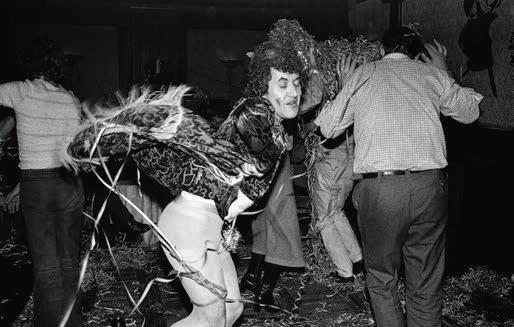

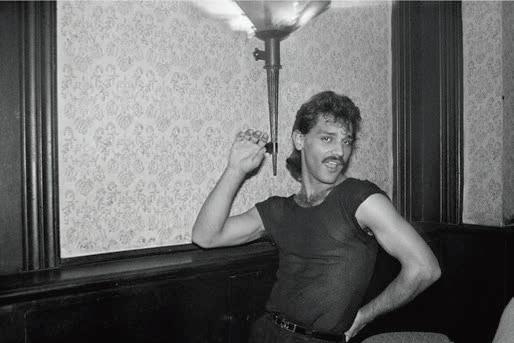


25 24
— David Prague, 1984.
— From the T-club series, Prague, 1980s.
František, Prague, 1984. From the T-club series, Prague, 1980s.
Postman from North Bohemia Prague, 1984.
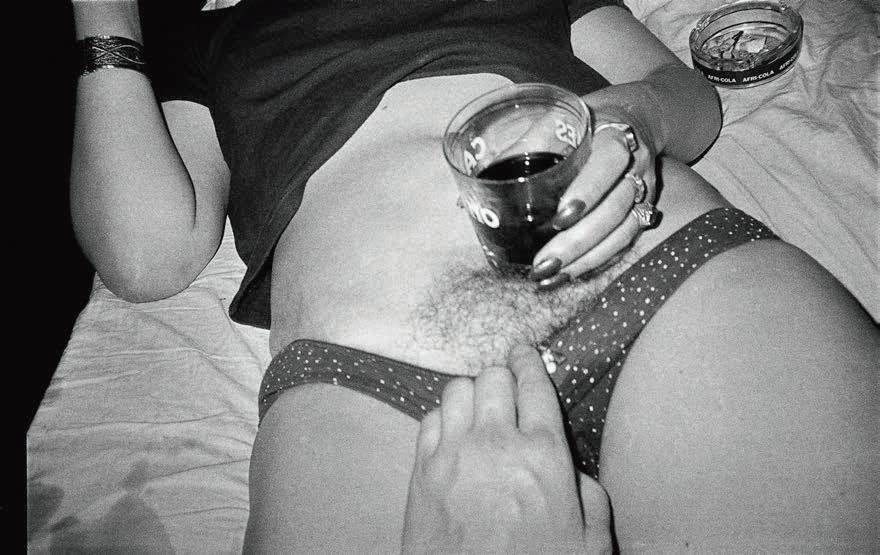

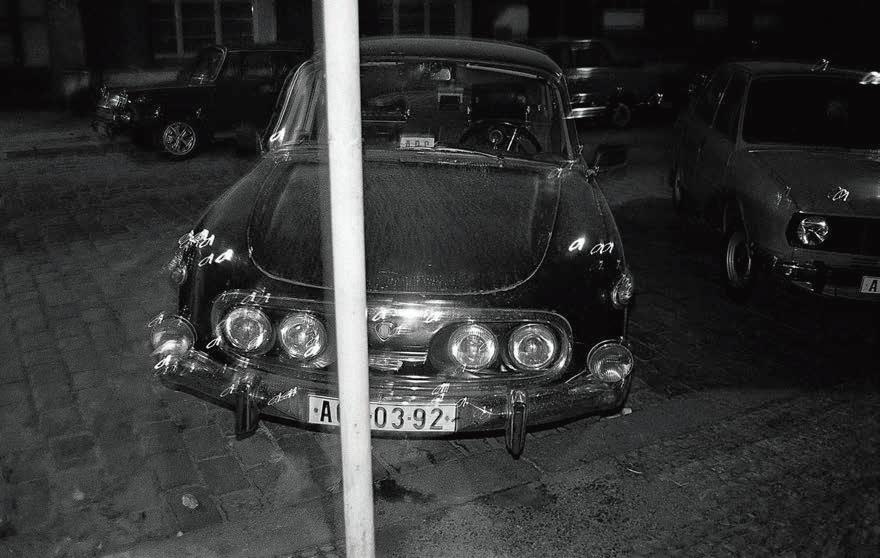
27 26 —
Night Car Prague, 1984.
Killing Summer Prague, 1984.
From the Cubans series, Prague, 1983.

29 28 — From the T-club series, Prague, 1980s.
LA MOVIDA A CHRONICLE OF TURMOIL 1978 —1988
ALBERTO GARCÍA-ALIX (1956), OUKA LEELE (1957), PABLO PÉREZ-MÍNGUEZ (1946-2012) & MIGUEL TRILLO (1953)
This exhibition brings together the work of four photographers from La Movida, one of the most remarkable and natural movements to arise out of contemporary culture in Spain. It took place in Madrid, mainly, at the beginning of the 1980s.
After several decades of dictatorship and ostracism, Spain’s transition involved a new generation fascinated by modernity and new ideas, which arrived via artists in diverse domains: music, fashion, cinema, painting, and photography.

The whole city was transformed. The streets saw more people at night than during the day. A large number of fanzines and journals, such as the now cult La Luna de Madrid and Madrid Me Mata, expressed new ideas and points of view. It was also the moment where Pedro Almodóvar released his rst lms (Pepi, Luci, Bom), using unbridled dialogue and absurd scenarios, lmed no place in particular.
La Movida was a highly publicized phenomenon from the beginning, one that established a myth. But beyond the movement of a generation with a shared ideology, a historic moment was bubbling up. It was optimistic and displayed an eclecticism sometimes seen as narcissistic and trivial. It is worthwhile, however, to look at the phenomenon from a di erent angle, that of a search for freedom and a claim on self-determination after a long period of stasis.
Perhaps the allure of the Madrid Movida, as some of its leading figures claim, can be accounted for as an era in which people encountered each other—or, in the words of Pérez-Mínguez: “Whenever three people share a desire to do something together, a movida is born.” Alberto García-Alix, Ouka Leele, Pablo Pérez-Mínguez and Miguel Trillo were all members of La Movida. Although they coexisted and crossed each other’s paths as they moved in di erent circles, what is truly remarkable is how each of them experienced and photographed with unprecedented energy, yet from utterly di erent angles. The result is a multifaceted look at this movement.
Exhibition curators: Antoine de Beaupré, Pepe Font de Mora, Irene de Mendoza. With the cooperation of Adolfo Autric. Exhibition coproduced by the Fundación Foto Colectania, Barcelona, and the Rencontres d’Arles.


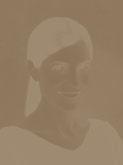
Framing by Estampa, Madrid and Acutangle, Barcelona.
Ouka Leele is nominated for the Prix de la Photo Madame Figaro Arles 2019.
Exhibition venue: Palais de l’Archevêché.
31 30
Ouka Leele, Peluquería [Hair Salon], 1979. Courtesy of the artist. —
Portraits of Antoine de Beaupré, Irene de Mendoza and Pepe Font de Mora: courtesy of the curators.
—
— Miguel Trillo, El Calderón, The Rolling Stones Concert Madrid, 1982. Courtesy of the artist and VEGAP.

Miguel Trillo, El Pabellón, Barón Rojo Concert Madrid, 1984. Courtesy of the artist and VEGAP.
Pablo Pérez-Mínguez, Fany, agente secreto [Fany, Secret Agent], 1979-1985.
Adolfo Autric Collection. Courtesy of the artist and VEGAP.
Pablo Pérez-Mínguez, Alaska, Pedro y Fabio [Alaska, Pedro and Fabio], 1979-1985.
Adolfo Autric Collection. Courtesy of the artist and VEGAP.


33 32
Miguel Trillo, Sala Rock-Ola Madrid, 1982. Courtesy of the artist and VEGAP. NEXT DOUBLE SPREAD


35 34
— Alberto García-Alix, Autorretrato con el cuerpo herido [Self-Portrait with a Wounded Body], 1981. Courtesy of the artist and VEGAP.

Alberto García-Alix, Mi gran ilusión [My Big Illusion], 1980. Courtesy of the artist and VEGAP.

37 36
RESTLESS BODIES EAST GERMAN
PHOTOGRAPHY 1980 —1989
TINA BARA (1962), SIBYLLE BERGEMANN (1941-2010), KURT BUCHWALD (1953), LUTZ DAMMBECK (1948), CHRISTIANE EISLER (1958), THOMAS FLORSCHUETZ (1957), YORK DER KNOEFEL (1962-2011), UTE MAHLER (1949), EVA MAHN (1947), SVEN MARQUARDT (1962), BARBARA METSELAAR BERTHOLD (1951), MANFRED PAUL (1942), RUDOLF SCHÄFER (1952), GUNDULA SCHULZE ELDOWY (1954), GABRIELE STÖTZER (1953), ULRICH WÜ ST (1949)
Thirty years after the fall of the Berlin Wall, what do we know about East German photography? This exhibition focuses on the final decade of this large and too little-known chapter of history through the prism of the body. Its aim is to show how, within an authoritarian state based on the negation of individuality, physical connement, surveillance, and normativity, photography was a medium through which artists were able to express the singularity of their lives and their relationship with their bodies, revealing a powerful inner sense of freedom.
Following three decades of documentary and humanist photography, a more subjective, hybrid language started to emerge in the early 1980s. Without disowning the legacy of their predecessors, photographers distanced themselves from their subtly critical empathy in order to confront social taboos and give substance to the men and women of their time. The marginalized or isolated bodies highlight the life that boils over under the lid of repression, the solitude of the individual within the community, and the irreducibility of the subject, especially in nude photography.

Exploring the margins of society, some artists joined this counterculture, including the punk movement and underground fashion groups. They captured their restlessness, imagination, rebellion and di erences. Dressing up and staging themselves became a weapon allowing them to stand out from the crowd.
At the same time there emerged a generation of photographers who chose hybridization, drawing on performative art. Most put the body at the center of their experiments, translating regime-induced schizophrenia, existential questioning, and the thirst for subversion and speed in various forms.
Another survival strategy, internal exile, is also shown photographically through introspection, an attentive examination of both body and face. The withdrawal from a couple’s intimacy or circle of friends, the pursuit of an alternative life “under the radar,” and the escape through dreams are expressed by many photographers of that time.
Exhibition curator: Sonia Voss, winner of the Rencontres d’Arles Curatorial Research Fellowship.


Publications: Les Libertés intérieures, texts by Sonia Voss and interviews with the artists, Xavier Barral, 2019 (French edition); The Freedom Within Us, Koenig Books, 2019 (English edition).



Framing by Circad, Paris.
With support from IFA (Institut für Auslandsbeziehungen).

The Rencontres d’Arles Curatorial Research Fellowship receives the support of Jean-François Dubos.
Exhibition venue: Atelier des Forges, Parc des Ateliers.
—
39 38
Gundula Schulze Eldowy, Berlin 1987 from the Berlin in einer Hundenacht series [Berlin on a Dog’s Night].
Portrait of Sonia Voss: Patric Chiha.


41 40
— Rudolf Schäfer, Der ewige Schlaf —visages de morts [The Eternal Sleep —Faces of the Dead], 1981.
Manfred Paul, Verena—Geburt 3 [Verena—Birth 3], 1977.


43 42 —
Tina Bara, from the artist’s archive Lange Weile [A Long Time], 1983–1989.
Christiane Eisler, Mita and Jana in Leipzig, 1983.


45 44
—
Sibylle Bergemann, Heike, Berlin, 1988 (Allerleirauh).
York der Knoefel, from the Schlachthaus [Slaughterhouse] series, 1986–1988.
EVANGELIA KRANIOTI THE LIVING, THE DEAD AND THOSE AT SEA
A filmmaker and photographer, Evangelia Kranioti explores the borderlines of the world and captures individual destinies caught in the net of men’s trade. Cargo ports, highways, the backstage of a carnival, graveyards, war ruins: settings of both ceaseless transit and immobilized lives, nailed to the ground or anchored at sea.
The tension between inertia and uprooting is fundamental to Evangelia Kranioti’s relationship with film and photography—two media which question fixity, time and death. In her project Exotica, Erotica, Etc., long-distance sailors await the next stopover, longing to form temporary and priced love a airs. In Obscuro Barroco, the urban queer scene unfolds in Rio de Janeiro, a vertiginous territory of gender and metamorphosis. In Beirut Fictions, African and Asian maids are con ned to a foreign country, Lebanon, with no hope of integration. Finally, in Era Incognita , it is the living who migrate to the home of the dead, in Cairo’s necropolis, driven by the housing crisis in Egypt.
In the heart of her work, faces and bodies meet and reflect each other across the oceans; these proofs of existence—colored by labor and longing—reveal themselves to be delicate yet deeply alive, as Evangelia Kranioti slowly delves into their in nite dreams. What she portrays are not the exhausted ghosts of a living-dead proletariat, but souls in a quest of warmth and dignity which becomes her own. Thus, Evangelia Kranioti weaves the cartography of a vulnerable and marginalized group that she places at the center: the fresco of a community of outsiders which transcends the borders of the Mediterranean, matrix of exiles.
Léandre Bernard-Brunel
Exhibition curator: Matthieu Orléan. Prints by Picto, Paris. Framing by Circad, Paris. Wallpapers by Picto, Paris.
With support from the Sator gallery.
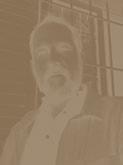

Evangelia Kranioti is nominated for the Prix de la Photo Madame Figaro Arles 2019.
Exhibition venue: Chapelle Saint-Martin du Méjan.
EVANGELIA KRANIOTI
Born 1979, Athens, Greece. Lives and works in Paris, France.


Greek director and visual artist Evangelia Kranioti has studied law (Athens National University), visual arts (ENSAD Paris), and screenwriting (Le Fresnoy, La Fémis). Her first two feature-length documentaries, Exotica, Erotica, Etc. (Berlinale Forum 2015) and Obscuro Barroco (Berlinale Panorama 2018), won many prizes at international festivals (including the TEDDY Jury Award and the Hot Docs Emerging Filmmaker Award), as well as four Iris awards from the Greek Film Academy.
Eu sou obscura para mim mesma [I Am Obscure to Myself], from the Obscuro Barroco series.
—

47 46
Self-portrait by Evangelia Kranioti.
Self-portrait by Matthieu Orléan.
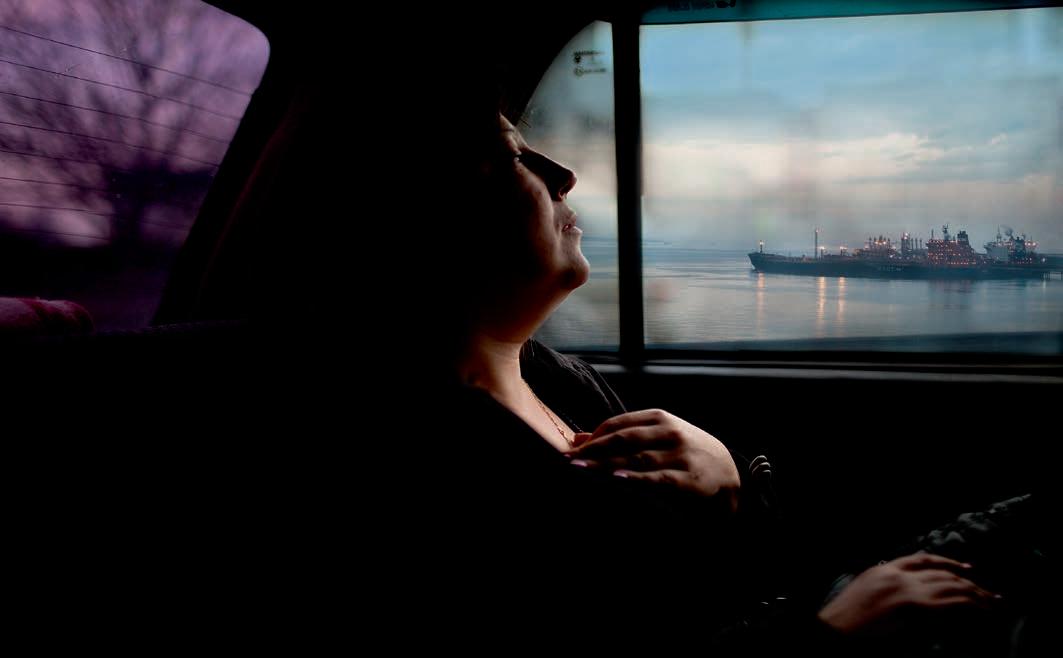


49 48
— Novorossiysk Madonna from the Exotica, Erotica, Etc. series.
Sept Équateurs, from the Exotica, Erotica, Etc. series.
Miss Elegance from the Beirut Fictions series.

51 50 — Desert on Board, from the Exotica, Erotica, Etc. series.
PIXY LIAO EXPERIMENTAL RELATIONSHIP
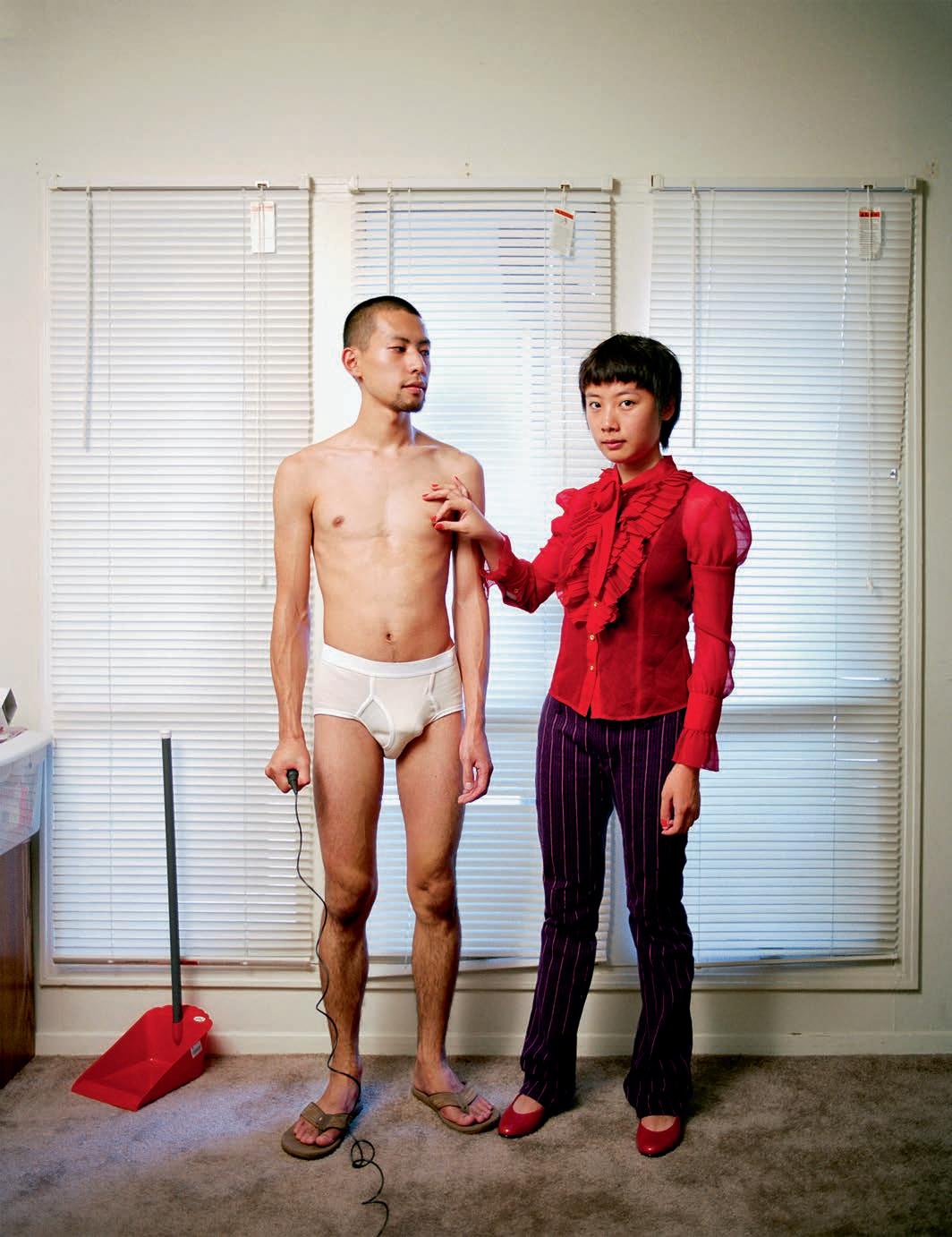
Pixy Liao is exemplary of a new generation of artists experimenting with the possibilities of portraiture and photography. Her ongoing long-term project Experimental Relationship began in 2007. The works, depicting modern partnership, emerge from her own personal experience and intimate space, yet take into account socio-cultural pressures, issues of nationality in a globalized world and the dynamics of gender roles, signi cant both within the Chinese context and internationally.
In this work, she stages photographs with her Japanese boyfriend, Moro, to explore how national culture influences and dictates interactions in a romantic relationship. In her photographs, Liao often portrays herself in a dominant role, while her boyfriend assumes positions of submission. She credits Moro, ve years her junior, as inspiration for this ongoing series, explaining, “Moro made me realize that heterosexual relationships do not need to be standardized. The purpose of this experiment is to break the inherent relationship model and reach a new equilibrium.” Liao structures her images to appear often above her boyfriend, looking down on him from above, or fully clothed while he is naked. These subtle stagings intelligently reverse “expected” gender roles in the image.
Exhibition curator: Holly Roussell.

Exhibition coproduced by Jimei x Arles International Photo Festival and the Rencontres d’Arles.
Prints by Atelier SHL, Arles.
Winner of the 2018 Jimei x Arles – Madame Figaro Women Photographers Award.
Exhibition venue: Croisière
This work forces the viewer to question his/her gaze and to take part in the couple’s performance which seems to continue long after the photograph is taken and hung on the wall. Each scene, staged meticulously to reference normative gestures from visual culture or socio-cultural tendencies, becomes active when we, the viewers, interact with it—imbuing it with our individual, private, cultural and gender bias.
PIXY LIAO

Born 1979, Shanghai, China. Lives and works in New York, United States.




Pixy Liao’s long-term photo project Experimental Relationship challenges conventional ideas of gender dynamics. She also explores female identity in video and sculpture. Liao’s photographs have been exhibited internationally, including the He Xiangning Art Museum, Nanshan, the Museum of Sex and Metro Pictures, New York, and Shanghai K11. She is the recipient of an NYFA Fellowship in photography, the Jimei x Arles Photo Festival-Madame Figaro Women Photographers Award, and the LensCulture Exposure Awards.
Portrait of Pixy Liao: Shen Wei.


Relationships Work Best When Each Partner Knows Their Proper Place, from the Experimental Relationship series, 2008. Courtesy of the artist [all photographs].
—
53 52
Portrait of Holly Roussell: Amber Tang.
— Start Your Day With a Good Breakfast Together from the Experimental Relationship series, 2009.


How to Build a Relationship With Layered Meanings from the Experimental Relationship series, 2008.
Red Nails from the For Your Eyes Only series, 2014.

55 54
ON THE EDGE
A map of horizons and their limits.
MARINA GADONNEIX
PHENOMENA
Places of scienti c research where natural phenomena are analyzed and recreated.
MOHAMED BOUROUISSA FREE TRADE
In 15 years of photography, video, painting, drawing and sculpture, Mohamed Bourouissa has unrelentingly explored the place of the humblest in social space.

PHILIPPE CHANCEL
DATAZONE
Ecological trauma, chaotic deindustrialization, globalization’s toxic e ects… Philippe Chancel explores some of our planet’s sensitive sites.
WALLS OF POWER MAN - MADE BARRIERS
THROUGHOUT EUROPE
The return of borders and security reflexes in Europe.
GERMAINE KRULL
GERMAINE KRULL & JACQUES RÉMY, A VOYAGE, MARSEILLE–RIO 1941
Krull documented her and the director’s transatlantic voyage with André Breton and Claude Lévi-Strauss in pictures, most of which have never been published.
Mohamed Bourouissa, Bracelet électronique 2014. ADAGP (Paris), 2019. Courtesy of the artists, kamel mennour, Paris/ London and Blum & Poe, Los Angeles/ New York/Tokyo.
MARINA GADONNEIX PHENOMENA
Marina Gadonneix has focused on crime scenes, green or blue rooms in the wings of television shows, artwork photography studios, and training sites simulating urban guerilla warfare. Her new series explores scienti c research sites that analyze and recreate extraordinary natural phenomena, from avalanches to hurricanes, earthquakes, volcanic eruptions, the Northern Lights, shooting stars, colliding black holes, meteorite impacts, the environment of Mars, and deep space. Painstakingly performed in laboratories, these meteorological and astrophysical experiments were chosen because they make beautiful images.
Phenomena started in 2014, during a residency at the Centre Nationale d’Études Spatiales (National Center of Space Studies, also known as CNES) followed by many trips across Europe and the United States. The idea dawned on the artist when she came across anonymous photographs of pioneering Norwegian physicist Kristian Birkeland standing next to his Terrella (“little Earth” in Latin), which he developed in 1896 and used until 1917. Made of an electron gun and a magnetic sphere inside a vacuum chamber, the machine was built to learn more about the Earth’s electromagnetic activities, including the Northern Lights.
Looking at traditional scientific imagery in a different way, with fragments and oblique perspectives, the Phenomena series shows the latest modeling and visualization technology. Continuously shifting between observed reality and recreated simulations, Gadonneix explores the enigmatic production of depictions based on experience, observation, and manipulation, like so many paradoxical sites of speculation and cognition at the edges of the visible and the invisible.
Exhibition curator: Béatrice Gross.
Exhibition design: Cécile Degos.
Exhibition in partnership with FRAC Normandie, with the support of Galerie Christophe Gaillard, Paris.
Publication: Phénomènes, Sally Bonn, Béatrice Gross, Audrey Illouz, RVB Books, 2019.
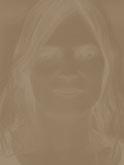
Prints by Janvier, Paris.
Framing by Circad, Paris.
Winner of the 2018 Luma Rencontres Dummy Book Award.

Exhibition venue: Mécanique Générale
MARINA GADONNEIX
Born 1977, Paris, France. Lives and works in Paris.
With a degree from the École Nationale Supérieure de la Photographie d’Arles, Marina Gadonneix explores the unsuspected passage from rough territory to phantasmatic image, from a type of trace of the real to its most metaphorical mental expression. Her work has been shown at numerous institutions in Europe and the United States, notably at the Rencontres d’Arles, the Centre Photographique d’Île-de-France, the Kunsthalle, Tubingen, and the Point du Jour, Cherbourg. She was recently the winner of the Luma Rencontres Dummy Book Award for her work Phenomena. She is represented by the Christophe Gaillard Gallery.
Untitled (Forces of Nature) Courtesy of Galerie Christophe Gaillard [all photographs].
—
59 58
Portrait of Marina Gadonneix: courtesy of the artist.
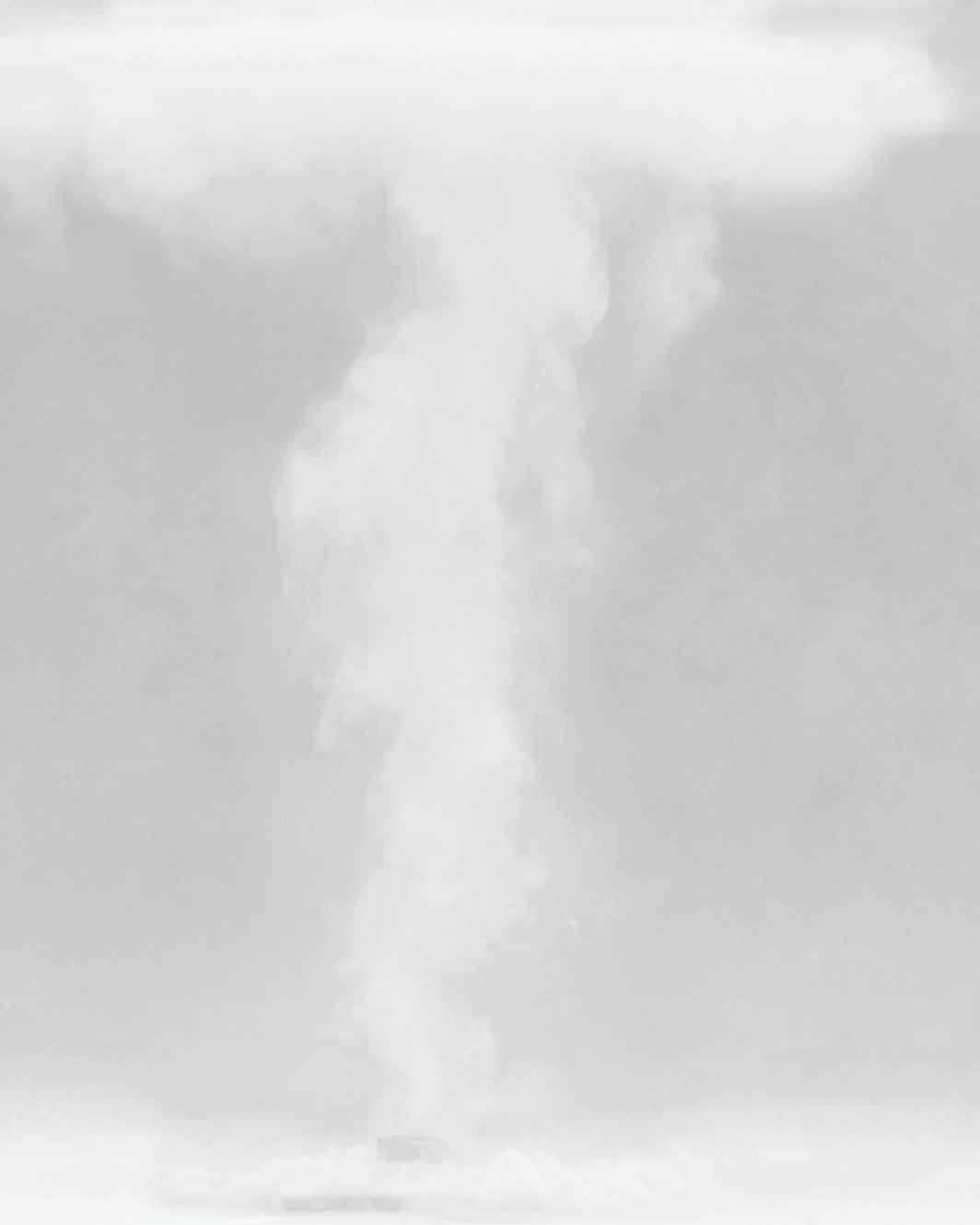

61 60 — Untitled (Northern Lights) Untitled (Volcanic Eruption)

63 62 — Untitled (Lightning)
PHILIPPE CHANCEL DATAZONE
For fteen years, Philippe Chancel has explored sensitive areas of our planet to study the world and document the most alarming symptoms of its decline. Working in such a way does not fit in with any identified genre of photography, making Datazone an invention that encompasses the most tangible signs of a predicted disaster: a traumatic ecology, chaotic deindustrialization, toxic setbacks resulting from modernization. From China to the United States, from Africa to Europe, the whole world is screaming, with no shelter in sight.
Rather than a manifesto, the fourteen photographed sites evoke an epic worthy of Cervantes’ Don Quixote . The fight against the absurd depicts a legendary fresco: ours. What can photography do when information is no longer relevant? This “too late” statement forms the base of Datazone, and the future of these ruins. Globalization is a sunless civilization, where people survive waiting for the apocalypse, while political regimes deprive them of any solutions.
Philippe Chancel is a classic photographer. Everything he builds con rms that the modern world has not kept its promise. A great narrative is made of assembled images that show a profound sensitivity to the world. This move towards the precipice holds the euphoric attempt of a rebound. The beauty of the images may seem ludicrous, but holding on to the esthetics is the only way to recover a taste for life.
Our era’s sick beauty gives birth to Datazone






This exhibition causes vertigo while hopefully allowing us to regain our footing. Let us imagine, if only for a moment, that we are from an earlier age, and Datazone shows our future: we could thank the photographer for having warned us, and for changing the course of history. But it is impossible. Up until now.
Michel Poivert
Exhibition curator: Michel Poivert.
Exhibition design: Studio Adrien Gardère. Exhibition in partnership with the Frac Provence-Alpes-Côte d’Azur.
Publication: Datazone texts by Michel Poivert, Éditions Photosynthèses, 2019.


Prints by Picto, Paris.
Framing by Deuxième Œil and Circad, Paris. Ex-votos by Dupon-Phidap, Paris.
With support from Fidal and Melanie Rio Fluency.
See the extension of the Datazone exhibition by Philippe Chancel at Avignon TGV station, with support from SNCF Gares & Connexions.
Exhibition venue: Église des Frères-Prêcheurs.
PHILIPPE CHANCEL
Born 1959, Issy-les-Moulineaux, France. Lives and works in Paris, France.
For over twenty years, Philippe Chancel has been pursuing a photographic experience at the junction between art, documentary and journalism. He was introduced to photography at a young age, and studied economics (Université de Nanterre) and journalism (CFPJ de Paris). His work has been displayed at the Barbican Centre in London, the Centre Pompidou in Paris, C/O Berlin, the Open Eye Society Foundation in New York, the 53rd Venice Biennale, and at the Multimedia Art Museum in Moscow, among others. His Datazone project, displayed and published both in France and abroad, is exhibited in its entirety for the very rst time at the Rencontres d’Arles 2019.
Datazone #02, United Arab Emirates, Abu Dhabi, 2007/2011. Courtesy of the artist and Melanie Rio Fluency [all photographs].

—
PAGE 66 Datazone #08 Nigeria, Niger Delta, Ogoniland, 2013.
PAGE 67 Epilog China 2018.

PAGES 68-69 Datazone #01 North Korea, Pyongyang, 2005/2013.
—
65 64
Portrait of Philippe Chancel: Pierre Marsaut.
Portrait of Michel Poivert: Laura Henno.


67 66

WALLS OF POWER
MAN-MADE BARRIERS THROUGHOUT EUROPE
WITH PHOTOGRAPHS, VIDEOS AND OBJECTS BY LVOVA ANASTASIYA (1988), OLIVIA ARTHUR/MAGNUM PHOTOS (1980), ARNAU BACH (1981), ATTILA BALÁZS/MTI (1969), ISTVÁN BIELIK (1985), DAVID BRAUCHLI/REUTERS, SERGI CÁMARA (1970), TIJEN EROL (1966), VASILY FEDOSENKO/REUTERS (1960), CLAUS FELIX/DPA, CHRISTIANE FESER (1977), GEORGE GEORGIOU (1961), AXEL GRÜNEWALD (1954), ANDRÁS D. HAJDÚ (1981), PATRICK HERTZOG/AFP (1962), BALÁZS IVÁNDI-SZABÓ (1985), CIRIL JAZBEC (1987), JÉRÉMIE JUNG/SIGNATURES (1980), DEJAN KAPS (1979-2016), DAVOR KONJIKUŠIĆ (1979), DMITRI MAKHOMET (1975), GÉRARD MALIÉ/AFP (1941), KEVIN MCELVANEY (1987), SIMON MÓRICZ-SABJÁN (1980), VESSELINA NIKOLAEVA (1976), DANIEL LEAL OLIVAS (1987), JOSÉ PALAZÓN/ REUTERS, MARCELL PITI (1990), FRANKIE QUINN (1966), TOMÁŠ RAFA (1979), FERENC RÉDEI (1944), TIMOFEY ROZHANSKY (1991), JÉRÔME SESSINI/ MAGNUM PHOTOS (1968), LUTZ SCHMIDT/AP, ŁUKASZ SKĄPSKI (1958), TAMÁS SÓKI (1993), TERRAPROJECT PHOTOGRAPHERS, TAMÁS URBÁN (1945), KAI WIEDENHÖFER (1966), HENK WILDSCHUT (1967).
“The rst man who, having fenced in a piece of land, said ‘This is mine’ and found people naïve enough to believe him, that man was the true founder of civil society.”

Jean-Jacques Rousseau, Discourse on the Origin and Basis of Inequality Among Men, 1754.
We tend to see European culture as open and welcoming. Nevertheless, in recent years, we have seen barriers rising all over the continent.
We know that to build walls to protect a land is nothing new. We do not need to look back as far as Hadrian’s Wall; throughout our history there have been barriers splitting up the European landscape: the Silesian Walls, the Great Wall of Malta, the Atlantic Wall...
Here, in Hungary, my home country, in 1989, the Iron Curtain—one of the most prominent examples of these walls in human history—was dismantled. As one of the major migration gateways to Europe, here new walls grow once again, just three decades after the fall of their predecessor.
In 1989, there were only three border walls left in the continent (Gibraltar, Cyprus, and Belfast); today there are twenty-eight physical barriers around Europe. This growth can also be illustrated by the soaring budget of the European Border and Coast Guard Agency (Frontex), which grew fiftyfold, from €6.2 million in 2005 (when it was established) to €320 million in 2018.
Through contemporary documentary photography, the exhibition investigates walls, fences, and their immediate surroundings; specifically, those erected by any European authority and still standing today to prohibit people from either leaving or entering certain civil societies.
Although there are prime examples of walls of all sorts around the world—such as on the US–Mexican border, between the two Koreas, Israel and the West Bank, Pakistan and India, and South Ossetia, just to name a few—this selection concentrates on one continent to show the layered diversity of European fences. The group photo exhibition di erentiates three types of walls according to their purpose: Walls of Influence, Walls of Segregation, and Walls of Migration.

Exhibition curator: István Virágvölgyi, winner of the Rencontres d’Arles Curatorial Research Fellowship.
Mounting by Deuxième Œil, Paris.
Prints by Pigmenta Art Print Lab, Budapest.
Framing by Circad, Paris.
With support from the Robert Capa Contemporary Photography Center, Budapest.
The Rencontres d’Arles Curatorial Research Fellowship receives the support of Jean-François Dubos.
Exhibition venue: Maison des Lices.
—
71 70
Portrait of István Virágvölgyi: Balázs Mohai. Arnau Bach, The Fence of Gibraltar British Overseas Territory of Gibraltar, 2016. A British customs o icer checks the hole made by tobacco smugglers in the border fence which separates the UK from Spain, on April 10, 2016. Gibraltar is a British Overseas Territory located at the southern tip of the Iberian peninsula. Courtesy of the artist.
— Attila Balázs, Roma Wall, Michalovce, Slovakia, 2010. Romas walk towards a concrete wall in Michalovce, Eastern Slovakia, on August 27, 2010. About fty families living in a housing estate have nanced the erection of the 500 meter long and 2-meter high wall to separate the local Roma camp from their residential area, which has been, as they say, “garbaged and wreckaged” by the 1,800 Romas, living in the neighbourhood. The Romas, living mostly on scavenging, protest against the wall, saying they are made to bypass it, thus having to go a longer way while approaching the town. Courtesy of MTI.

— Sergi Cámara, The Wall of Europe Spain, 2014. Young Africans trying to climb the double fence that separates Africa from Europe, near Beni Enza on the border of the Spanish enclave of Melilla, March 2014. After spending several hours on top of the fence, they were forced back to Morocco by Spanish security forces. Courtesy of the artist.
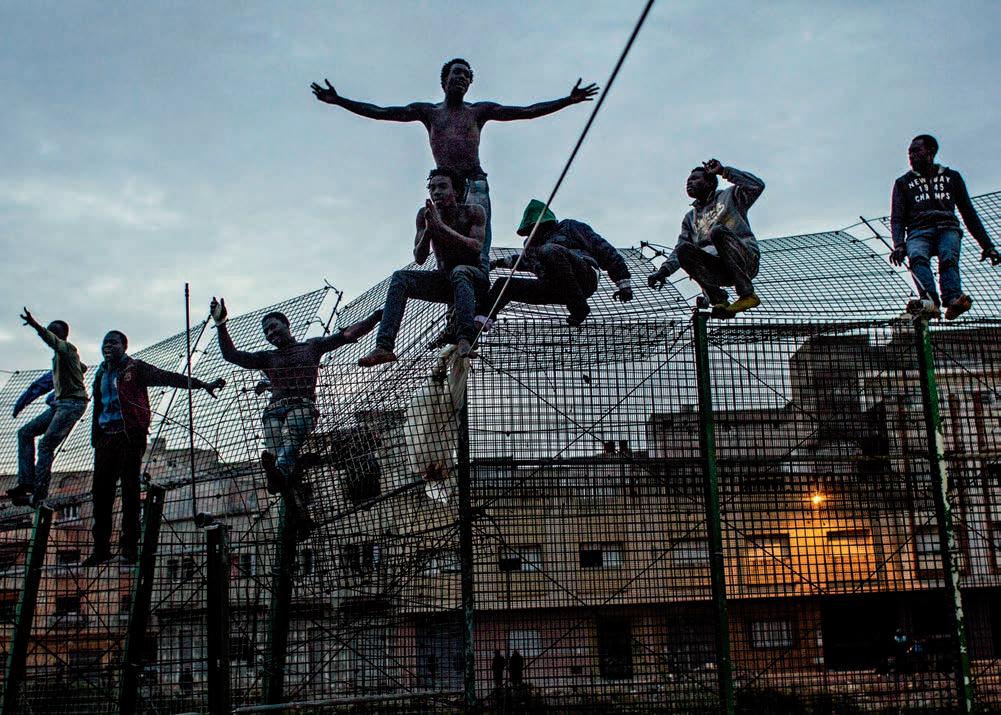
— István Bielik, Crossing Borders, Greece, 2015. Refugees queuing for registration in the Moria camp on the island of Lesbos, on October 6, 2015. Courtesy of the artist.

73 72
MOHAMED BOUROUISSA FREE TRADE





Mohamed Bourouissa has always been interested in missing images, already laying down the rules of mixed identities in his early work, depicting young people wearing brands gathering in les Halles in Paris, approaching the suburbs in a new way, getting rid of their clichés and integrating them within art history.
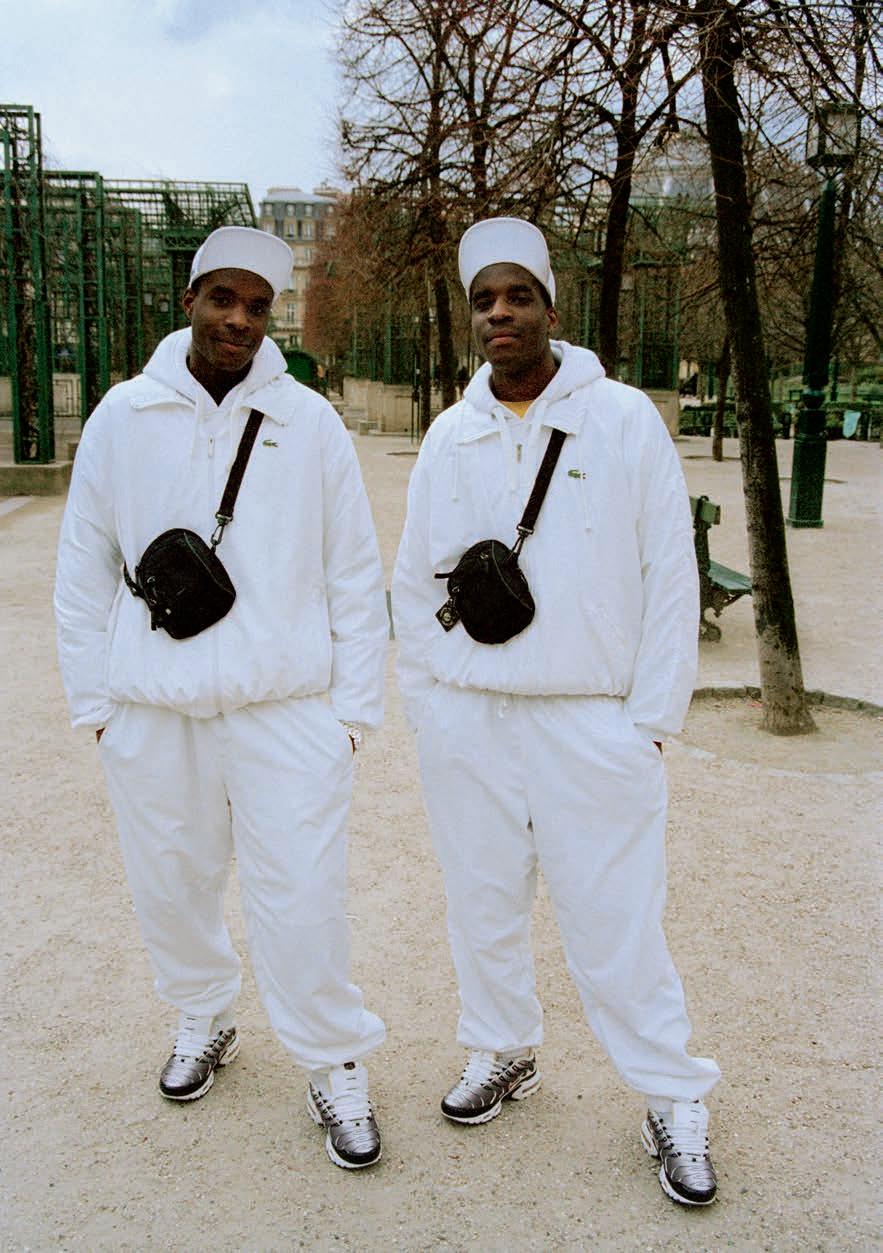
With Périphérique , he went even further, drawing images like paintings, trying to capture the tension between a social and urban context and an artistic point of view. Then, he made his models adopt poses especially inspired by Caravaggio who, to him, “was the rst photographer”, giving a meaning to that beauty.
Next came Temps mort , a poetic film which says a lot about him through the exchange of some 300 text messages and videos between the artist and a friend held in detention. It tells the story of an artistic collaboration, based on the principle of equity—his friend would create, in his cell, the poses he needed, in exchange for a telephone package—and of the incredible circulation of images between an inaccessible “inside” and an “outside” full of possibilities.
The foundations of Bourouissa’s work were then established and can be found in Legend, a lm on the parallel economy of cigarette tra icking at the Barbès metro. It stands out by focusing on the buyers rather than the sellers, who are equipped with onboard front cameras and compensated with a hot meal—again, based on the principle of equity.
Bourouissa is interested in philosophy, economy and dominant/dominated relationships. He seems aware of how di icult it is to ght in a globalized world which he does not seek to document, never producing ideological images. He moves along, spreads the word, creates his own territory with his artist friends. He has a preference for preparing a project, shaping it and experimenting over seeing it nished —all the better if a hazard occurs.
In Lebanon, when questioning musical property, he created compilations with musicians such as Sharif Sehnaoui, which he reintroduced elsewhere. In New York City, he worked on Polaroids of shoplifters caught in the act. He cropped and mounted them, thus dismantling the system of power written in these images. At the Monnaie de Paris, he accepted to work on the ambiguity of money, a means of exclusion but also of integration. At the Pôle Emploi in Marseille, he spent time with the unemployed, organizing festive events and taking an interest in their bodies, deprived of their work value. He turned them into sculptures, which he sold for two euros on flea markets. Those with manufacturing defects were resold at a higher price in a gallery. A strong kick in the system…
Magali Jau ret
Exhibition curator: Sam Stourdzé. With the complicity of Françoise Vogt. Prints by Dupon-Phidap, Paris. Framing by Deuxième Œil and Circad, Paris.
This exhibition is presented in Monoprix.
— Mohamed Bourouissa, Untitled, from the Nous sommes Halles series, in collaboration with Anoushka Shoot, 2002-2003. Courtesy of the artists, kamel mennour, Paris/London and Blum & Poe, Los Angeles/New York/ Tokyo.
MOHAMED BOUROUISSA
Born 1978, Blida, Algeria. Lives and works in Paris, France.






Preceded by a long immersive phase, every Mohamed Bourouissa project builds a situation of new enunciation. Countering falsely simplistic media constructions, he reintroduces complexity in the representation of the margins of hypervisibility. He has had many solo shows, including at the Musée d'Art Moderne, Centre Pompidou (Paris), Barnes Foundation (Philadelphia), Stedelijk Museum (Amsterdam), basis (Frankfurt-am-Main), Bal (Paris), Haus der Kunst (Munich) and FRAC Franche-Comté (Besançon). He has participated in the Sharjah, Havana, Lyon, Venice, Algiers, Liverpool and Berlin Biennials and the Milan Triennial.

75 74
Portrait of Mohamed Bourouissa: kamel mennour archives, Paris/London.
Portrait of Sam Stourdzé: Christian Lutz.


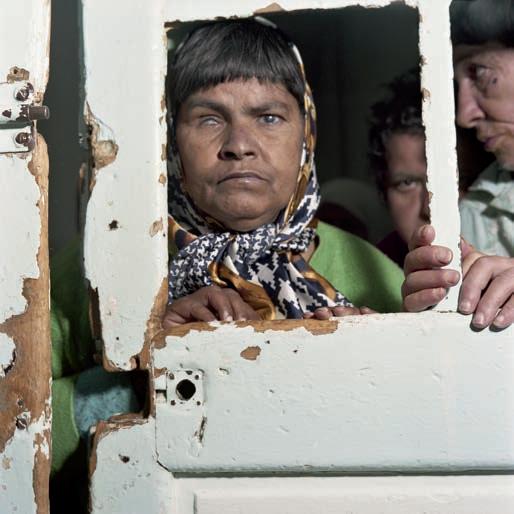


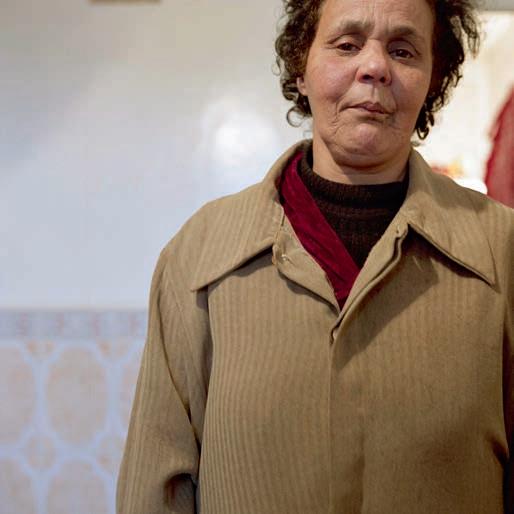
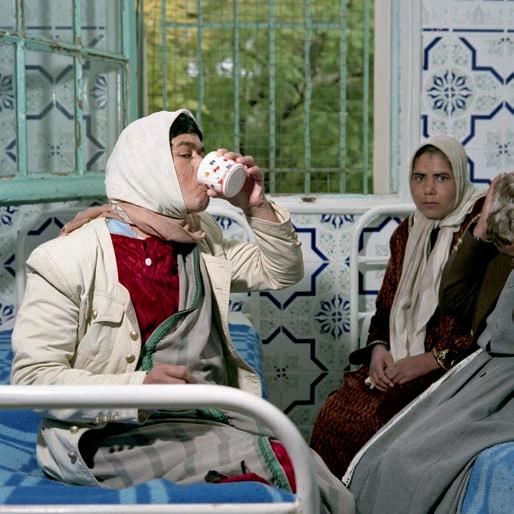

77 76
—
From the Blida series, 2008. ADAGP (Paris), 2019. Courtesy of the artist, kamel mennour, Paris/London and Blum & Poe, Los Angeles/ New York/Tokyo. [all photographs].

79 78 — L’impasse
, from the Périphérique series, 2007.
GERMAINE KRULL
GERMAINE KRULL & JACQUES RÉMY, A VOYAGE, MARSEILLE–RIO 1941
André Breton, Jacqueline Lamba, Claude Lévi-Strauss, Victor Serge, Wilfredo Lam, and Anna Seghers were among the Capitaine-Paul-Lemerle ’s passengers. Their 1941 crossing from Marseille to Fort-de-France has been reimagined by novelist Adrien Bosc, as well as their lives on board this boat fleeing Vichy France and arriving in Martinique only to be held in an ancient leper colony at Lazaret de la Pointe-du-Bout.
We also meet the great German photographer Germaine Krull on board, sailing to the Americas, and the young lmmaker and future screenwriter Rémy Assayas, also known as Jacques Rémy. At the end of the book, Bosc meets Rémy’s son, Olivier Assayas, who shows him an album of photos taken by Krull along this journey. The photos bring the novelist’s story vividly to life. They were found loose in a drawer of the family’s country home, and Assayas identi ed and organized them.
Thus, their parallel searches complete one another, and the exhibition, A Voyage, Marseille-Rio 1941, is the outcome— and continuation, since Germaine Krull and Jacques Rémy resumed their journey to Rio, with a rst stop in Saint-Laurentdu-Maroni (French Guiana), where Krull photographed released convicts and the lives of natives around the river, and a second stop in Cayenne. Both voyagers recounted the journey, as the titles of their writing indicate: “On a Cargo Ship…,” and “My Friends the Convicts,” for Rémy; “Concentration Camps in Martinique,” and “French Guiana: France’s Prison” for Krull.
A Voyage brings all these photographs together, most heretofore unpublished, and exhibits them in the context of the novel based on the true story of these two travelers.

Exhibition curators: Adrien Bosc and Olivier Assayas.
Publication: Un voyage Marseille-Rio 1941, texts and photographs by Germaine Krull and Jacques Rémy, edited by Olivier Assayas and Adrien Bosc, Éditions Stock, 2019. Framing by Circad, Paris.
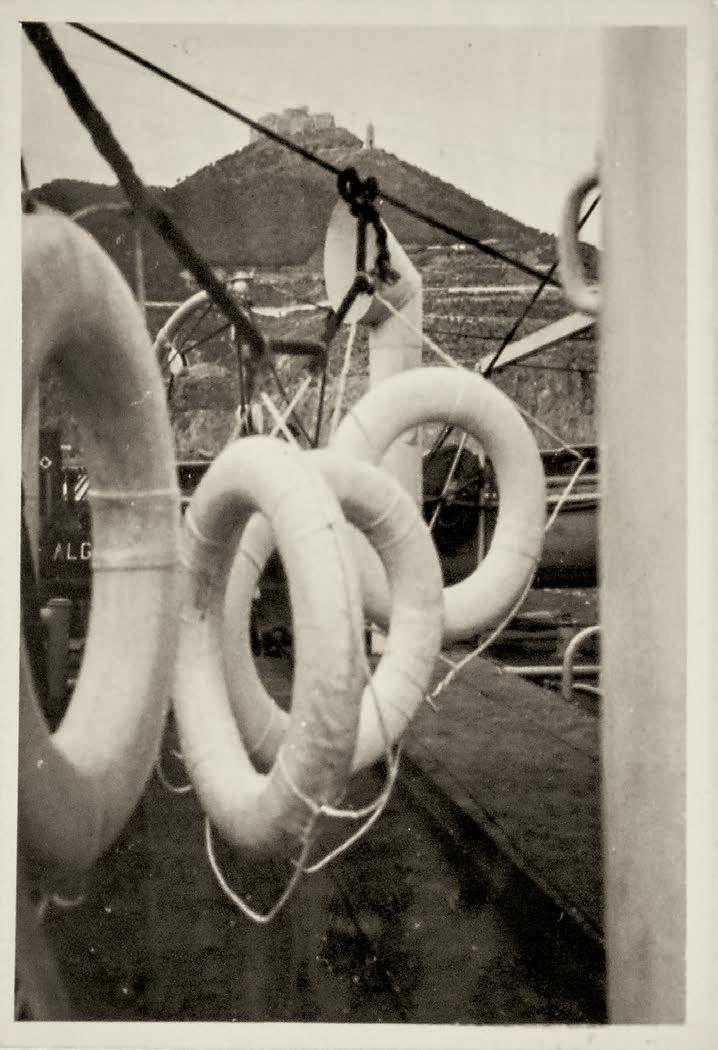
Exhibition venue: Cloître Saint-Trophime.
— Port of Oran, Algeria, March 28, 1941, Capitaine-PaulLemerle’s rst stop. Seen in the distance: Aïdour, also known as Murdjajo, the mountain that overlooks Oran
GERMAINE KRULL
Born 1897, Posen, present-day Poland. Died 1985, Welzlar, Germany.

Representative of the inter-war avant-garde, Krull established herself as a gure of the Nouvelle Vision in France with her 1928 portfolio Métal and reporting for the review VU (with André Kertész and Eli Lotar). She is known for her portraits of Jean Cocteau and André Malraux, Autoportrait à l’Ikarette, and her shots of metallic architecture. In World War II, she worked for the Free French Forces in Africa. After the war, she gradually distanced herself from photography to manage Bangkok’s Oriental Hotel.
JACQUES RÉMY
Born 1911, Constantinople, present-day Istanbul, Turkey. Died 1981 in Paris, France.





Jacques Rémy, born Rémy Assayas, started his career in lm working on Max Ophüls’ La Signora di Tutti He had a brief and distinguished career in Paris as assistant to lmmakers such as Léonide Moguy, G.W. Pabst, and Richard Pottier. He moved to Argentina in 1941, where he worked as studio head and lm director before joining the Free French Forces in 1944, serving as director of information for Latin America. Returning to France in 1946, he collaborated with René Clément in writing Les Maudits, which won an award at Cannes. It was the start of a successful career in screenwriting. Rémy is the father of lmmaker Olivier Assayas and novelist Michka Assayas.

81 80
Portrait of Germaine Krull and Jacques Rémy: anonymous.
Portrait of Adrien Bosc: Eric Feferberg. Portrait of Olivier Assayas: Carole Bethuel.

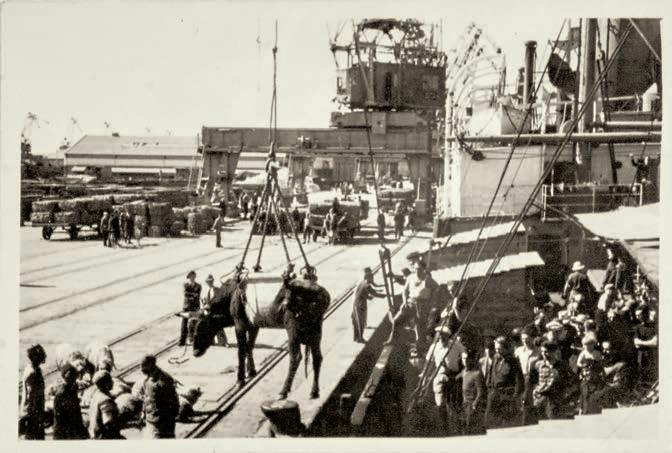


83 82
— Loading Cows Casablanca port, April 1941. Transporter Bridge, Marseille port, March 1941.
Marseille, harbor dock, March 1941.
— Line-crossing ceremony, Neptune festival on the Capitaine-Paul-Lemerle, after submersion


85 84
—
Wilfredo Lam, and his wife Helena Holzer at Lazaret de la Pointe-du-Bout, end of April 1941.
Saint-Laurentdu-Maroni April 1941.
LIVING
An inventory of domestic spaces.
DAPHNÉ BENGOA & LEO FABRIZIO BUILDING ON A HUMAN SCALE, FERNAND POUILLON AND ALGERIA
Two photographers explore architect Fernand Pouillon’s work in Algeria.
MARIO DEL CURTO VEGETAL HUMANITY, AS THE GARDEN UNFURLS
Exploring the relationship between people and plants: hydroponic humanity?
THE ZONE AT THE GATES OF PARIS
At rst, the Zone meant a 250-meter-wide strip of land around Paris that had to remain empty for the purposes of military defense. It gradually lled up with an impoverished population, a subconscious form of the modern city.
HOME SWEET HOME
1970 — 2018: THE BRITISH HOME, A POLITICAL HISTORY
Thirty-four photographers explore the theme of “home” so dear to the British, revealing the richness, diversity, and development of photography across the Channel.
—
 Daniel Meadows & Martin Parr/Magnum, June Street, Salford Manchester, 1973.
Daniel Meadows & Martin Parr/Magnum, June Street, Salford Manchester, 1973.
DAPHNÉ BENGOA & LEO FABRIZIO BUILDING ON A HUMAN SCALE: FERNAND POUILLON AND ALGERIA




Daphné Bengoa, lmmaker, and Leo Fabrizio, photographer, exhibit for the rst time the result of a jointly conducted major project on the Algerian work of the French architect Fernand Pouillon (1912-1986).
When working on the urban space, Fernand Pouillon aims to improve the living conditions of its residents, bringing them comfort and quality of life, whatever the role of the buildings (emergency housing, social housing, university housing or hotels). For the architect, it is the only guarantee of a better social and cultural integration. Putting people rst, building for their dignity and, hopefully, o ering them a harmonious relationship with their environment.
Even though this commitment may seem obvious, Fernand Pouillon is one of the few twentieth century architects to have put it in practice throughout his work, in France and in Algeria. An unrestrained builder, he develops each project with e iciency, rationality and an optimal use of resources. Meanwhile, he studies, teaches, writes and publishes a set of works relating to architecture and, more broadly, the architect’s role and responsibility. His work in Algeria—from residential complexes (1953-1958) to tourist resorts and student housing (1966-1982)—highlights his process and the evolution of a unique perspective on social architecture.
This exhibition displays the double corpus created in Algeria by the two artists, aiming to point out the correlation between building and living, of which Pouillon’s work is the perfect example. These photographs tell the tale of an “outside to inside” process, the facade and layers that both cover and reveal it (Leo Fabrizio), but also what it contains and protects: thousands of ordinary lives (Daphné Bengoa). Habitat is humankind’s rst way of putting down roots, the point of reference from which they project themselves into the world. Living somewhere means beingfrom somewhere, close to other people with whom we have to learn to live. The architecture that is imagined, designed and shaped by humankind is a tool that should help those beings, both strong and fragile, who, one day, settled in a place that became their “home.”
Publication: Bâtir à hauteur d’hommes, Fernand Pouillon et l’Algérie éditions Macula, 2019. Prints by Processus, Paris, and Le Laboratoire, Geneva.
Framing by David Gallardo, Paris. Wallpapers by Atelier SHL, Arles.
With support from the Swiss Confederation, the contemporary art fund and the Canton of Geneva, the Canton of Vaud and the City of Lausanne, the Swiss Arts Council Pro Helvetia and the collaboration of the Swiss Embassy in Algeria, HTT Group, and the Algerian Center for Cinema Development.
Exhibition venue: Abbaye de Montmajour.
DAPHNÉ BENGOA
Born 1981, Chicago, United States.




Lives and works in Paris, France, and Geneva, Switzerland.
Daphné Bengoa is a lmmaker and photographer. With both practical (ECAL) and theoretical (EHESS) training, her work is centered around humans, their power of imagination and capacity for action. She focuses on strong anonymous figures who stand up against the aberrations of a system and seek new ways of living and working. In addition to her work as an author, she works as a curator, writer and producer on transdisciplinary cultural projects.
LEO FABRIZIO
Born 1976, Moudon, Switzerland. Lives and works in Lausanne, Switzerland.
Leo Fabrizio holds a bachelor’s degree in Visual Communication and a master’s degree in Photography (ECAL). A three-time laureate of the Federal Design Competition with his works Bunkers Dreamworld and Archetypal Landscape, he questions architecture and landscape, using photography as a knowledge tool, allowing him to build perspectives by addressing the relationship between humans and their environment. He works as an artist, researcher and speaker.

89 88
Portrait of Daphné Bengoa: Jessie Caron.
Portrait of Leo Fabrizio: Philippe Weissbrodt.
Daphné Bengoa, Departure, Sidi Fredj, Algeria, 2018. —
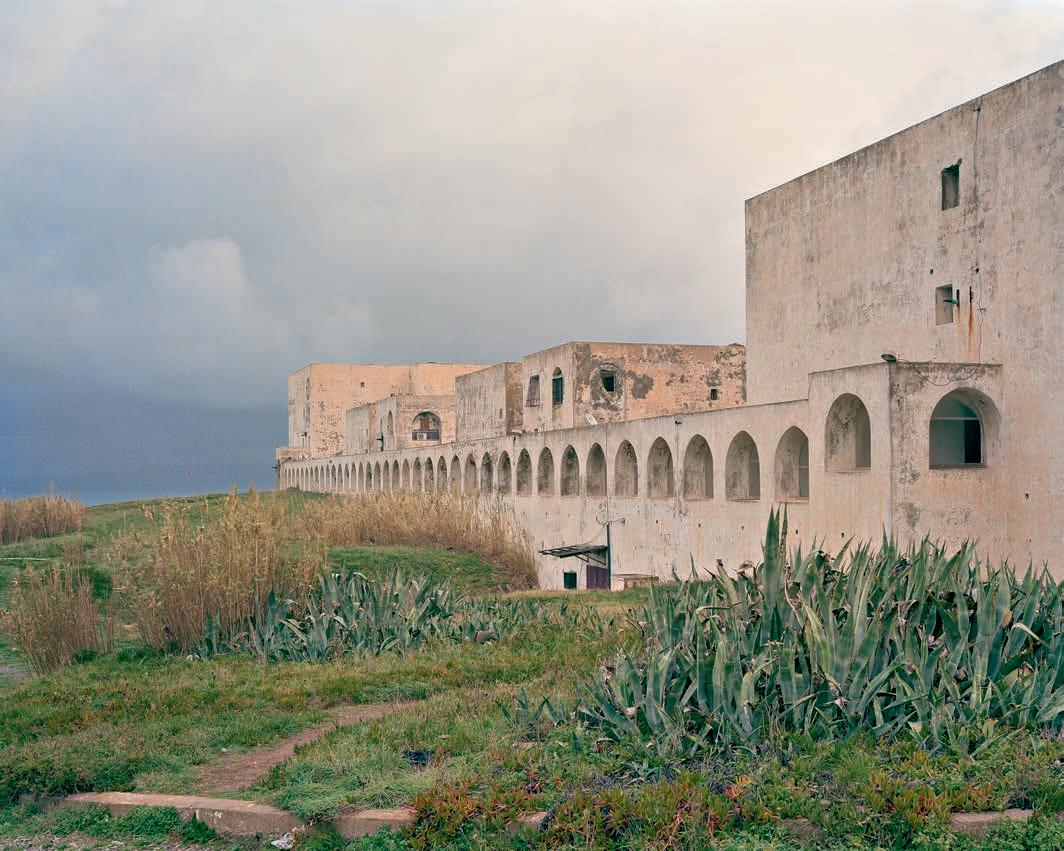

91 90 —
Daphné Bengoa, The Wait Diar-e-Mahçoul, Algiers, Algeria, 2018. Leo Fabrizio, El Manar Hotel Passageways Sidi Fredj, Algeria, 2018.
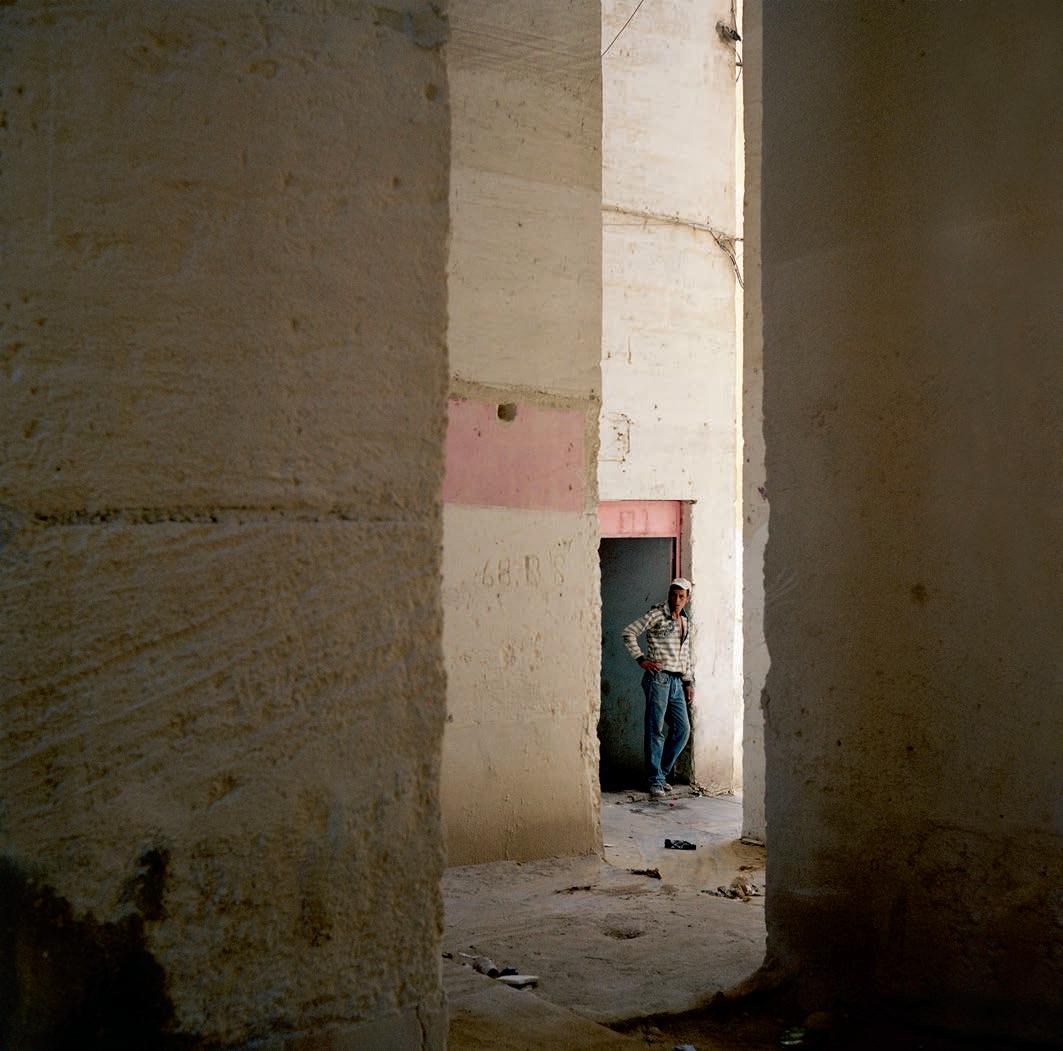
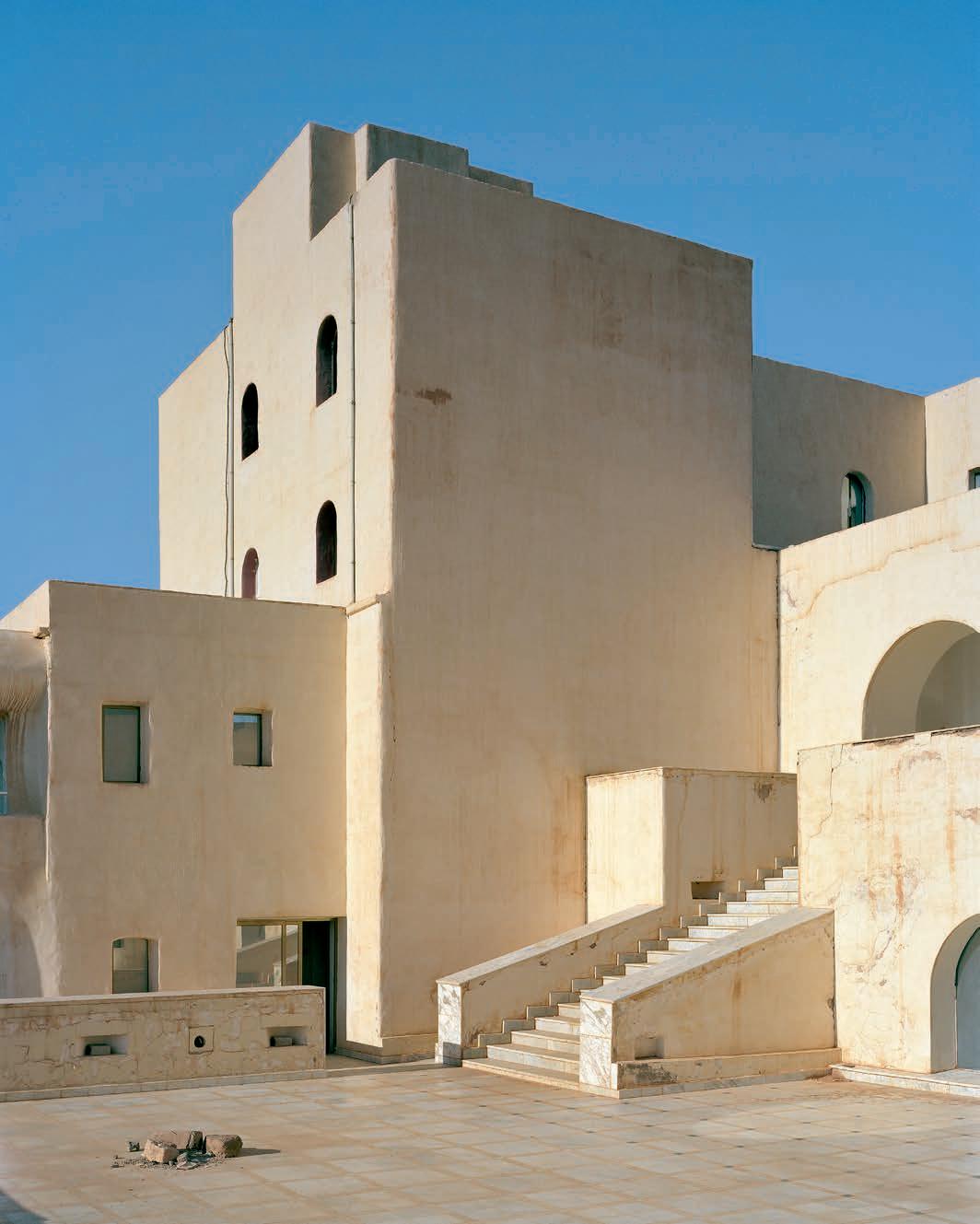
93 92
—
Daphné Bengoa, The Break, Climat de France, Algiers, Algeria, 2018. Leo Fabrizio, Les Rostémides Hotel, Ghardaïa, Algeria, 2018.
MARIO DEL CURTO VEGETAL HUMANITY, AS GARDENS UNFURL


Vegetal Humanity is the photographic story of a 10-year journey around the world, taken by Mario Del Curto, to consider the connections between men, women, and plants. In striking photos of parks, cities, gardens, sanctuaries and wilderness, the Swiss artist invites us to reflect on the stakes of our relationship to the natural world and respond to the arrival of an “hydroponics” humanity.
According to philosopher Emanuele Coccia, it is the rst visual study to reveal the profoundly garden-like nature of the world. Though shaped by humans, our planet is primarily a product of plants, which nurture us and influence our lives, movements, and actions. Garden is understood here in a broader sense, beyond the strictly landscape and nutritional connotations. It can be simple or spectacular, the impression of a utopia, of ancestral or contemporary knowledge, designed by the elite or “anonymous” gardeners.
“Black llama muzzle,” “old mended cap,” “child’s heart”—these are some of the 380 heirloom potato cultivars resurrected by Julio Hancco near the Sacred Valley of the Incas at a 4,000-meter altitude. In Marseille, London and Rotterdam, hobby farmers cultivate their vegetable gardens. In the Far North, thousands of seeds are frozen to safeguard plant biodiversity. In the forests of Kazakhstan, the ancestor of the apple is still growing. Niki de Saint Phalle, Charles Billy, and Josep Pujiula designed indoor gardens. A scientist places electrodes on a plant to study its defense mechanisms. What do the people strolling the artificial shores of Dubai Creek dream of? These stories were never supposed to meet; some were never to be told. The photographer inquires: what connects all this? How are we connected to this?
Publication: Humanité végétale, Actes Sud, 2019. Prints by Picto, Paris.
With support from the Swiss Confederation, the Swiss Arts Council Pro Helvetia and SNCF Immobilier.

Exhibition venue: Le Jardin.
— Bridge and Arti cial Trees, Dubai, 2018.



— NEXT PAGES

Astana Kazakhstan, 2015.
Sir James’ Environment, Las Pozas, Mexico, 2014.
Garden on the Bay, Singapore, 2014.
Marqueyssac Gardens France, 2011.
MARIO DEL CURTO
Born 1955, Pompaples, Switzerland. Lives and works in Sergey, Switzerland.
Mario Del Curto started as a self-taught photographer and covered social movements from the 1970s to the 1980s. An independent photographer, he has worked in theater and dance, developing a unique style in stage photography. In 1983, he became passionate about Art Brut and devoted many exhibitions, books, and lms to the genre. For some years now, he has been traveling around the globe to document the ties between humans and their natural environment. His work has been the subject of numerous publications and hundreds of exhibitions throughout the world.
95 94
Portrait of Mario Del Curto: Melchior Jacquérioz.




97 96
HOME SWEET HOME


1970 — 2018 : THE BRITISH HOME, A POLITICAL HISTORY
ED ALCOCK (1974), KEITH ARNATT (1930-2008), DANA ARIEL (1983), LAURA BLIGHT (1985), JUNO CALYPSO (1989), NATASHA CARUANA (1983), MARK CAWSON (1959-2018), EDMUND CLARK (1963), JOHN PAUL EVANS (1965), ANNA FOX (1961), KEN GRANT (1967), ANTHONY HAUGHEY (1963), TOM HUNTER (1965), SARAH JONES (1959), PETER KENNARD (1949), NEIL KENLOCK (1950), KAREN KNORR (1954), SIRKKA-LIISA KONTTINEN (1948), CHRIS LESLIE (1974), STEPHEN MCCOY (1956), IAIN MCKELL (1957), MICHAEL MCMILLAN (1962), DANIEL MEADOWS (1952), DAVID MOORE (1961), JOHN MYERS (1944), MARTIN PARR (1952), MAGDA SEGAL (1959), ANDY SEWELL (1978), DAVID SPERO (1963), EVA STENRAM (1976), CLARE STRAND (1973), COLIN THOMAS (1950), GEE VAUCHER (1945), GILLIAN WEARING (1963)



The attachment the British have to their homes has continued to assert itself since the early nineteenth century, becoming an important component of their identity. The English language has invented the words comfort and comfortable , words imported into French because nothing better expressed the link between the well-being of soul and body and the domestic interior.
An interior, with its objects and decor, tells the life stories of those who live within, their relationship to the world, their interactions and their family values. It is a place where their individual, social and cultural identities converge, a place where their submission or their opposition to the norm is revealed. It reflects their habitus, in the sense of Pierre Bourdieu, these acquired patterns of thoughts, tastes and social behaviors.
Until the 1960s, the British documentary tradition focused its attention on the street, usually identi ed with the working-class culture. The new photography that emerges in the 1970s gradually turns away from it in favor of the domestic space. This shift from the outside to the inside, reflecting a new home-centered way of life, appeared during the 1950s along with prosperity, consumption and the rise of television.

What better than the theme of the home, the home so dear to the heart of the British, to highlight the richness, the diversity and the development of photography across the Channel? Home Sweet Home brings together thirty-four artists of all generations who allow us to share the intimacy and the everyday life of Britain from the 1970s to the present day. A look around the property that sheds light from di erent angles on the social, cultural and political realities, past and present, of British society.
Exhibition curator: Isabelle Bonnet. Exhibition coproduced by Institut pour la photographie, Hauts-de-France and the Rencontres d’Arles.
Publication: Home Sweet Home Isabelle Bonnet, Éditions Textuel, 2019.

Prints by Processus, Paris. Framing by Circad, Paris. Wallpaper by Atelier SHL, Arles.
Natasha Caruana and Anna Fox are nominated for the Prix de la Photo Madame Figaro Arles 2019.
Exhibition venue: Maison des Peintres.
99 98
Portrait of Isabelle Bonnet: Isabelle Bonjean.
Ken Grant, Lisa and Tracy’s sister Birkenhead, 1990. —





101 100
— Colin Thomas, Swan Family Tranmere, 1985.
— Anna Fox, from the Mum in a Million series, 2007. Courtesy of James Hyman Gallery, London. Magda Segal, Bengali Family Shadwell, 1992, from the London at Home series.
— John Paul Evans, #16, from the till death us do part series, 2016.
David Moore, from the Pictures from the Real World, Colour Photographs 1987-88 series.



103 102
— Andy Sewell, Untitled from the Something like a Nest series, 2014.
— Anthony Haughey, from the Home series, 1992.
Stephen McCoy, from the Housing Estates, Set 4 series, 1985.
THE ZONE AT THE GATES OF PARIS
Some words are vague: the overall meaning can be grasped, but it is hard to de ne them with exactitude. “Zone” is one. In French, it means the blur of the suburbs, a kind of boredom or the threshold of delinquency, but few people are aware that it is rooted in a precise historical reality.




At rst, the Zone designated a 250m-wide strip of land running along the 34km of forti cations built around Paris in 1844. This area had to remain empty for military defense, but it gradually lled up with poor people. They put up flimsy structures, cabins and huts of every kind, eventually building a huge shantytown where over 40,000 people lived between the wars. That period saw the rst expulsions, which gathered pace during the Vichy regime. The building of the ring road (1956-1973) de nitively paved over the last remnants of this outsider area.
Except for some famous gures such as Eugène Atget, Germaine Krull or André Kertész, few photographers took an interest in this urban and social phenomenon between the wars. Consequently, most of the pictures exhibited are by anonymous photographers, who often worked on commissions aiming to document the unhealthy conditions that would justify demolishing the Zone. However, these pictures not only capture the image of slums, but also provide invaluable information on everyday life in the Zone. The building materials, interior details and piles of objects attest to the inhabitants’ ingenuity, resourcefulness, art of making do, and freedom to build in an area where urban planning standards did not apply.
This group of documentary photographs, which have never been shown before, recalls an impoverished population relegated to the outskirts of Paris, like a subconscious memory of the modern city that people were in a hurry to repress.

Exhibition curators: Marion and Philippe Jacquier, Zoé Barthélémy.

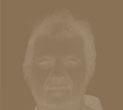





Scienti c advisor: Anne Granier. Exhibition coproduced by Lumière des Roses gallery and the Rencontres d’Arles. Framing by Circad, Paris.
Exhibition venue: Croisière.
—
105 104
Portraits of Marion and Philippe Jacquier & Zoé Barthélémy: courtesy of the curators.
L. Chi lot, TheZone, Gentilly France, ca. 1939. Courtesy of Galerie Lumière des Roses [for all the photographs].
— Anonymous, Shanty in the Zone at Saint-Ouen France, ca. 1940.
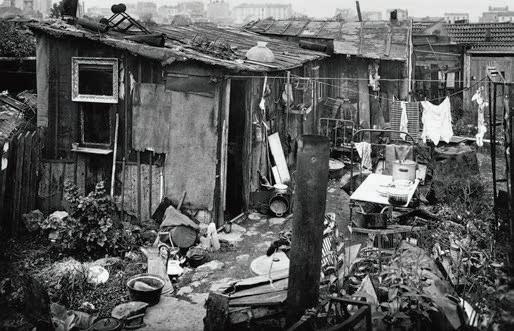

Anonymous, The Zone, Ivry France, 1913.

— Anonymous, View of the Zone near Porte de Clignancourt the City of Saint-Ouen in the Distance France, ca. 1940.

Anonymous (Fulgur agency), Children Playing in the Zone. Rue du Chemin de Fer, Porte de la Villette, France, 1940.


— Anonymous, The Zone, Porte de Choisy, France, 1940.
Anonymous, Family of Zoners in a Shanty France, ca. 1930.
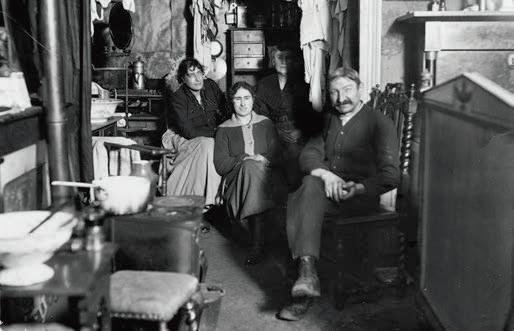

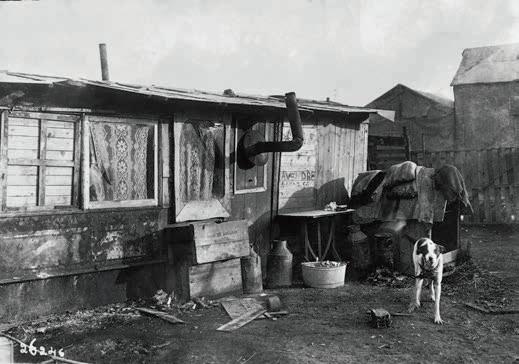
Anonymous, Restaurant in the Zone, France, ca. 1910.

— Anonymous, The Zone, Ivry, France, 1913.
Anonymous, Barber in the Zone France, ca. 1930.
Anonymous, Rag-Pickers in the Zone France, ca. 1940.
107 106
REREADING
Photography revisited.
HELEN LEVITT
OBSERVING
NEW YORK’S STREETS
In the 1930s, Helen Levitt immortalized street culture in New York’s poor neighborhoods.
EVE ARNOLD, ABIGAIL HEYMAN & SUSAN MEISELAS
UNRETOUCHED WOMEN
Three photographers’ books—Growing Up Female, The Unretouched Woman, Carnival Strippers—that changed how women’s lives and privacy were seen in the 1970s.

VARIÉTÉS , AVANT-GARDE REVIEW
BERENICE ABBOTT, FLORENCE HENRI, GERMAINE KRULL...
THE AMSAB COLLECTION REVEALED
A unique collection rediscovered by chance takes us on an amazing visual odyssey with the greatest names in avant-garde photography.
TOM WOOD
MOTHERS, DAUGHTERS, SISTERS
Images Tom Wood made in the streets of Liverpool dialogue with selections from his postcard collection and family photos.
Eve Arnold, Actress Joan Crawford Los Angeles, 1959. Courtesy of Eve Arnold / Magnum Photos.
HELEN LEVITT OBSERVING NEW
YORK’S STREETS
In the 1930s, Helen Levitt started photographing street life in underprivileged New York neighborhoods such as East Harlem and the Lower East Side: gra iti, people sitting outside on stoops or children playing are some of her central subjects. Contrary to the intention of traditional photojournalism to document social injustice for political purposes, she considered photography a form of artistic expression allowing her to merge everyday life with a personal esthetic understanding. With an eye for comical details, she took pictures of people in dynamic poses, thereby turning everyday scenes into a theatrical spectacle.

The simplistic reception of her work as “poetic” and “lyrical” snapshots inspired by Henri Cartier-Bresson has long obscured its tremendous complexity. In fact, Levitt’s photographic language diversely adopted the political as well as artistic debates of her time. Figures defamiliarized by masks or performing mysterious gestures illustrate an ethnographic interest: she shows New York street scenes as though they were mythical customs or exotic ceremonies.
Her interest in performance and bodily expression manifests itself in the depiction of human interaction as some kind of lively stage acts—themes that were extensively explored in the cinema at the time. Influenced by slapstick comedies, she captures her protagonists in quirky, funny poses. They are not alienated from their environment but, on the contrary, actively occupy urban space. These aspects are also perceptible in her lms, which she began making in the 1940s. When Levitt returned to photography in 1959 she remained true to her interest in street life. However, making color her main tool, she opted for other photographic solutions.
Many of the 130 photographs on display are shown here for the rst time, giving us a nuanced glimpse into Levitt’s work, demonstrating her development from street photographer to filmmaker and color photographer.
HELEN LEVITT
Exhibition curator: Walter Moser. Exhibition produced by the Albertina Museum, Vienna, in collaboration with the Rencontres d’Arles.
Publication: Helen Levitt, Duncan Forbes, Astrid Mahler, Walter Moser, Christina Natlacen, Bert Rebhandl, Kehrer Verlag, 2019. Wallpapers by Processus, Paris.
Framing by the Albertina Museum, Vienna.
With support from Florence & Damien Bachelot Collection.
Exhibition venue: Espace Van Gogh.
Portrait of Walter Moser: Elsa Okazaki.
Born 1913, New York, United States. Died 2009, New York.


After working for a commercial portrait photographer, in 1936 Helen Levitt became a photographer in her own right. Inspired by the works of Henri Cartier-Bresson, she began to capture pictures of street life in poor neighborhoods of her native New York with a 35-mm Leica camera. By the end of the 1930s, her images began appearing in magazines such as Fortune and PM In 1943 the Museum of Modern Art in New York organized her rst show. Two years later Levitt collaborated with James Agee, with whom she also worked on her seminal photobook A Way of Seeing and painter Janice Loeb on the lm In the Street (1945-1946). For the next decade she devoted herself to directing and lm editing.
Portrait of Helen Levitt: anonymous.


New York, 1940
The Albertina Museum, Vienna. Permanent loan of the Austrian Ludwig Foundation for Art and Science.
Film Documents LLC/ Courtesy Thomas Zander Gallery, Cologne [all photographs].

—

111 110

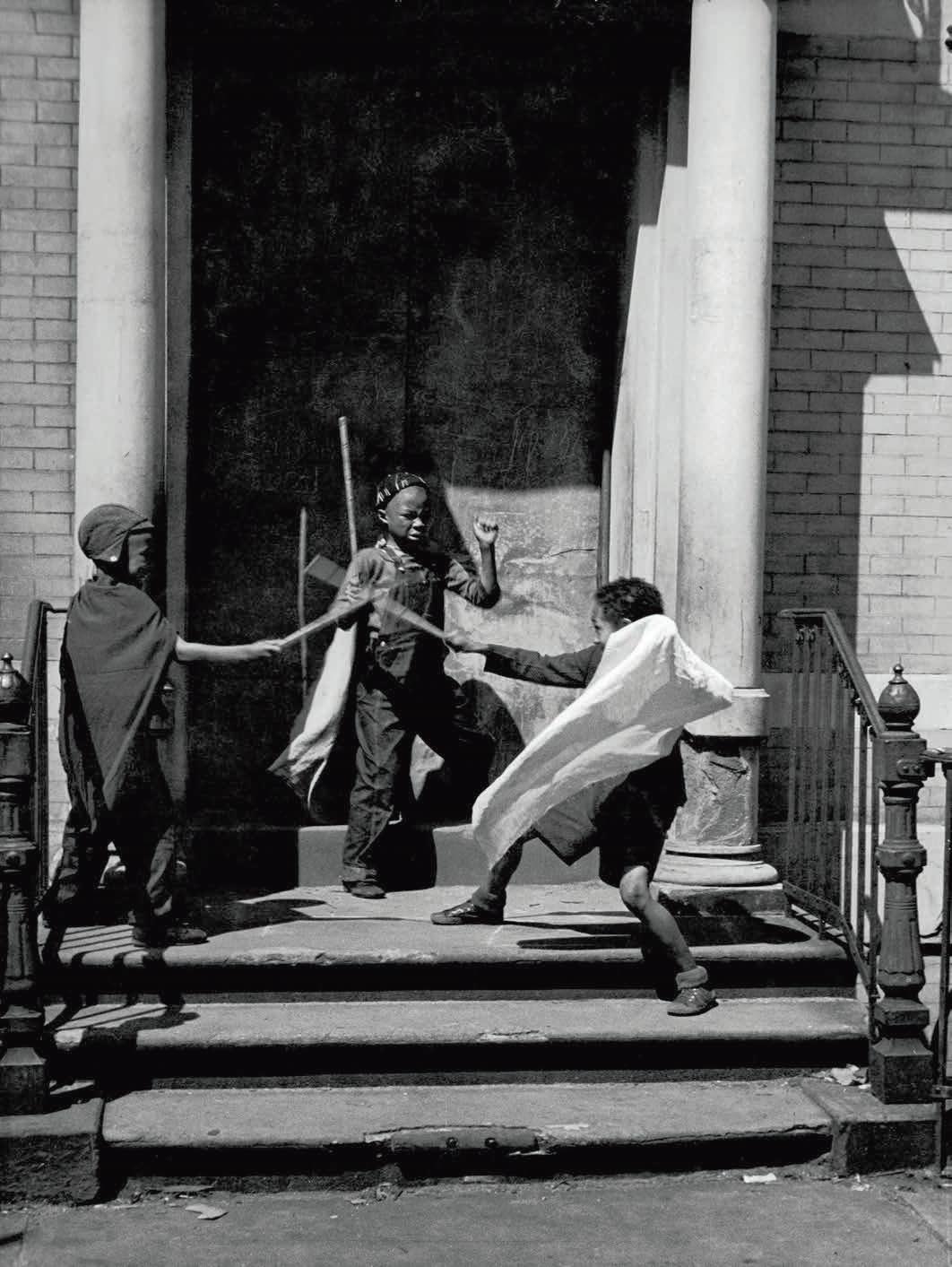
113 112
— New York, 1940 Collection Martin Z. Margulies. New York, ca. 1940 The Albertina Museum, Vienna.

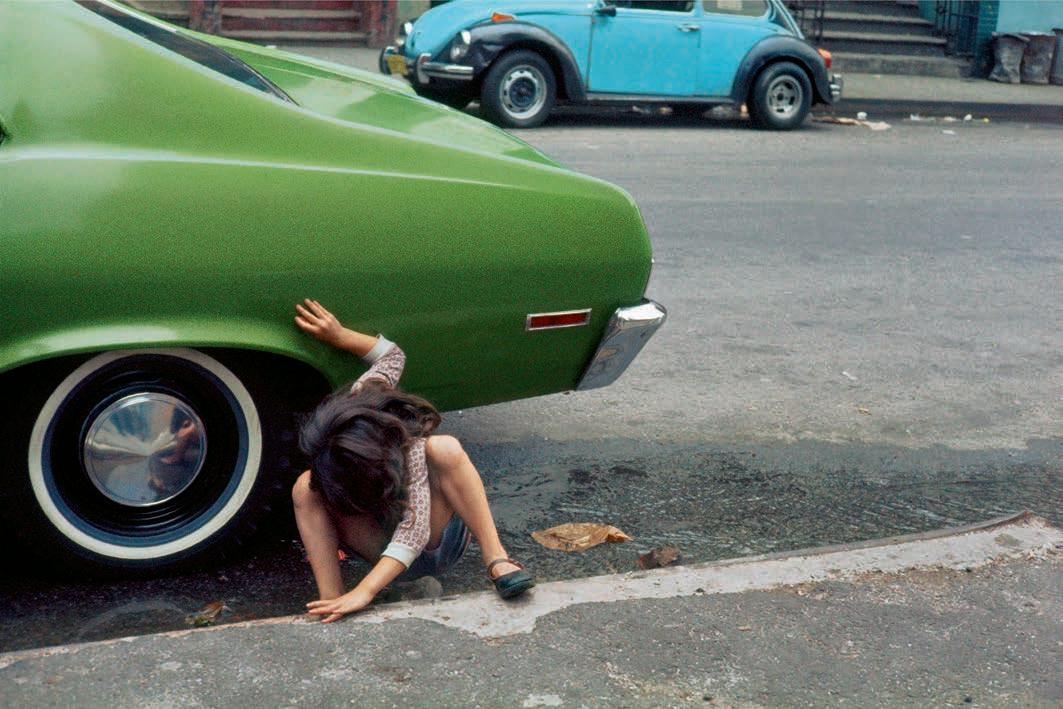
115 114 — New York, 1980 Private collection. New York, 1988. Private collection. — NEXT PAGES New York, 1940
The Albertina Museum, Vienna. Permanent loan of the Austrian Ludwig Foundation for Art and Science.

VARIÉTÉS , AN AVANT-GARDE REVIEW BERENICE
ABBOTT, FLORENCE HENRI, GERMAINE KRULL… THE AMSAB COLLECTION REVEALED
A Belgian art critic, collector and gallery owner, Paul - Gustave Van Hecke (18871967) never ceased to promote Belgian and international avant- garde art during the interwar period. In the 1920s, he met E. L. T. Mesens, a pianist, poet and one of the founders of Belgian surrealism. Together, they founded the gallery L’Époque in Brussels, rmly focused on the avant-garde movement.
In 1928, they launched Variétés. Revue mensuelle illustrée de l’esprit contemporain, where they published reports on new artistic trends without making hierarchical distinctions between the arts. Texts, photographs and illustrations were assembled like a surrealist collage. A complete anthology of modernist photography, it featured Man Ray, Germaine Krull, Berenice Abbott, László Moholy-Nagy, Florence Henri… without limiting its editorial policy to a genre, a style or a school of thought.
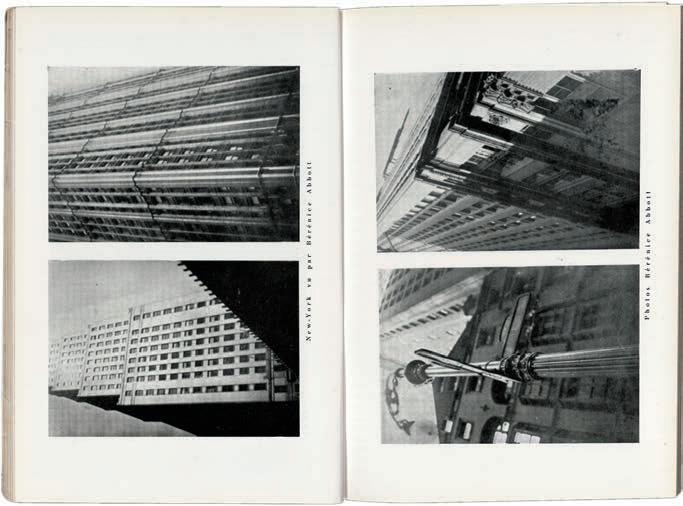
The emphasis on photography in Variétés was naturally extended to an exhibition at L’Époque in 1928, where works from international artists such as Abbott, Atget, Bierman, Kertész, Krull and Lotar resonated with those of Belgian artists De Smet, Magritte, Gobert and Mesens himself. This was one of the rst photography exhibitions of this magnitude, a year before the emblematic Film und Foto in Stuttgart. In July 1932, the international photography exhibition took place in Brussels, initiated by Mesens, with the participation of Van Hecke. This was the most important event ever dedicated to photography, presenting thousands of photos and 124 artists.
This collection then embarked on an unusual journey: mixed with the photographic archives of a newspaper directed by Van Hecke in the 1930s that went bankrupt in 1978, it was then transferred to the Amsab archives (an institute of social history which collects the historical heritage of social movements in Belgium). It was, miraculously, never destroyed. It was believed that the collection had disappeared until Ronny Gobyn, an historian and publisher, uncovered it twenty years ago in the Amsab archives, scattered among more than 150,000 press photos. The Variétés exhibition brings together for the rst time all 25 issues of the review, with more than 170 original and vintage photos, o ering an unprecedented perspective on avantgarde photography.
Exhibition curator: Sam Stourdzé, in collaboration with Ronny Gobyn and Damarice Amao.
Exhibition coproduced by Amsab – Institut of Social History, Ghent, Tijdsbeeld & Pièce Montée, Ghent, and the Rencontres d’Arles.
Publication: Variétés et l’Esprit Contemporain, Damarice Amao, Xavier Canonne, Hendrik Ollivier and Kim Robensyn, editing by Sam Stourdzé, Actes Sud/ Tijdsbeeld & Pièce Montée Éditions, 2019. Wallpapers by Processus, Paris. Framing by Circad, Paris.
Exhibition venue: Chapelle Saint-Martin du Méjan.
—
Variétés 2nd year, n°4, August 15, 1929.
Contains 6 series by: Berenice Abbott, Aenne Biermann, Florence Henry, André Kertész, Germaine Krull, Gobert, Eli Lotar, Henri Martinie, Man Ray, Albert Valentin.
p. 240-241, New York vu par Berenice Abbott [New York as seen by Berenice Abbott].

Berenice Abbott, New York 1929.
—

119 118
— Photogénies [Photogenias] and Compositions [Compositions], photographs



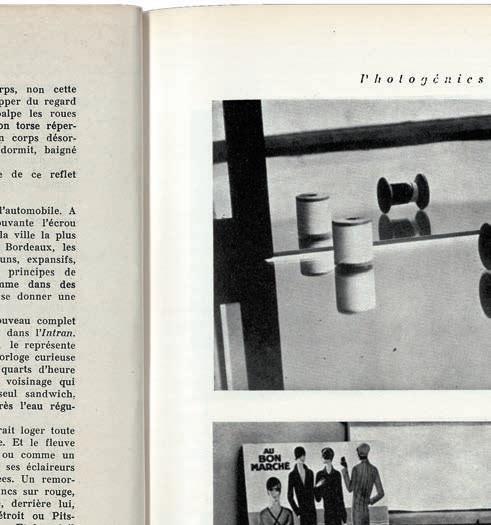
by Florence Henri.
— p. 236-237, Albert Valentin, Les Nuits de l’Hôtel Méditerranéen, à C… (Hérault) [Nights of the Hôtel Méditerranéen, in C... (Héraut), Les Yeux de Constance R… [Constance R’s Eyes…] and 30 août 1928 (1566 Mort de Soliman II, dit le Magni que) [August 30, 1928 (Death of Soliman II, know as the The Magni cent].
— p. 238-239, Aenne Biermann, Fêtes nationales [National Holidays].

121 120

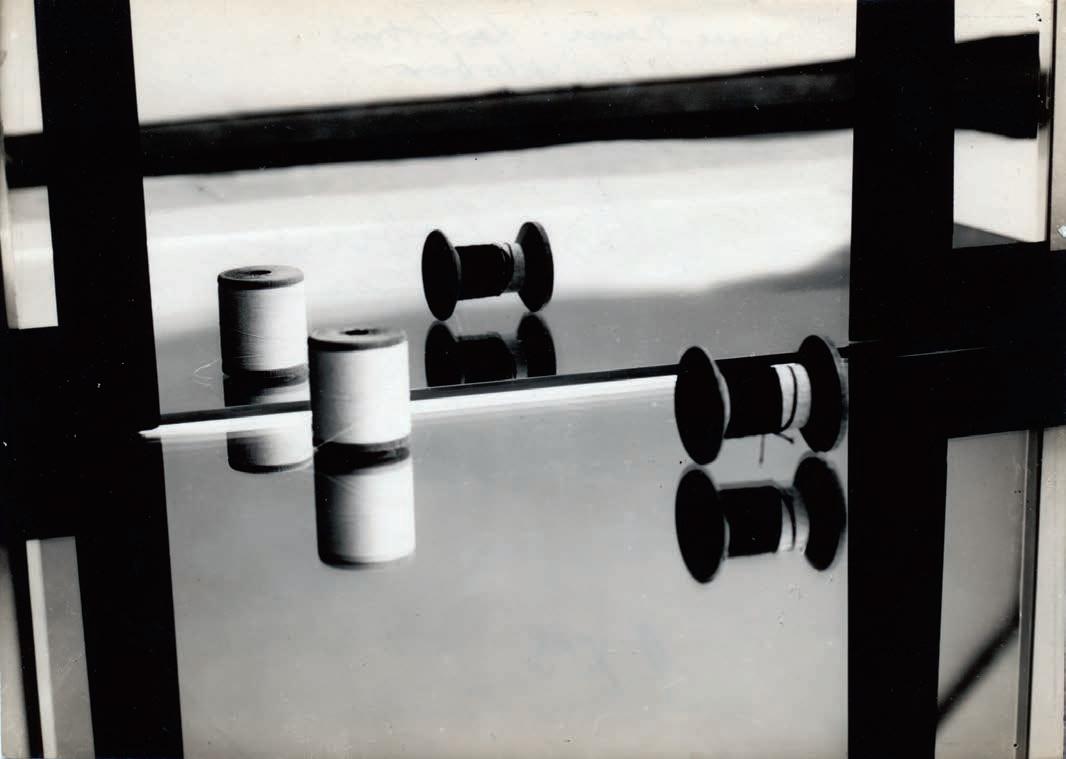
123 122
— Florence Henri, Au Bon Marché [At the Bon Marché], 1920–1929.
Florence Henri, Les Bobines [The Reeds], 1928.
EVE ARNOLD, ABIGAIL HEYMAN & SUSAN MEISELAS UNRETOUCHED WOMEN
In the mid-1970s, when feminism gained an unprecedented momentum in the United States, three American photographers, Eve Arnold, Abigail Heyman and Susan Meiselas, published books of a new kind. Combining testimonials and photographs, they o ered a new look into the lives of women, in both the workplace and their private lives. These three photographers imposed their singular signature and experiment through the book form. They put women to the test of the photographic image, avoiding stereotypes to draw alternative representations.
This exhibition unveils the unique process of their works through drafts and contact sheets. The rst book, Growing Up Female, published in 1974 by Abigail Heyman, is a feminist diary. The photographer lucidly looks at her own life and questions women’s con nement in stereotypical roles. The second book, The Unretouched Woman, published by Eve Arnold in 1976, shows unknown and famous women captured at unexpected moments of their daily lives. The photographer refuses to retouch or stage the images, delivering an intentionally diverse and nuanced collection, far from the models in glossy magazines. The third book, Carnival Strippers, published the same year by Susan Meiselas, is the result of four years of investigation on traveling striptease shows in the Northeastern United States. Through extensive testimonies, she gives a voice to the people she photographed, showcasing their work, their dreams and ambitions.
These photographs o er a unique look at women’s bodies, revealing the invisible role of makeup and dramatization that condition most public appearances, and an unsuspected world of intimacy and everyday life, imbued with prosaic crudeness. They also expose the social conventions and norms that de ne the status of women in society, within the marital or domestic space, to bring out strong characters represented by active, independent and free women.
Exhibition curator: Clara Bouveresse, winner of the Rencontres d’Arles Curatorial Research Fellowship.

Exhibition produced in collaboration with Magnum Photos.
Publication: Femmes à l’œuvre, femmes à l’épreuve/Unretouched Women. Eve Arnold, Abigail Heyman, Susan Meiselas, Actes Sud, 2019. Framing by Circad, Paris. Wallpapers by Processus, Paris.
The Rencontres d’Arles Curatorial Research Fellowship receives the support of Jean-François Dubos.
Exhibition venue: Espace Van Gogh.
EVE ARNOLD
Born 1912, Philadelphia, United States. Died 2012, London, United Kingdom.
A veteran photographer, Eve Arnold traveled the world and photographed celebrities from Marilyn Monroe to Malcolm X and Queen Elizabeth II. She joined the Magnum agency in New York in 1951 and moved to London in 1963, where she worked for the Sunday Times Magazine. In 1971, she wrote and directed Behind the Veil, a lm about veiled women in the Middle-East.
ABIGAIL HEYMAN
Born 1942, Danburry, United States. Died 2013, New York, United States.












Abigail Heyman had been a freelance photographer before she joined Magnum Photos from 1974 to 1981. She then took part in the creation of the Archive Pictures agency. She became a teacher at the International Center of Photography in New York. She is the author of Dreams and Schemes: Love and Marriage in Modern Times (1987), a book gathering her wedding photographs, o ering an acute and playful analysis of rituals attached to this ceremony.
SUSAN MEISELAS
Born 1948, Baltimore, United States. Lives and works in New York, United States.
Susan Meiselas is a pioneer in the collaborative practice of photography. Her work questions the political and memorial power of images by creating space for dialogue and interactions. She is known for her investigation of American traveling striptease shows in the early 1970s, her work on the Nicaraguan Revolution in 1978-1979, and for her extensive photographic documentary project on the Kurdish people, which began in the 1990s. She joined the Magnum agency in 1976 and has been president of the foundation since its creation in 2007. She is the winner of the rst Women In Motion Prize awarded by Kering and the Rencontres d’Arles.
Portrait of Eve Arnold: courtesy of Robert Penn.
— Cover of Susan Meiselas’ book, Carnival Strippers New York, Farrar, Strauss & Giroux, 1976.

Cover of Eve Arnold’s book, The Unretouched Woman New York, Knopf, 1976.

Cover of Abigail Heyman’s book, Growing Up Female: A Personal PhotoJournal, New York, Holt, Rinehart & Winston, 1974.

— NEXT PAGES
Susan Meiselas, Shortie on the Bally Barton, Vermont, USA. Courtesy of Susan Meiselas / Magnum Photos.
PAGES 128–129
Abigail Heyman, Supermarket, 1971.
PAGES 130–131
Eve Arnold, Actress Joan Crawford, Los Angeles, 1959. Courtesy of Eve Arnold / Magnum Photos.
125 124
Portrait of Susan Meiselas: courtesy of Meryl Levin.
Portrait of Abigail Heyman: courtesy of the artist.
Portrait of Clara Bouveresse: courtesy of the curator.



TOM WOOD
MOTHERS, DAUGHTERS, SISTERS
Before moving to Merseyside in 1978 and becoming the “photie man” photographing people on streets, in pubs and nightclubs, markets and docks, workplaces, parks and football grounds, Tom Wood used to collect old postcards and magazines. Back in the 1960s, when he was getting o the bus from school, he would stop by a nearby charity shop and buy old publications, family albums and postcards of posed studio portraits from the turn of the century to the 1930s. He would use cutouts from the magazines to cover his bedroom walls, alongside rock band posters and LP covers, and separate the studio portraits into di erent categories before arranging them in albums. He was fascinated by their sheer photographic quality, the silver-rich blacks, and intrigued by their physical presence.
Exhibition curator: Martha Kirszenbaum. Exhibition produced in collaboration with Sit Down Gallery.
Publication: Mother, Daughter, Sister, Éditions Textuel, 2019.





Prints by Paul Lowe, Spectrum Photographic, Brighton et Tim Williams, Coleg Llandrillo, North Wales.
Framing by Circad, Paris.
Exhibition venue: Salle Henri-Comte.
The exhibition Mothers, Daughters, Sisters brings together a corpus of prints selected among Tom Wood’s eponymous series, shot on the streets of Liverpool and the surrounding area between the early 1970s and the late 1990s, alongside a selection of found family postcards from his above-mentioned personal collection. Wood cites as a source of influence the writings of German philosopher Ludwig Wittgenstein and particularly his emphasis on the visual and the notion of “family resemblance”—de ned as a series of overlapping similarities rather than one essential common feature. The selection of works presented here appears as a rare occasion to put in perspective one aspect of Wood’s proli c and wide-ranging photographic practice with the personal vernacular collection that has influenced his work for the past 40 years.
His series Mothers, Daughters, Sisters strikes the viewer with its attention to the mundane and the everyday life of common people. Sometimes posed and sometimes caught on the go, these scenes from street life that Tom Wood captured with his camera a ect us by the deep sense of intimacy and feminine complicity they convey.
TOM WOOD

Born 1951, County Mayo, Ireland. Lives and works in North Wales.
Tom Wood studied Fine Art at Leicester Polytechnic before moving to Merseyside in 1978, where he began taking photographs of people on the street. His work has been widely exhibited, notably at The Photographers’ Gallery in London, The International Center of Photography, C/O Berlin, Le Centre Culturel Suisse in Paris, and the Kunsthalle Bremen. He has published numerous books, including Photie Man, Looking For Love, Men & Women and Women’s Market. He was awarded the Prix Dialogue de l’Humanite at the Rencontres d’Arles (2002) and the Major Production Award from The Arts Council of Wales (2007).

133 132
Portrait of Tom Wood: Marc de Groot.
Portrait of Martha Kirszenbaum: courtesy of the curator.
Walking Through Shoes 1991.
Courtesy of the artist and Sit Down Gallery [all photographs].
—
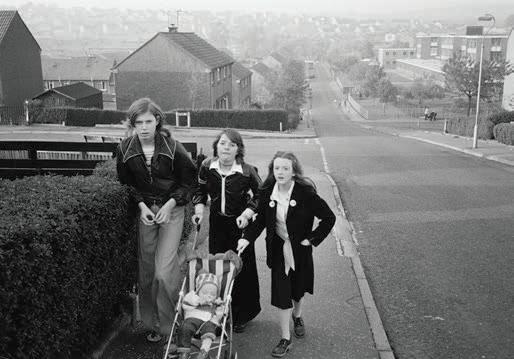
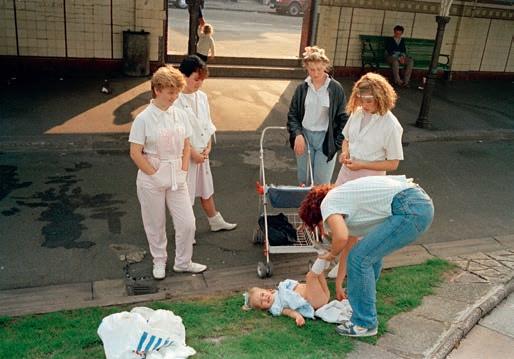

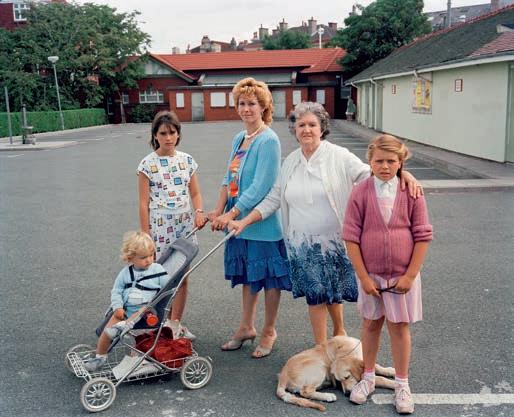

135 134
— Saturday Afternoon, Leicester, 1973.
— Abbey View Dunfermline, 1987. Maybe Baby 1990.
— Putting Green New Brighton, 1985. Floral Pavillion 1985.
THE OTHER PHOTOGRAPHY
A tribune for hoarders and obsessive people.
PHOTO | BRUT
COLLECTION BRUNO DECHARME & COMPAGNIE
For the rst time, Photo | Brut brings together 45 self-taught photographers and 300 photographs they produced in solitude or asylums.
POSTCARDS
NEWS FROM A DREAM WORLD
Postcards are illusions turned into images. No wonder many artists have used them in their work.
THE SAGA OF INVENTIONS FROM THE GAS MASK TO THE WASHING MACHINE, CNRS ARCHIVES
Over 100 images document inventions and scienti c research between 1915 and 1938.
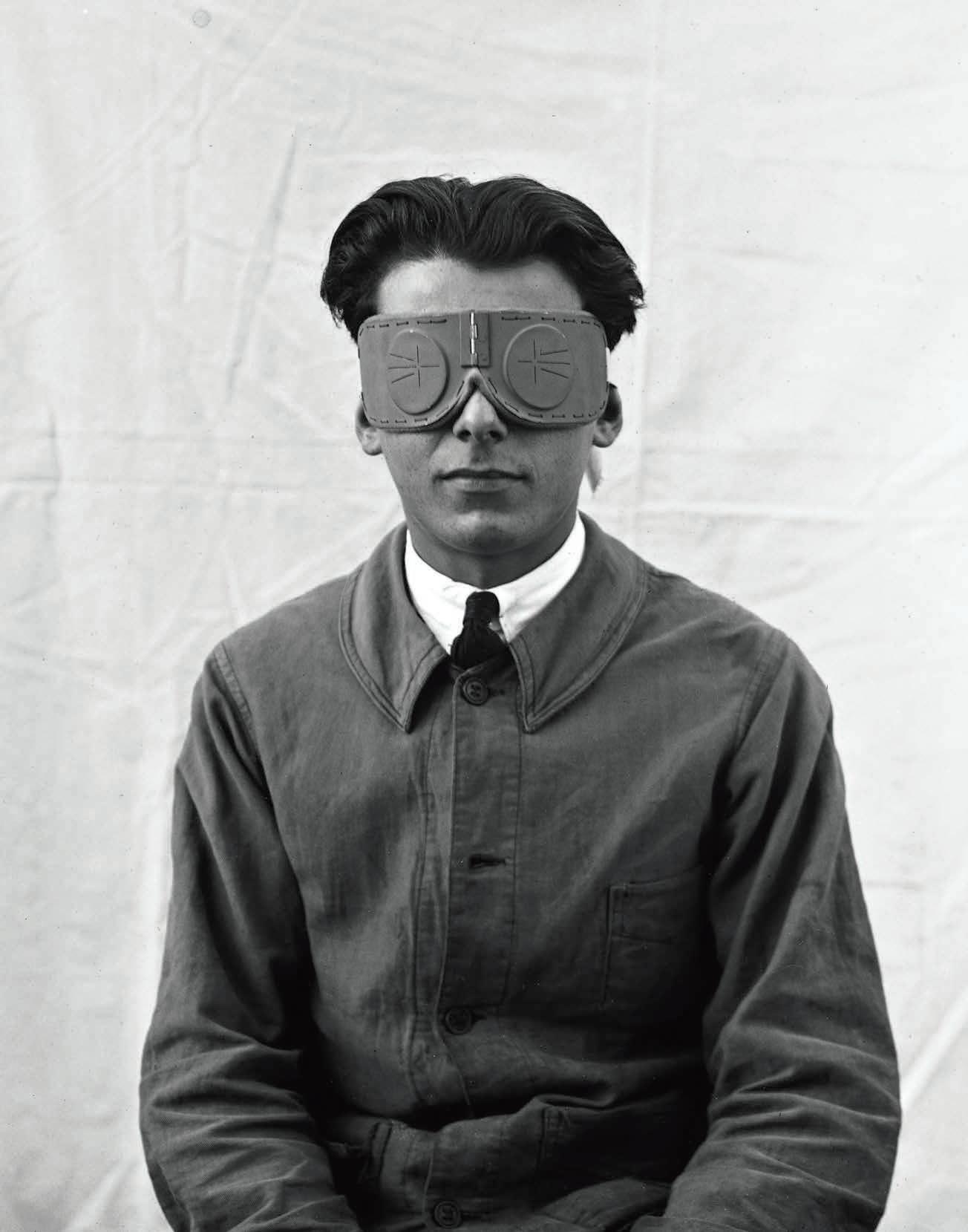
—
National Scienti c and Industrial Research and Inventions O ice, Louis Lapicque’s visual eld shutter goggles, December 1926. CNRS collection, B_6127.
PHOTO | BRUT COLLECTION BRUNO DECHARME & COMPAGNIE
HORST ADEMEIT, SHELL L. ALPERT, STEVE ASHBY, MORTON BARTLETT, MARCEL BASCOULARD, JOHN BRILL, EUGENE VON BRUENCHENHEIN, FELIPE JESUS CONSALVOS, ALOÏSE CORBAZ, JESUYS CRYSTIANO, HENRY DARGER, CHARLES DELLSCHAU, JOHN DEVLIN, CURZIO DI GIOVANNI, FUMIHIRO ENDO, KAREL FORMAN, FRÉDÉRIC, PEPE GAITÁN, GIOVANNI GALLI, PIETRO GHIZZARDI, LEE GODIE, YOHANN GOETZMANN, KAZUO HANDA, MARIAN HENEL, MARK HOGANCAMP, PAUL HUMPHREY, GÜNTER K., ZDENEK KOŠEK, ALEXANDRE LOBANOV, TOMASZ MACHCIŃSKI, “MARGRET”, ALEXANDRE MEDVEDEV, DONALD MITCHELL, ALBERT MOSER, EDWARD NADGRODZKI, NORMA OLIVER, PHOTOGRAPHIES SPIRITES, LUBOŠ PLNÝ, ILMARI SALMINEN, MILTON SCHWARTZ, TED SERIOS, VALENTIN SIMANKOV, LEOPOLD STROBL, ICHIWO SUGINO, ELKE TANGETEN, DOMINIQUE THÉATE, MIROSLAV TICHÝ, UFOS, ELISABETH VAN VYVE, AUGUST WALLA, MELVIN WAY, ADOLF WÖLFLI, ZORRO, AND NUMEROUS ANONYMOUS PERSONS.



Could “raw photography” be classified as art brut (“raw art”), as defined by Jean Dubu et? If so, it would include shots, prints, photomontages, and photo collages created by self-taught artists, developed outside of conventional art circles, in contexts such as mental institutions, solitude, and marginality, in both cities and rural areas.
Photo | Brut presents more than 500 works from the Bruno Decharme collection, as well as a selection of other institutional and private collections chosen for their complementarity. This exhibition addresses four central themes: “Private A airs”, “Reformatting the World”, “Performing, or Another I”, “Warding O the Reality”.
These photographs, montages, and collages, depicting private scenes, question sexuality. Flirting with perversion, they toy not only with the seductive or threatening image of the femme fatale, but also with that of the madonna, the saint, or the innocent girl. Some series distinctly reveal the artist’s own pleasure as he repetitively and obsessively documents the object of his desire.
These creators, often at odds with society, attempt to make the world their own and win over a society from which they are excluded. As both outsiders and observers, they “comment” on current events with profound acuity.
But what about these authors, who maintain such a peculiar relationship with the rest of the world? Are their creations solely for personal use, intended to be hidden from sight, or are they destined to be showcased for the public—or even an entity beyond them? Through dramatization and role play, these artists make up new identities, proving that their own is blurred/fluid/plural, and exploring gender issues.
Through various ritual practices, these creators aim to bring out what the human eye cannot perceive, to capture apparitions and visions, control what lies beyond reality, banish terrifying beliefs and threats. They sometimes opt for scienti c or magical explanations, trying to make sense of the inexplicable, restrain mysterious and devastating forces, and put in order what threatens to collapse.
Exhibition curators: Paula Aisemberg, Bruno Decharme, Barbara Safarova & Sam Stourdzé, in collaboration with Valérie Rousseau. Exhibition produced by the Rencontres d’Arles in collaboration with abcd and the American Folk Art Museum, New York.

Publication: Photo Brut, collection Bruno Decharme & compagnie, Flammarion, abcd and the American Folk Art Museum, 2019. Prints by Processus, Paris Framing by Circad, Paris.
Exhibition venue: Mécanique Générale.
Anonymous,








139 138
Portrait of Paula Aisemberg: Célia Pernot. Portraits of Bruno Decharme and Barbara Safarova: courtesy of the curators.
Obsession ca. 1880. Bruno Decharme collection [all photographs]. —


141 140 — Anonymous, Wie ein Marchen ca. 1950. Anonymous, known as Zorro, 1967.





143 142 — RIGHT PAGE
— LEFT PAGE
Marcel Bascoulard. Charles Dellshau, 1920. Valentin Simankov. Miroslav Tichý.
— NEXT DOUBLE SPREAD
Luboš Plný.
Alexandre Lobanov, ca. 1960.
Zdenek Košek, 1980.


145
POSTCARDS NEWS FROM A DREAM WORLD
Exhibition curators: Magali Nachtergael and Anne Reverseau, winners of the Rencontres d’Arles Curatorial Research Fellowship. With the help of the multidisciplinary laboratory Pléiade (EA 7338) and the European Research Council (ERC).



The Rencontres d’Arles Curatorial Reasearch Fellowship receives the support of Jean-François Dubos.
Exhibition dedicated to Susan Hiller.
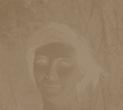
Exhibition venue: Musée départemental Arles antique.
For the postcard, is the world nothing but a huge studio? Facing these beautiful pictures, works created by artists using or inspired by the postcard, we see how this constructed image simultaneously constructs the world.
The postcard is the ultimate circulating picture, constantly subject to a sense of déjà-vu. Throughout the twentieth century, it went hand in hand with the bottling of the visible world, the rise of image globalization and mass tourism.
Collectors, hoarders, retouchers and iconographers seize existing pictures to give them a new meaning, clarify their status or context. They reveal how these familiar images, seemingly worthless and harmless, play a part in our perception of the world. By emphasizing certain features of these documents and vernacular practices, they shine a light on the arti ciality of the postcard which, under its glossy surface, contributed to the creation of a world made of arti cial and commercial images.
By comparing this artistic vision with the making of postcards, this exhibition questions what they show and tell of the world, like a visual anthropology. What did they convey throughout the twentieth century, during their hour of glory? What vision of the world did they plant in the minds of their recipients, who got them from relatives and friends? A symbol of both our private and collective imagination, the postcard represents an illusion, always close to hand. It shows us a dream world in which we can project ourselves, as in a desirable ction story.
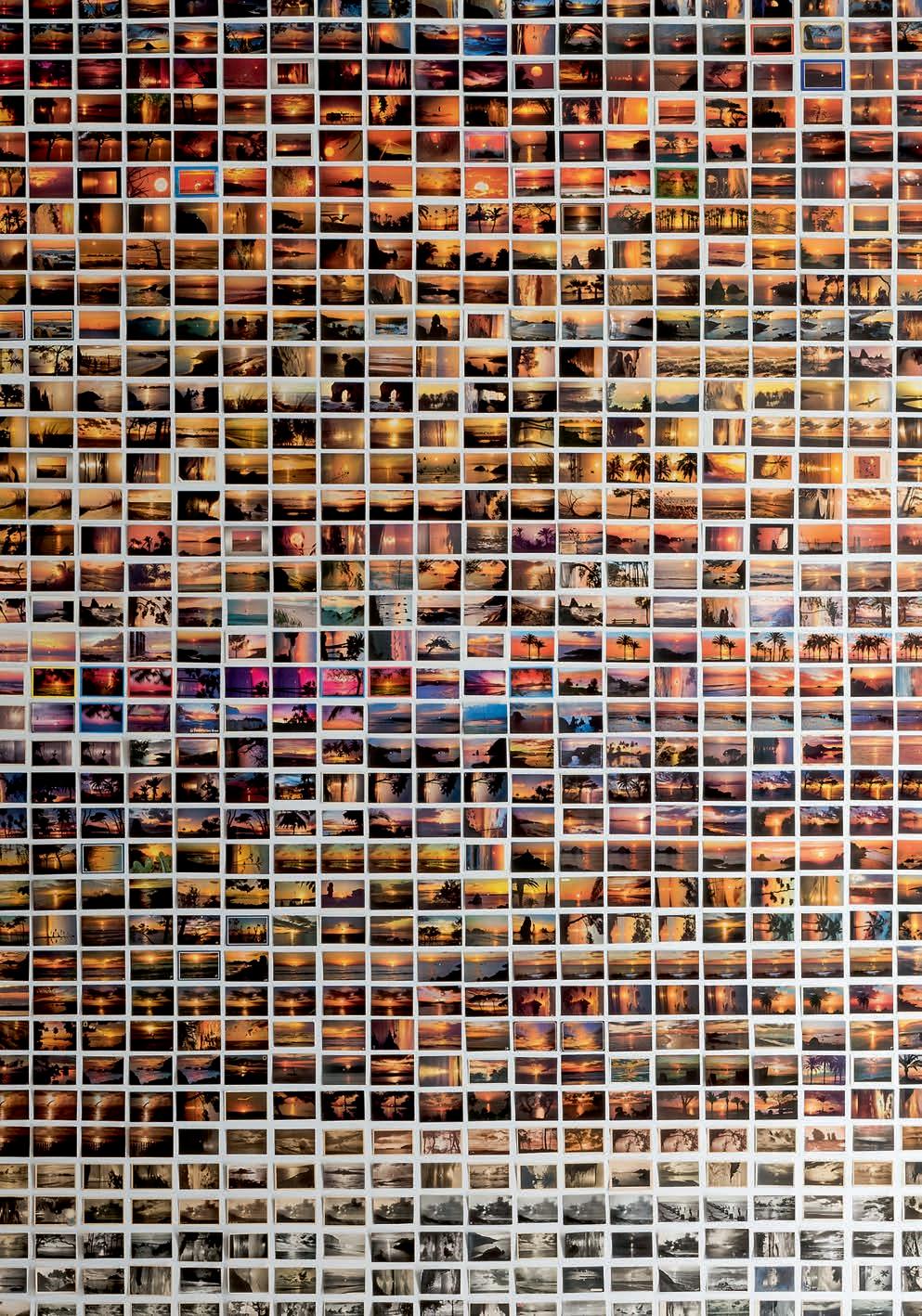 Portraits of Magali Nachtergael and Anne Reverseau: courtesy of the curators.
ERIC BAUDART & THU-VAN TRAN (1972 & 1979), FREDI CASCO (1967), MOYRA DAVEY (1958), DOCUMENTATION CÉLINE DUVAL (1974), RENAUD EPSTEIN & INITIATIVE URBANE KULTUREN (1971 & CREATED IN 2014). JEAN GEISER (1848-1923), JOANA HADJITHOMAS & KHALIL JOREIGE (1969), ROC HERMS (1978), SUSAN HILLER (1940-2019), JOHN HINDE (1916-1997), KATIA KAMELI (1973), AGLAIA KONRAD (1960), VALÉRIE MRÉJEN (1969), MARTIN PARR (1952), MATHIEU PERNOT (1970), BRENDA LOU SCHAUB (1993), STEPHEN SHORE (1947), JOHN STEZAKER (1948), ORIOL VILANOVA (1980), WILLIAM WEGMAN (1943).
Portraits of Magali Nachtergael and Anne Reverseau: courtesy of the curators.
ERIC BAUDART & THU-VAN TRAN (1972 & 1979), FREDI CASCO (1967), MOYRA DAVEY (1958), DOCUMENTATION CÉLINE DUVAL (1974), RENAUD EPSTEIN & INITIATIVE URBANE KULTUREN (1971 & CREATED IN 2014). JEAN GEISER (1848-1923), JOANA HADJITHOMAS & KHALIL JOREIGE (1969), ROC HERMS (1978), SUSAN HILLER (1940-2019), JOHN HINDE (1916-1997), KATIA KAMELI (1973), AGLAIA KONRAD (1960), VALÉRIE MRÉJEN (1969), MARTIN PARR (1952), MATHIEU PERNOT (1970), BRENDA LOU SCHAUB (1993), STEPHEN SHORE (1947), JOHN STEZAKER (1948), ORIOL VILANOVA (1980), WILLIAM WEGMAN (1943).
147 146
Oriol Vilanova, Sunsets From… 2012. Courtesy of the artist. —
— Valérie Mréjen, La Baule, ciel d’orage [La Baule, Stormy Sky], 2016 (video, 2', detail).
Courtesy of Frac Languedoc-Roussillon.
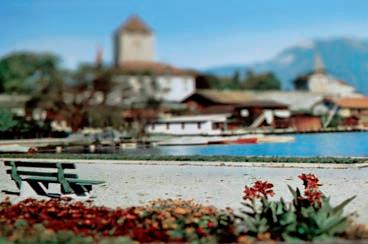
Fredi Casco. Contact (detail), 2014.
Installation of 49 radio message postcards (QSL type).

Courtesy of Galerie Mor & Charpentier.
Joana Hadjithomas & Khalil Joreige, Histoire d’un photographe pyromane [History of a Pyromaniac Photographer], Wonder Beirut #22 1998-2007.

Courtesy of Galerie In Situ, Fabienne Leclerc.
Postcard: Saint A rique.

Le pont romain et l’église [Saint A rique: Roman Bridge and Church], APA Poux, 1930s.

Private collection.
— Postcard from the Paris Colonial Exposition, The Totem Fountain by Night, 1931, Gustave Soury collection.
Courtesy of MuCEM, Marseille.
Brenda Lou Schaub, FAKE #1, 2017.
Courtesy of the artist.
Éric Baudart & Thu-Van Tran, Saïgon, 2017.
Courtesy of the artists.
documentation céline duval, Point de vue, Spiez 2015.










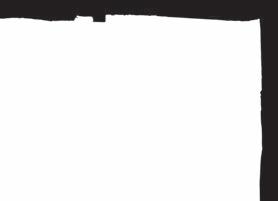


Courtesy of Semiose Galerie.
Voyage du Roi Baudouin Ier au Congo, été 1955 [Journey of King Baudoin I to the Congo, Summer 1955]

Éditions Chocolat Côte d’Or, 1955.
Private collection.
149 148

151 150
— John Hinde Studio, On the Road to Keem Strand John Hinde Collection. Courtesy of The Photographers’ Gallery.
THE SAGA OF INVENTIONS: FROM THE GAS MASK TO THE WASHING MACHINE CNRS ARCHIVES

Thousands of photographs and lms were produced in France between 1915 and 1938 as part of a national policy to encourage scienti c and industrial research. These little known images constitute the visual records of twenty years of research and inventions, rst anchored in war and national defense, and later in civil and domestic life.
These analog archives outline a history of innovation. This story is at the junction of science, technology, industry and design. These archives narrate the ongoing story of the institutionalization of research. These histories of innovations began in 1915 with the creation of the Inventions Department—serving national defense purposes—by minister and mathematician Paul Painlevé, and ended with the dissolution of the National O ice of Scienti c Research and Inventions (ONRSI), which was replaced, in 1939, by the French National Center for Scienti c Research (CNRS), under the initiative of physicist Jean Perrin.
From the beginning, a systematic archive policy was implemented. The inventions were photographed against a neutral background, either centered or captured from above, and, at times, portrayed in front and side views, like a mug shot. An individual—often the inventor himself—poses with the object of innovation, whether it is a machine gun during the war or a rubber broom produced after the war. These chronological series are just as demonstrative. They unfold the potential and operation of the objects, ranging from a birdwatching turret to a washing machine.

The institution produced an enormous volume of these administrative images. Their visual rigor is striking. Behind these images are hidden the visionaries and pioneers who used and played with the still and animated image, mastering their demonstrative, archival, educational, and communicative powers.
Exhibition curator: Luce Lebart. Exhibition coproduced by CNRS and the Rencontres d’Arles, in partnership with the Archives Nationales.
Publication: Inventions (1915-1938), Luce Lebart, coedition CNRS/RVB Books, 2019.

Prints by Processus, Paris.
Wallpapers by Picto and Processus, Paris. Framing by Circad, Paris.
Digitalization by Tribvn, Archives nationales, Vincent Guyot, and CNC for the lms.
Exhibition venue: Croisière.
Inventions Department, Émile Feuillette’s leaflet-launcher for aircraft, ca. 1916-1918.
National Archives collection (France), 398ap041, le 799.




National Scienti c Research Centre, Roger Ulrich’s control pistol, Biology of Cold Laboratory, May 14, 1946. CNRS collection, B_10088. —

153 152
Portrait of Luce Lebart: Alexandra Catière.
— Inventions Department, Langlois mask. Dr. Pottevin’s flame protecting hood. Health Department, around 1917, National Archives collection, 398AP/36.
Inventions Department, Dr. Sicard’s masks. Health Department, around 1917, National Archives collection, 398AP/36.
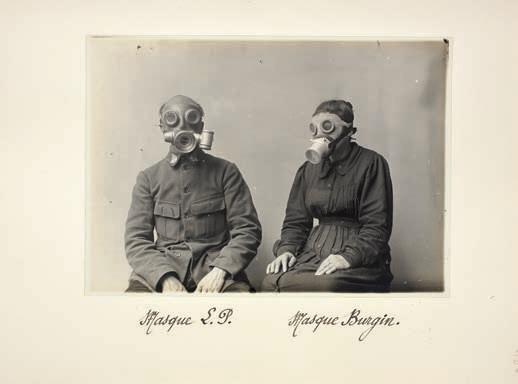
— Inventions Department, L. P. masks. Health Department, around 1917, National Archives collection, 398AP/36.
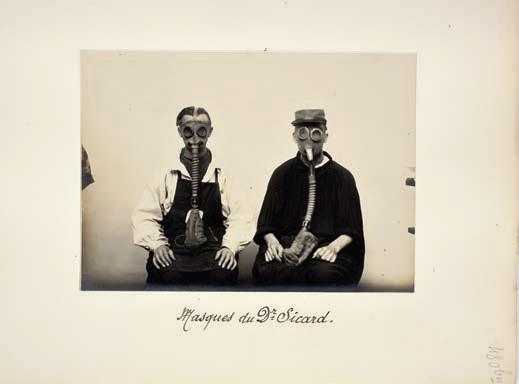

Inventions Department, masks from the Roanne Hosiery Society. Health Department, around 1917, National Archives collection, 398AP/36.

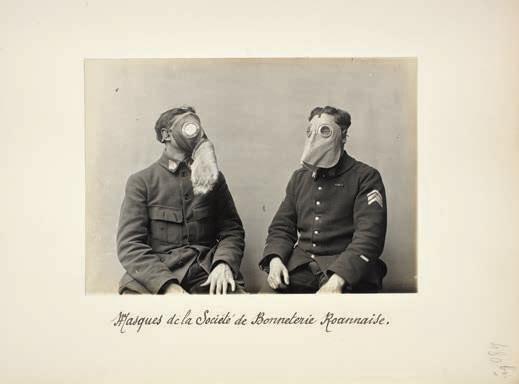

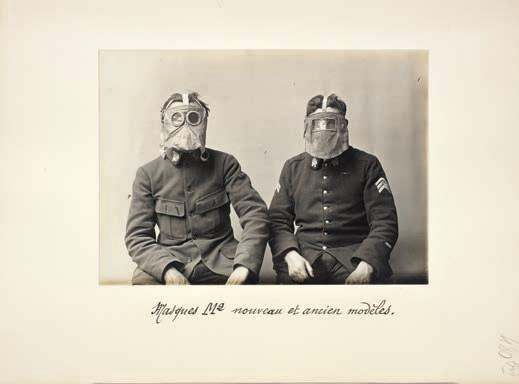
— Inventions Department, M² masks, former and new models. Health Department, around 1917, National Archives collection, 398AP/36.
Inventions Department, L. P. mask. Burgin mask. Health Department, around 1917, National Archives, 398AP/36.
— Inventions Department, English hood. Ihler mask. Health Department, around 1917, National Archives collection, 398AP/36.
Inventions Department, T. N. mask. Mask of the 1915 Fourth Army. Health Department, around 1917, National Archives, 398AP/36.

155 154
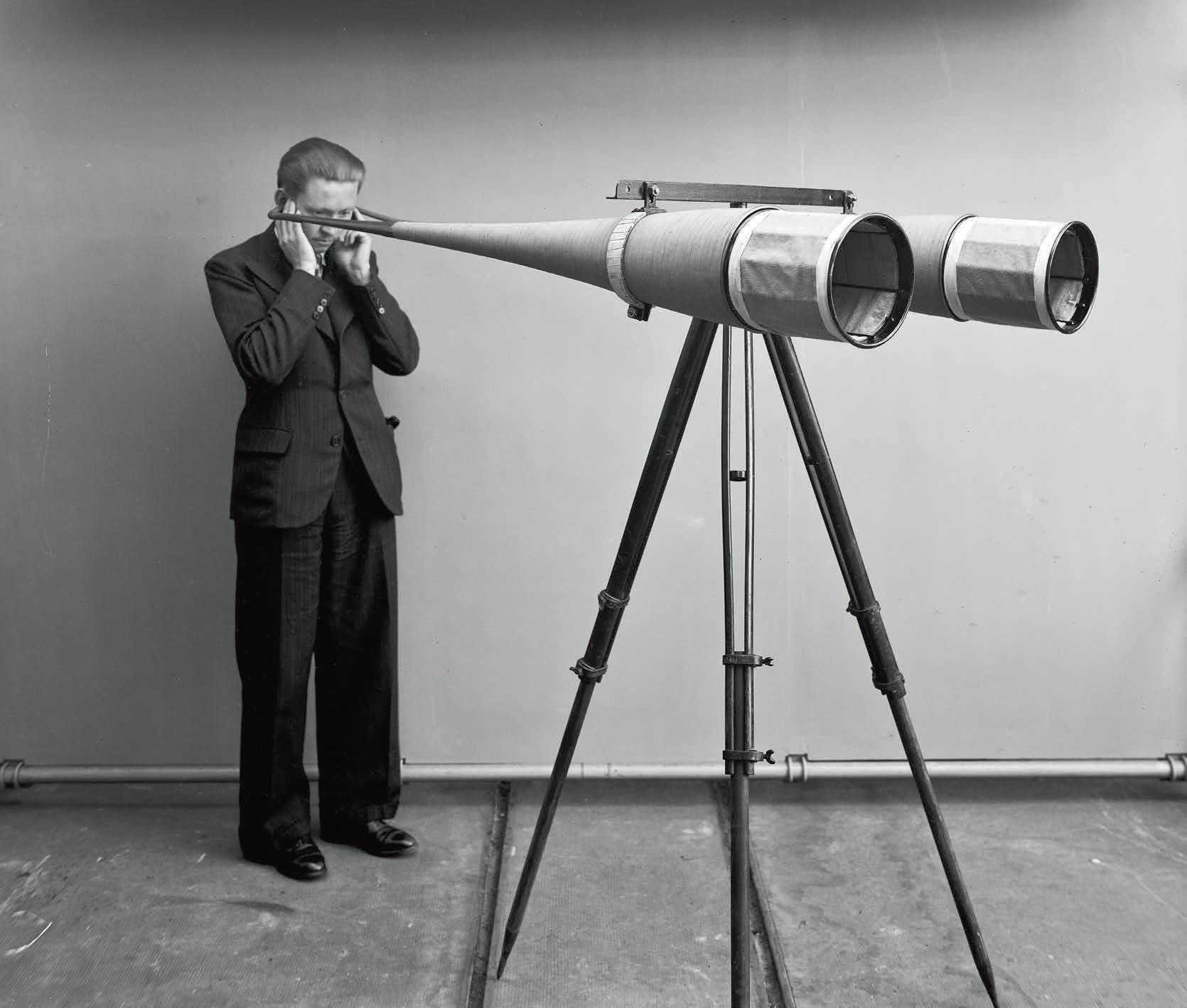
157 156 —
National Scienti c and Industrial Research and Inventions O ice, Georges Mabboux’s acoustic horns to locate aircraft, May 31, 1935. CNRS collection, A_3264.
BUILDING THE IMAGE
Materialist practices of photography.
VALÉRIE BELIN
PAINTED LADIES
Painted photographs or photographed paintings?
CAMILLE FALLET
LICENSE COLOR PHOTO STUDIO
In the footsteps of Walker Evans, Camille Fallet recreated and photographed a model of his photo portrait shop.
YANN POCREAU
CATHEDRAL
And there was light!
LAURENCE AËGERTER
CATHÉDRALES HERMÉTIQUES
When photographs are developed in contact with sunlight.
MARJAN TEEUWEN DESTROYED HOUSE
A large-scale architectural installation where the power of construction and destruction go hand-in-hand.
THE ANONYMOUS PROJECT THE HOUSE
A house where amateur photography becomes the journal of an era.

CLAUDE MARTIN-RAINAUD
CAMERA OBSCURA
Trip to the heart of the image factory.
RANDA MIRZA
EL-ZOHRA WASN’T BORN IN A DAY
Five dioramas, each exploring a forgotten pre-Islamic myth.
ON EARTH IMAGING, TECHNOLOGY AND THE NATURAL WORLD
Innovative imaging strategies shed light on man’s changing relationship to nature.
Anonymous, 1959. Courtesy of The Anonymous Project.
VALÉRIE BELIN PAINTED LADIES
The young ladies in these portraits could easily be real-life celebrities but are, in fact, imaginary ones, archetypal gures originating in the artist’s vision and created by the expressive volume of the faces heightened by “photographic painting.” It is as if the artist, in reflecting on “the very essence of life,” had decided to produce a pictorial representation of it by the accumulation of small touches—since it is impossible to create a living creature from scratch.
As it happens, the portraits in this series were made using agency models. These served as the basis, the raw material for the laboratory process that followed. Each one is named after a brush used to paint and apply make-up, and after the equivalent digital retouching tools found in image-processing software. Brushes and pigments applied the make-up—or rather, the body paint—to the living models in the spirit of tribal painting, or in a kind of initiatory rite. The models’ faces are simply supports here; they are reduced to mere surface. The pose is neutral and the gaze absent, as if trained inwards, on the woman’s own inner life. The only exteriorization comes from the paint, which is imposed on the model, its passive recipient. Each portrait has its own pictorial style, which di ers from one model to another. Once established, the figure is placed against a more or less hazy digital ground that repeats the pictorial motif of the face. Sometimes overlapping, this ground adds to the abstraction of an image whose only depth is on the inside.
The artist’s interventions on the model before the photograph is taken, via the application of make-up, and after the photography, via the digital processing of the image, are all part of the same creative process that gives the image its pictorial quality. We cannot tell whether the result is a painted photograph or a painting photographed. This interrogation regarding the nature of the image, the process involved, and what we are looking at, creates a sense of uncertainty or unease. This new series comes across as a series of contemporary pictures, made in the digital age. It reframes the recurring question of the relations between photography and painting, guration and abstraction, and reality and ction.
Exhibition produced in collaboration with Galerie Nathalie Obadia, Paris.
Publication: Painted Ladies, photographs by Valérie Belin, text by Éric Reinhardt, Éditions Xavier Barral, 2019.

Prints by Picto, Paris.
Framing by Cadre en Seine, Paris.
Valérie Belin is nominated for the Prix de la Photo Madame Figaro Arles 2019.
Exhibition venue: Mécanique Générale.
VALÉRIE BELIN
Born 1964, Boulogne-Billancourt, France. Lives and works in Paris, France.





In 1994, French visual artist Valérie Belin exhibited a rst series of photographs in Paris. Her works are shown worldwide and are held in many public and private collections. She won the 2015 Prix Pictet and was inducted into the Order of Arts and Letters in 2017.
Portrait of Valérie Belin: Lisa Roze.

161 160
Lady_Stroke, 2017. Courtesy of Galerie Nathalie Obadia, Paris, Brussels [all photographs]. —
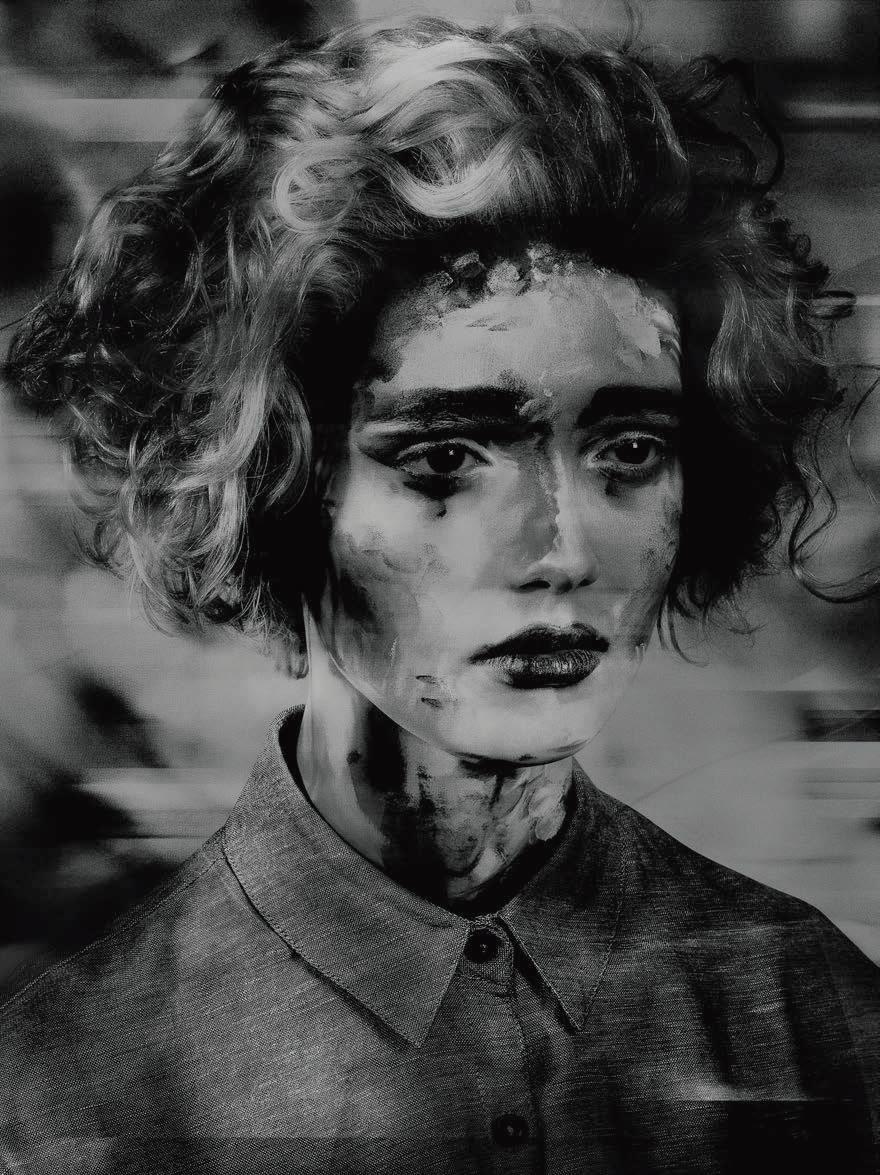

163 162 —
, 2017.
, 2017.
Lady_Inpainting
Lady_Round_Brush
YANN POCREAU CATHEDRAL
Manipulating light, Yann Pocreau makes it a medium in its own right. He includes it as a living subject and explores its e ects on the narrative of his images. His interest in the formal quality and the spatial potential of light lead him to study the relationship between photography and architecture. Polaroids, slides, and photosensitive and photographic paper are part of his artistic vocabulary, but his work also takes the form of light installations and constructed environments.
With Cathedral, Pocreau develops an immersive installation which reproduces the presence of light just as it would manifest itself in such a place. It is composed of a monumental photograph representing the interior of a Gothic cathedral, perforated so as to allow the light to come through. The enhanced image is an old photograph taken from a postcard dating back to the beginning of the twentieth century. This creation is based on the fantasy of the artist who wishes to photograph the almost mystical moment when a ray of light wends its way through the stained-glass windows, when its warmth and luminance spread throughout the space.

Piercing the image, the powerful beams of light are almost palpable: they take shape in the vaporous and suspended dust as it slowly falls to the ground. The rays of light and shadows are the protagonists of the installation, intertwining and asserting their presence.
Cathedral projects a fantasized world where fragility, memory and history collide. This image representing a place of worship, emerging from its planarity, becomes a theater with both apocalyptic and poetic appearances, where the act itself belongs to the light.
Audrey Genois
Curator: Sam Stourdzé. Installation produced in collaboration with MOMENTA Biennale de l’image (Montreal, Canada).
Prints by Quadriscan (Montreal, QC).
With support from the Conseil des arts et des lettres du Québec, the Conseil des arts de Montréal, the Canadian Cultural Center Paris, and the ministère des Relations internationales et de la Francophonie as part of the Coopération franco-québécoise (CPCFQ).
Installation venue: Croisière
YANN POCREAU
Born 1980, Quebec City, Canada. Lives and works in Montreal, Canada.





Yann Pocreau’s work has been shown at the Musée d’art contemporain de Montréal, the ISCP in New York, the Fresnoy, in Tourcoing, and the 5th Sinop Biennial, in Turkey. It will be presented in 2020 at the Montreal Museum of Fine Arts. His work is included in several Canadian collections. In 2018, he was nominated for the Sobey Award. He is represented by the Simon Blais gallery in Montreal.

165 164
Portrait of Yann Pocreau: Paul Kuimet.
Cathedral, 2013. Photograph by Maxime Boisvert. Courtesy of Galerie Simon Blais, Montreal. Musée d’art contemporain de Montréal Collection. —
LAURENCE AËGERTER CATHÉDRALES HERMÉTIQUES
Laurence Aëgerter practices the art of shifting. She has never ceased to reclaim, circumvent, reinvent reality. She collects, divides, plays with the icons of our collective unconscious, drawing images from the internet, encyclopedias, books or art reproductions to bring them back to life, providing them with new spaces of freedom.
In her Cathédrales series, created in 2014, she opened a book from the fifties ( Cathédrales et églises de France ) to the central double-page spread which showed the Gothic cathedral of Bourges. In her studio, every minute for two hours, she captured the movement of the sun and the projected shadow from the windows which was gradually obscuring the reproduction, until it became invisible. This series of photographs, made up of 126 shots and also published as an artist’s book, immerses the spectator in a di erent perception of time, suggesting new ways of reading the image and thereby the depicted object.
Cathédrales hermétiques is the follow-up to this series. Moving away from the facades, she focuses on three church interiors, tackling ten centuries of architecture, from Romanesque (Saint-Benoît-sur-Loire) to Gothic (Coutances) and even a modern cathedral (Sainte-Jeanne-d’Arc in Nice). Later, she included in this series the three Provençal sisters of Cistercian architecture: Sénanque, Silvacane and Le Thoronet, whose architectural design echoed her meditative quest. Silkscreened with an ink reactive to the heat of the sun, the images emerge when exposed to sunlight. The heat penetrates each layer to better reveal it. Laurence Aëgerter invents a new method of photo development: the dark room exists in broad daylight.
Through this juxtaposition of eras, Laurence Aëgerter pays tribute to the monumentality of these works of art. She shifts the history of architecture but also that of the photographic technique. Yesterday’s immutability meets today’s fleetingness.
Laurence Aëgerter herself says that she builds “small monuments to Time.” But with this imperceptible temporal experience, she creates and invites us to a temple of meditation and contemplation.
Fannie Escoulen
Exhibition curator: Fannie Escoulen.
Publication: Cathédrales, RVB Books, 2014. Mounting by Deuxième Œil, Paris.

Exhibition venue: Croisière.
LAURENCE AËGERTER

Born 1972, Marseille, France. Lives and works in Marseille and Amsterdam, Netherlands.

Laurence Aëgerter’s extensive oeuvre comprises photographic series, site-specific installations, collaborative projects, and artist’s books. She makes inventive use of archives and existing images, from illustrated books to museum collections, in a transcultural and transhistorical practice reflecting on the meaning of the image in relation to identity and collective memory. Over the past years, she has exhibited in several international solo and group shows, and commissioned projects for a number of cities and museums.
Cathédrales hermétiques, Coutances (Gothic church, 12th century).
—

167 166
Portrait of Laurence Aëgerter: Naomi Jansen.
Portrait of Fannie Escoulen: Julien Magre.

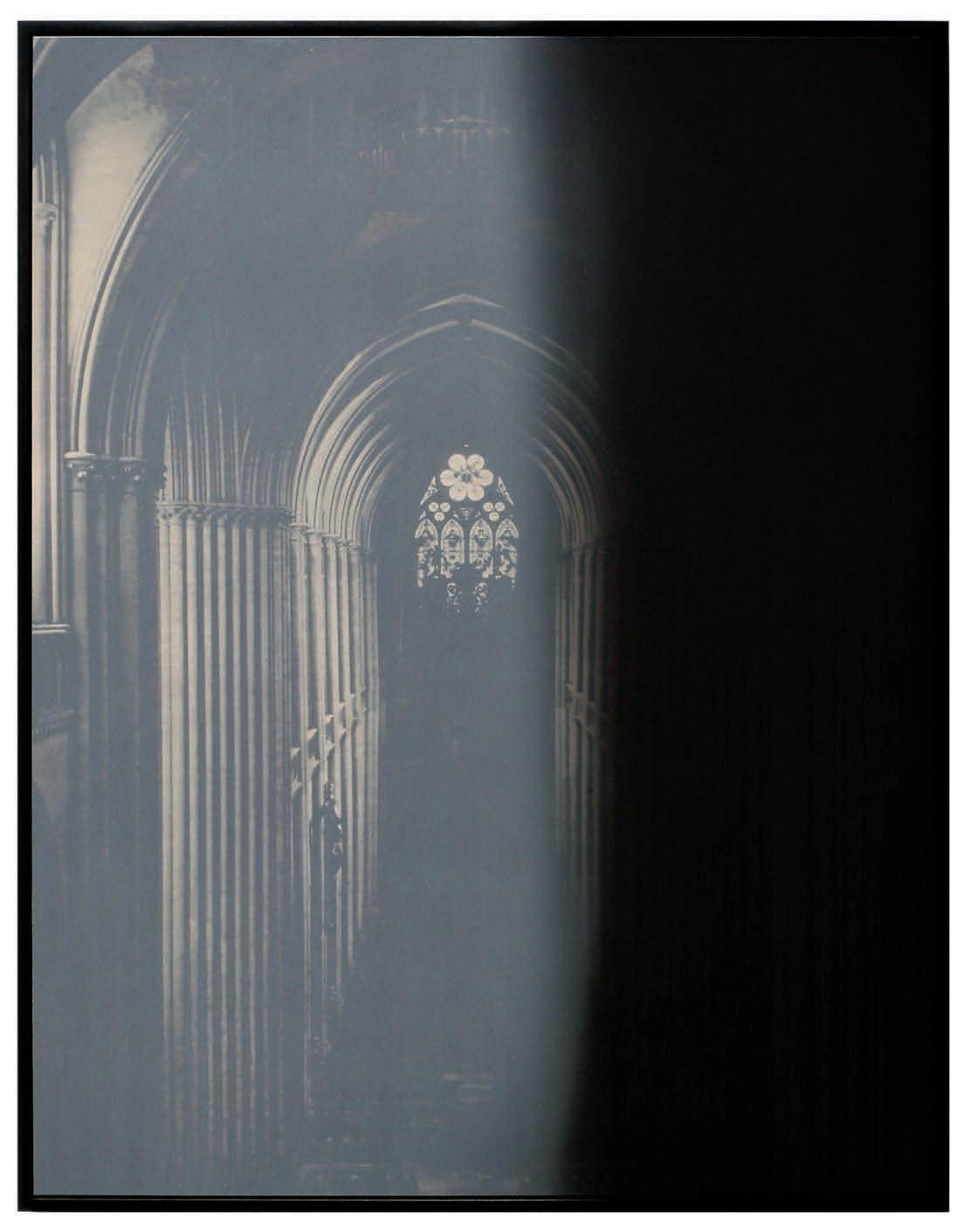
169 168
CLAUDE MARTIN-RAINAUD CAMERA OBSCURA



In a darkened interior space, the image of the landscape outside may be projected upside down on the walls, ceiling, floor and furniture inside. On these impromptu screens, leaves stir, vehicles and pedestrians go their ways, and birds cross the sky on a background of drifting clouds.

For an observer inside, this is a permanent natural cinema, a magical show to be observed very seldom, fortuitously: light must enter this enclosed space through a hole of the right dimensions. However, this phenomenon is potentially at work constantly in the eyes of humans and animals, as in all devices that produce images: photo, cinema, and video cameras. In these technical devices, the image is projected on a sensitive rectangle, on a flat and neutral surface, to reproduce a version as close as possible to reality. But it is inside the interior space that this reversed image of the outside is the most striking, because it takes up all the space, and secretly lives in there. It comes and bends, stretches and tears naturally on the interior geometry of the place, to mingle with the forms, colors and materials present there. The exterior caresses the interior, as though making love to it.
The photographer sets up the phenomenon in the chosen place and then watches it at length to witness how the details and characteristics of the image evolve with the movement of the sun illuminating the scene while the shadows slowly migrate. A photograph of this moment is the only possible tangible trace of the visual poetry generated by the phenomenon of the camera obscura, although it is bereft of any movement.
CLAUDE MARTIN-RAINAUD



Born 1943, Arles, France. Lives and works in Arles and Paris, France.
Claude Martin-Rainaud has studied cinema and photography. He traveled around the world practicing and teaching picturorial arts and techniques. He discovered the camera obscura early and experimented with it passionately. For two decades, he has been installing and photographing this phenomenon. In 2015 he defended a Ph.D. thesis entitled In the eye of the chamber
Self-portrait by Claude Martin-Rainaud.
171 170
Installation venue: Chapelle Saint-Martin du Méjan.
—
View of the Clock Tower of Saint Trophime from the Upper Hall of the École du Cloître, Cour du Palais de l’Archevêché, Arles, 2018. Exposure time: 10 min 25 s.
RANDA MIRZA EL-ZOHRA WASN’T BORN IN A DAY

The time before the revelation of monotheistic Islam is called Jahiliyyah—literally, the age of ignorance and darkness. This period and its rich polytheistic heritage were long disparaged and remain largely unknown today. Yet those repressed myths play a key role in Arab culture and the collective memory of its peoples.
El-Zohra Wasn’t Born in a Day plunges into the archeological artifacts of the Middle East, the writings of ancient Muslim chroniclers, the Koran, classical Arab literature, and the vast area of pre-Islamic poetry to unearth Arabia’s hidden mythological tales. Exhuming these myths makes symbolic, religious and political constructions visible, challenging the dominant narrative that shapes identities and cultures. The works in this show are dioramas, each telling a forgotten, erased pre-Islamic myth. By using the medium of the diorama—which means “to see through”—Randa Mirza questions the forms of representation and exhibition of aniconic narratives. In the same movement, she continues an interest in viewing devices already seen in previous photographic installations. Her work seeks continuity with the use— rst as entertainment, then as a teaching device—of dioramas, which rst appeared in 19th-century France. Mirza also revives wonder boxes—Sandouk al Ferjeh—special objects that traveling storytellers carried with them around the Mediterranean rim in the 20th century. By putting pre-cinematographic aesthetics in relation with various forms of expression such as photography, video, the performing arts and sculpture, this artistic project questions its poetry, its economy and its critique.
RANDA MIRZA
Born 1978, Beirut, Lebanon
Exhibition produced in collaboration with Tanit gallery and AFAC (Arab Fund for Art and Culture).

Lighting design and technical direction: Riccardo Clementi.

Sculptures: Éric Deniaux.
Exhibition venue: Commanderie Sainte-Luce.
Lives and works in Marseille, France and Beirut.
Randa Mirza is a protean artist working mainly with photography and video. Rooted in a postcolonial discourse, her work focuses on the idea of identity and seeks to deconstruct and challenge normed, gendered and orientalizing representations by making present-day symbolic, social, and political constructions visible. Through her work, Mirza tries to give voice to what is unrepresented by questioning the nature of images and their social uses. She has received several awards, including the Prix des Jeux de la Francophonie (2005), the Prix la Photographie-Maison Blanche (2013), and the No Limit Award at the 2006 Rencontres d’Arles.
—
173 172
Portrait of Randa Mirza: Hugo Lautissier.
Issaf and Naila 2015. Courtesy of the artist and Tanit gallery [all photographs].


175 174 — The Year of the Elephant, 2014. Noah’s Gods 2016.
CAMILLE FALLET LICENSE COLOR






PHOTO STUDIO
A documentary work’s quality depends on the expression of the experience on which it is based, on editing, and on writing to make it understandable. To Camille Fallet, photography has little value outside publishing and, as Walker Evans put it, its development as “documentary lyricism.”
In 2016, Mr. Fallet created a half-scale model of a five-cent portrait studio from a picture by Walker Evans: License Photo Studio, New York, 1934 . Overcoming challenges and feeling his way forward, he designed the model by poring over the Evans image. His prints try to convey a situation he has not experienced; he must imagine it and make it his own. The forms produced often recall photographic models or works by famous artists, which are superimposed and overlap. Thus, the model reproducing the Evans photograph also turns out to function as a reprise of Marcel Duchamp’s Étant donnés (1946-1966).
In 2018, Mr. Fallet reassembled the model to photograph it the way Evans shot the portrait studio in 1934. The result brings various equivalences and transpositions into play: a black and white image of a shop rebuilt in volumes and colors; a model of a portrait studio photographed as though in a studio; a studio that is the place where the photograph is shown.

To Camille Fallet, Evans is the leading proponent of modernity in photography not so much for his now-iconic status as for his “anti-art” stance and the questions it raises. By making this his model, he seeks rst to open up and deconstruct photography as reproduction, to focus on its relationship to volume and perspective and its possible liberation from verisimilitude, to pose the question of lyricism. Here, the goal is the possibility of exercising one’s own gaze by appropriating and perhaps even reinventing history.
Installation venue: Croisière.
CAMILLE FALLET
Born 1977, Les Lilas, France Lives and works in Marseille, France.
Camille Fallet has been an artist for 15 years. In 2018, Le Point du Jour, an art center, devoted a show to his work. He recently published a book on metropolitan Bordeaux for the Agora 2017 architecture biennial and made a video for Glasgow International 2018. His exploration of photography led him to be invited to conferences, such as at the HCB Foundation in 2018, or to experiment with being a curator, as in 2017 with Notes on Asphalt: A Mobile and Precarious America, 1950-1990 at the Pavillon Populaire in Montpellier.
—
177 176
Portrait of Camille Fallet: Philippe Conti
License Color Photo Studio Cherbourg, 2018. Collection of the Frac Provence-AlpesCôte d’Azur.
Installation in partnership with Frac Provence-Alpes-Côte d’Azur.
MARJAN TEEUWEN DESTROYED HOUSE
Marjan Teeuwen’s large-scale architectural installations in condemned buildings provide the material and matrix of her oeuvre. From them, she creates autonomous photographic works. Two di erent worlds are thus produced, each with its own qualities and imaginary.
Teeuwen produced seven architectural installations of this type for the Destroyed House series; she has been creating installations for the Archive series since 2005. Elements are broken up, sorted and filed away in an archival system filled with materials from destroyed houses: asphalt, concrete, plasterboard, laths, burnt wood, metal strips, plates, bricks, etc.

In these works, the constructive power of building goes hand-in-hand with the power of destruction and decline, held in a delicate balance. The opposition can be seen through an art-historical lens (vanitas), or with religious, social and philosophical connotations. The diversity of materials produces a wealth of textural qualities strongly suggesting seventeenth-century Dutch painting. For the artist, opposites such as construction—destruction, falling—standing, and order—chaos are at the heart of the human condition in erce conflict. Dostoyevsky claims reckoning these opposites is beyond human powers.
In the installations, these forces manifest themselves in monumental structures, both standing tall and teetering. Beyond its raw visual language of chaos, demolition and destruction, Teeuwen’s work has a highly abstract, minimalist character. Each project begins in extensive consultation with proprietors, o icials from the municipality concerned (regarding licenses), builders and contractors.
For her eighth architectural installation, Marjan Teeuwen has chosen Croisière, the emblematic site of the Rencontres d’Arles. In addition, a number of her photos will be exhibited with the installation.
MARJAN TEEUWEN
Born 1953, Venlo, Netherlands. Lives and works in Amsterdam, Netherlands.
Marjan Teeuwen studied at the Fine Arts Academy, Tilburg (1982–1984), and the Academy of Art and Design, St. Joost, Breda (1984–1988). She won First Prize in the 2009 Krasnoyarsk Biennale. She is a self-willed loner who cannot be categorized in a movement or group. Represented by the Bruce Silverstein Gallery, New York, her work is shown worldwide.

179 178
Portrait of Marjan Teeuwen courtesy of the artist.
Destroyed House Leiden 5 2016.
—
With support from the Bruce Silverstein Gallery, the Mondriaan Fund and the Dutch Embassy in Paris. Exhibition venue: Croisière.


181 180 — Destroyed House Leiden 1 2016. Destroyed House Op Noord 5, 2014. — NEXT PAGES Destroyed House Gaza 3, 2017.

183 182
THE ANONYMOUS PROJECT THE HOUSE
The Anonymous Project is proud to present The House Moments and memories once lost in time brought back to life to illustrate the importance of the home in our daily lives.

What makes a house a home? The simple answer is the people that live in it. A home is built not with bricks or wood, but with the bond of family. A home is a place that reminds us of countless memories and values when we walk down al hall or look at one of our belongings.
A home gives people a place to care about the people that mean the most to them. It is a place to tell amusing tales, a good story, or make lasting memories with one another. Furthermore, home is more than a place; it is a feeling. It is a feeling of contentment and happiness that we share with our loved ones.
When lmmaker Lee Shulman bought a random box of vintage slides, he fell completely in love with the people and stories he discovered in these unique windows into our past lives. The Anonymous Project was born.
Collecting and preserving unique color slides from the last 70 years, the project was born out of a desire to preserve this collective memory and give a second life to the often forgotten people in these timeless moments captured in stunning Kodachrome color. These amateur photographs are a kaleidoscopic diary of that era, all the more fascinating and arresting because of their unpolished quality. Often funny, surprising, and touching, these images tell the stories of all our lives.

Exhibition curators: Emmanuelle Halkin and Lee Shulman.

Publication: The Anonymous Project, The House Éditions Textuel, 2019.



Prints by Picto, Paris.
With support from Picto Foundation.
See the extension of the The House exhibition by The Anonymous Project at the Paris Gare de Lyon TGV station, with support from SNCF Gares & Connexions.
Exhibition venue: Maison des Peintres.
—
 Portrait of Emmanuelle Halkin and Lee Shulman: Léa L’Azou.
Anonymous, 1972. Courtesy of The Anonymous Project [all photographs].
Portrait of Emmanuelle Halkin and Lee Shulman: Léa L’Azou.
Anonymous, 1972. Courtesy of The Anonymous Project [all photographs].
185 184


— Anonymous, 1961. Anonymous, 1958. 187 186


Anonymous, 1977. Anonymous, 1968. — 189 188
ON EARTH IMAGING, TECHNOLOGY AND THE NATURAL WORLD

THOMAS ALBDORF (1982), JONATHAS DE ANDRADE (1982), JEREMY AYER (1986), FABIO BARILE (1980), MELANIE BONAJO, (1978), MATTHEW BRANDT (1982), PERSIJN BROERSEN & MARGIT LUKÁCS (1974 & 1973), MARK DORF (1988), RAFAEL DALLAPORTA (1980), LUCAS FOGLIA (1983), NOÉMIE GOUDAL (1984), MISHKA HENNER (1976), FEMKE HERREGRAVEN (1982), BENOÎT JEANNET (1991), ADAM JEPPESEN (1978), WANG JUYAN (1982), ANOUK KRUITHOF (1981), MÅRTEN LANGE (1984), AWOISKA VAN DER MOLEN (1972), DREW NIKONOWICZ (1993), MEHRALI RAZAGHMANESH (1983), GUILLAUME SIMONEAU (1978), TROIKA (EVA RUCKI, 1976; CONNY FREYER, 1976; SEBASTIEN NOEL 1977), MAYA WATANABE (1983) , GUIDO VAN DER WERVE (1977)
Since its inception, photography has testified to the paradoxical relationship between man, nature and technology. In the wake of great nineteenth-century landscape photographers, a new generation of artists is employing contemporary imaging techniques to document and question our relationship with the natural world—which is increasingly experienced through the very same imaging technologies they employ. Photography enables us to observe this world and the e ects of our existence in it. But can it also function as a catalyst for alternative ways of engaging with our environment?
On Earth brings together the work of twenty- ve contemporary artists who use innovative imaging strategies to reflect on the evolving relationship between humans and nature. Besides photography, the artists make use of installation, sculpture, in-game photography and video. With a few exceptions, image-makers no longer traverse the land, camera in hand, to document their surroundings. Photographers such as Thomas Albdorf, Drew Nikonowicz, and Persijn Broersen & Margit Lukács employ social media, image search engines, Google Maps, virtual reality and other visual tools to unpick our increasingly mediated and screen-based experience of the landscape.
The inherent interconnectedness of (imaging) technology and our experience of the natural landscape becomes apparent in the work of Mark Dorf and Lucas Foglia, who prove that our definition of what constitutes nature is largely dependent on human engineering. The power of the image to evidence (or obscure) the devastating e ects of human engagement with the land is explored by artists such as Matthew Brandt and Anouk Kruithof, while artists such as Melanie Bonajo and Adam Jeppesen present alternative ways of connecting to nature.

The various visual approaches diverge and converge throughout the exhibition, showing how artists seek to both scrutinize and reconcile our technological, socio-economic, spiritual and political connection with the world.
Exhibition curators: Marcel Feil and Hinde Haest. Exhibition coproduced by Foam, Amsterdam, and the Rencontres d’Arles. Prints by Kleurgamma, Amsterdam.
Exhibition venue: Atelier des Forges, Parc des Ateliers.
—

191 190
Thomas Albdorf, The Path is Marked [ 4 ] from the I Know Will See What Have Seen Before series, 2015.
Portrait of Marcel Feist and Hinde Haest: courtesy of the curators.

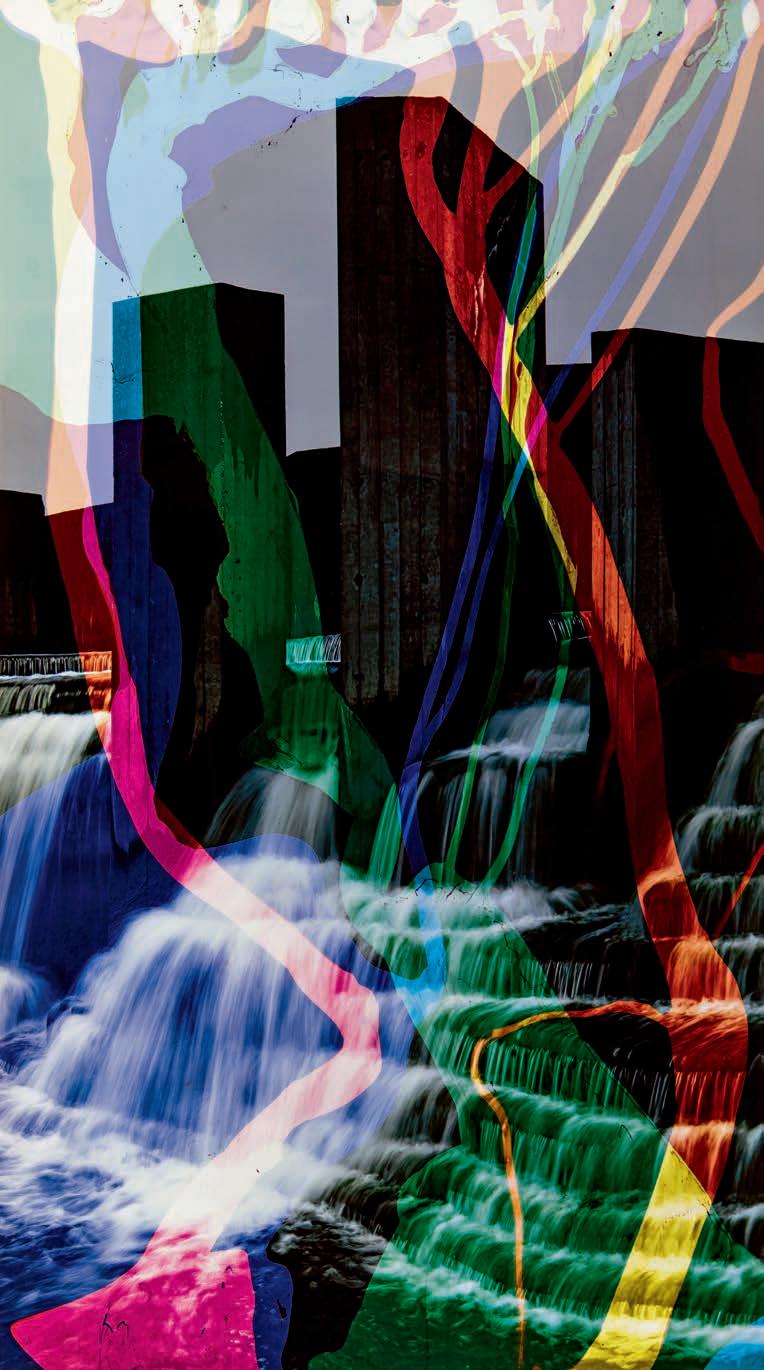

193 192
— PREVIOUS PAGES

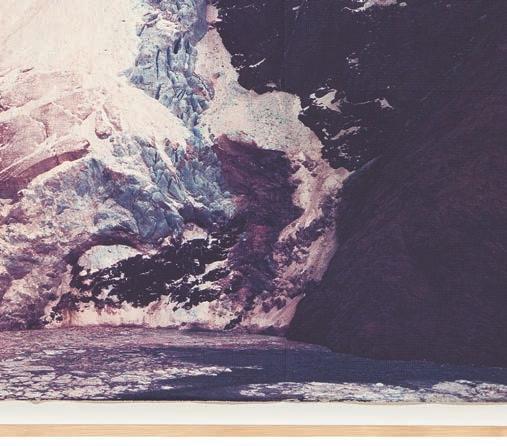
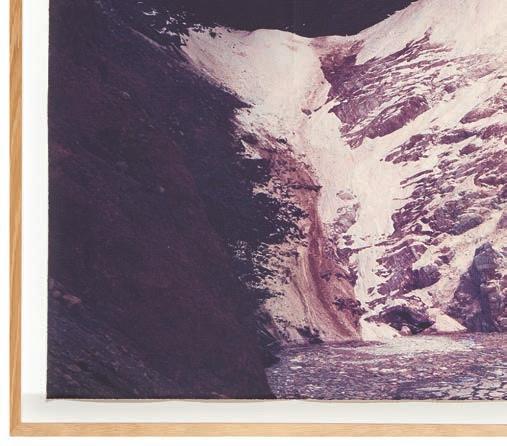




195 194
Matthew Brandt, Stepping Stone Falls 1, 2 and 3, from the Waterfalls series, 2016. Courtesy of Yossi Milo Gallery, New York.
— Lucas Foglia, Kate in an EEG Study of Cognition in the Wild from the Human Nature series (2006-2017), Strayer Lab, University of Utah, Utah, 2015. Courtesy of Michael Hoppen Gallery.
Adam Jeppesen, AR Chalten VI, from the Folded series (2014-2017) 2016.
PLATFORMS OF THE VISIBLE
New documentary approaches.
CHRISTIAN LUTZ ELDORADO
The world of casinos, from Las Vegas to Macao.
EMERIC LHUISSET WHEN THE CLOUDS SPEAK
As a counterpoint to photojournalism, the BMW artist-in-residence examines geopolitical upheavals in the Middle East.
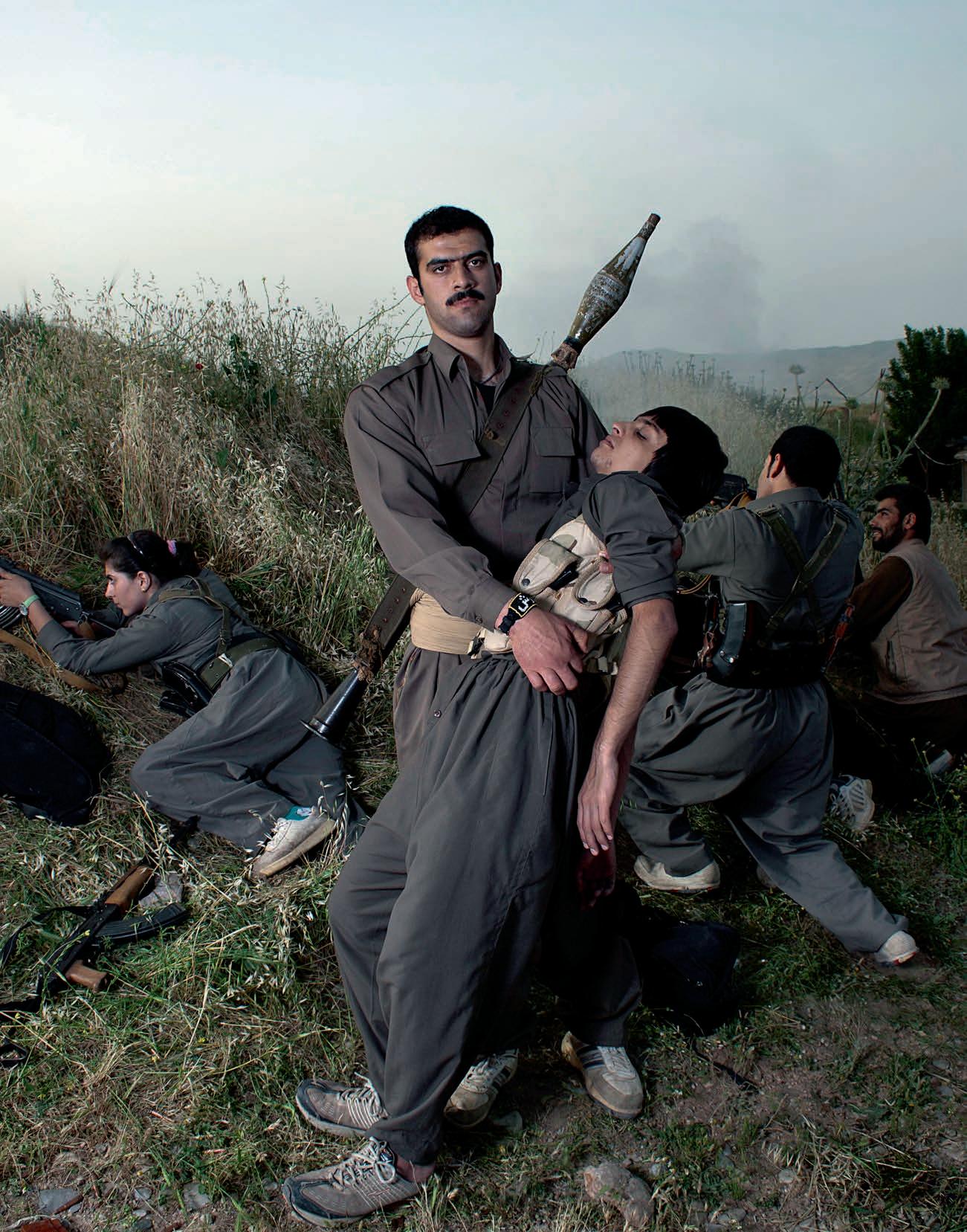 Emeric Lhuisset, Theater of War
Photograph with a group of Kurdish guerrillas, 2011. Courtesy of the artist / BMW 2018 Residency.
Emeric Lhuisset, Theater of War
Photograph with a group of Kurdish guerrillas, 2011. Courtesy of the artist / BMW 2018 Residency.
CHRISTIAN LUTZ ELDORADO
Following his immersion in the realm of power, Christian Lutz enters the world of casinos: rst in Las Vegas, for his Insert Coins series, and, more recently, in Macao for The Pearl River. The Eldorado exhibition compares one series against the other. While working in Las Vegas, the photographer soon realized that Sin City’s shimmering sets were crumbling. The city revealed its flaws and inhumanity, giving away the disillusionment of both arti cial paradises and their injurious system. Las Vegas was tainted by decline and disenchantment.

Christian Lutz decided to visit what is now called “the new Las Vegas,” where he encountered yet another reality: the overabundance of money reflected in the giant casinos, dressed in marble and gold, and the profusion of luxury stores, siren calls of consumption. In these con ned buildings, not a speck of dust can be found. Everything seems controlled, frozen in time. For the past fteen years, Macao has supplanted Las Vegas in terms of the wealth generated by the tremendous earnings of the gambling world. Once upon a time in America, now China…
Exhibition design: Pablo Lavalley.
Publications: Insert Coins, Éditions André Frères, 2016.
The Pearl River, Éditions Patrick Frey, 2019. Pigmentary prints by Patrick Schranz, Bex on Hahnemühle FineArt paper Photo Rag® Baryta 315g.

Framing by Circad, Paris.
Mounting by Deuxième Œil, Paris.
With support from the Swiss Confederation, the contemporary art fund and the Canton of Geneva, the Department of Culture and Sport and the Contemporary art fund of the City of Geneva, the Swiss Arts Council Pro Helvetia and Hahnemühle FineArt.
Exhibition venue: Maison des Peintres.
CHRISTIAN LUTZ
Born 1973, Geneva, Switzerland. Lives and works in Geneva.


In the early 2000s, Christian Lutz began working on power and its dramatization. Known as the Trilogy , this work consists of three parts, each the subject of a book: Protokoll, Tropical Gift, and In Jesus’ Name. The photographer’s approach is permeated by the notion of balance of power, whether expressed between individuals or social groups. Christian Lutz’s photographs are regularly published and exhibited in Europe and around the world. Christian Lutz is part of the MAPS agency.
Portrait of Christian Lutz: Alex Simha.
Eldorado, from the Insert Coins series, 2016. Courtesy of the artist and MAPS [all photographs].
—
199 198
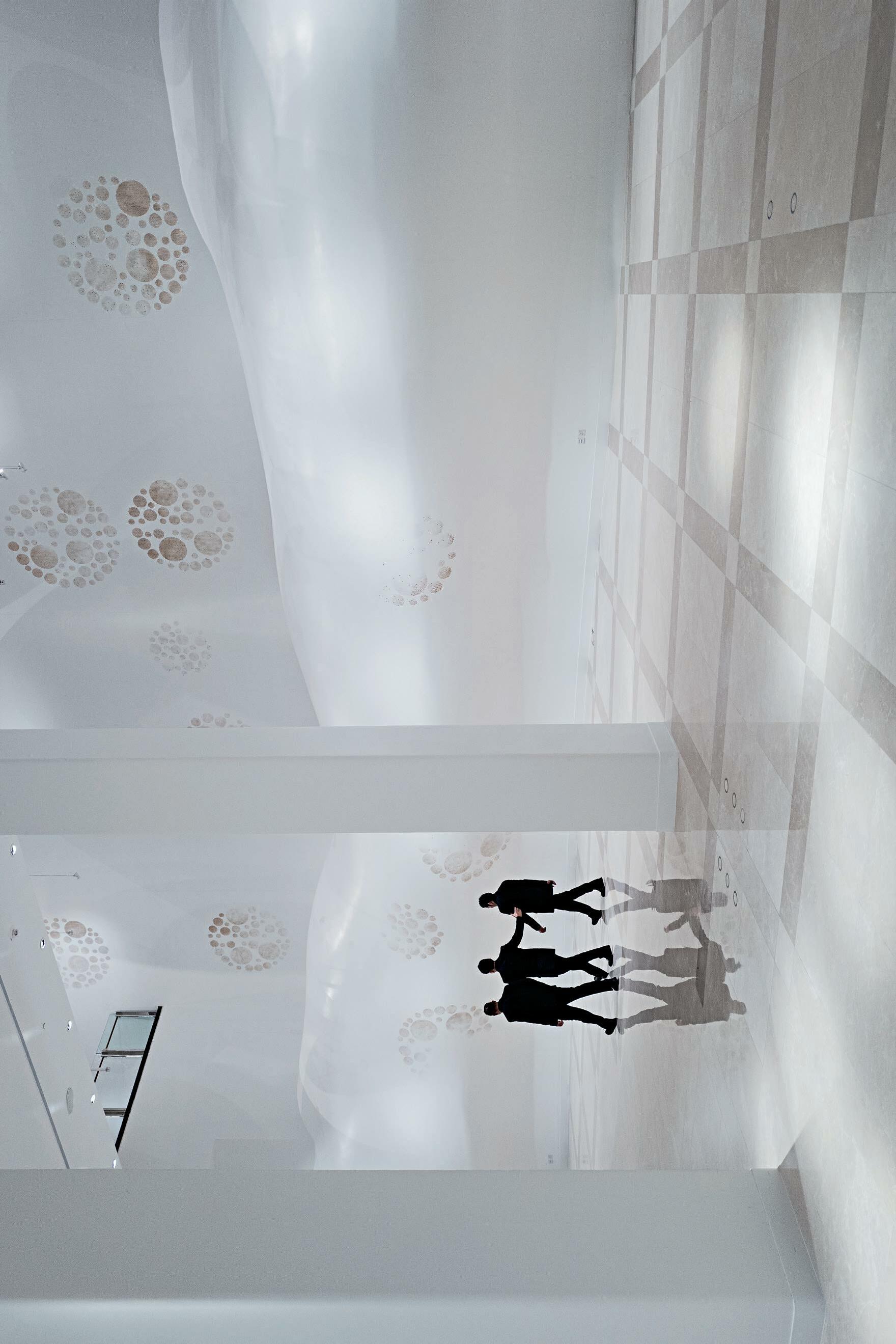

201 200 —
Eldorado, from the Insert Coins series, 2016. Eldorado, from The Pearl River series, 2019.


203 202 Eldorado, from The Pearl River series, 2019. Eldorado, from the Insert Coins series, 2016. —
OF THE BMW RESIDENCY
EMERIC LHUISSET WHEN THE CLOUDS SPEAK
Photojournalism, focused solely on events, usually presents itself as the single relevant and legitimate commentary on observed fact. Yet an isolated fact does not speak for itself; it is a series of silent appearances. The relations between facts inform us of the profound nature of things. Since the beginning of the nineteenth century, history has been written only in the form of “catastrophic events.” By nature, the speed of events and their surprise e ect seem to match with the camera’s supposedly neutral qualities. The belief in pictorial evidence rests upon this preconception. History through photography is no longer a determination but a construction.
Emeric Lhuisset manages to break this taboo of immediacy and urgency in the interest of a knowledge gained from commitment and questioning. When the Clouds Speak takes place in a disrupted space and time. Set against the backdrop of a century-old conflict, this exhibition does not seek to give the event a revelatory role. It aims to open a dialogue with the viewer, to build a joint overview. Each element, each decipherable fragment helps constitute a theatrical metaphor of a complex whole.
The Middle East clouds do not care about borders, while the long winding roads are closed by checkpoints. Emeric Lhuisset makes us think di erently about the history of a land that refuses simpli cation, opposed to analytic intrusion.

This deliberately minimalist exhibition should be approached by denying the immediacy of news. We must take our time, search for what is hidden, the time of a lm stretched out, a pamphlet reduced to the bare minimum, images rebelling against the pleasure of instantaneity.










Exposure against opacity, despite everything.

François Cheval
Exhibition curator: François Cheval. Exhibition produced by BMW Art et Culture, with support from GOBELINS, School of Visual Arts.
Publication: When the Clouds Speak co-publication BMW Art et Culture/éditions Trocadéro, 2019. With support from Hahnemühle FineArt.
Exhibition venue: Cloître Saint-Trophime.
EMERIC LHUISSET
Born 1983.
Lives and works in the Middle East and Paris, France.
Emeric Lhuisset holds a degree in art (École des Beaux-Arts, Paris), and geopolitics (École Normale Supérieure Ulm – Centre de Géostratégie/ Université Paris 1 Panthéon-Sorbonne). His work has been shown in many exhibitions worldwide (Tate Modern, London; Museum Folkwang, Essen; Institut du Monde Arabe, Paris; Stedelijk Museum, Amsterdam; Sursock Museum, Beirut; Musée du Louvre-Lens...). In 2011, he received the Paris Jeunes Talents award, and, in 2017, the Grand Prix Images Vevey – Leica Prize. In addition to his art practice, he teaches “contemporary art and geopolitics” at Science-Po Paris. In 2018, he was awarded the eighth BMW Residency.

Self-portrait of Emeric Lhuisset.
Clip from the lm of the When the Clouds Speak exhibition, 2018-2019.
Courtesy of the artist / BMW 2018 Residency [all photographs].
—
205 204
WINNER
Portrait of François Cheval: Olivier Panier des Touches.
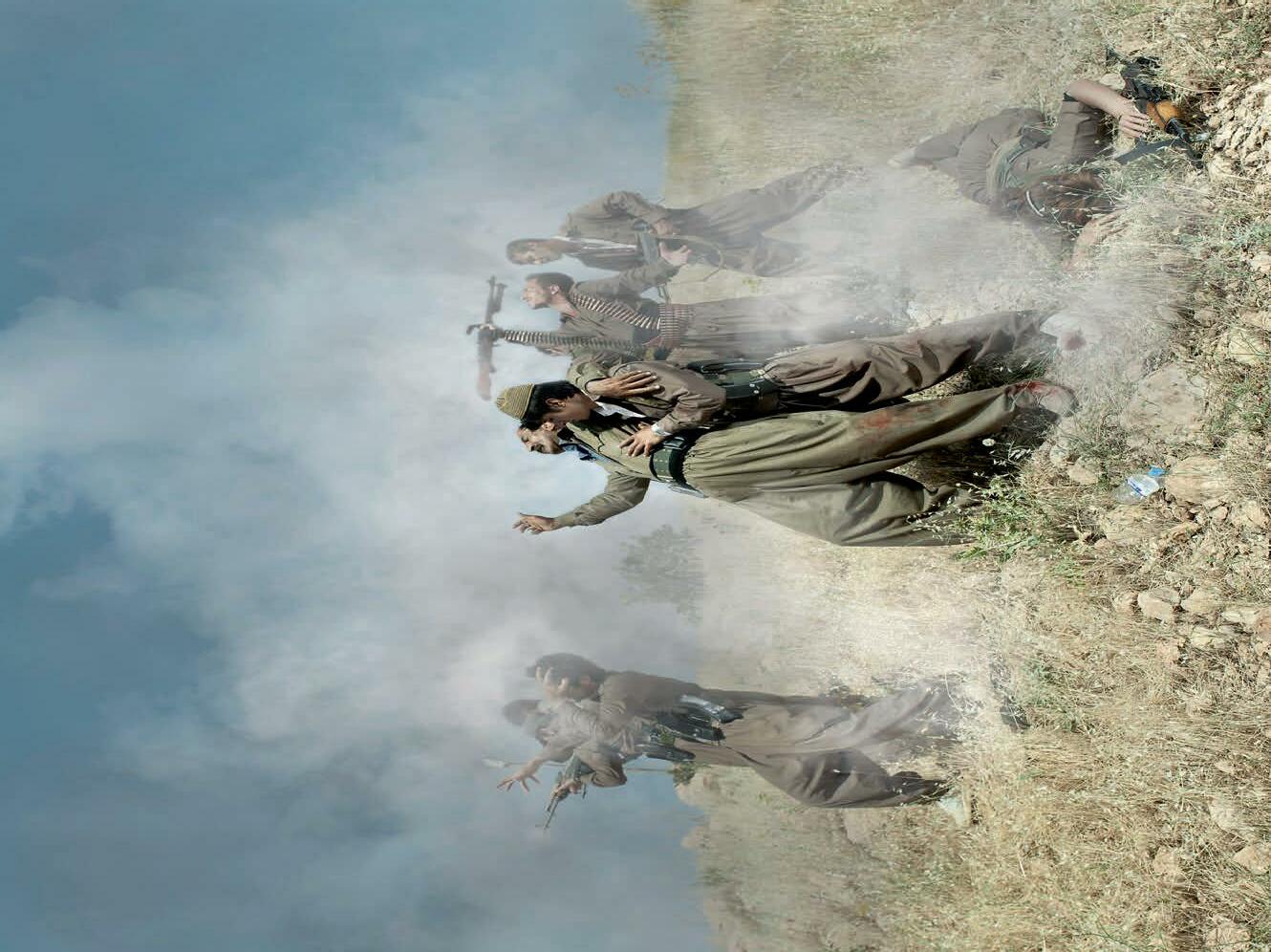
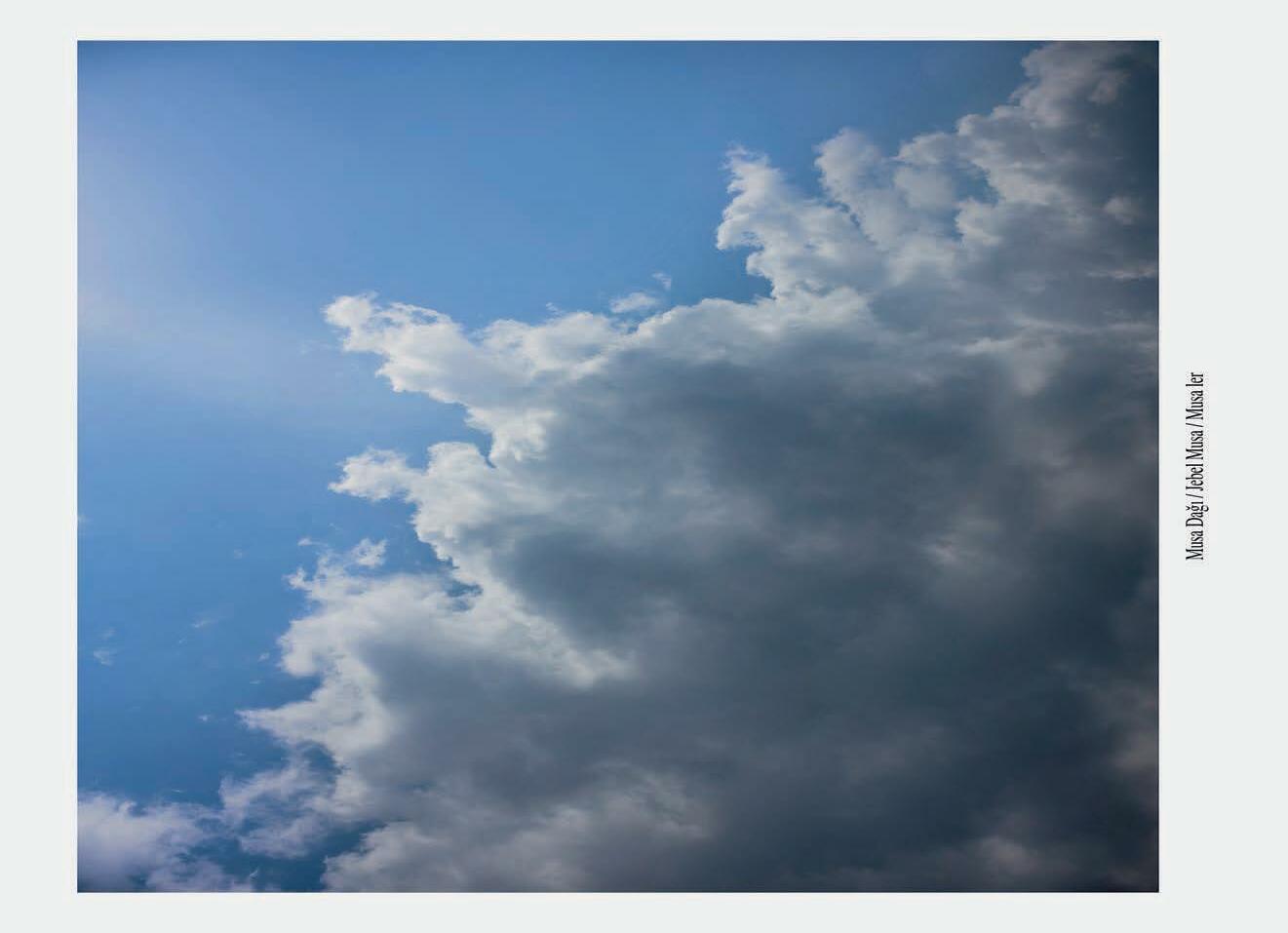
207 206
When the Clouds Speak , Musa Dagh, 2018-2019. —
Theater of War Photograph with a group of Iranian Kurdish guerrillas. 2012. —
EMERGENCES
The festival is a trailblazer. It seeks out tomorrow’s talents.
LOUIS ROEDERER
DISCOVERY AWARD
10 ARTISTS UNDER 45 PRESENTED BY 11 GALLERIES.
TOBE GALLERY
MÁTÉ BARTHA
YCOS - PROJECT
STEEVE BAURAS
CÉDRIC BACQUEVILLE GALLERY
DAVID DE BEYTER
TRACEY MORGAN GALLERY
STACY KRANITZ
LA CASTIGLIONE GALLERY
JJ LEVINE
STEPHEN BULGER GALLERY & PIERRE- FRANÇOIS OUELLETTE

ART CONTEMPORAIN
MERYL M C MASTER
TAKA ISHII GALLERY
HANAKO MURAKAMI
GALERIA DA GÁVEA
SHINJI NAGABE
LUMIÈRE DES ROSES
LAURE TIBERGHIEN
HACKELBURY FINE ART
ALYS TOMLINSON
LEI LEI ROMANCE IN LUSHAN CINEMA
A video collage mixing real and fake archives.
KURT TONG
COMBING FOR ICE AND JADE
Exploring the life of Mak, 87, who only has eight photos of herself.
GUILLAUME SIMONEAU
MURDER
A poetic tribute to Fukase and its ravens. AN UNUSUAL ATTENTION
Four graduates from the École Normale Supérieure de la Photographie class of 2019.
Guillaume Simoneau, Hell, Beppu, Ōita prefecture, Japan, 2016.
LOUIS ROEDERER DISCOVERY AWARD
Since its creation, the Rencontres d’Arles has been a force for the promotion of photography and all its players.
Galleries, often the rst to spot tomorrow’s talents, have been invited to present an artist they support and whose work has just been discovered, or deserves to be, by an international audience.
Out of 200 proposals, 10 projects were selected for exhibition. During the opening week, a jury will bestow the Louis Roederer Discovery Award on the winning artist and his or her gallery in the form of an acquisition to the amount of €15,000. The public will vote for the €5,000 Public’s Award.
With support from the Louis Roederer Foundation and Polka.
LOUIS ROEDERER DISCOVERY AWARD THE 11 NOMINATED GALLERIES GALERIA DA GÁVEA RIO DE JANEIRO, BRAZIL
Established in 2009 and run by partners and co-founders Ana Stewart and Isabel Amado, Galeria Da Gávea gives a current picture of up-and-coming contemporary Brazilian photographic works. The gallery hosts around ve exhibitions a year—both solo and group shows—that are a result of curatorial research conducted with solid theoretical grounds and aesthetic rigor. It represents 17 artists and houses a collection of other artists selected with the same rigorous aesthetic standards.
FEATURED ARTIST: SHINJI NAGABE
CÉDRIC BACQUEVILLE GALLERY LILLE, FRANCE
Cédric Bacqueville is a young gallerist who has been at work for a few years now— and would never allow exhibitions merely to accumulate, hasty and disconnected. Patiently, he follows artists in all their complexity. To his mind, showing an artwork also means rediscovering it. Constantly looking for visual discoveries, he knows how to associate ideas with forms, colors with techniques, going beyond the eld of movements and theories. An open-minded man, he considers art a way to strengthen his free and generous curiosity.
FEATURED ARTIST: DAVID DE BEYTER
LA CASTIGLIONE GALLERY
MONTREAL, CANADA
Created in Montreal in 2014, La Castiglione Gallery promotes and exhibits contemporary photography. With a prominent place given to photographers from Quebec, it represents both established and young artists taking up contemporary questions. The gallery supports photography in annual programming and active participation in Canadian art festivals.
FEATURED ARTIST: JJ LEVINE
LUMIÈRE DES ROSES MONTREUIL, FRANCE
Philippe and Marion Jacquier established the Lumière des Roses gallery in Montreuil in 2004. Their pioneering work exploring and re-evaluating anonymous photography quickly made them known to collectors and institutions in France and internationally. For fteen years, they have participated in Paris Photo, presenting the fruit of their photographic harvest. In 2017, they began a collaboration with contemporary artists whose work resonates with the collection of vintage photography that forms the basis of the gallery.
FEATURED ARTIST: LAURE TIBERGHIEN
STEPHEN BULGER GALLERY TORONTO, ONTARIO
Since 1995, the Stephen Bulger Gallery has sustained an active exhibition schedule of both historical and contemporary photographers from across Canada and around the world.
FEATURED ARTIST: MERYL MCMASTER
PIERRE-FRANÇOIS OUELLETTE ART CONTEMPORAIN (PFOAC) MONTREAL, CANADA
PFOAC represents Canadian artists such as photographers Adad Hannah, Meryl McMaster and Kent Monkman, whose works are found in private & public collections worldwide.
FEATURED ARTIST: MERYL MCMASTER
TAKA ISHII GALLERY TOKYO, JAPAN
Since 1994, the Taka Ishii Gallery has presented an exhibition program devoted to the exploration of the fundamental concepts and implications of contemporary (photo)graphic practice. The gallery has since exhibited and published the works of contemporary Japanese and foreign masters, and has also supported the development of younger artists. In 2011, the gallery inaugurated Taka Ishii Photography/Film, another exhibition space focused on the work of pre and post-war photographic masters.
FEATURED ARTIST: HANAKO MURAKAMI
TOBE GALLERY BUDAPEST, HUNGARY
TOBE Gallery focuses on contemporary photography. The gallery opened in October 2013 with the aim of presenting Hungarian and Ibero-American artists whose idea of experimentation includes an ambition of high-quality artistic expression. TOBE Gallery exhibits and represents both recognized and emerging artists.
FEATURED ARTIST: MÁTÉ BARTHA
TRACEY MORGAN GALLERY ASHEVILLE, NC, UNITED STATES
Tracey Norman-Morgan has over twenty years of gallery, research and curatorial experience, including over a decade specializing in photography-based artwork. In 2017, she opened her own gallery, emphasizing contemporary photography, works on paper, painting, sculpture and installation by emerging and established artists from the United States and abroad.
PRESENTED ARTIST: STACY KRANITZ
HACKELBURY FINE ART LONDON, UNITED KINGDOM
Now celebrating its 20th anniversary, HackelBury Fine Art deals in 20th and 21st-century artworks from a carefully selected stable of artists with a focus on photography. Represented artists include: Alys Tomlinson, William Klein, Garry Fabian Miller, Doug & Mike Starn, Ian McKeever, Katia Liebmann, Oli Kellett and Nadezda Nikolova-Kratzer, among others.
FEATURED ARTIST: ALYS TOMLINSON
YCOS-PROJECT PARIS, FRANCE
YCOS-Project is a production agency which supports artists by working beside them to curate, produce and develop their projects. The agency backs contemporary art, mainly in the elds of photography and visual arts. YCOS-Project encourages artists from diverse backgrounds to enter into dialogue.
FEATURED ARTIST: STEEVE BAURAS
211 210
ARTIST PRESENTED BY TOBE GALLERY MÁTÉ BARTHA KONTAKT








“Contact”, a word describing physical connection, is also used to describe an encounter between opposing military forces. The Kontakt series is a visual exploration of militarythemed summer camps organized by the Hungarian NGO “Home Defense School.”

Teenagers aged 10 to 18 are taught discipline, patriotism and the use of airsoft weapons (sport-use replicas of real guns), while learning survival skills in the wild. They camp under the stars, guard the re, hike, sing together and struggle with push-ups. Strong friendships are formed, and, at the cusp of puberty, adolescents make their rst contact with expectation, responsibility and the other sex. The camp’s organizers believe the importance of the simple things
in today’s society—nature, hot food, the value of community— can only be imparted through a militaristic approach.
Bartha spent a year and a half with the camp, facing more di icult questions as time went on. This selection of images addresses our attitude towards violence and war, their place in our society, and asks us to question our principles and the limits of our tolerance. The exhibition tells the story of a community from a personal but distanced point of view.
Exhibition curator: Flóra Mészáros
Exhibition venue: Ground Control.
MÁTÉ BARTHA
Born 1987, Budapest, Hungary. Lives and works in Budapest.




Máté Bartha works in the elds of photography and documentary lm. He obtained his master’s degrees at the Moholy-Nagy University of Arts and Design and the University of Theater and Film Arts, both in Budapest.
After receiving the National Scholarship of Hungary for photographers, he self-published his rst book, Common Nature (2014). With his most recent project, KONTAKT he received the Capa Grand Prize Fellowship (2017) and the Robert Capa Grand Prize Hungary (2018).
Self-portrait by Máté Bartha.
—
213 212
Flóra Mészáros
Portrait of Flóra Mészáros: Máté Bartha.
Kontakt IV, Hungary, 2018 Courtesy of the artist [all photographs].
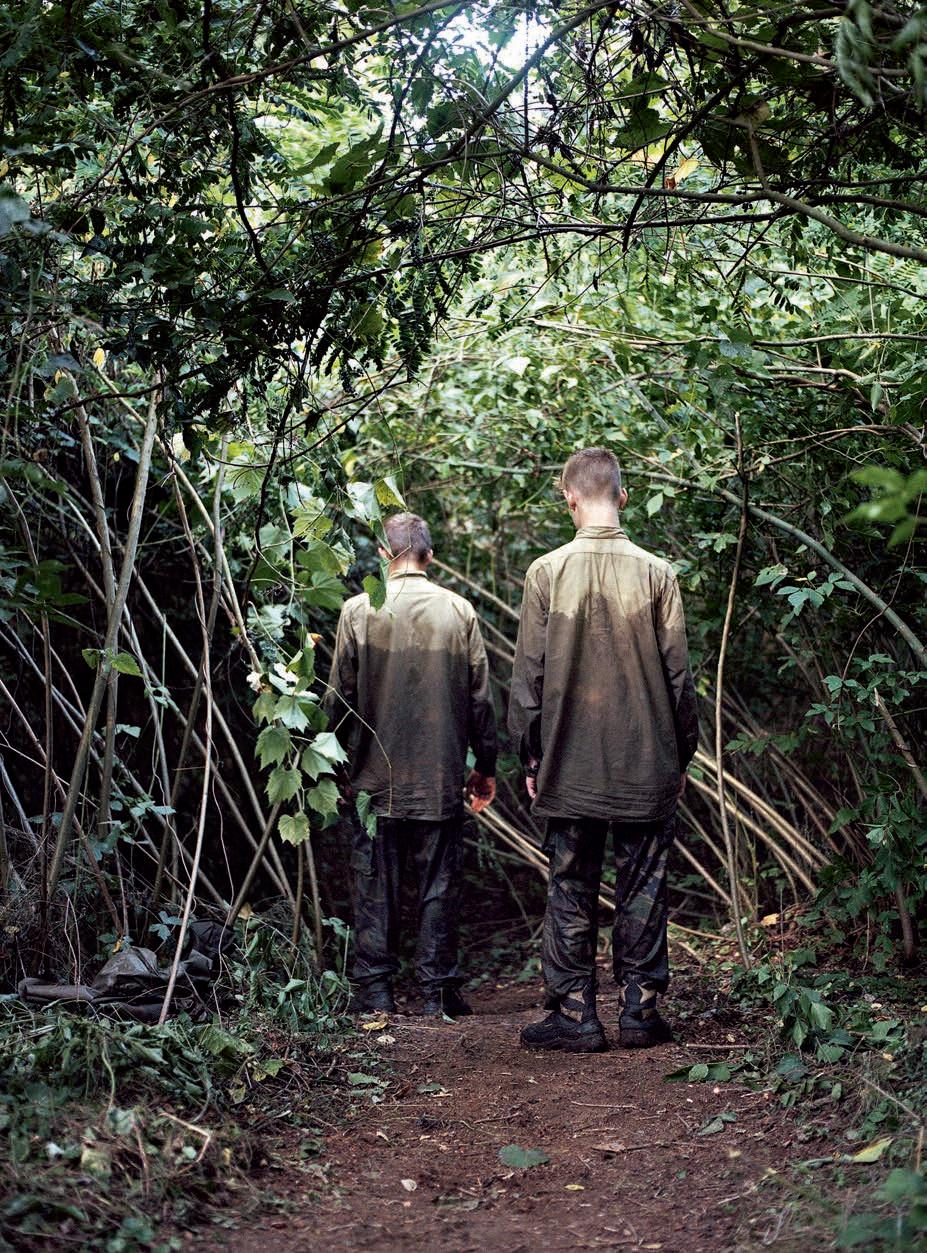

215 214 — Kontakt
Kontakt
XII, Hungary, 2018.
XLIII, Hungary, 2018.
ARTIST PRESENTED BY






YCOS-PROJECT STEEVE BAURAS WHITE DREAMS EXTENDED
In White Dreams Extended, the black surface of each image may be thought of as a receptacle for our emotions, challenging the spectator on the in nite variability of perceptions which can be contained in an image. Steeve Bauras uses the image to show its ability to reinvent itself depending on the context.
By distorting documentary footage from the Second World War, the artist gives new life to these archives and confronts us with our tendency to consume images without assessing them. This process aims to question our relationship with reality, where redoing and reinterpreting are at stake. Each image becomes a cult object encouraging meditation.

We are caught by the dichotomous nature of a work that fluctuates between the original image and its copy, between reality and ction. We move from one echo to another, according to visual associations decided by the viewer facing the exhibition. The black objects or characters seem to emerge from the darkness and reveal the tonal richness of what is commonly considered a non-color.
Exhibition curator: Yves Chatap.
Exhibition venue: Ground Control.
With no particular scale, these mysterious or fragmentary images of seemingly ageless objects become symbols of eternity.
It is up to each visitor to not only detect their emotions and their understanding of our society, but also to make up a new space-time, through the reflection of a part of their body and by facing these images from another era. Furthermore, to understand the survival that is implicitly concealed by the return of the trauma, as an act of resistance which would seek, above all, to save the spectator from his own annihilation.
By bringing together this unthinkable horror and this self-narrative, the artist invites the spectator to embark on a quest for truth from which the transformation of the traumatic reality contained in these images will begin.
Yves Chatap
STEEVE BAURAS
Born 1982, Fort-de-France, France. Lives and works in Paris, France.






In 2007, Steeve Bauras, who graduated from the École des Beaux-Arts in Paris, traveled across Europe, Latin America and Africa exploring underground art scenes. New human experiences based on his investigation of the world enrich his work, which probes memories and connections to places in order to reveal the impact of artistic creation on our conception of reality. He has had shows at the Galerie des Filles du Calvaire, Paris (2018), Galerie Felix Frachon, Brussels (2018), Havana Biennale (2016), Rencontres de la photographie de Bamako (2015), Volta New York (2014), SAVVY Contemporary, Berlin (2013), and Galerie Le Manège, Dakar (2013).
Portrait of Steeve Bauras: courtesy of the artist.
217 216
Portrait of Yves Chatap: Karine@L’atelier & beyond.


219 218 — Untitled n° 09 Paris, 2016. Untitled n° 12 2016. — PAGE 217 Untitled n° 04, 2016. Courtesy of the artist and YCOS-Project [all photographs].
ARTIST
PRESENTED BY CÉDRIC BACQUEVILLE GALLERY DAVID DE BEYTER THE SKEPTICS: RELICS OF THE TECHNOLOGICAL GODDESS



The Skeptics: Relics of the Technological Goddess is a work in progress combining lm, photography and objects. It treats the subject of scienti c ufology as practiced by a small community of a hundred passionate amateurs in Spain. Their approach to reality and perception has the ambition of dispelling the modern myth of UFOs. In the aesthetics of disappearance and the opacity of images, photography and its physicality become the object of speculation, serving here to deconstruct a great contemporary narrative.
The exhibition unfolds in four interconnected segments. The rst is a video installation of 16 mm images shot from the heights of Teide, on the island of Tenerife. The second is an archive/document that plays on the ambiguity of register in a picture. It focuses on flash blindness: a phenomenon of perception used in scienti c ufology to debunk sightings. The third explores the technology that is used. The last is a form of photographic docu ction that reenacts scenes from accounts by people who claim to have seen UFOs crash.
Exhibition curators: Pierre Hourquet and Anna Planas. Exhibition venue: Ground Control.
In its documentary, sociological and reflexive approach to the image, The Skeptics should be seen as an immersive space that prompts us to meditate on the obsolescence of a belief. Odd landscapes, obsolete thoughts and outmoded technology are relics of an imaginary world in ruins, reflecting the mood of our post-truth times. Jean Rouch stated “The role of anthropology is to put worrisome objects into circulation.” By focusing on the successive waves of sightings in the 1980s-90s, the exhibition reflects on the loss of utopian beliefs and the question of progress. This mythology, which scienti c ufologists try to deconstruct, is explored in depth—the control of our reality by the goddesses of technology.

DAVID DE BEYTER
Born 1985, Roubaix, France. Lives and works in Tourcoing, France.









David De Beyter’s approach to photography is both conceptual and documentary. He explores the boundaries between reality and ction, and his work melts together di erent registers—present, past, and future. His artistic work is mainly based on landscape practice; through installations he questions the various statuses of the image. There is an anthropological side to what De Beyter does. Although present in his work since the beginning, it flourished with the Big Bangers project. On this occasion, he opens up his artistic work to moving images and sculpture, thus re ning his thought and artistic propositions in relation to the notion of obsolescence.
Portrait of David De Beyter: Alexis Gicart.
221 220
Portraits of Pierre Hourquet and Anna Planas: courtesy of the curators.
— NEXT
— Magical Place III (La Orotava) 2018.
PAGES
Magical Place (Las Canadas) 2018.


223 222
ARTIST PRESENTED BY TRACEY
MORGAN GALLERY STACY KRANITZ
AS IT WAS GIVE(N) TO ME
For the past ten years, I have been working on a project called As It Was Give(n) to Me. This collection of images traces exploration and extraction in the Appalachian region of the United States.
Since the late 19th century the Appalachian region has been devastated by the coal industry, which took valuable resources from the land, leaving people who lived there impoverished. In the 1960s a war on poverty was declared. The government decided it would put an end to poverty in America. They chose Appalachia as the poster child for the war. Photographers descended on Appalachia to make images that would help unite Americans around the e ort to improve the lives of a destitute and struggling people. Instead, the photographers o ered a simplistic and super cial image of poverty that has haunted the Appalachian people ever since. While making this work, it became clear that I was part of a legacy of photographers utilizing a medium that empowered a problem. How can photographers represent a region whose people have been failed by the medium?


Publication: As It Was Give(n) to Me, Twin Palms, 2019.
Exhibition venue: Ground Control.
I began by reckoning with the fact that I had come to Appalachia with a fantasy of what I wanted it to be. I realized this fantasy undermined my desire to provide an objective portrayal, because objectivity in documentary photography is its own kind of fantasy. That work became about the tension between those two desires. These photographs do not claim to be an authoritative view of the region. They do not illustrate a certain type of injustice in hopes of remedying it. I’ve come to Appalachia to open up a new kind of narrative that examines our understanding of culture and place in a way that is poised between notions of right and wrong.
STACY KRANITZ
Born 1976, Frankfort, KY, United States. Lives and works in Smithville, TN, United States. Working within the documentary tradition, Stacy Kranitz makes photographs that acknowledge the limits of photographic representation. Her images create an expanded sense of authorship and accountability in which all parties (including the viewer) are complicit in the representational act as a false, and yet, ultimately, satisfying and seductive construct. Her images do not tell the “truth” but are honest about their inherent shortcomings, and, thus, reclaim these failures (exoticism, ambiguity, fetishization) as sympathetic equivalents to more forcefully convey the complexity and instability of the lives, places and moments they depict.

225 224
Portrait of Stacy Kranitz: Benjy Russel.
Feds Creek Kentucky, 2011. Courtesy of Tracey Morgan Gallery [all photographs]. Grundy, Virginia, 2012. —

227 226 — Short Mountain Tennessee, 2012.
ARTIST PRESENTED BY LA CASTIGLIONE





GALLERY JJ LEVINE FAMILY
I have spent the past ten years photographing my relationships with my friends, lovers and siblings in my LGBTQ community in Montreal. Each portrait is taken in a di erent domestic setting, characterized by saturated colours and discursive backgrounds. Using professional lighting and a medium or large format lm camera, I create a studio within each home environment, and intentionally place every object that appears within the frame. These settings are intended to raise questions regarding private space as a realm for the development of community and the expression of genders and sexualities that are often marginalized within the public sphere. This intimate portrait series explores the relationship between photographer and subject, and exposes the strong element of trust that exists between myself and my friends and family as they appear in each photograph.

As my LGBTQ community of friends has entered a new phase of life, now mostly in our thirties, several of us have started to have children. My images have followed alongside this trajectory, and I have begun to document the ways in which children t into and shift our lives and realities. I call this new incarnation of my ongoing series Family.
Family is about radically reimagining parenthood; it’s about my relationship to the photographic medium and its capacity to commemorate the people that I love as our lives shift in harmony. I hope to contribute a visual representation of alternative, queer, and trans family structures, as I rarely nd images that reflect my life choices and those of the people around me.
JJ LEVINE

Born 1984, Montreal, Canada. Lives and works in Montreal.
JJ Levine is an artist working in intimate portraiture. Levine holds a Masters of Fine Arts in Photography from Concordia University. Levine has been honored with several awards and received grants from the Conseil des Arts et des Lettres du Québec and the Canada Council for the Arts. His work has been exhibited at galleries and art festivals across Canada, the United States, and Europe. As well, Levine’s projects AloneTime and Switch have been featured in art magazines, journals, and newspapers internationally.
In 2015, Levine self-published two artist’s books: Queer Portraits (2006–2015) and Switch. Levine’s artistic practice balances a radical agenda with a strong formal aesthetic.
229 228
Portrait of JJ Levine: Je rey Alexander Torgerson.
Exhibition venue: Ground Control.
Oliver2015 —





231 230
— Handy and Laura Boo 2015 Aubrey 2018 Naomi in Boston 2017 Harry, Joah and JJ 2018
— Harry Pregnant 2015.
ARTIST PRESENTED BY STEPHEN BULGER GALLERY & PIERRE-FRANÇOIS OUELLETTE ART CONTEMPORAIN MERYL M C MASTER AS IMMENSE AS THE SKY





The way we experience the passing of time shapes our relationship to our immediate world. My awareness of time comes from an overlapping of two distinct approaches—one a linear path that extends in both directions from the present, the other recurrent and cyclical. This intersection of world views has been part of my upbringing, a result of being born into a family both Western (British/Dutch) and indigenous (Plains Cree).
Contemplating time and the countless cycles of life that have recurred around the ancient mistassini (monoliths), sputinas (buttes), wiyacahk (canyons), and ayeakow awacha (dunes) of Canada led to the development of As Immense as the Sky. These thoughts left me in a state of wonderment, but also stirred within me a fearful apprehension of our permanent and collective impact upon our beautiful world.
To confront this fear, I sought wisdom in the places of ancestral life, listening to the truths of relatives, elders, friends and peoples who have traversed this land before me. At the social, cultural and environmental contact zones of my indigenous and European ancestors, I set out to study and collect their knowledge, and to animate and re-tell it in a personally transformative process through photography.
Many places I visited hold particular meaning for my direct ancestors as sites of signi cant moments in their lives; I was drawn to the sites of ancient stories across the central and southern Canadian Prairies and to the shores of early settlement in the Canadian Maritimes. My aim was to reconnect with those who came before me as a way of introducing myself to the land on which they lived.
I came to see these landscapes as immense time capsules of buried knowledge. As Immense as the Sky is about walking these ancient paths, experiencing the diversity of panoramas and learning about my ancestors’ wisdom.
The resulting images are a blend and collapse of time into the present. The stories of kayas (long ago) and the foreboding whispers of the future intertwine my body with the land, in the hope that we all maintain a long-term ecological equilibrium with the world around us.

MERYL M C MASTER
Born 1988, Ottawa, Canada. Lives and works in Ottawa.
Meryl McMaster holds a BFA from OCAD University (2010). She received the Scotiabank New Generation Photography Award, REVEAL Indigenous Art Award, Charles Pachter Prize for Emerging Artists, Canon Canada Prize, and the OCAD U Medal. Her work has been shown at the National Gallery of Canada, Ottawa, Art Gallery of Ontario, Montreal Museum of Fine Arts, Museum of Contemporary Canadian Art, Toronto, and the Smithsonian’s National Museum of American Indian, Washington.

233 232
Portrait of Mery McMaster: Neeko Paluzzi.
Meryl McMaster is nominated for the Prix de la Photo Madame Figaro Arles 2019. Exhibition venue: Ground Control.
Cartography of the Unseen, 2019. Courtesy of the artist, Stephen Bulger Gallery and Pierre-François Ouellette art contemporain [all photographs].
—


235 234 — My
Destiny is Entwined With Yours 2019. From a Still Unquiet Place 2019.
ARTIST PRESENTED BY THE TAKA ISHII GALLERY



HANAKO MURAKAMI CONCEPTION
Here comes photography. Before the rst appearance of a technological image came the emergence of its idea: its conception. By exploring the period of its invention, Hanako Murakami o ers a true epistemology of photography.
At its core, the exhibition evokes the rst hundred and thirty-three experiments known to be by Niépce, present in their storage boxes and laid on a transport crate. Rather than presenting a didactic body of knowledge—which is now available thanks to art history— Hanako Murakami gives a tangible dimension to this absence of any material proofs of the medium’s origins.
The inventories produced by the artist take on a systematic and rational appearance, using both obsolete techniques and modern technology, thus transcending their material aspect. The sound of the turning pages of the original 1839 book through which Daguerre unveiled his invention and its process is associated with a list, printed in lead type, of all the names representing what was not yet called “photography,” just after its birth.

An electron microscope examination of a daguerreotype reveals the rst contact between a sensitive plate and light. By sweeping the object, the electron beam alters it irreversibly. According to the ancient Greeks,


Exhibition curator: Pascal Beausse.
Exhibition venue: Ground Control.
this melting point comes from both a chemical and metaphorical burning. One look literally burns the “Other,” that which is represented.


With Conception, Hanako Murakami brings up to date the mythical potential of the beginnings of photography. Each element in the show helps to o er a de nition as a visual meeting place, on a surface, with the world. By combining a scopic journey into the depths of the matter’s physical truth with a poetic evocation of its very essence, the artist creates a mental image in our mind—an image that all photographs contain in their latency.
Pascal Beausse
HANAKO MURAKAMI
Born 1984, Tokyo, Japan. Lives and works in Paris, France.
After receiving her MA from the Tokyo University of the Arts, Hanako Murakami moved to France, where she joined Le Fresnoy, national studio of contemporary art. Many of her works are based on in-depth research into historical media, such as alternative photographic techniques or letterpress printing.
In this connection, she was granted a 2018 residency at the Getty Research Institute (Los Angeles) and Georges Eastman Museum (New York). Her major exhibitions include VOCA, Ueno Royal Museum, Tokyo, 2017; Ma Samaritaine, Paris, 2017; and also solo exhibitions in Tokyo such as ANTICAMERA (OF THE EYE), Taka Ishii Gallery, 2016, and The Capital Room, Gallery αM, 2015.




Portrait of Hanako Murakami: Nobuhiro Shimura.

237 236
Portrait of Pascal Beausse: Harcourt.
The Immaculate #D4. —

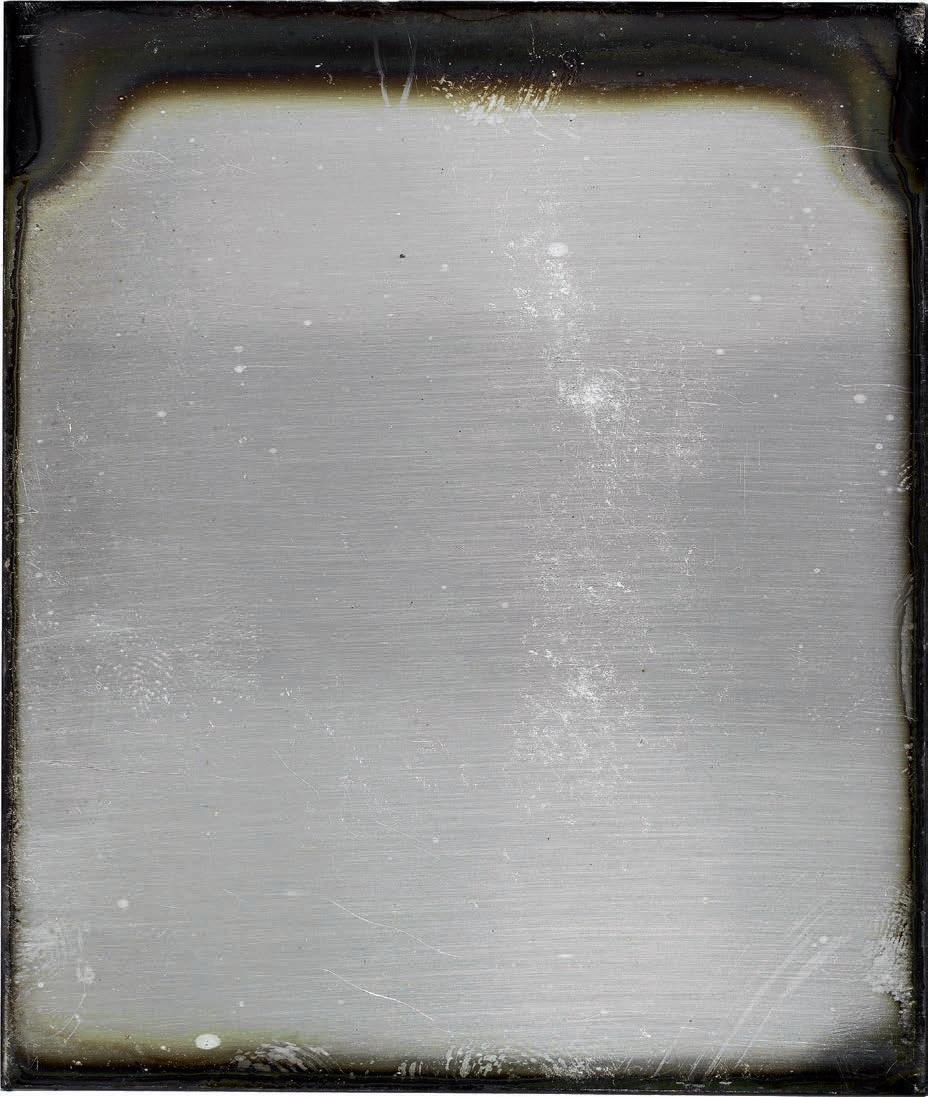
239 238 —
The
Immaculate #D5. The Immaculate #D6.
ARTIST PRESENTED BY GALERIA DA GÁVEA SHINJI NAGABE BANANA REPUBLIC







Recent worldwide events seem to have suspended our own reality. Logic can no longer be found in speeches, advertising campaigns, or opinions. Many arguments either twist or simplify reality, impacting sustainable development, the movement of vulnerable populations, and many other issues that should be discussed in depth, not through slogans or poorly crafted proposals.
Banana Republic represents this state of political and social disillusionment and disenchantment. The surrealist realism of the series is based on real facts, extrapolated to the same level of fancy that can be found in recent speeches. The state that Shinji Nagabe has created is under the yoke of a cruel populist dictator. His people remain blind or build a social mask in order to be accepted by this controlled society, which will eventually reveal its unacceptable aspects. The banana is used to blind and censor, while resistance groups use it to make weapons and build bombs. This visceral response leads to guerilla warfare between the rebels and the retrograde and conservative government.
Exhibition curator: Felipe Abreu.
Exhibition venue: Ground Control.
The social and political transformations that have recently been felt in many countries are reflected in Banana Republic: violence, extreme religiosity and reduced individual freedom. By portraying this world through satire, Nagabe shines a light on its contradictions, and on the connection with a reality that we experience — or are afraid to. Our immersion in this ctive republic and its harsh tropical fantasy makes us reflect on the role we play in the decisions made within our communities and the ones we may have to make in the future.
SHINJI NAGABE
Born 1975, Terra Roxa, Brazil. Lives and works in Paris, France.
Shinji Nagabe is a journalist who has been working with photography projects since 2004. He has exhibited in solo and group shows, mainly in France, Spain and Brazil. His awards include the Prix Maison Blanche 2018 (Marseille, France); Portfolios Coup de Cœur de Sylvie Hugues 2018, Maison Européenne de la Photographie (Paris); and the Gávea Photography Prize 2017 (Rio de Janeiro, Brazil).
—

241 240
Portrait of Shinji Nagabe: courtesy of the artist.
Portrait of Felipe Abreu: courtesy of the curator.
Queimada [Burned], São Paulo, 2018.
— Objetos apreendidos n° 12 [Seized Objects n° 12], São Paulo, 2018.


Objetos apreendidos n° 24 [Seized Objects n° 24], São Paulo, 2018.


Objetos apreendidos n° 5 [Seized Objects n° 5], São Paulo, 2018.
Objetos apreendidos n° 17 [Seized Objects n° 17], São Paulo, 2018.
— Homem-bomba [Suicide Bomber], Paris, 2018

243 242
ARTIST PRESENTED BY LUMIÈRE DES ROSES
LAURE TIBERGHIEN SUITE…



Just as no sentence can be imagined without a subject, it is hard to understand how a photograph can be made without a camera.
We are prisoners of a grammar that often conditions our way of seeing.

Laure Tiberghien’s work, which follows a thread of experimentation leading back to the origins of photography, is not, in any way, based on a fascination with technology. An image obtained without a camera, by combining chemicals, light, and time, reveals the material world, here shedding light on the epidermis of things — not their visible skin but their perceptible surface.
Laure Tiberghien’s images capture the visible world’s transformations, helping us to understand movement and change. Each of her pieces is a skillful composition where colors are tested, arranged and laid out as though on a palette in order to achieve the desired relationships between them. The colors’ brightness and nuanced appearance depend on the papers’ sensitivity. For example,
Cibachrome prints by the artist, at Cadre en Seine Choi, Paris. Framing by Circad, Paris.
Exhibition venue: Ground Control.
Cibachrome gives them a characteristic wet look, as though they had just come out of water, producing very dense colors. Chromogenic metallic papers look more electric, while classic glossy prints are softer and less reflective. The desired end result determines the choice of material.
All these processes, which necessarily lead to one-o pieces, require hours of darkroom work, the use of lters cut out like negatives in order to achieve the complementary color, and the use of devices that have nothing mechanical about them and allow a controlled image to be obtained while sometimes leaving room for accident and chance.
LAURE TIBERGHIEN
Born 1992, Paris, France. Lives and works in Paris.


Laure Tiberghien is a 2016 graduate of the École Nationale Supérieure des Beaux-Arts de Paris. In 2017, she participated in the Felicità 17 exhibition at the Beaux-Arts and the group exhibition Agora organized by the 2a1 collective in the Galerie R-2. In November 2017, invited by Françoise Paviot, she had her rst solo exhibition, La Société Lumière, at the Espace Van Gogh, Arles. She also co-founded the In Plano studio with eleven other artists on the Île-Saint-Denis.
In 2018–2019, she exhibited at the Ar[T]senal, Dreux, with six other photographic artists.
Portrait of Laure Tiberghien: courtesy of the artist.

245 244
Gilles A. Tiberghien
Ray #11, 2019. Courtesy of the artist and Galerie Lumière des Roses [all photographs]. —
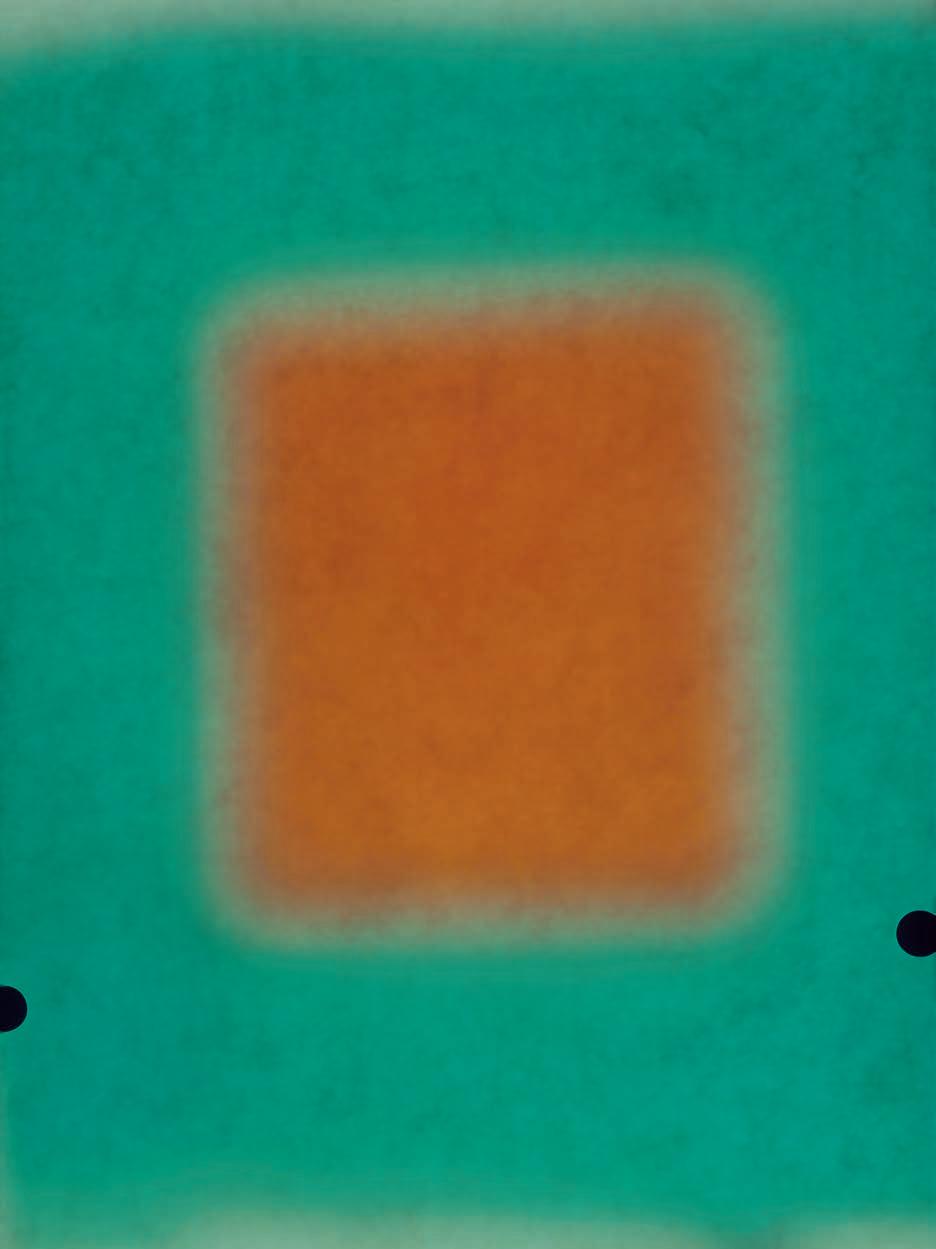

247 246 — Ciba #13, 2019. —
,
Ray #1
2018.
ARTIST
PRESENTED BY
HACKELBURY FINE ART ALYS TOMLINSON THE FAITHFUL
The Faithful explores the life of Vera, an Orthodox Christian nun whose portrait is a central and powerful work in the Ex-Voto series. Over several years, Alys Tomlinson explored Christian pilgrimage sites in Europe, photographing pilgrims, landscapes, objects and markers left behind at these sacred sites. Images from Ex-Voto provide a broad background to The Faithful. The exhibition of both photographs and lm gives a deeper context to the portrayal of living a life of faith.
Tomlinson met and photographed Sister Vera at Holy Mount Grabarka in Poland. Tomlinson says “There was something unique about how she confronted the camera.” Vera’s name means “faith” in Russian and was given to her when she began her life in the convent. Tomlinson travelled to Belarus to stay with Vera at the Saint Elisabeth Convent, where Vera has lived for nearly 20 years.

Shot in black and white in a lyrical, documentary style, the lm Vera takes us from the hidden, religious

Publication: Ex-Voto, GOST Books, 2019. Wallpapers by Picto, Paris.
Alys Tomlinson is nominated for the Prix de la Photo Madame Figaro Arles 2019.
Exhibition venue: Ground Control.
world of the convent to rural farmland, where men and women facing personal and social di iculties live and work. It is here that Vera expresses her deep connection with the horses that she looks after as part of her obedience (religious duty). The lm is narrated by Vera as she tells her story of nding faith as a young woman and its emotional and spiritual impact on her.
The Faithful combines portraits of the nuns at the convent; photographs taken at Christian pilgrimage sites in France, Ireland, and Poland; and stills and moving image from the Vera series.
ALYS TOMLINSON
Born 1975, Brighton, United Kingdom. Lives and works in London, United Kingdom.
Alys Tomlinson studied English literature and communications at the University of Leeds and photography at Central Saint Martins. She recently completed a MA (Distinction) in Anthropology at SOAS, University of London. Tomlinson is most interested in the relationship between people and places, exploring themes of environment, belonging and identity. Her work has been included in over twenty international exhibitions, most recently at Somerset House and the National Portrait Gallery, London. She was named Sony World Photographer of the Year 2018 for her Ex-Voto series, which was published by GOST Books in 2019.
249 248
Portrait of Alys Tomlinson: Mark Oliver.
Untitled 02, from the Ex-Voto series (2016-2018). Courtesy of the artist and HackleBury Fine Art, London. [all photographs]. —
— Untitled 07, from the Ex-Voto series (2016-2018).

Untitled 10, from the Ex-Voto series (2016-2018).

Untitled 01, from the Ex-Voto series (2016-2018).

251 250
LEI ROMANCE IN LUSHAN CINEMA

This project grew out of an old photograph of the artist at Lushan Mountain in 1988. There’s nothing of the real Lushan in the photograph taken in a photo studio. Threeyear-old Lei Lei and his mother are sitting in a cardboard car in a reconstituted Chinese traditional landscape. In the distance are green mountains, houses, pine trees and mist. In the bottom right-hand corner of the photograph are the words “Travel in Lushan, 1988.”
Using black-and-white amateur photos from flea markets, postcards, propaganda images from the Mao era, screenshots from the film Romance on Lushan Mountain (the first romance film made after the Cultural Revolution, in 1980), and photos turned up in Web searches, Lei Lei creates a video collage mixing individual and collective memory. While reproducing a family memory of Lushan Mountain in 1988, the artist brings up other meanings of the site: a prominent tourist attraction (UNESCO World Heritage Site), a place of historical significance made famous by Mao Zedong, and the setting of a romantic blockbuster watched by 400 million Chinese and played daily in a Lushan cinema named after the movie. Lei Lei rebuilds the Lushan cinema in Arles to screen his own montage. He invites us to enter a space of personal memory, an animated fiction made of diverse photographic materials, to watch images from our own dreams.
The artist’s nostalgia serves as the starting point of a quest for truth regarding history, family and personal identity. It is also a reflection on the image and the status of the author. Which is more signi cant nowadays: the photograph as work of art or as archival image? Which is more important: the picture or the process of image production; the fact that an image is viewed or the context in which it is viewed?
Exhibition curators: Bérénice Angremy and Victoria Jonathan. With the cooperation of Dong Bingfeng.
Winner of the 2018 Jimei x Arles Discovery Award.
Exhibition venue: Atelier des Forges, Parc des Ateliers.
LEI LEI
Born 1985, Nanchang, China. Lives and works in Beijing, China, and Los Angeles, United States.


















An alumnus of Tsinghua University in Beijing (2009), Lei Lei has won awards at festivals around the world for his experimental animation work.
Lei Lei’s work has been featured in exhibitions throughout East Asia, Europe, North America and Australia. In 2017, he was enrolled as a faculty member of CalArts Experimental Animation program in California.
In 2018, Lei Lei was awarded the Jimei x Arles Discovery Award for Weekend a video collage of images taken from photo albums and old magazines. A multi-talented artist, Lei Lei has put his hand to animation, video, illustration, painting, gra iti, installation art, music and VJing.
Portrait of Lei Lei: Bohan Shen.
Romance in Lushan Cinema, Lushan Mountain. [all photographs].
—
253 252
LEI
Portraits of Bérénice Angremy and Victoria Jonathan: Shen Wei.
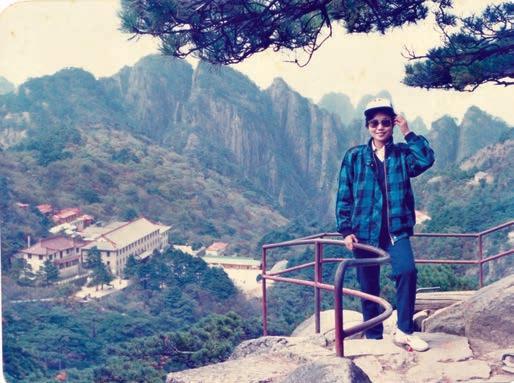
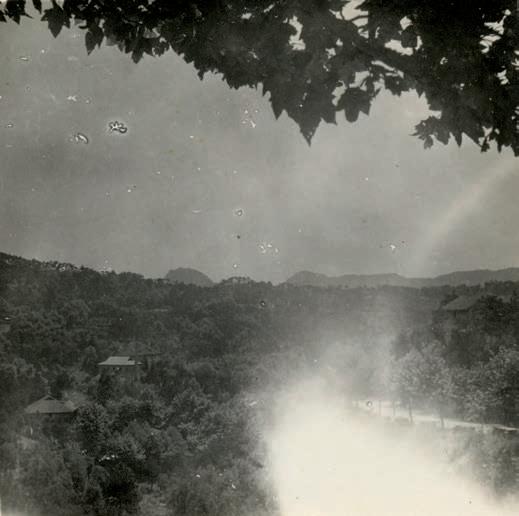



255 254
KURT TONG COMBING FOR ICE AND JADE
At the end of the 19th century, thanks to the silk trade, numerous women in Southern China became nancially independent. Many would wear their hair in a long braid to symbolize their autonomy until their wedding. As Imperial China began to crumble and instability spread, some women took the initiative of adopting independence permanently as Comb Sisters. The Comb Up ceremony involved bathing with mulberry leaves as a fellow Sister braided their hair. They took a vow of chastity, declaring themselves free of obligations towards their parents, and would henceforth wear their hair in a long braid and dress in a light-colored tunic and dark trousers. Choosing to live a life independent of men was not without its drawbacks. Comb Sisters were not allowed to return home to die in their old age, so many sisterhood homes sprang up where they looked after each other, often considered Sisters for life.
After the fall of the Empire, in the early 20th century, the silk trade was in great decline, and most of the Comb Sisters were out of work. Many traveled across Southeast Asia to work as nannies and domestic help.
Exhibition curator: Duan Yuting.

Publication: Combing for Ice and Jade Jiazazhi Press, 2019.

Prints and framing by Atelier SHL, Arles.
Winner of the 2018 Photo Folio Review.
Exhibition venue: Ground Control.
KURT TONG
This project is a love letter to my nanny, 87-year-old Mak, who worked for my family for nearly forty years. Denied opportunities due to her gender, she became the main caregiver to her siblings at the age of 8. In her early twenties, not wanting to be forced into an arranged marriage, she “combed up” and left for Hong Kong.
She would work for only two families for the next fifty-five years. Over that time, she kept her family alive through the great famine in 1950s, educated her nephews, built houses for them and supported their businesses. Yet, through all this, she has retained a very simple lifestyle.

Starting from the mere eight photographs










Mak had of herself, the multimedia project is an exploration of her extraordinary life, working closely with her over a period of nearly seven years. Her story is slowly revealed through a combination of my own family archive, found photographs from her extended families, new photographs, Chinese ink works and women’s magazines from China spanning six decades.
Born 1977, Hong Kong. Lives and works in Hong Kong.
Kurt Tong graduated with a master’s degree in Documentary photography from the London College of Communication in 2006. His work revolves around exploring his Chinese roots and understanding of his motherland, Tong having grown up in the United Kingdom. He has exhibited widely, including at the Victoria Museum, Liverpool; Compton Verney, UK; the Chinese Cultural Foundation of San Francisco; and Lianzhou Photography Museum, China. His monographs include In Case It Rains in Heaven, Kehrer Verlag (2011); The Queen, the Chairman and I, Dewi Lewis Publishing/LMP (2019); and Combing for Ice and Jade, Jiazazhi Press (2019).
—
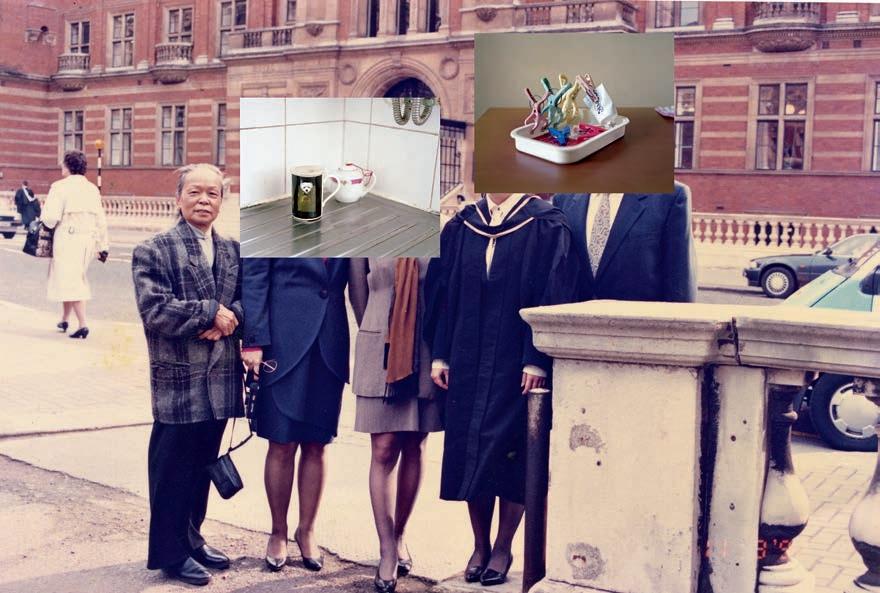
257 256
Portrait of Kurt Tong: Su Tong.
Fake Flowers 2016, Hong Kong. Courtesy of the artist and The Photographer’s Gallery [all photographs].
Royal Albert Hall 2016, Hong Kong.
Portrait of Duan Yuting: Damon Zhang Xiang’ou.
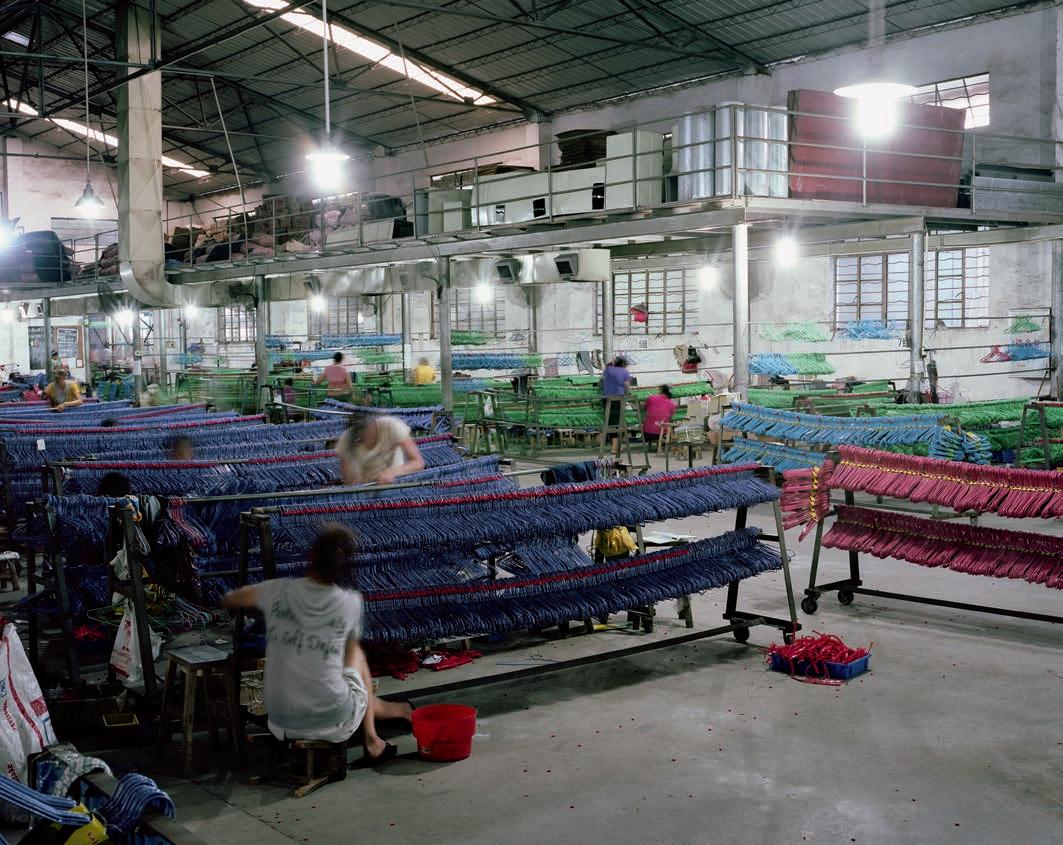

259 258 —
Empty Billboards 2017, Zhongshan, China.
Coat Hanger Factory #1 2011, Zhongshan, China.
GUILLAUME SIMONEAU MURDER


Guillaume Simoneau creates fragmented, personal stories through photography. Fact gives way to perspective and truth to opinion in his work, which unfolds nonlinearly. The Murder series(2016–2019), shot in Japan, touches on di erent poetic and symbolic relationships to birds, where the bird is at once friend, alter ego, and protagonist.
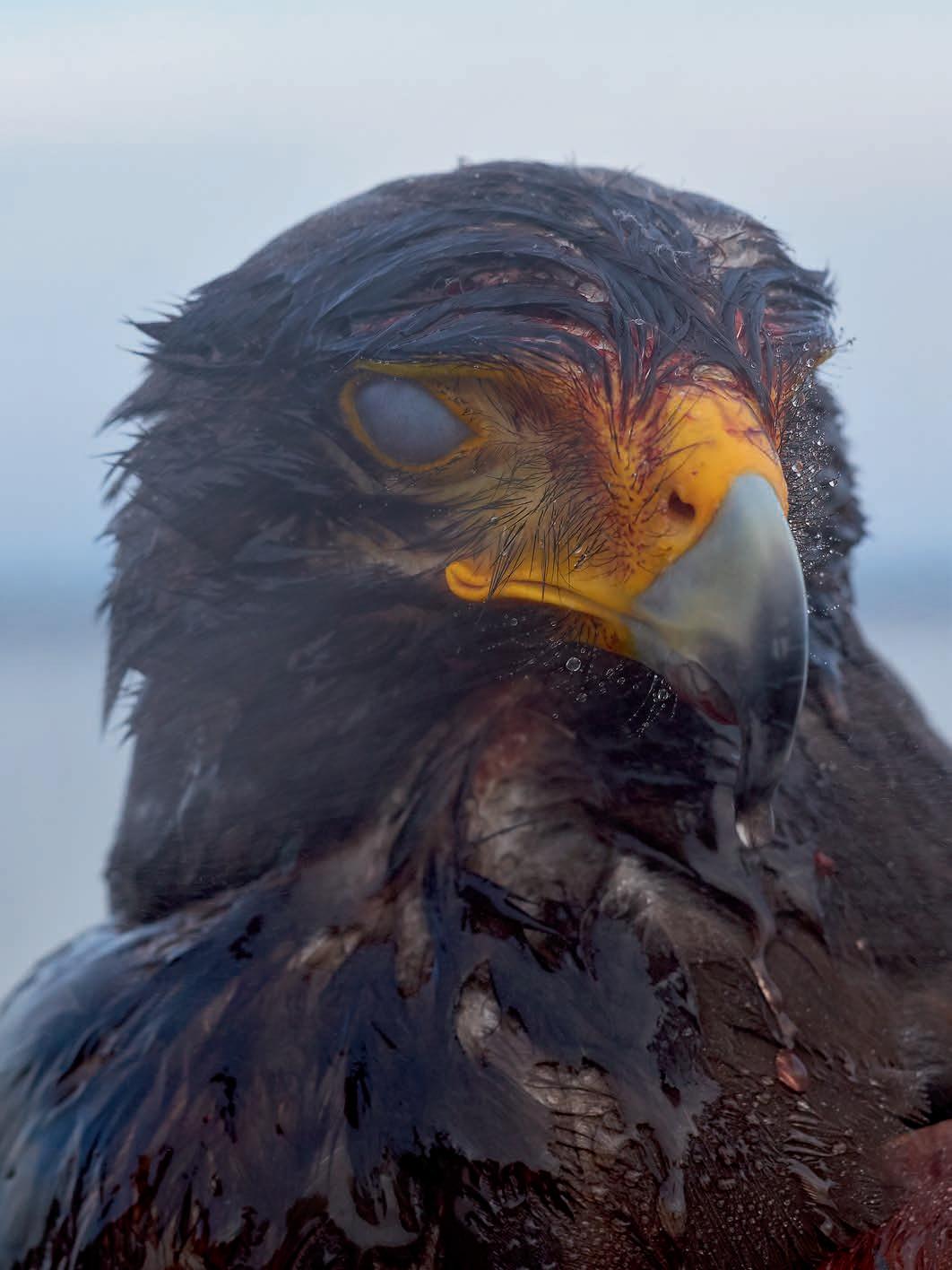
Photographs by the artist’s mother, Jeanne d’Arc Fournier, are put in dialogue with those of Japanese photographer Masahisa Fukase’s iconic Karasu series [Ravens], a work that plays a major role in the history of photography. At the core of Murder are photographs, taken by the artist’s mother, displaying the Simoneau family’s attachment to four young crows that they adopted for the summer in the early 1980s. At the same time, on the other side of the Paci c, Fukase produced the book Ravens. This iconic work is composed of photographs taken while the artist was going through a depression. The black bird, a raven for Fukase and a crow for Simoneau, becomes a profoundly personal motif interweaving human fragility and the power of nature; for Fukase, it comes out of heartbreak, whereas in Simoneau’s work, it represents the innocence of childhood and the search for light. The bird seems to be witness to an intimate story, nonlinear and introspective, unfolding in a sequence of sometimes disturbing, contemplativeand metaphorical photographs.
Simoneau’s oeuvre does not express existentialist anxiety, contrary to that of Fukase. Instead, it displays a fascination for situations in which vulnerability and power are found together. In this homage, the artist references the deceased Japanese master with both poetry and violence, where the lexicon of violence, inherited from Fukase, becomes a means of challenging that heritage.
Exhibition curator: Audrey Genois. Exhibition produced in collaboration with MOMENTA Biennale de l’image (Montreal, Canada).
Publication: Murder Mack, 2019. Prints by PhotoSynthèse (Montreal, QC) et Light Work Lab (Syracuse, NY).
Framing by l’Atelier SHL, Arles.
With support from the Conseil des arts et des lettres du Québec, the Conseil des arts de Montreal, the Canadian Cultural Center Paris, and the ministère des Relations internationales et de la Francophonie as part of the Coopération franco-québécoise (CPCFQ).

Exhibition venue: Croisière.
GUILLAUME SIMONEAU
Born 1978, Lévis, Canada. Lives and works in Montreal, Canada.





Guillaume Simoneau’s work has been shown in various galleries around the world, such as the Museum of Contemporary Photography, Chicago; the Stephen Bulger Gallery, Toronto, and the Daegu Biennale, South Korea. In 2018, he was a resident artist at Light Work (Syracuse, New York). He is represented by the Stephen Bulger Gallery.
Untitled (After the Fight 01) Takeo City, Saga prefecture, Japan, 2016. Courtesy of Mack, London, and Stephen Bulger Gallery, Toronto [all photographs].
—




261 260
Portrait of Guillaume Simoneau: Rineke Dijkstra.
Portrait of Audrey Genois: Ulysse del Drago.


263 262
—
Untitled (Ravens) Beppu, Ōita prefecture, Japan, 2016.
Untitled (Kanazawa 01), Ishikawa prefecture, Japan, 2017.
ÉCOLE NATIONALE SUPÉRIEURE DE LA PHOTOGRAPHIE, ARLES AN UNUSUAL ATTENTION
THÉA GUÉNIOT (1994), LOUISE MUTREL (1992), TIMOTHÉE PUGEAULT (1993), GAËL SILLÈRE (1994)

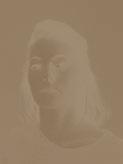









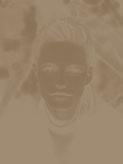
Reflecting the collaboration between the Rencontres d’Arles and the École Nationale Supérieure de la Photographie (ENSP) and their support for young photographers, for several years the festival has o ered graduates the possibility of exhibiting at the event. This year, the jury, composed of Caroline Courrioux, Juliette Vignon and Sam Stourdzé, singled out Théa Guéniot, Timothée Pugeault, Louise Mutrel and Gaël Sillère, whose work, each in its own way, echo the 2019 festival.
Théa Guéniotbegan developing her photographer’s eye in French Polynesia, where she grew up on the colors, shapes, shadows and light of the South Paci c. She proposes rethinking the elsewhere, its possibility and its existence. How can a distant place be characterized? Combining portraits of her Polynesian friends with French seascapes, she seeks that something wonderful and worrying, which refers to traces of her past, in all the interstices of reality.
From tax evasion to drone warfare, Timothée Pugeaultexplores the representation of political subjects in all their paradoxical, ambiguous and even impossible complexity. His work comes across as an installation whose parts are made of various materials allowing the creation of a narrative open to interpretation or even rants, returning to the question of the political or historical status of certain events.
Gaël Sillère stages a gallery of objects and people that follow each other but never meet. He takes neglected, discarded, plastic-colored objects and turns them into props for real, endearing, unique people. These falsely naïve and spontaneous juxtapositions build an unexpected narrative that accentuates the gap between reality and ction and is self-assertively a work in progress. Wavering between humor and disquiet, the series sows an ine able anxiety that prompts us to think about our consumer society, which is much more complex than it seems.
At rst, Louise Mutrelmade this series in Tokyo to capture a sensory experience of the city. But the pictures, originally taken with flash, were so disappointing that she reworked them to recapture the gaze revealed by the city’s hypnotic lights, which make the street scenes look disturbingly eerie. In the form of a publication, this work seems like an attempt at remembering, and transcribing, a mental projection on the border between reality and ction, a doubly fantasized universe that escapes, still, and is crystallized in a hallucinatory and fleeting imaginary world.
265 264
Gaël Sillère, Les Êtres de demain [The Beings of Tomorrow], from the Des ctions synthétiques [Synthetic Fictions] series, 2019. —
Co-produced by the ENSP and the Rencontres d’Arles.
Exhibition venue: Mécanique Générale.
Portrait of Gaël Sillère: Icev. Portrait of Louise Mutrel: Julie Hrncirova. Portrait of Théa Guéniot: courtesy of the artist. Portrait of Timothée Pugeault: Adrien Julliard.
HAPPY BIRTHDAY!
A jubilant jubilee.
50 YEARS OF PHOTOGRAPHY FESTIVAL HISTORY AND COLLABORATIVE COLLECTION
Back on the Arlesian adventure.
WHAT A STORY!
ARLES TURNS 50, THE RENCONTRES COLLECTION

Immersion into the Rencontres collection and history.
CLERGUE & WESTON
FIRST SHOW, FIRST WORKS
Dialogue between the rst Rencontres d’Arles, which focused on Edward Weston in 1970, and Lucien Clergue’s earliest works.
50 YEARS, 50 BOOKS MASTERPIECES FROM THE LIBRARY OF MARTIN PARR
One book, one year, 1969 to 2018.
Lucien Clergue, Harlequin 1955. Courtesy of the Atelier Lucien Clergue and the Saif.
Photograph from the Rencontres d’Arles’ collection.
THE RENCONTRES D’ARLES: 50 YEARS OF PHOTOGRAPHY

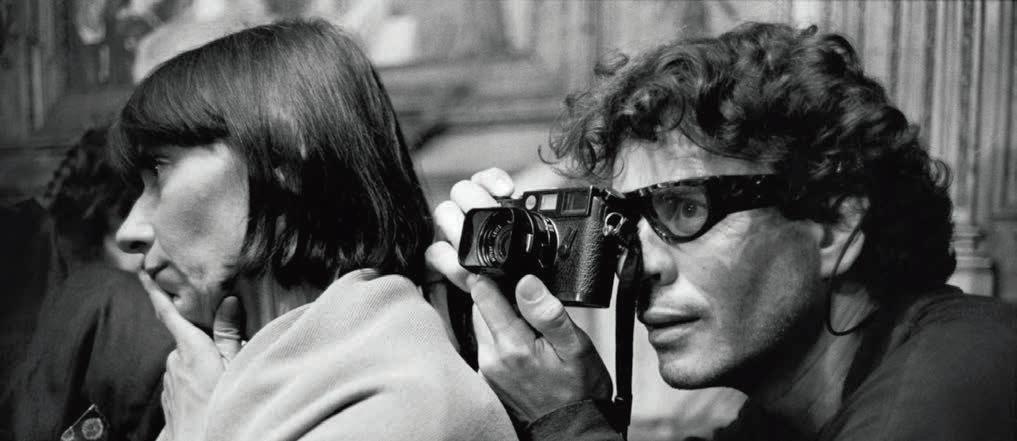


The Rencontres d’Arles, (formerly The Rencontres photographiques d’Arles then the Rencontres internationales de la photographie), is an annual summer photography festival founded 50 years ago by the Arles photographer Lucien Clergue, writer Michel Tournier and historian Jean-Maurice Rouquette, later joined by Maryse Cordesse.
The festival played a leading role in raising photography’s status at a time when it was still deemed a “minor” art form. Starting out as a small gathering of photography lovers, it grew over the years and became more popular.

Today the Rencontres enjoys an international reputation and ranks as one of the world’s most important photography events. In 2018, 140,000 visitors (and 1,340,000 admissions in exhibitions) took part in this exciting cultural scene in Arles.

To mark its 50th anniversary, the Rencontres asked festival-goers to share their memories by depositing photographs, videos, sound recordings, digitized documents (articles, posters, letters, etc.) and testimonies on a participatory platform.
Famous photographers and anonymous people contributed to the archive. They shared portraits of artists they met on the streets of Arles, at a legendary dinner or during a workshop. The images recall morning debates that followed thunderous applause or stormy protests at the ancient theater the night before. The festival thanks them for their memories. You can browse this big souvenir album documenting the festival’s 50 years on our website (archives.rencontres-arles.com). It’s destined to grow over the next 50 years!

268
— Manon Zeidman, Exhibition at the Magasin d’Entretien Parc des Ateliers, 2005.
— Pierre-Jean Amar, Marie-Christine Amar, 2008.
— Jacques Bakker, Workshop, 1976.
Dominique Picheloup, Alfredo’s Jaar’s The Politics of Images Exhibition, 2013.
—
Pierre-Jean Amar, Willy Ronis 1976. —
Jean-François Dalle-Rive, Trainee examining his negatives 1984.
—
— Jane Evelyn Atwood, Catherine Philippot and Alberto Venzago, 1988.
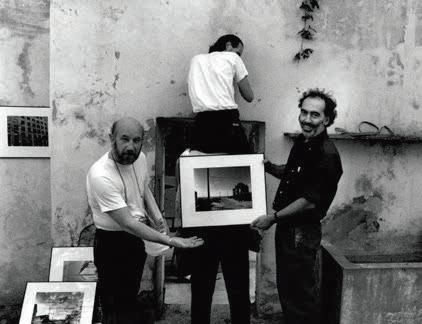
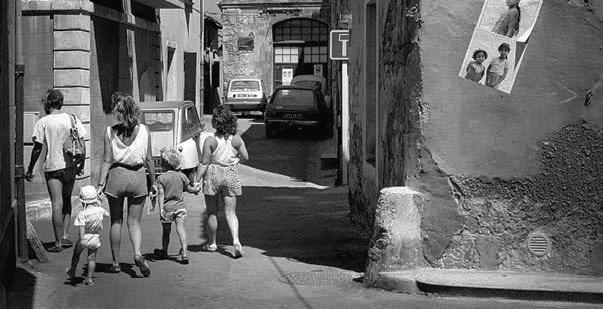






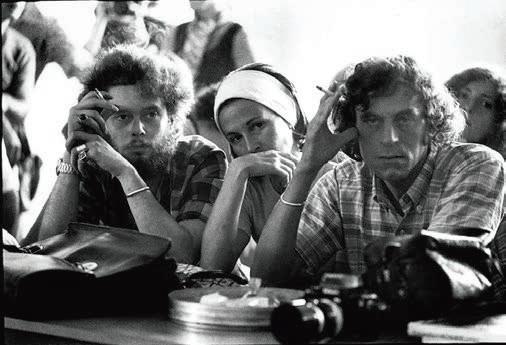 — Véronique Vercheval, Arlesian Astmosphere 1986
Jane Evelyn Atwood, Yvette Troispoux 1985. —
— Giovanna Calvenzi, Gianni Berengo Gardin and Gabriele Basilico during the hanging of Basilico’s exhibition, 1987.
Claudio Marcozzi, Stand 2006.
— Véronique Vercheval, Arlesian Astmosphere 1986
Jane Evelyn Atwood, Yvette Troispoux 1985. —
— Giovanna Calvenzi, Gianni Berengo Gardin and Gabriele Basilico during the hanging of Basilico’s exhibition, 1987.
Claudio Marcozzi, Stand 2006.
—
Pierre-Jean Amar, Arthur Tress, 1974. —
Manon Zeidman, The Right to Know exhibition 2011. —
— Pietro Viti Image by William Wegman, 2018.
— Abbas Dekkiche, Michael Wolf’s Life in Cities exhibition 2017.
— Pierre-Jean Amar, Pierre-Jean Amar, Dominique Wallut, Philippe François during Jean Dieuzaide’s workshop 1974.
—




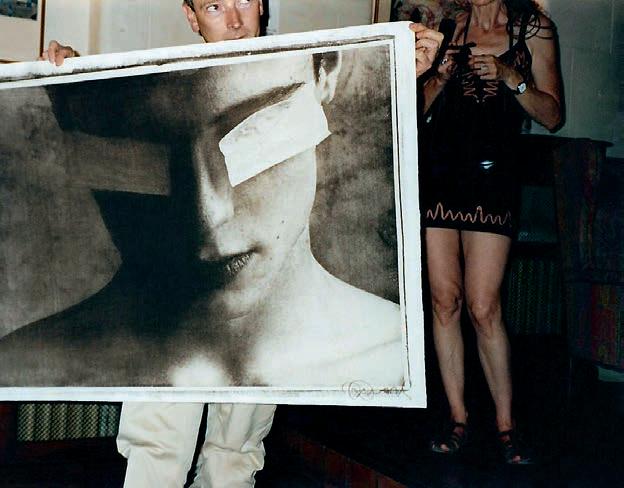

 — Jacques Bakker, Workshop 1977.
— Claudio Marcozzi, Portfolios review, 1997.
Jean-Luc Deru, Jean Dieuzaide and Alain Lequeux at the Théâtre Antique 1981.
— Claudio Marcozzi, Susan Meiselas’ Reframing History exhibition 2006.
— Pierre-Jean Amar, In an exhibition, 1976.
Flavio Edreira, Cosmos-Arles Books 2018.
— Jacques Bakker, Workshop 1977.
— Claudio Marcozzi, Portfolios review, 1997.
Jean-Luc Deru, Jean Dieuzaide and Alain Lequeux at the Théâtre Antique 1981.
— Claudio Marcozzi, Susan Meiselas’ Reframing History exhibition 2006.
— Pierre-Jean Amar, In an exhibition, 1976.
Flavio Edreira, Cosmos-Arles Books 2018.
—
Véronique Vercheval, Agnès Varda, 1982.
—
WHAT A STORY! ARLES TURNS 50, THE RENCONTRES COLLECTION
Arles celebrates its 50th year. It’s a long story that’s seen the history of photography pass by. 26 artistic directors have come and gone, presenting over 1,234 exhibitions under the watchful eyes of Arles’ founders, Lucien Clergue, Jean - Maurice Rouquette, and Michel Tournier. Each summer, the city grows louder with the sound of photography. Arles has been, and remains, a place of discovery, surprises, scandal and debate.
Almost every photographer has passed through at one moment or another, and for many, showing their work in Arles changed the course of their careers. Diving into the past of the Rencontres d’Arles is like reliving the history of photography.
On the occasion of our 50th anniversary, we undertook the unprecedented task of identifying, ranking, and inventorying in order to convert our archive into collective memory, so that tomorrow anyone can consult our collection and review the festival’s history.
The present exhibition and the companion publications tell the story of the Rencontres d’Arles, rst in a dialogue between festival archives and collections, and second, by situating 50 years of the festival within the history of France. These two directions take the rst steps in exploring the role the festival has played in the lives of photography lovers.
Publications: Les Rencontres de la photographie, une histoire française, Françoise Denoyelle, copublication Art Book Magazine/ Les Rencontres de la Photographie, 2019. Arles, les Rencontres de la photographie : 50 ans d’histoire, Françoise Denoyelle, body of works prepared by Sam Stourdzé, Éditions La Martinière, 2019.
A supplement reproducing the 50 posters of the festival accompanies the catalogue of the Rencontres d’Arles.
Poster prints by Picto, Paris.
Modern prints and framing by Atelier SHL, Arles.
In collaboration with the International Center of Photography, New York, and École Nationale Supérieure de la Photographie.
With support from Olympus.
Exhibition venue: Église des Trinitaires.
Charles Fréger, Yokainoshima 2013-2015.
Photograph from the Rencontres d’Arles’ collection [all photographs].

275 274
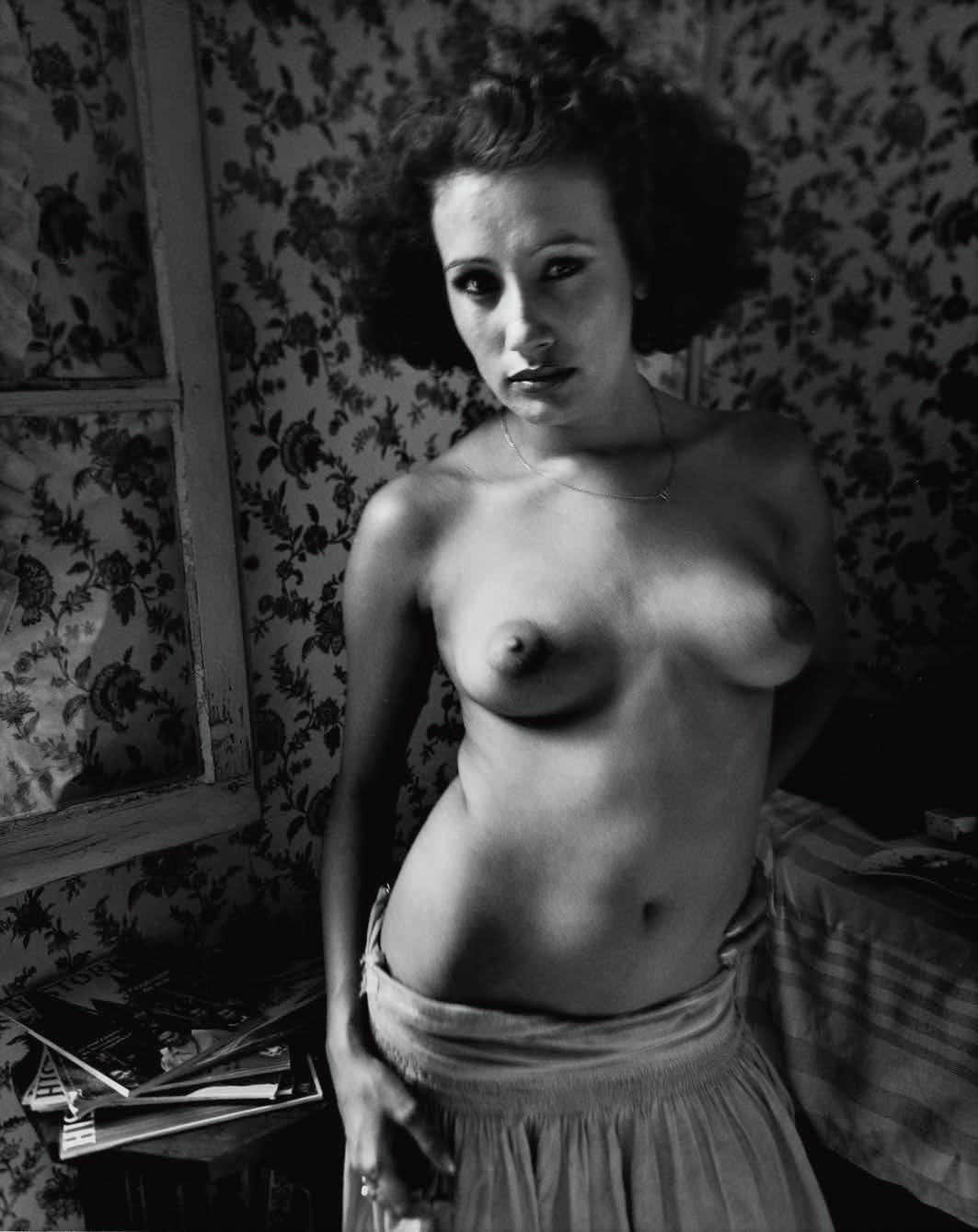

277 276
— Judy Dater, Sabine, Arles, 1973. Franco Fontana, Zürich 1981.
CLERGUE & WESTON FIRST SHOW, FIRST WORKS
In July 1970, the Festival d’Arles opened the first Rencontres Photographiques under the leadership of Lucien Clergue, Jean-Maurice Rouquette and Michel Tournier with AnHomage to Weston, a show of 36 prints by Edward Weston, whose photographs were then very rare in France.
That rst edition featured the great American master, but Clergue and Weston went back together long before then. In 1965, Clergue met Jérôme Hill, a multifaceted artist and great patron of the arts. When Clergue told him that he and Rouquette planned to create a photography department at the Musée Réattu in Arles, Hill donated ten Weston prints. “And there was piously handling the artichoke, Charis Wilson’s Nude, the Point Lobos rocks, the Death Valley sand dune,” Clergue wrote. The Musée Réattu opened its photography section the same year and these ten prints were in the permanent collection’s catalogue.
Five years later, in July 1970, 36 photographs of the great American master were exhibited. Two other exhibitions complete the program of the rst edition: Photography Is an Art —a “modest survey of the quintessential 20th-century art form”, a true manifesto in favour of the recognition of photography —and prints by Gjon Mili in the Musicians of Our Times show.
To mark the festival’s 50th anniversary, we are recreating the Weston show as it was presented in 1970. At the same time, we wanted to celebrate the festival’s founder: photographer and curator Lucien Clergue. Weston seems like a tutelary gure who guided Clergue’s rst steps as a photographer, as his notebooks, most dating from the 1950s and unknown until now, attest. We have brought them together for this show.
Reuniting them for this anniversary is a way of recognizing that the history of photography is written in successive strata. Clergue’s fossilized carrion respond singularly to the anthropomorphic minerality of Weston’s works.
Exhibition curator: Sam Stourdzé. Exhibition produced in collaboration with the Musée Réattu and the Atelier Lucien Clergue. Framing of Lucien Clergue’s notebooks by Atelier SHL, Arles.
With support from Société des Auteurs des arts visuels et de l’Image Fixe.
Exhibition venue: Croisière.
LUCIEN CLERGUE
Born 1934, Arles, France. Died 2014 in Nîmes, France.


In 1957, Lucien Clergue published his first book, Corps mémorable ; Picasso signed the cover. He exhibited at MoMA in 1961 and founded the Rencontres photographique d’Arles in 1969 with Jean-Maurice Rouquette and Michel Tournier. His work is in the world’s greatest collections. In 2006, he was elected to the Académie des Beaux-Arts.
EDWARD WESTON
Born 1886, Highland Park, Illinois, USA. Died 1958 in Carmel-by-the-Sea, California, USA.
Edward Weston’s first experience of photography was in the parks of Chicago, but it was in California that he opened his rst studio, in 1911. Until the early 1920s, he used an anachromatic lens, producing soft-focus images, but later turned towards a new esthetic, “pure photography.” In 1932, he and Ansel Adams cofounded the Group f/64. In 1937 he was awarded the rst Guggenheim Fellowship for photography.
Portrait of Lucien Clergue: R. Durand.
The Rag-Picker’s Mannequins Arles, 1956. Courtesy of the Atelier Lucien Clergue and the Saif [also for the photography on page 281].
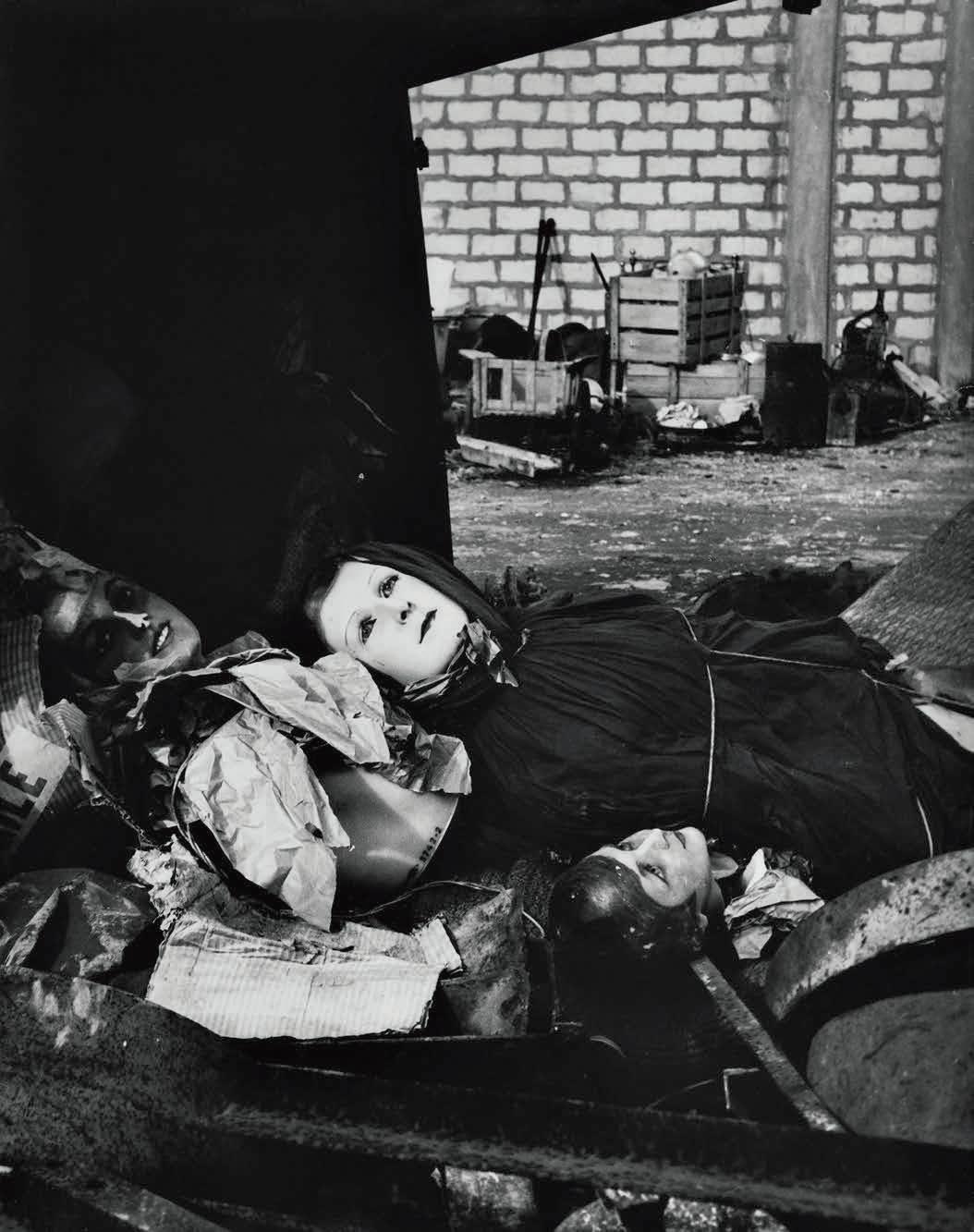
—
NEXT PAGE Edward Weston, Untitled 1927. Courtesy of Creative Photography, The University of Arizona Foundation / ADAGP 2019.
—

279 278

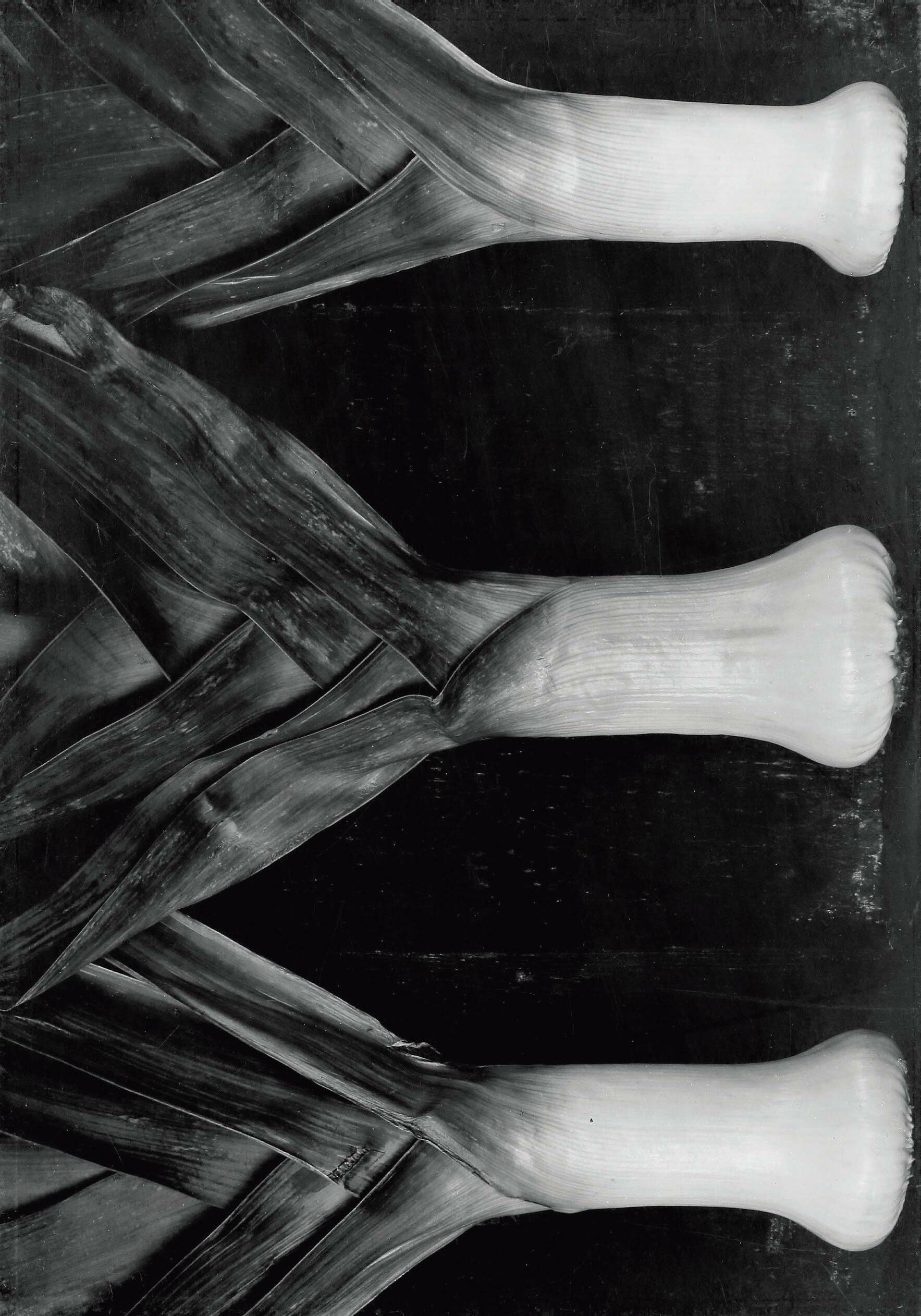
281 280
Lucien Clergue, Dead Flamingo in the Sand, Faraman Lighthouse , 1956.
50 YEARS, 50 BOOKS A SELECTION FROM THE MARTIN PARR COLLECTION




This exhibition is dedicated to Martin Parr’s photography book collection. A staunch defender of the book, well acquainted with the Rencontres d’Arles, Parr compiled an extensive library of over 12,000 works. This vast collection comprises a wide range of works reflecting the photographer’s singular vision. It was acquired by the Tate Modern in 2017 thanks to support from the Luma Foundation. This collaborative project features 50 books published between 1969 and 2018. Although obviously non-exhaustive, the selection unveils a diverse panel of artists who, in many ways, marked the history of photography. In both form and substance, the sample o ers a multidisciplinary approach to photography, reflecting the festival’s constant practice of showcasing diversity. Despite a majority of male and Western artists, every continent is represented and over a third of the books on show are by female photographers. These gures, while far from perfect, nonetheless reveal certain characteristics of post-68 photography: art o ering more visibility to women and minorities; an art without borders, with its codes and language no longer con ned to those of the West.
To dedicate an exhibition to the book in 2019 is to pay tribute to the material in an age where the virtual reigns. We thought it necessary to insist on the continuing currency of the book, which has resisted the ravages of time despite its age and, for some, its obsolescence. This exhibition seeks to give the photography book the credit it deserves.

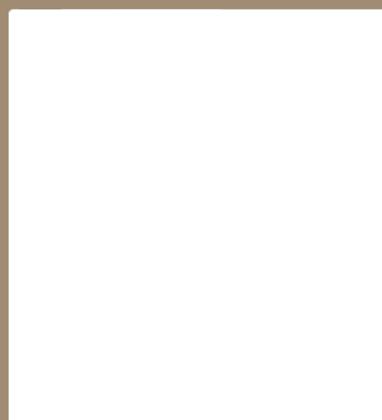
For many photographers, the book, with its experimental nature and counterpoint to the mass distribution of the image, is the most meaningful vehicle for their work. An essential tool in presenting the artist’s vision to a wide audience, the book is still undervalued today in the history of photography.





283 282
Susan Meiselas, Nicaragua Aperture, New York, 1978.
Shomei Tomatsu, OO! Shinjuku Shaken, Tokyo, 1969.
Seifollah Samadian’s photobook A Visual Narrative of Revolution, Tehran, 1979.
Nan Goldin, The Ballad of Sexual Dependency, Aperture, New York, 1986.
—
Exhibition curator: Matthieu Humery. Exhibition coproduced by the Luma Foundation, Tate Modern and the Rencontres d’Arles.
Purchased with funds generously provided by the Luma Foundation and with the assistance of Tate Members, Art Fund, Tate Americas Foundation, Tate Photography Acquisitions Committee, Tate Latin American Acquisitions Committee, Tate Asia Paci c Acquisitions Committee, Tate Russia and Eastern Europe Acquisitions Committee and Tate Middle East and North Africa Acquisitions Committee and partial gift from Martin Parr 2017.
Exhibition venue: Mécanique Générale.
Portrait of Matthieu Humery: Marie-Laure Dutel.
GUESTS

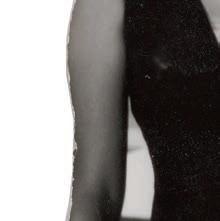


The Rencontres d’Arles gives carte blanche to two favored institutions to explore, each in its own way, their relation to images.

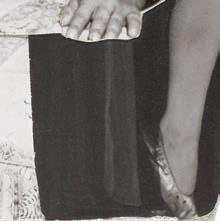
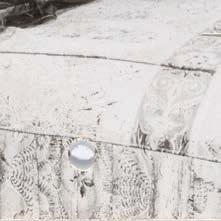


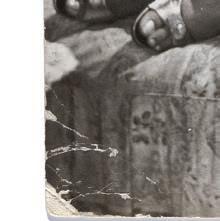



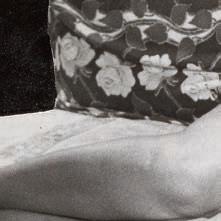

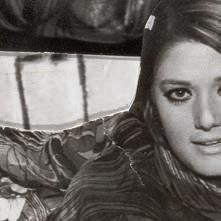
















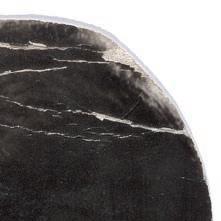



IMAGE FOUNDATION ON THE POTENTIAL OF PHOTOGRAPHY THE 0069FA COLLECTION: AN ARCHIVE AT WORK Development of photographic practices in the Middle East and North Africa. OPÉRA NATIONAL DE PARIS 3 E SCÈNE Carte blanche to artists in the opera world and screenings of lms that have never been seen before. 0069fa01780, Photomontage of an Egyptian movie set photographs Al Chaytan [The Devil], lmed in 1969 featuring Shams al-Baroudi, Farid Shawqi and Soheir Zaky Anonymous, Cairo, Egypt, circa 1949. Collection AIF, courtesy of the Arab Image Foundation, Beirut —
ARAB
ON THE POTENTIAL OF PHOTOGRAPHY THE 0069FA COLLECTION: AN ARCHIVE AT WORK



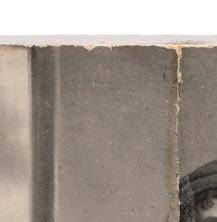
On the Potential of Photography presents the 0069fa collectionas an object of study, still under construction. Nurtured and guided by contemporary artistic practices and multidisciplinary research, through its activities the Arab Image Foundation (AIF) probes the interactions between institutional power and subjective interventions. Applying its own unique methodologies, it intertwines notions of collecting, preservation, and documentation with issues of personal and collective history, cultural belonging, and geopolitical factors.
In its morphology, this heterogeneous collection chronicles twenty years of practice. Shaped by the actions and interests of di erent researchers, 0069fa encompasses 85 lots that comprise nearly 8,000 objects, collected in six countries. Typologies of objects and their materiality, currents of thought, and procedures belonging to porous temporalities accumulate within the collection.
Multilayered interventions subjected to intentionalities call for new stories for and from the documents. These interpretations and their activations become central to the constant reinvention of the archive.
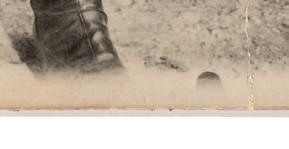

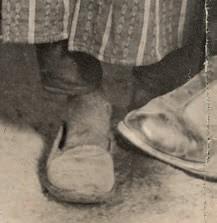



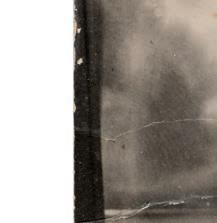

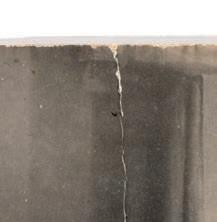


THE ARAB IMAGE FOUNDATION






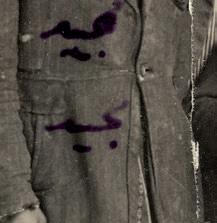






The Arab Image Foundation (AIF) is an independent association created in Beirut in 1997, opening new pathways for photography and image practices. Uniquely positioned at the intersection of artistic creation, research, and archiving, the AIF explores, questions and confronts the complex social and political realities of our time in thought-provoking ways. At the core of the AIF’s work is its collection of over 500,000 photographic objects and documents from and related to the Middle East, North Africa and the Arab diaspora.
With interest in the richness and the plurality of the original photographic objects in this collection and in the numerous spheres of signs, gestures, and meanings that underlie it, the exhibition is organized in four environments. In parallel, contemporary activations produced by image practitioners and invited researchers are articulated. These activations as new voices take the form of artistic projects, scientific or historical research, modes of expression, and visual apparatuses to feed and present a photographic collection at work.
Extraction, Uses and Appropriations, Politics of Representations, Biography of the Object, Archiving Practices. These four entries reflect not only the doings, interests, and theoretical and conceptual concerns of the AIF, but also the proliferation and evolution of the uses and practices of photography in the Middle East and North Africa. Above all, they reveal the balance of power between individual and collective representations, cultural affiliations and memories, histories and arts. Thus, beyond ideas of the archive or the image, this project opens a dialogue between the political and the poetic, the intervals and the potentialities of what is nowadays known as Photography.
0069fa00014, Studio group portrait, with handwritten names. Yervant Bilemdjian, Baalbek, Lebanon, 1930. Gelatin silver developing-out paper print, 14 x 9 cm. Collection AIF, courtesy of the Arab Image Foundation, Beirut [all photographs]. —



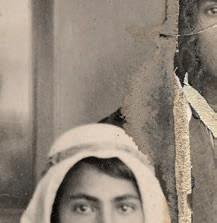
287 286 ARAB IMAGE FOUNDATION
Exhibition curators: Clémence Cottard-Hachem and Marc Mouarkech. Wallpapers by Atelier SHL, Arles.
Exhibition venue: Musée Départemental Arles Antique.
— 0069fa01838, Studio portrait, photomontage. Mohamad Arabi, Tripoli, Lebanon, 1940-1950. Gelatin silver negative on glass, 9 x 6.5 cm.
— 0069fa02954, Studio family portrait. Mohamad Arabi, Tripoli, Lebanon, 1940-1950. Gelatin silver negative on glass with traces of retouching and physicochemical deteriorations
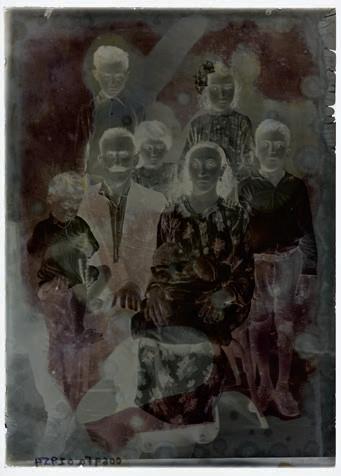
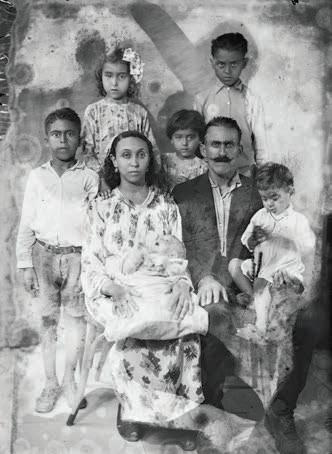
13 x 8 cm.
— 0069fa01100, A woman giving a speech during a manifestation. Anonymous, Baghdad, Iraq, 1950-1960. Gelatin silver developing-out paper print, 9 x 14 cm.



289 288
OPÉRA NATIONAL DE PARIS RAMZI BEN SLIMAN, JULIE DELIQUET, JONATHAN LITTELL 3E SCÈNE








The Paris Opera 3 e Scène is a digital platform which aims to promote the many forms of contemporary creation through original works, o ering an unprecedented look at the world of music, dance and opera, its heritage, trades and architecture.
A place of artistic experimentation, this digital scene opens its doors to artists from all disciplines—visual artists, lmmakers, photographers, writers—and invites them to create original works relating to the opera. With its 3 e Scène, a free platform available worldwide, the Paris Opera multiplies artistic bridges and continues its dialogue with the public and new generations. The influence of these works never ceases to grow, especially thanks to invitations to cultural events both in France and internationally. For the second time, the Paris Opera will join the Rencontres d’Arles with screenings of lms from its 3e Scène.
In Violetta by Julie Deliquet, two actresses prepare to play characters who are ill. Reality and fiction meet at the crossroads of the labyrinthine corridors of the Gustave Roussy hospital in Villejuif and the Opéra Bastille.
“The miracle of this opera lies in the fact that Monteverdi composed the ultimate schizophrenic opera based on a libretto about a paranoid dictator.” It was in these terms that Jonathan Littell spoke of L’Incoronazione di Poppea, a few years before turning it into a short lm: Le Couronnement . Transposing this baroque and decadent opera into a contemporary and yet phantasmatic setting, he juggles references to the Roman era, the Renaissance and the modern age, blithely contorting the music of Monteverdi to use it as both dialogue and background music.
Ramzi Ben Sliman highlights the urban choreographic arts in Grand Hôtel Barbès, a surprising marriage between the worlds of dance and classical music. The scene is Paris, the Barbès neighborhood. Ulysse, a young man out of work, has nowhere to live. On the corner of a street, he runs into breakdancers dancing to Mozart. In exchange for a dance, the Austrian composer might help him out…

Ramzi Ben Sliman, Grand Hôtel Barbès, 12 min 12 s, 2018.
Julie Deliquet, Violetta, 18 min 36 s, 2018. Jonathan Littell, Le Couronnement 18 min 05 s, 2018.


With support from AROP – Les Amis de l’Opéra and Devialet.







Exhibition venue: Église Saint-Blaise.

291 290
Portrait of Ramzi Ben Sliman: Jérôme Plon. Portrait of Julie Deliquet: Samuel Kirszenbaum. Portrait of Jonathan Littell: Francesca Montovani.
—
Grand Hôtel Barbès by Ramzi Ben Sliman. Courtesy OnP/ Les Films Pelléas.
SATELLITES
ARLES ASSOCIATED
Institutions and Arles venues associated with the Rencontres program (admission included in the pass).
FONDATION
MANUEL RIVERA-ORTIZ
HEY! WHAT’S GOING ON?
LËT’Z ARLES
CLAUDIA PASSERI KRYSTYNA DUL
THE NONANTE-NEUF
ASSOCIATION DU MÉJAN
CAMILLE MOIRENC
LIONEL ASTRUC & ÉRICK BONNIER
ÉCOLE NATIONALE SUPÉRIEURE DE LA PHOTOGRAPHIE
MODERNITY OF PASSIONS

VR ARLES FESTIVAL
The fourth edition of a festival screening immersive art, ction, and documentary lms in virtual reality.
ARLES BOOKS
The photography book in all its forms.
TEMPLE ARLES BOOKS
Contemporary practices in photography publication.
THE 2019 BOOK AWARDS
The author’s, history, and photo-text book awards. The year’s publishing output, with hundreds of books available for consultation.
LUMA RENCONTRES
DUMMY BOOK AWARD
The award for best dummy book. Winning and nominated dummy books are exhibited.
Kystyna Dul, Grabbing Luxembourg, 2016.
FONDATION MANUEL RIVERA-ORTIZ HEY! WHAT’S GOING ON?


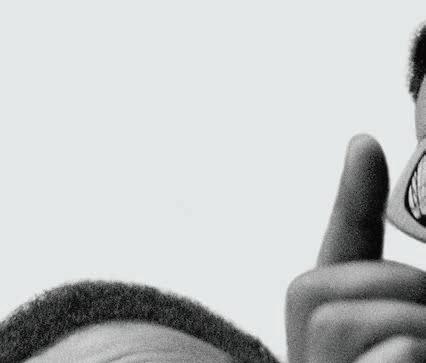
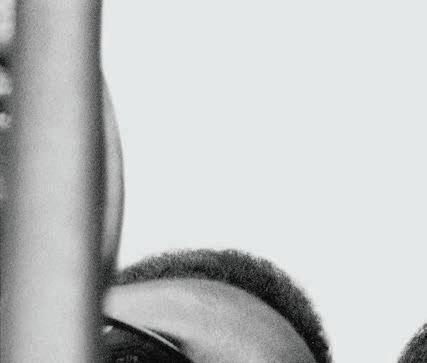


YING ANG (1980), MATTHEW CASTEEL (1980), COLLECTIF IANDÉ (CREATED IN 2017), DAVID DENIL (1976), YVONNE DE ROSA (1975), ISA HO (1977), CHIA HUANG (1990), HOU I-TING (1979), DOMINIQUE LAUGÉ (1958), MANUEL RIVERA-ORTIZ (1968)

Marvin Gaye’s album What’s Going On delivered the sublime message of universal love, perfectly expressed on the album’s cover art with an expressionless, yet serene, face uplifted to the rain. This is the attitude called for by the Manuel Rivera-Ortiz Foundation. Forgotten songs are reawakened, from the United States (with the historic exhibition Dancing In The Street: Motown’s 60th anniversary’s exhibition and Matthew Casteel’s American Interiors), China (Dominique Laugé’s Les Nouvelles Routes de la Soie [New Silk Roads]), Ukraine (David Denil’s Let Us Not Fall Asleep While Walking), Brazil (What’s Going On in Brazil, a work in progress by the lande collective), Italy (Yvonne de Rosa’s Negativo 1930), and Taiwan (Isa Ho’s Peony, Chia Huang’s Errances/Wanderings, Hou I-Ting’s Embroiderers of the Past).



With
Exhibition
In a time of dictatorships and authoritarian regimes, where populism and sectarianism have found fertile ground from which to spread new world disorganization, the programme Hey! What’s Going On? rings out like a call to consciousness, to dignity and to peace, while paying special attention to the population forgotten by big media’s focus (Manuel Rivera-Ortiz The Forgotten Children in an Ahmedabad Slum).
295 294
Exhibition curators: Ioana De Mello, Nicolas Havette, Madj, Laura Noble, Laura Serani, Enrico Stefanelli.
the support of Universal, ChromaLuxe, Thames & Hudson, The Chinese People’s Association for Friendship with Foreign Countries, Gasme SM, Leica, Schneider electric, City of Yiwu, Taiwan Cultural Centre Paris, Photolux.
venue: Fondation Manuel Rivera-Ortiz.
Universal, The Four Tops 1966.

297 296 — Universal, The Supremes 1966.
LËT’Z ARLES
CLAUDIA PASSERI & KRYSTYNA DUL
For its third contribution to the Rencontres d’Arles, Lët’z Arles presents two solo exhibitions, Claudia Passeri’s Aedicula and Krystyna Dul’s Resonance. Selected on the basis of projects submitted to an international jury of recognized gures in the photographic world, these artists take their place in the Chapelle de la Charité as part of the Rencontres d’Arles associated program.
Claudia Passeri’s Aedicula raises the question of the status of the image; massive, distorted, segmented, biased information; and the di icult construction of historical discourse. It interrogates the role of humanity — ruler of the world, tamer of nature— in its environment and invokes, pertinently, our faculty of resistance. The exhibition is constructed around an installation composed of big newspaper display racks leaning against each other and forming a polyhedric column. On the textless newspapers are printed images taken by the artist at Il Furlo, a little village in central Italy. Once Mussolini’s vacation home, today the village symbolizes forgetting struggles, sacri ces, and dark hours, and the impossibility of contemplating them in complete tranquility for lack of political consensus.
Exhibition curators: Paul di Felice and Danielle Igniti. Exhibition produced by Lët’z Arles asbl (Luxembourg).
Publications: Aedicula collective work, coedition Lët’z Arles and CNA (Centre nationale de l’audiovisuel), 2019.











Resonance, collective work, coedition Lët’z Arles and CNA (Centre nationale de l’audiovisuel), 2019.

Krystyna Dul is nominated for the Prix de la Photo Madame Figaro Arles 2019.
Krystyna Dul’s Resonance transports us to an intimate universe where realities and ctions collide in the form of a fragmented, oscillating visual narration. The place, a mansion, becomes through Dul’s lens the memory theater of the deceased former proprietor, whose traces are still visible through the collected objects and artifacts. In her installation, which takes the exact shape of the house’s tower, the artist creates a resonance between the past of the other and the present of her own vision. Thus, combining found photographs and her own, she questions the relationship with desire of both the absent proprietor and the spectator, who becomes, in a way, complicit in the artist’s intrusion.
Exhibitions venue: Chapelle de la Charité.
CLAUDIA PASSERI
Born 1977, Esch-sur-Alzette, Luxembourg. Lives and works in Luxembourg and Italy.

Claudia Passeri is a conceptual artist who works in the medium of photography. Her work is closely tied to its historical, social, political and environmental context, and calls into question the reality and authority of the image. She studied graphic design, scenography and photography in Bologna, Brussels and Rome.
In 2016, she obtained a research residency at the Darling Foundry, Montreal (Canada). Her work is shown regularly in Belgium, France, Italy, Luxembourg and the United States.

KRYSTYNA DUL
Born 1986, Nowy Targ, Poland. Lives and works in Luxembourg.
Krystyna Dul is a visual artist who focuses on personal histories by reflecting on a person’s energy, emotions, state of mind, and obsessions. In 2016, she received the CNA grant for her project Resonance
She has participated in exhibitions in France (Festival Transphotographiques, Lille), Germany (Fotogra e Forum Frankfurt and the Czech Centre, Berlin), Poland, the Czech Republic, and Luxembourg.
299 298
Portrait of Claudia Passeri: Marco Godinho. Portrait of Krystyna Dul: Maciej Gapinski.
— Claudia Passeri, Aedicula, 2018.


301 300
— Kystyna Dul, Tower of Dreams Luxembourg, 2017.
— Kystyna Dul, Pube, Luxembourg, 2017.
THE NONANTE-NEUF SWISS TIME
The Swiss are sometimes gently mocked for their supposed sluggishness. There is usually not much to this cliché, but it rings delightfully true at nonante-neuf, an area set up at Croisière, the Rencontres’ epicenter. It feels great to lie on the lawn in the shade of a big library, planning your next visit, thinking about your last one or having a nap. Taking time is a key virtue for enjoying the Arles experience to the fullest.
Next to the big exhibition devoted to inventions, nonante-neuf shows why Switzerland ranks among the world’s most innovative countries in science and photography. Its apparent peacefulness fosters curiosity and freedom. You can relax, take in what’s around you, let your mind roam, meet visitors from everywhere and write your own story. But when night falls and the temperature goes down, the pace picks up. The mood turns lively and the party starts. The shelter becomes a scene. Still waters run deep!
Tied to Arles by the Rhône, Geneva is happy to share its passion for images with the city and to present its vibrant photography scene and rich heritage there.

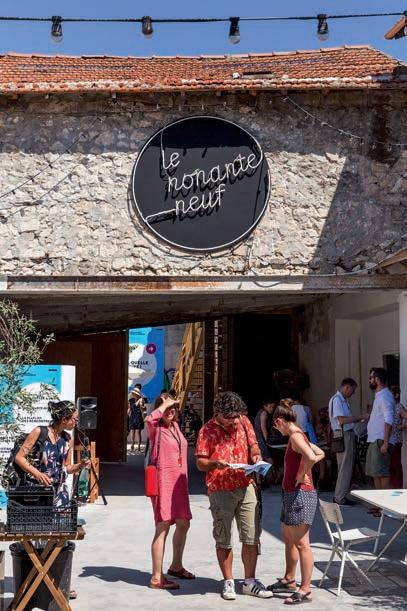
As early as 1839, Geneva succumbed to the charms of Daguerre’s invention and attracted many pioneering photographers because of its love for chemistry, optics and high-precision instruments. An international crossroads, it has always been home to the collections of many donors and international organizations while supporting the development of a teeming contemporary scene. All along the Rhône, Switzerland loves the Rencontres. Come meet us!

303 302
The nonante-neuf and the nonante-neuf Talks are produced by the Swiss Confederation, with the support of the Canton and City of Geneva and Swiss Arts Council Pro Helvetia. The Geneva area is staged by HEAD — Genève, Geneva School of Art and Design and its interior architecture department.
Venue: Croisière.
— The nonante-neuf space, 2018. Switzerland presents “The Walls Have the Floor.”
The nonante-neuf space, 2018. —
MÉJAN LIONEL ASTRUC & ÉRICK BONNIER ONE ROOF, ONE TRADE, ONE LAND
This exhibition is in two parts, the rst illustrated by the photographs of Lionel Astruc, the second by those of Érick Bonnier. All were taken in the intertropical zones where Malongo and its foundation are active.

The 1,350 co ee farmers of the UCIRI cooperative in Mexico live in the mountainous forests of Oaxaca. For 35 years, Francisco Van der Ho , co-founder of the fair trade label Max Havelaar and a fair trade actor and theorist, has been helping them achieve a standard of living allowing them to satisfy their basic needs,

by means of fair pricing, organic farming, self-funded health care, retirement bene ts, etc.



Francisco Van der Ho ’s work has allowed the expansion of fair trade in dozens of countries, raising the living conditions of countless producers. His subversive vision of economics valorizes a decrease in inequality and inspires citizens of the North to adopt a more frugal lifestyle. This economic calls upon us to consider our future and the transition from a destructive market economy to fairer remuneration for the farmers.
CAMILLE MOIRENC RHÔNE
Hailing from Aix, photographer Camille Moirenc is committed to exploring the south of France. For many years, he has studied the subject of water, notably that of the Rhône. His 13-year collaboration with the Compagnie Nationale du Rhône (CNR) has allowed him to travel the river and render every angle— industrial, natural, architectural, and human—of its beauty and grandeur. He is adept at capturing the light at just the right moment to dramatize his subjects and lend them an artistic air.
Exhibition venue: Croisière.
LIONEL ASTRUC
Born 1974, Tassin, France. Lives and works in Villard-de-Lans, France.
Photographer, writer, and journalist Lionel Astruc has reported on the raw materials sector from many countries. His work covers the casualties of globalization, consumer society at its breaking point, and the pioneering initiatives that seek to change this paradigm.
ÉRICK BONNIER
Born 1966, Aix-en-Provence, France. Lives and works in La Rochelle, France.
Érick Bonnier is a politically-conscious photographer and publisher. Among his notable publications is Manifeste des Pauvres by Francisco Van der Ho father of the fair trade movement.
— Lionel Astruc & Érick Bonnier. After a day of gathering dry wood and taking care of the co ee bushes, the family gathers in the late afternoon.
Camille Moirenc. Châteauneuf-du-Rhône, hydroelectric dam and lock of Châteauneuf-du-Rhône, container barge (Drôme).

Exhibition
This exhibition of Moirenc’s work, along with a book release, tells the story of the river from its source in Switzerland to its mouth in the Mediterranean, across territories with varied geographies, both urban and agricultural. An almost initiatory journey covering 812 kilometers…
CAMILLE MOIRENC



Born 1966, Aix-en-Provence, France. Lives and works in Aix-en-Provence.
For more than 25 years, photographer and illustrator Camille Moirenc has been exploring his native Provence. The photographer has devoted some of his work to water in Provence and the river Rhône, in collaboration with CNR, for more than 10 years.
Portrait of Camille Moirenc: Matisse Moirenc.

305 304
Publication: Le Rhône, under the direction of Erik Orsenna, photographs by Camille Moirenc, Actes Sud, 2019.
venue: librairie Actes Sud.
Portrait of Lionel Astruc: Julie Balagué.
Portrait of Érick Bonnier: courtesy of the artist.
ÉCOLE NATIONALE
SUPÉRIEURE DE LA PHOTOGRAPHIE & COLLECTION AGNÈS B. MODERNITY OF PASSIONS
From July 1 to August 25, 2019, for the inaugural exhibition of its new building, the École Nationale Supérieure de la Photographie of Arles is pleased to welcome the agnès b. Collection, curated by six students ofthe school. It is the rst time that agnès b. has showcased aselection ofphotographs from her own collection alongside works by currentstudents.
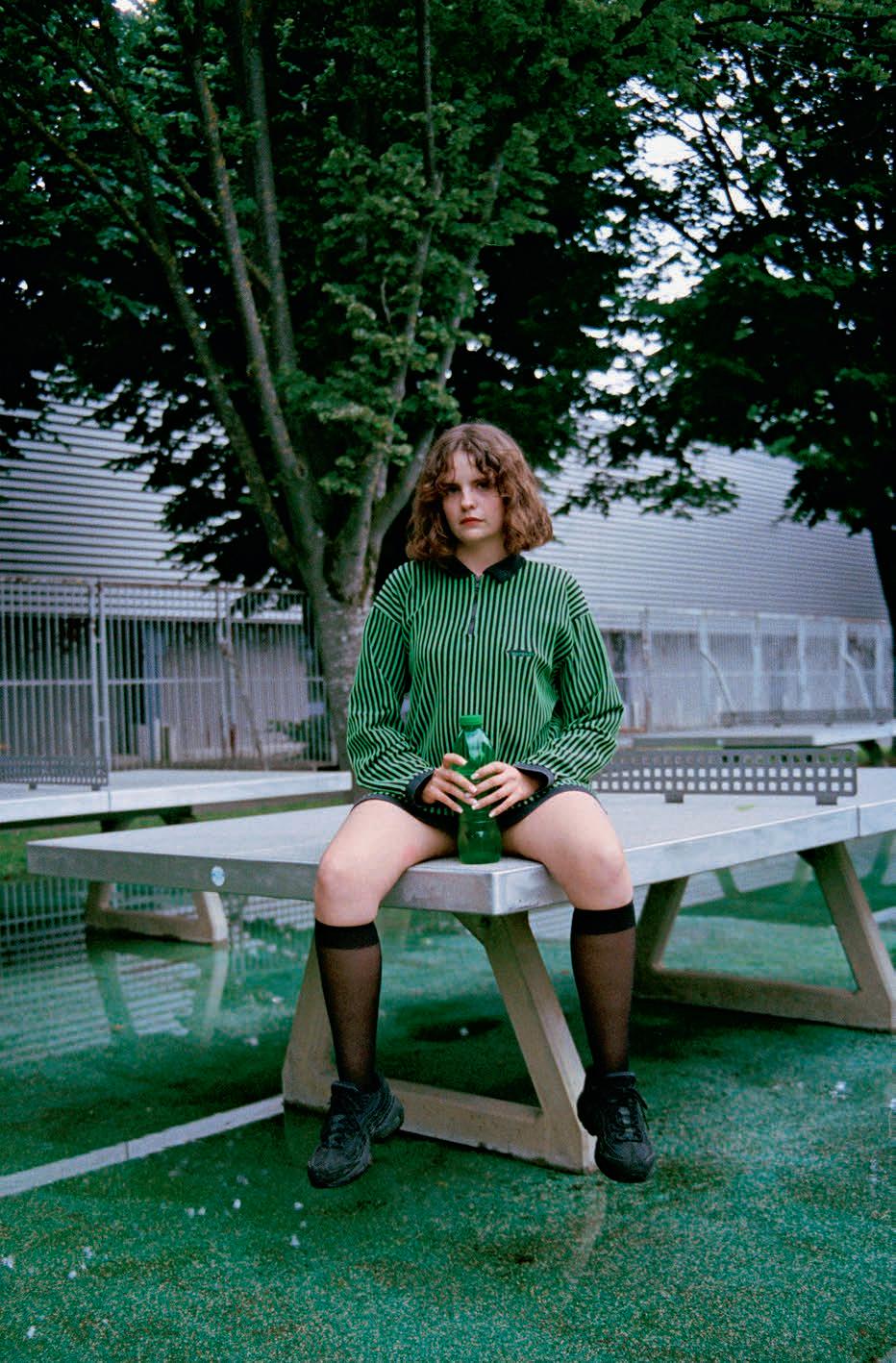
Modernity of Passions, with the generous support of the Fondation des Artistes, is part of an educational project related to curatorial practices. Since 2018, a group of students has assumed the role of curator and selected more than sixty works to create this exhibition.
How do you highlight the singularity of a collection? How do you make visible contemporary photography practices? How do you report on the school’s research and practices? These questions are at the heart of this exhibition and of the educational experiment of the project, which attempts to test what modernity means today.
The curators, driven by their meeting with agnès b., chose to combine theworks of renowned artists and those “in the making,” to quote thecollector. The exhibition unfolds as a series of encounters connected by the image, driven by the urgent need to show the many and e ervescent creations of diverse artists. The works of George Tony Stoll, Nan Goldin, Jean-Luc Moulène, Florence Paradeis and Lola Reboud mix with those of Jonas Mekas, Seydou Keita, William Eggleston andMassimo Vitali, within a constellation nourished by common questions focused on identity, pleasure, carefreeness, politics, violence … If there is passion, it surely exists in allowing oneself to betaken over by images as by a fever, immersing oneself intheexploration of others, experiencing the multiple ways offeeling and standing before the world.
307 306
Exhibition curators: Siouzie Albiach, Florent Basiletti, Antoine Brun, Théa Guéniot, Léa Thouin and Adrien Vargoz, students, accompanied by Fabien Vallos, teacher, and Juliette Vignon, exhibitions’ manager. Exhibition produced with support from the Fondation des Artistes and the collaboration of the agnès b. endowment Fund.
Exhibition venue: École Nationale Supérieure de la Photographie.
Robin Plus, All Eyes on Us #02 2018.


309 308
— Larry Clark, Untitled, from the Tulsa series, 1974.
Neil Winokur, Nan Goldin 1983.
VR ARLES FESTIVAL THE FESTIVAL OF ARTISTIC VIRTUAL REALITY
In its fourth year, the VR Arles Festival once again gives the floor to talented virtual artists working with immersive media. The festival consists of a large exhibition of virtual reality artworks, a conference day, workshops for kids, and a writing residency.


Among the exhibitions on show at Couvent Saint-Césaire throughout the summer: Danish artist Jakob Kudsk Steensen’s Re-Animated, a simulation of a post-Anthropocene world in which extinct species are “reanimated” virtually; HanaHana, a participatory work by artist Mélodie Mousset, making use of our bodies in a deeply transformative, funny, and sensitive collective experience. Photographer Olivier Cablat’s La Preuve de l’Existence des Zombies [Proof that Zombies Exist] is an augmented installation connecting print photography to the virtual image.
We’re proud to present Traveling
While Black, a powerful documentary work by Roger Ross Williams and Felix & Paul Studios, in which participants relive the restricted movements of African Americans during the darkest hours of racial segregation; and the dreamy world of Gloomy Eyes, a masterful animated narrative by Argentinians Jorge Tereso and Fernando Maldonado.
During opening week, a multidisciplinary, international jury awards a prize amongst the exhibited artworks.
On July 5th, at the Théâtre d’Arles, the festival inaugurates the Rencontres du Virtuel, a day of conferences, showcase and panel discussions to explore the intersection of photography and virtual realities.
A festival jointly established by BNP Paribas, the Rencontres d’Arles and Fisheye
With support from EDF, the Institut français and Le Point
Exhibition venue: Couvent Saint-Césaire.
311 310
Maïs Chaud Marlboro by Julien Creuzet, an exhibition of the Palais de Tokyo and VR Arles Festival 2018.
Courtesy of the artist.
Photograph by Igor Geneste. Re-Animated by Jakob Kudsk Steensen. —
ARLES BOOKS TEMPLE ARLES BOOKS
During opening week, Temple and the Rencontres d’Arles present Temple Arles Books. Temple is an independent distribution platform founded by independent curators and designers Anna Planas and Pierre Hourquet in 2013. In its rst year, Temple Arles Books is setting up at Mistral, a former middle school, giving a new scenography to the site.
A cross-disciplinary program on publishing practices will take place on di erent dates, presenting contemporary art in all its diversity. In the courtyard, the Book Market brings together book, fanzine, and magazine-related publishing initiatives and over sixty publishers.
The classrooms house a project by artist Erik van der Weijde and a reading room holding talks with artists, curators and collectors. A conference cycle, performances, and meetings with professionals ll the daily program.
Artistic direction: Pierre Hourquet and Anna Planas.
Main partners: Fondation Jan Michalski pour l’Écriture et la Littérature and the Swiss Confederation.
With support from the Swiss Arts Council Pro Helvetia and Picto Foundation.
Temple Arles Books is held from July 3 to 6 in Mistral.

ARLES 2019
TEMPLE ARLES BOOKS
PUBLICATIONS ENCOUNTERS EXHIBITIONS PERFORMANCES
PUBLISHERS
Akaaka Art Publishing (JP)
Alejandro Cartagena / Los Sumergidos (USA)
Altana (IT)
André Frère Éditions (FR)
Artphilein Editions (CH)
Avarie (FR)
Case Publishing (NL)
Centre de la Photographie Genève (CH)
Cesura Publish (IT)
Chose Commune (FR)
Classe Moyenne
Éditions (FR)
Dalpine (ES)

Deck (SG)
Départ pour
l’image (FR)
Dewi Lewis Publishing (UK)
Disko Bay (DK)
Édition Patrick Frey (CH)
Éditions du Caïd (BE)
Éditions
Le Lampadaire (FR)
Éditions Macula (FR)
Éditions
Xavier Barral (FR)
Editorial RM (ES)
Essarter Éditions (FR)
Florence Loewy (FR) FOMU / TIFF Magazine (BE)
Girard Sebastien (FR)
Havaiana Papers / 643 Collective (BR)


Iikki (FR)
Inframundo / Hydra (MX)
Innocences (FR)
Kaph Books (LB)
Kontaakt (KR)
L’éditeur du dimanche / Co-Curate (FR)
Loose Joints (UK)
Malenki (DE)
Meta/Books (NL)
Momo Galerie (FR)
Norwegian Photobooks (NO)


Objektiv Press (NO)
Onestar Press (FR)
Origini Edizioni (IT)
Photosynthèses (FR)
Phree (ES)
Polish Paradise (PL)
Poursuite (FR)
Red Lebanese (FR)
Reflektor (DE)
Photobooks (AT)
Revers Editions (FR)
Rorhof (IT)
RVB Books (FR)
Sandrine Elberg
Self-Published Book (FR)
September Books /
Rayon Vert (FR)

Spector Books OHG (DE)
Stanley/Barker (UK)
Sun/sun (FR)
The Eyes Publishing (FR)
the(M) éditions (FR)
Tipi Photo Bookshop (BE)
Éditions du Trocadéro (FR)
Witty Kiwi (IT)
Yet Magazine (CH)
Zoème (FR)
PROJECTS
ERIK VAN DER WEIJDE / THIS IS NOT MY BOOK
Over the past ten years, Dutch photographer Erik Van der Weijde has produced over fty publications, most through his publishing house 4478ZINE. The publications include photo-zines made with simple means, as well as sophisticated, voluminous works. This Is Not My Book o ers a rst look at the whole of Van der Weijde’s work. It is a veritable manifesto on his art, connecting photography and independent publishing. This Is Not My Book acts as a punctuation to the artist’s self-published works: a full-stop. For Temple Arles Books, Van der Weijde creates a production space from which to revisit his publications, remixing them in the form of fanzines.
READING ROOM
The reading room takes up the notions of library, collection, archive and art book. Each day, the room o ers visitors interventions by curators, artists, and collectors. With Magali Avezou and Lena Wurz, Christophe Daviet-Théry or artists Eline Mugaas and Elise Storsveen.
STACK MAGAZINES
A devoted fan of independent magazines, Steven Watson created Stack in 2008 with the goal of making new publications available to a wide audience. Today, with the help of its online platform, Stack delivers hundreds of magazines per month to an international subscribership, and each year the Stack Awards selects the best work by independent developers and publishers.
THE NONANTE-NEUF TALKS
In the Mistral courtyard, Temple Arles Books o ers a place for discussion and exchanges between artists, publishers and photography professionals. The nonante-neuf Talks presents panel discussions with Doris Gassert, organized by the Swiss Arts Council Pro Helvetia. Toward the end of the day, The Eyes Talks proposes meetings and signing events with publishers from Temple Arles Books.
313 312 MINISTÈRE DE LA CULTURE MINISTÈRE DE L’ÉDUCATION NATIONALE ET DE LA JEUNESSE DIRECTION RÉGIONALE DES AFFAIRES CULTURELLES PACA RÉGION PROVENCE-ALPES-CÔTE D’AZUR DÉPARTEMENT DES BOUCHES-DU-RHÔNE VILLE D’ARLES
— 6 JULY RENCONTRES-ARLES.COM PHOTOGRAPHY (DETAIL): UNTITLED DER BAUM ERIK VAN DER WEIJDE, 2010. DESIGN ABM STUDIO
3
Portraits of Pierre Hourquet and Anna Planas: courtesy of the curators.
ARLES BOOKS THE 2019 BOOK AWARDS
The Rencontres d’Arles Book awards were created in order to support the swift growth in the publishing of photography books and to help them reach a broader public. There are now three categories of books: Authors’ Books Award, Historical Books Award and Photo-text Books Award. The Fondation Jan Michalski pour l’Écriture et la Littérature backs and encourages the Photo-Text Award, which celebrates the relationship between words and images.
Each award comes with a €6,000 prize and singles out the best photography books published between June 1, 2018 and May 31, 2019.
A jury of photography book experts announces the winners’ names during opening week. The jury is composed of agnès b. as president, Paula Aisemberg, Marie Cozette, Marcel Feil and Martha Kirszenbaum.
Each book is received in two copies: one is deposited at the library of the École Nationale Supérieure de la Photographie d’Arles, the other put on public display throughout the festival period.

Main partners: Fondation Jan Michalski pour l’Écriture et la Littérature. With support from Fnac for the Authors’ book award.
The books are presented at the Mécanique Générale.
ARLES BOOKS
LUMA RENCONTRES DUMMY BOOK AWARD 2019
Since 2015, the Rencontres d’Arles o ers an award supporting the publication of a dummy book.
This prize, with a production budget of €25,000, is open to any new photographer or artist using photography, submitting a previously unpublished dummy book. Special attention is paid to experimental and innovative publication forms.

The recipient of the 2018 edition of the award was Marina Gadonneix for Phenomena (see p. 58-63), and a special mention was given to the dummy book by Indré Urbonaité (State of Shame). In 2017, Olga Kravets, Maria Morina, Oksana
Yushko and Anna Shpakova received the award for Grozny: Nine Cities. In 2016, the recipients were Katja Stuke and Oliver Sieber for their book You and Me
A special mention was given to the dummy book by Mathieu Asselin (Monsanto). In 2015, the recipient was Yann Gross for his Jungle Book.
With support from the Luma Foundation.
The books are presented at the Mécanique Générale.
Among the 146 publications received from 36 countries, 18 have been selected by a jury composed by Marta Gili, Matthieu Humery and Sam Stourdzé:
The Poverty Line by Chow & Lin, Paris Impasse by Karin Borghouts, La Ligne Noire by Éric Bouvet, Silent World by Simon Brodbeck & Lucie de Barbuat, Güle Güle by Jean-Marc Caimi & Valentina Piccinni, The Suicide Boom by Kenji Chiga, The Trap by Vincent Desailly, Noon in the Desert by Annabel Elgar, To Tell My Real Intentions by Katherine Longly, The Panama City Papers by Sophie Lvo The Sea Is Us by Massimo Mastrorillo & Pamela Piscielli, Dead Water by Marilene Ribeiro, Order 7161 by Marc Schroeder, Traum by Smith, Handbook of a Town by Sara Vighi, Thought of You As Gold, But You Are Such a Pain by Mirjam Wahlen, Heaps by Johan Willner & Peo Olsson, Marronnier by Takagi Yasuyuki.
—
315 314
Books in consultation photographed by Aurore Valada, 2018.
—
Exhibition dedicated to the Luma Rencontres Dummy Book Award 2018 winner, photographed by Aurore Valade.
SATELLITES
GRAND ARLES EXPRESS
The wind of photography blows over the Great South…
MARSEILLE
MUCEM
THE MAKING OF ILLUSIONS
FOUAD DEBBAS COLLECTION AND CONTEMPORARY COMMENTARIES
TOULON
HÔTEL DES ARTS
HARRY GRUYAERT
HARRY GRUYAERT, PHOTOGRAPHE
L’ISLE-SURLA-SORGUE
CAMPREDON CENTRE D’ART
GUY BOURDIN IMAGE WITHIN AN IMAGE
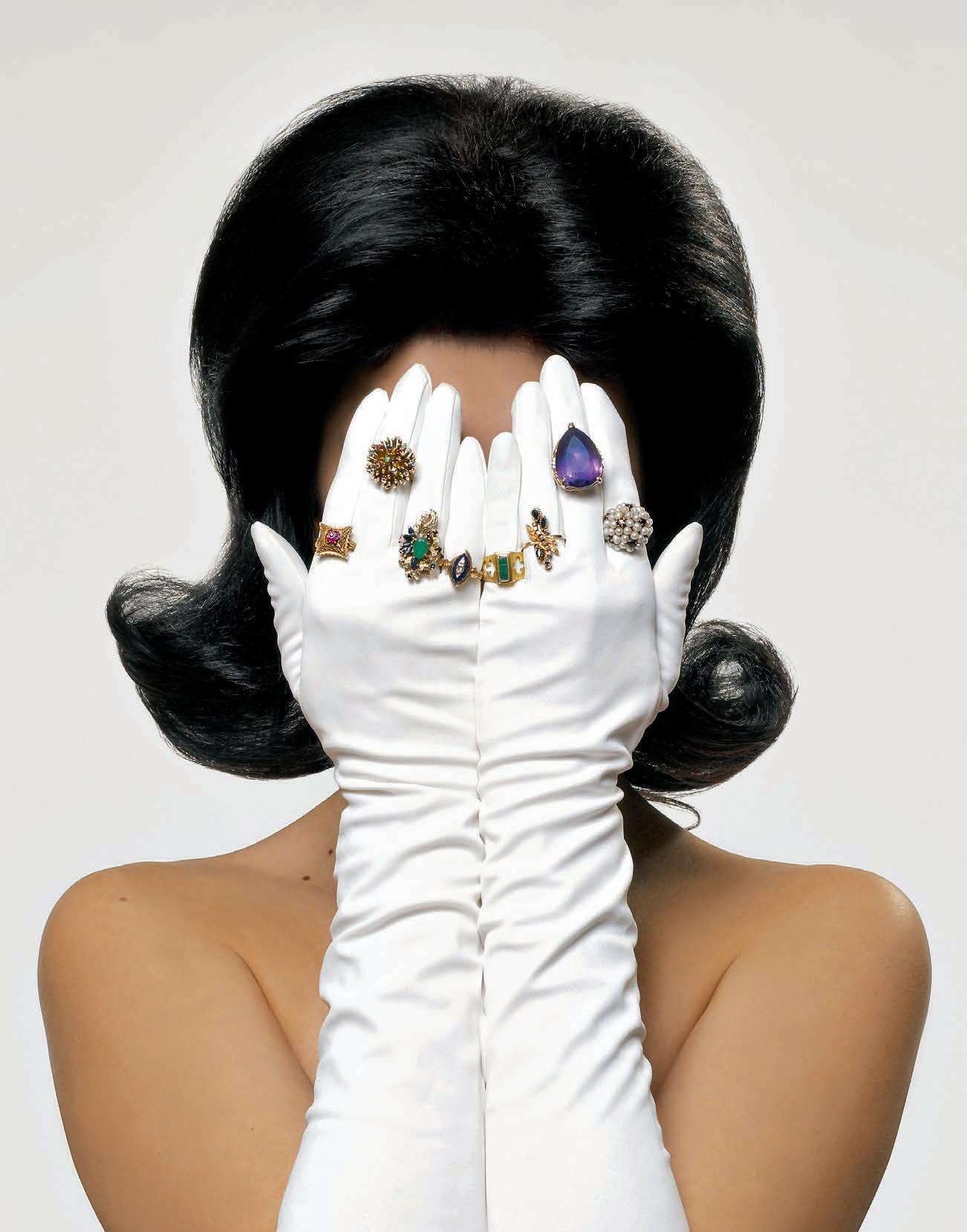
MUSÉE DE LA MARINE
RAYMOND DEPARDON
PORT-DE-BOUC
CENTRE PHOTOGRAPHIQUE
MARSEILLE
JEAN-LOUIS GARNELL
PICTURES FOR A WHILE
FRAC PROVENCE-ALPESCÔTE D’AZUR
MOHAMED BOUROUISSA
ISLAND
CAROLINE CORBASSON
À TA RECHERCHE
1962—1963, MILITARY PHOTOGRAPHER
AVIGNON
COLLECTION LAMBERT
VIK MUNIZ
IMAGINARIA
CAVAILLON
FRICHE LA BELLE DE MAI
LUDOVIC CARÈME
BRAZILS
40 YEARS LATER
CONTEMPORARY PHOTOGRAPHY IN CAMBODIA
CHAPELLE DU GRAND COUVENT
WILLY RONIS
THE LUBERON OF WILLY RONIS
MAISON DES PROJETS
ANNE-CATHERINE
BECKER-ECHIVARD NO FISH NO FUTURE
NÎMES
CARRÉ D’ART
RAYYANE TABET
FRAGMENTS
ART COLLECTION
TELEKOM
30 YEARS LATER
DANIEL G. ANDÚJAR
LEADERS
MUSÉE DU VIEUX NÎMES
TATTOOS
THE CHARLES PERRIER COLLECTION
Carré d’Art, Šejla Kamerić, 30 Years After, 2006. Courtesy of the artist and Art Collection Deutsche Telekom.
MARSEILLE
THE MAKING OF ILLUSIONS FOUAD DEBBAS COLLECTION AND CONTEMPORARY COMMENTARY
Since the 1970s, contemporary photography has o ered an alternative to illusion. The challenge of The Making of Illusions lies in the confrontation between deceptive beauty and true lies. Ever since the verismo myth of photography collapsed, visual stories have never ceased to be reinvented. Starting from the collection of Fouad Debbas and faced with his enlightening body of work, contemporary photographers point out how photography is able to refer to current political and social issues.
Exhibition curators:
CENTRE PHOTOGRAPHIQUE MARSEILLE JEAN-LOUIS GARNELL PICTURES FOR A WHILE
Jean-Louis Garnell constantly observes what is closest to him: relatives, family, nature drawing with shadows, an apartment lled with sunbeams. His way of shooting is simple, as are his subjects. He is focused on light, the frame of his main tool. “It is from a xed place, a living space, that the in nite variations present themselves. They are the ones I pick up on camera, constituting a material from which pieces take shape.”
FRAC PROVENCE-ALPESCÔTE D’AZUR MOHAMED BOUROUISSA ISLAND
Five protagonists from one of the emblematic scenes of Soy Cuba (the movie by Mikhaïl Kalatozov, released in 1964) are reunited in a critical and ideological analysis of the lm. Within the context of the 2015 Havana Biennial, Mohamed Bourouissa collaborated with the Cuban scriptwriter Estrella Diaz.
CAROLINE CORBASSON LOOKING FOR YOU
During her stay at LAM (the Laboratory of Astrophysics of Marseille), Caroline Corbasson was struck by the laboratory’s decor and explored her surroundings by focusing on its singularity. She collected technical materials, data, documents, lms, photographs and sounds, paying attention to the accurate and meticulous experiments that took place in the laboratory and man’s fragile but determined role in this great quest. This “journey before the journey” takes the form of a short lm and an installation Exhibition curator: Pascal Neveux.
FRICHE LA BELLE DE MAI LUDOVIC CARÈME BRAZILS
Exploring a favela condemned for demolition by property speculation, Carème spent over two years with its inhabitants living on borrowed time. His work drove him to dig deeper into the gulf separating the ruling classes from their victims. He then traveled upriver to the state of Acre and met with seringueiros, or rubber tappers.
40 YEARS LATER CONTEMPORARY PHOTOGRAPHY IN CAMBODIA
Photography is one of the richest and most creative domains on this new Cambodian scene. Encouraged by the Photo Phnom Penh festival, celebrating its tenth year, young people have started to express themselves as a means of analyzing, critiquing and attempting to better understand their country’s situation, and look toward the future. With styles varying from conceptual to documentary, these artists testify to a complex, fundamental rebuilding, through four decades, characterized by the questions of memory, history and identity Exhibition curator: Christian Caujolle. With works by Mak Remissa, Sorn Seyhaktit, Dit Ti Tit, Lim Sokchanlina, Sophal Neak, Philong Sovan.
TOULON HÔTEL DES ARTS HARRY GRUYAERT, PHOTOGRAPHE
After its exhibition of Mathieu Pernot in 2017, the Hôtel des arts decided to take part in the Grand Arles Express through a photographic proposal which, without being a retrospective, allows the visitor to apprehend an essential, sometimes little known, part of Harry Gruyaert’s work, an opportunity to discover never or rarely shown series from Belgium or Ireland. Furthermore, a new position will be given to video.
MUSÉE DE LA MARINE RAYMOND DEPARDON 1962—1963, MILITARY PHOTOGRAPHER
Appointed photographer for the magazine Terre Air Mer (TAM), nicknamed “the army’s Paris Match,” Raymond Depardon took two thousand medium-format photographs between July 1962 and August 1963. On behalf of the magazine, Raymond Depardon undertook a military tour of France alongside various units. Through portrait, landscape, sports and general photography, he never ceased to experiment and capture the French army as it engaged in 30 years of post-war economic and technological growth, painting the portrait of an entire generation.
Exhibition curators: Cristina Baron, Lucie Moriceau-Chastagner and Corinne Pignon.
Publication: Raymond Depardon 1962-1963, photographe militaire Cristina Baron and Lucie Moriceau-Chastagner, Gallimard/ministère des Armées, 2019.
319 318
MUCEM
Yasmine Chemali and François Cheval. With works by Mac Adams, Nadim Asfar, Vartan Avakian, Elina Brotherus, Daniele Genadry, Randa Mirza, Louis Quail, Angélique Stehli, Wiktoria Wojciechowska, Ali Zanjani.
AVIGNON
COLLECTION LAMBERT VIK MUNIZ IMAGINARIA
Exhibited at the Collection Lambert, Imaginaria comprises 15 photographs featuring saints as depicted by great artists, from Simon Vouet’s Saint Agnes to Philippe de Champaigne’s Saint Augustine and Jose de Ribeira’s Saint Sebastian.
CAVAILLON LA CHAPELLE DU GRAND COUVENT WILLY RONIS THE LUBERON OF WILLY RONIS
The eye of the “photographer who loves human beings”, as he described himself, landed on Luberon. A key gure in the history of French photography, Willy Ronis fraternally captured the everyday life of people. He produced some of his most famous work in Luberon, such as Nu provençal and Vincent aéromodéliste, taken at his Gordes (Vaucluse) family home.
L’ISLE-SURLA-SORGUE CAMPREDON
CENTRE D’ART
GUY BOURDIN IMAGE WITHIN AN IMAGE
With a painterly eye, Guy Bourdin created fascinating images through storytelling, composition, and color, exploring the realms between the absurd and the sublime. Using fashion photography as his medium, he was able to touch generations of readers by creating a moment of magic using a transient form of expression—the glossy magazine page.
Exhibition curator: Shelly Verthime.
PORT-DE-BOUC
MAISON DES PROJETS ANNE-CATHERINE BECKER-ECHIVARD NO FISH NO FUTURE
The exhibition No Fish No Future is to be taken literally. Global warming and unbearable pollution threaten the undersea world. Humans are outraged for the length of a tweet, then we return to our tiny screens, lost in an overload of information. No time to think about tomorrow. The sh is tired of su ering. He pictures himself in a retrospective where the artist shows her photographic work and her most recent project Umano sh
NÎMES CARRÉ D’ART RAYYANE TABET FRAGMENTS
Fragments includes a performance, drawings, sculptures, personal belongings, and ready-mades which, together, become a multifaceted large installation. Against the backdrop of complex contemporary geopolitics, Tabet reconstructs the material remains of the Tell Halaf palace (Syria), tracks stone reliefs scattered in museums around the world, and assembles carpet fragments. Following the deconstruction and reconstruction of remains through the accidents of history, across time, generations, and continents, the show draws on autobiographical notes and self-directed research to explore stories that o er an alternative understanding of major events through individual narratives.
DANIEL G. ANDÚJAR LEADERS
Daniel G. Andújar questions the media and the strategies used by the new means of communication, highlighting the desire for control under appearances of transparency and the failures of democratic access to data. The Carré d’Art showcases Leaders, an installation in which photographs of political leaders are manipulated, their image being put at the service of trade and advertising.
30 YEARS AFTER ART COLLECTION TELEKOM
Art Collection Telekom was created in 2010. The focus is on contemporary art from East and Southeast Europe, as an answer to the social and political changes that took place after the fall of the Iron Curtain. The exhibition is presented as a cartography highlighting geopolitical changes and the questions they raise in these di erent countries, but more generally throughout Europe.
With works by Petra Feriancova,
MUSÉE DU VIEUX NÎMES TATTOOS THE CHARLES PERRIER COLLECTION
Charles Perrier amassed a huge amount of anthropomorphic data—nationality, ethnic origin, profession, religion, distinguishing features until 1935. He analyzed, classi ed, studied and photographed inmates, taking a special interest in their tattoos. A show about late 19th and early 20th-century prison life, Tattoos draws from working documents, correspondence, original drawings, photographs and glass plates Perrier gave the Musée du Vieux Nîmes. Exhibition curator: Aleth Jourdan.
321 320
Exhibition curators: Jean-Claude Gautrand and Gérard Uféras.
Ion Grigorescu, Aneta Grzeszykowska, Igor Grubić, Petrit Halilaj, Šejla Kamerić, Eva Kot’átková, Vlado Martek, Ciprian Mureşan, Vlad Nancă, Paulina Olowska, Dan Perjovschi, Agnieszka Polska.


323 322
— Campredon centre d’Art, Guy Bourdin. Courtesy of the Guy Bourdin Estate, 2019. La Chapelle du Grand Couvent, Willy Ronis, Painter André Lhote Framing the Apt Valley Gordes (Vaucluse), 1947. Courtesy of the Ministry of Culture, MAP, RMN-Grand Palais. Willy Ronis donation.
—

— Carré d’Art, Daniel G. Andújar, Leaders 2014.
Photograph by Franz Reimer. MuCEM, Charles Lallemand, Ludovico Hart, Christian Woman from Zouk Mikael (Northern Lebanon) Smoking a Hookah and Making Co ee on a Terrace circa 1863–1865. Fouad Debbas Collection/ Sursock Museum.

Friche La Belle de Mai, Ludovic Carème, Teresinha in the Stream by Her House, Seringal Santa Rosa, Acre, Brazil, 2017.
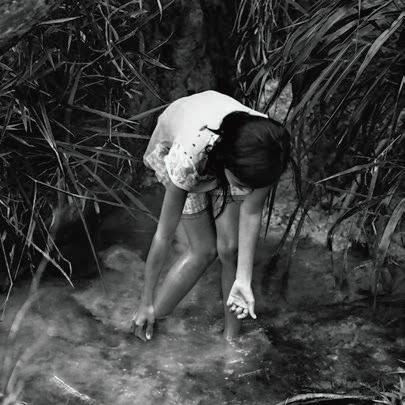
Friche La Belle de Mai, Sophal Neak, Leaf 04, 2013.
— Maison des projets de Port-de-Bouc, Penis Crusher 2012.
Frac PACA, Caroline Corbasson, Looking for You, 2019. A video produced by CNES, CNRS and FARO.


Centre Photographique Marseille, Jean-Louis Garnell, Landscapes #3 2018.

Collection Lambert, Vik Muniz, Imaginaria (Saint Rita of Cascia) 2018.

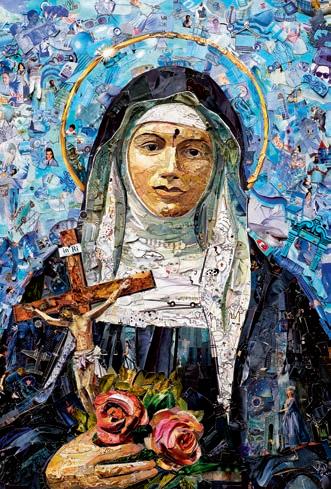
Musée de la Marine, Raymond Depardon, A day at SHAPE (Supreme Headquarters Allied Powers for Europe), Rocquencourt, 1962. TAM/ECPAD/ Défense/PAR 79-8.

325 324


327 326
— Carré d’Art, Rayyane Tabet, Dear Victoria 2016–ongoing.
Photograph by Jens Ziehe.
Musée du Vieux Nîmes, Charles Perrier, Back Tattoo, “Aux armes de Lyon”, 1898–1899.

329 328 —
Hôtel des Arts, Harry Gruyaert, Morocco, Ouarzazate, 1986.
ARLES & C O.
Our favorite o -program exhibitions
(Special rate upon presentation of a festival pass).
LUMA ARLES RACHEL ROSE ENCLOSURE
Co-produced with Park Avenue Armory, the Luma Foundation presents Enclosure at Luma Arles, an immersive video installation created by American artist Rachel Rose. Presented on an originally developed holographic screen format, Enclosure is a heist story about the transition from a feudalist to a capitalist society in the seventeenth-century agrarian English landscape, that left its disenfranchised in a state of uncertainty, susceptible to both fear and theft.
> July 1 — September 22, 2019
MUSÉE RÉATTU
WE WERE FIVE
FIVE INSTITUTE OF DESIGN STUDENTS AND APERTURE
This exhibition is centered around the 1961 Aperture publication of the work of ve students from the photography department of the Institute of Design of Chicago: Kenneth Josephson, Joseph Sterling, Charles Swedlund, Ray K. Metzker, Joseph Jachna. This publication marks the major connection between the institute, founded by László Moholy-Nagy in 1937 as “New Bauhaus”, and the magazine Aperture, founded in 1952 by Minor White, Ansel Adams, Barbara Morgan, Nancy and Beaumont Newhall.

> June 29 — September 29, 2019.
GALERIE ARENA FIFTEEN SUMMERS
Since 2004, the Régie culturelle régionale has commissioned photoreports from students of the École Nationale Supérieure de la Photographie to cover summer festivals, which now constitute an exceptional collection. Fifteen Summers is the second of three exhibitions, curated by young graduates of the ENSP. This exhibition focuses on photographs that evoke the summer holidays, a carefree season of sun, fun and love.
> July 1 — August 31, 2019.
An exhibition by the Régie culturelle régionale on behalf of the Région SUD Provence-Alpes-Côte d’Azur, in partnership with the École Nationale Supérieure de la Photographie, the Frac PACA et the Centre Photographique Marseille.
331
Musée Réattu. Ray. K. Metzker, City Whisper Chicago, 1982. Courtesy Howard Greenberg Gallery, New York.


333 332
— Luma Arles. Rachel Rose, Enclosure Courtesy of the artist, Pilar Corrias Gallery (London), and Gavin Brown’s enterprise (New York/Rome).
— Galerie Arena. Claire Béguier, Marseille August 2004.

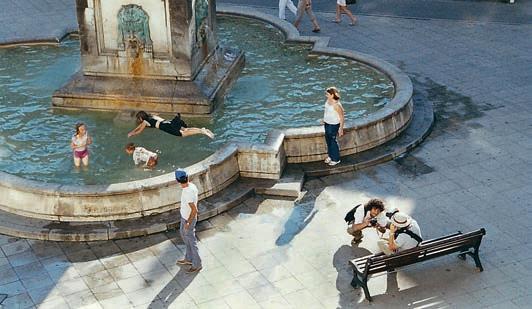


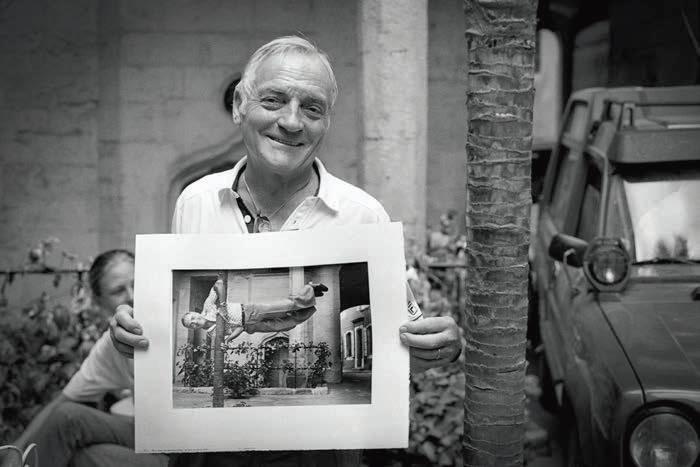


 — Faustine Ferhmin, Erik Kessels’ Loving Your Pictures exhibition Église des FrèresPrêcheurs, 2007.
— Jean-Claude Gontrand, Maryvonne Arnaud’s Templum Merinos installation on the Chapelle du Méjan facade, 1990.
— Véronique Vercheval, Raymond Desjardins, Hôtel Arlatan manager, 1984.
Claudio Marcozzi, Harry Callahan 2003.
— Faustine Ferhmin, Erik Kessels’ Loving Your Pictures exhibition Église des FrèresPrêcheurs, 2007.
— Jean-Claude Gontrand, Maryvonne Arnaud’s Templum Merinos installation on the Chapelle du Méjan facade, 1990.
— Véronique Vercheval, Raymond Desjardins, Hôtel Arlatan manager, 1984.
Claudio Marcozzi, Harry Callahan 2003.
—
Pierre-Jean Amar, Conference of Dieuzaide, Tournier, Doisneau and Kertész 1975.
— Agathe Lacoste, Erik Kessels’ 24 HRS of Photos exhibition Palais de l’Archevêché, 2013.
—
Hiroshi’s Sugimoto’s Revolution exhibition Espace Van Gogh, 2013.
—
— Diane Hymans, Visit of Audrey Tautou’s Superfacial exhibition Abbaye de Montmajour, 2018.





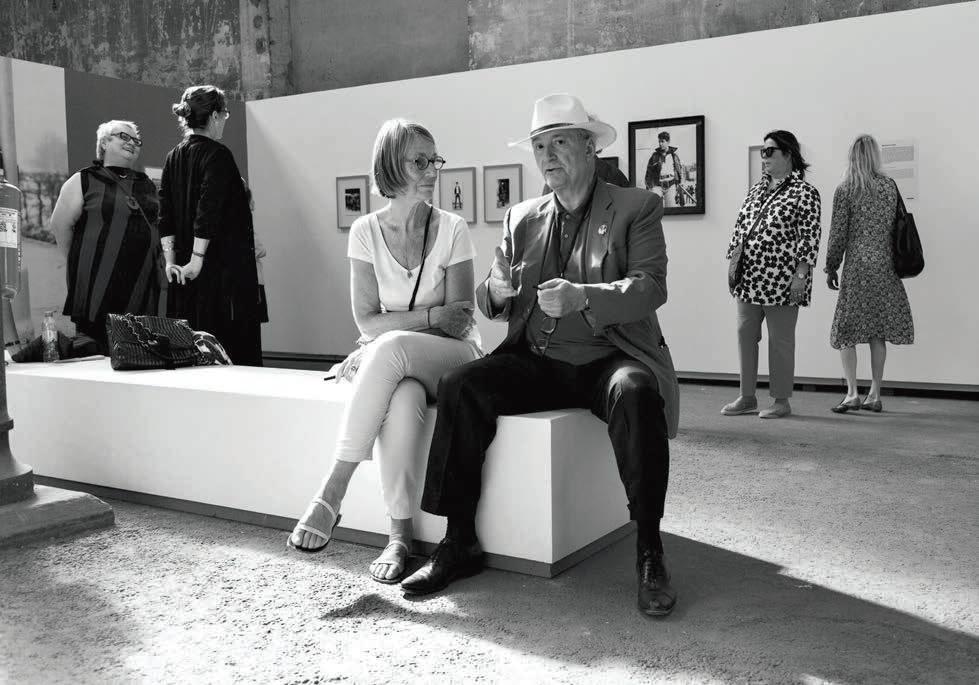


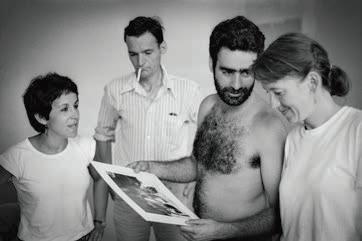 — Marie Brosillon, François Hébel, on the left, Frédéric Mitterand, in the center and Clément Chéroux, on the right, visiting Shoot, Existential Photography, 2010.
— Juliette Larochette, Françoise Nyssen, Minister of Culture and Hubert Védrine, the Rencontres d’Arles president, 2017.
— Romain Protin, William Klein + Daniel Cohn-Bendit + Rodolphe Burger Evening Théâtre Antique, 2018.
— Véronique Vercheval, Joan Fontcuberta during his workshop 1982.
— Véronique Vercheval, Georges Vercheval and Martin Parr 1986.
Pierre-Jean Amar, Guy Le Querrec’s workshop 1976. —
Agence Vu’ Here Is New York exhibition, 2002.
—
Pierre-Jean Amar, Ralph Gibson and Willy Ronis Carmargue, 1975.
— Marie Brosillon, François Hébel, on the left, Frédéric Mitterand, in the center and Clément Chéroux, on the right, visiting Shoot, Existential Photography, 2010.
— Juliette Larochette, Françoise Nyssen, Minister of Culture and Hubert Védrine, the Rencontres d’Arles president, 2017.
— Romain Protin, William Klein + Daniel Cohn-Bendit + Rodolphe Burger Evening Théâtre Antique, 2018.
— Véronique Vercheval, Joan Fontcuberta during his workshop 1982.
— Véronique Vercheval, Georges Vercheval and Martin Parr 1986.
Pierre-Jean Amar, Guy Le Querrec’s workshop 1976. —
Agence Vu’ Here Is New York exhibition, 2002.
—
Pierre-Jean Amar, Ralph Gibson and Willy Ronis Carmargue, 1975.
—
Claudio Marcozzi, Invitation to the Voyage exhibition, 1994.
—

339 MINISTÈRE DE LA CULTURE MINISTÈRE DE L’ÉDUCATION NATIONALE ET DE LA JEUNESSE DIRECTION RÉGIONALE DES AFFAIRES CULTURELLES PACA RÉGION PROVENCE-ALPES-CÔTE D’AZUR DÉPARTEMENT DES BOUCHES-DU-RHÔNE VILLE D’ARLES ARLES 2019 OPENING WEEK NIGHT EVENINGS AT THE THÉÂTRE ANTIQUE LITERATURE & PHOTOGRAPHY NIGHT OF THE YEAR DAY A MASS CHALLENGE: FROM DISSEMINATING PHOTOGRAPHY TO MANAGING ARCHIVES MEETING DAYS PHOTO FOLIO REVIEW PORTFOLIOS REVIEW OPENING WEEK ENCOUNTERS PROJECTIONS CONCERTS READINGS PERFORMANCES 1 — 7 JULY RENCONTRES-ARLES.COM COURTESY OF THE ANONYMOUS PROJECT DESIGN ABM STUDIO
NIGHT PROJECTIONS, MUSIC, READINGS, PERFORMANCES
OUR NIGHTS ARE AS BEAUTIFUL AS OUR DAYS
MONDAY JULY 1
CROISIÈRE
OPENING NIGHT
A big carnival with projections, music, booths and photography inventions opens the 50th Rencontres d’Arles to celebrate our jubilee.
TUESDAY JULY 2
THÉÂTRE ANTIQUE
AGNÈS VARDA
The committed, visionary photographer and trailblazing New Wave lmmaker was a faithful visitor to the Rencontres d’Arles.
BOOK AWARDS
Author’s book, historical book, photo-text
Main partner: Jan Michalski Foundation pour l’Écriture et la Littérature
With support from Fnac for the Author’s Book Award
XAVIER BARRAL
Homage to the talented publisher
WOMEN IN MOTION AWARD
SUSAN MEISELAS
Kering and the Rencontres d’Arles give Susan Meiselas the rst Women In Motion Award at the Rencontres d’Arles. Susan Meiselas takes a unique view of her subjects, combining the personal and the geopolitical. Covering conflicts, war, human rights issues, cultural identity and the sex industry worldwide, she uses photography, lm, video and sometimes archival materials in a constant desire to build narratives with which she associates her subjects as players while questioning the status of images (see pages 342-345).
WEDNESDAY JULY 3
VARIOUS VENUES
LITERATURE & PHOTOGRAPHY
Intimate festival venues host special times with authors. Readings/performances echo the exhibitions.
Kaouther Adimi reads from Ils ont voulu que je vive pauvre for Daphné Bengoa & Leo Fabrizio’s exhibition Building on a Human Scale: Fernand Pouillon and Algeria (Abbaye de Montmajour).
Éric Reinhardt reads from Painted Ladies for Valérie Belin’s Painted Ladies show (Mécanique générale).
Adrien Bosc reads from Un voyage, Marseille-Rio 1941 for the exhibition Germaine Krull & Jacques Rémy, A Journey, Marseille-Rio 1941 (Cloître Saint-Trophime).
LITERARY DANCE
Croisière
Four authors choose eight songs and several images from the Rencontres d’Arles photo collection. They’ll have a few hours to imagine eight stories about the festival’s hidden history. On the night of the dance at Croisière, transformed into a dance hall for the occasion, they perform the texts they wrote and ask the public to dance with them.
The Literary Dance is presented by the Théâtre Am Stram Gram - Geneva in collaboration with the Coopérative d’écriture.
THURSDAY JULY 4
THÉÂTRE ANTIQUE
LUMA RENCONTRES
DUMMY BOOK AWARD 2019
Award for best dummy book.
With support from the Luma Foundation
PRIX PICTET
Presentation of the artists selected for the eighth Prix Pictet, whose theme is hope.

ELLIOTT ERWITT
Homage to the great photographer, famous for his humor and passion for dogs, who celebrates his 91st birthday with us in July. With support from ARTE
PARIS MATCH / 70 YEARS
Another anniversary is being celebrated in Arles this year. The venerable, vibrant French weekly that has always promoted photography, especially with Roger Thérond as director, is turning 70. This is an opportunity to (re)discover icons from the world of the arts, letters and lm immortalized by the greatest photographers who worked for Paris Match
FRIDAY JULY 5
PAPETERIES ÉTIENNE NIGHT OF THE YEAR
Opening week’s unmissable festive event o ers a photographic stroll to see some 40 proposals projected in loops on three big screens and two installations: the festival’s favorite artists and photographers, carte blanche to institutions. In 2018, over 6,500 people attended this great celebration of photography mixing concerts, food trucks, bars and DJ sets.
PROJECTIONS
Projects by Rhiannon Adam, Coco Amardeil, Eva Ayache-Vanderhorst & Alice Babin, Arnaud Chochon, Alexis Cordesse, Olivier Degorce, Fatoumata Diabaté, Galya Feierman, Oan Kim & Ruppert Pupkin, Julien Gester, Camille Gharbi, Sylvain Grangon, Harry Gruyaert, Nick Hannes, Jill Hartley, Jan Hoek, Alexa Hoyer, Vincent Jendly, Stratos Kalafatis, Aart Kooij, Algimantas Kuncius, Toni Kuraga, Jack Latham, Aleksi Poutanen, Kamille Lévêque Jégo, Malika Mihoubi & Loïc Xavier, Musée du Vieux Nîmes, Sara Perovic, Augustin Rebetez, Émilie Saubestre, Hashem Shakeri, Max Siedendof, Patrice Terraz, Jonathan Torgovnick, Tbilissi Photo Festival, Céline Villegas, Vincent Voignier & Barbara Bernardi, Vivien Ayroles, Diana Baidal, Claire Béguier, Clémentine Crochet, Alan Eglinton, Matt Frenot, Marie Guichaoua, Léa Habourdin, Lola Hakimian, Jessica Hervo, Agathe Lacoste, Florian Maurer, Anne-Sophie Tritschler, Cloé Vignaud, etc.
CONCERT & DJ SETS
The Rencontres d’Arles gives carte blanche to Nuits Sonores, Lyon’s electronic music festival that will celebrate its 20th anniversary in Arles.
PERFORMANCES
The ilotopie* company takes its “People of Color” to the streets, from far away to the banks of the Rhône, a great water theater that carries along islands and Ilotopians.
SATURDAY JULY 6
THÉÂTRE ANTIQUE
AWARDS CEREMONY
Prix de la photo Madame Figaro Arles 2019

Photofolio Review 2019
Louis Roederer Discovery Award 2019 (see p. 210)
With support from the Louis Roederer Foundation and Polka
THE RENCONTRES LIVE MAGAZINE
To celebrate the festival’s 50th anniversary, 10 people—star photographers, taciturn authors, unexpected celebrities—will take the stage of the Théâtre Antique to talk about a love a air, a broken dream, an unusual investigation or an unforgettable meeting in images, sounds or the spoken word. Experience it live, and only live, on a summer night.
JULY 2 — 6 FANTON COURTYARD
FANTON NIGHTS
TËNK CALLS AT ARLES
A documentary break in the Arlesian nights! Tënk, an online platform of authors’ documentaries, and the Rencontres d’Arles turn the Fanton courtyard into an outdoor movie theater with documentaries that have never been seen before and rare lms. In partnership with Tënk
The evenings’ artistic directors: Aurélie de Lanlay, Laurent Perreau, Sam Stourdzé, Aurélien Valette
341 340
Photograph: Ana Lefaux.
Photograph: Anaïs Fournié.
WOMEN IN MOTION AWARD
SUSAN MEISELAS
Susan Meiselas first major photographic essay focused on the lives of women doing striptease at New England country fairs, who she photographed during three consecutive summers while teaching photography in New York public schools. Carnival Strippers was originally published in 1976.
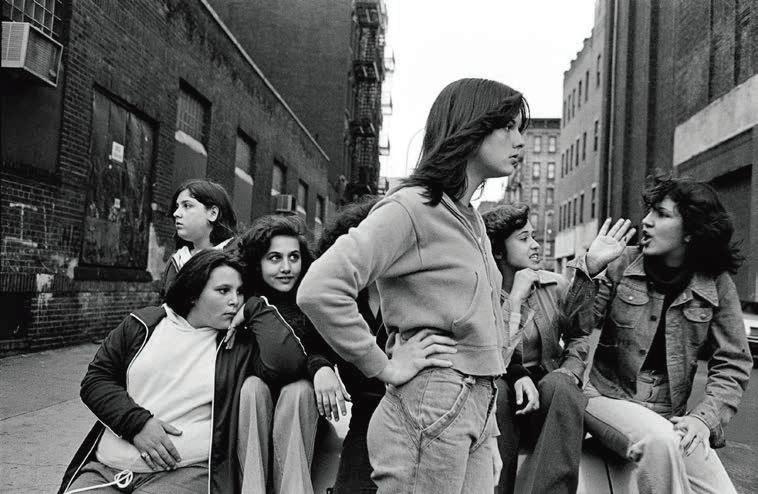
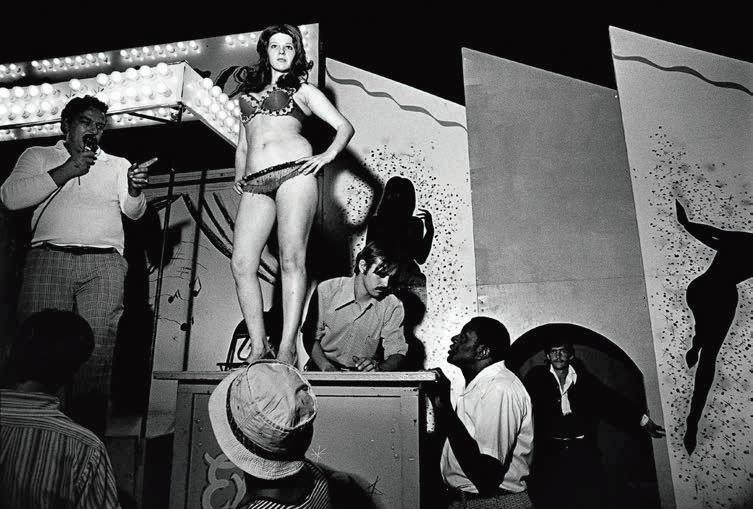
Meiselas joined Magnum Photos in 1976 and has worked as a freelance photographer since then. She is best known for her coverage of the insurrection in Nicaragua and her extensive documentation of human rights issues in Latin America. She published her second monograph, Nicaragua, June 1978–July 1979 , in 1981. Meiselas served as an editor and contributor to the book El Salvador: The Work of Thirty Photographers (1983) and edited Chile from Within (1991) featuring work by photographers living under the Pinochet regime. She has co-directed three lms, Living at Risk: The Story of a Nicaraguan Family (1986); Pictures from a Revolution (1991) with Richard P. Rogers and Alfred Guzzetti where she searches for the people in her photographs ten years after they were taken and Re-framing History (2004) where she returns to Nicaragua with murals to place in the landscape where they were rst made.
In 1997, she completed a six-year project curating a hundred-year photographic history of Kurdistan, integrating her own work into the book Kurdistan: In the Shadow of History (1997). Her 2001 monograph Pandora’s Box (2001) which explores a New York S & M club, has been exhibited both at home and abroad. The 2003 book and exhibition Encounters with the Dani documents a sixty-year history of outsiders’ discovery and interactions with the Dani, an indigenous people of the highlands of Papua in Indonesia.
Her most recent project A Room Of Their Own (2015-2016) explores the experiences of women in a refuge in the Black Country UK. Commissioned by UK based arts organization Multistory, Meiselas led a series of workshops with women in refuge to create visual narrative combining photographs, rst hand testimonies and original artwork.
WOMEN IN MOTION
In 2015, Kering launched the Women In Motion program for the lm industry at the Festival de Cannes. In 2019, it joined forces with the Rencontres d’Arles to highlight work by women in the world of photography. Kering and the Rencontres d’Arles were delighted to present Susan Meiselas with the Kering Women In Motion Award at the Rencontres d’Arles in recognition of her outstanding career. Accompanied by €25,000 in prize money for the acquisition of works, the Women In Motion Award was given to Susan Meiselas in the Théâtre Antique at a gala evening on Tuesday, July 2, during which she told her life story in a series of pictures. This year, Kering and the Rencontres d’Arles also launched the Women In Motion LAB, a program to support a publishing project about the place of women in the worldwide history of photography.
Meiselas has had one-woman exhibitions in Paris, Madrid, Amsterdam, London, Los Angeles, Chicago, San Francisco and New York, and her work is included in collections around the world. She has received the Robert Capa Gold Medal for her work in Nicaragua (1979); the Leica Award for Excellence (1982); the Engelhard Award from the Institute of Contemporary Art (1985); the MacArthur Fellowship (1992); the Hasselblad Foundation Photography prize (1994); the Cornell Capa In nity Award (2005); the Harvard Arts Medal (2011) and most recently was awarded a Guggenheim Fellowship (2015) and the Deutsche Börse Photography Foundation Award (2019) for his rst European retrospective at the Jeu de Paume in Paris.
Meiselas has served as President of the Magnum Foundation since its founding in 2007.



343 342
— Lena on the Bally Box, Essex Junction, Vermont, 1973. Courtesy of Susan Meiselas/ Magnum Photo [all photographs]. Hanging out on Baxter Street Little Italy, 1978.
Portrait of Susan Meiselas: courtesy of Meryl Levin.
Susan Meiselas’ work is also presented in the Unretouched Women exhibition (see p. 124-131).
— Muchachos await counterattack by the Guard Matagalpa, Nicaragua, August 1978.

— Traditional mask from the town of Monimbo, adopted by the rebels during the ght against Somoza to conceal identity Nicaragua, 1978.

345 344
DAY
A MASS CHALLENGE: FROM DISSEMINATING PHOTOGRAPHY TO MANAGING ARCHIVES


JULY 2 AND 3
THÉÂTRE D’ARLES

Two days of talks, conversations, projections and performed readings with researchers, artists, conservators and curators.
As part of its mission to preserve and promote photographers’ archives, the Institute for Photography brings together institutions, photo agencies and authors to exchange ideas on the management of archives, their history and their development from analog to digital photography. A presentation of the latest issue of the magazine Transbordeur. Photographie. Histoire. Société will follow the round table.
The second day’s theme is “Photography, Object of Dissemination” with Catarina Boieiro, Aurélien Froment, Audrey Leblanc and Christel Pedersen, the rst four recipients of the Institute for Photography’s research and creation grant. Artists, curators and researchers are invited to discuss the use of photographs in lm, contemporary art, the media and politics.
Guest speakers: Estelle Blaschke, Clara Bouveresse, Clément Chéroux, Olivier Lugon, Magali Nachtergael, Walter Moser, Anne Reverseau, the Société des Auteurs des arts visuels et de l’Image Fixe (Saif), Estelle Sohier, Sabine Süsstrunk, Dominique Versavel and Véronique Yersin.
Under the direction of the Institut pour la photographie, Hauts-de-France. Anne Lacoste, director, Véronique Terrier Hermann, head of the creation funding program. Organized by the Institut pour la photographie, co-produced with the Rencontres d’Arles.
In partnership with Transbordeur. Photographie. Histoire. Société
PHOTO FOLIO REVIEW
Since 2006, Photo Folio Review & Gallery has o ered portfolio readings during the festival’s opening week. Open by registration, they are aimed at professional photographers, photography school students and advanced amateurs. In 2018, we had the pleasure of welcoming 132 international experts and booked sessions for nearly 300 photographers from 26 countries.
The portfolios are reviewed by international photography experts, including publishers, curators, heads of institutions, agency directors, gallerists, collectors, critics and art directors for publications. During private, individual meetings, participants receive precious advice
and constructive appraisals appropriate to their level. Some contacts lead to exhibition projects, acquisitions and/or publication.
Last but not least, each year, the experts vote for their favorite portfolio and select a winner whose work is exhibited in the o icial selection of the Rencontres d’Arles the following year. Kurt Tong won the Photo Folio Review in 2018.
—
347 346
Jean-Pierre Amar, Lecture in the courtyard of the Commanderie Sainte-Luce 1976.
—
Claudio Marcozzi, Claude Fauville and Je Dunas, portfolio readings, 1998.
Photo Folio Review Les Rencontres d’Arles, 2015.
EDUCATION & TRAINING
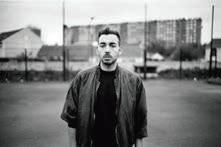
PHOTOGRAPHY WORKSHOPS CLICKS AND CLASSES
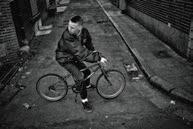
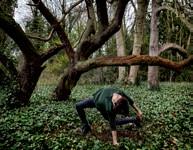
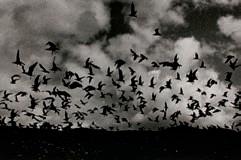
IMAGE EDUCATION




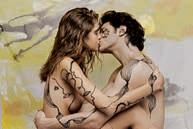



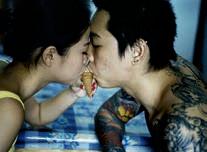






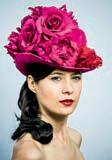
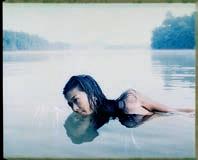





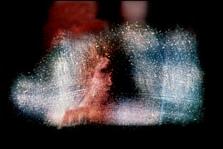
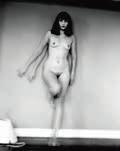
FROM LEFT TO RIGHT, AND FROM TOP TO BOTTOM Diana Lui, Jean-Christian Bourcart, Denais Daileux, Jane Evelyn Atwood, Julien Mignot, Yann Rabanier, Guillaume Herbaut, Frédéric Stucin, Paulo Nozolino, Vee Speers, Ambroise Tézenas, Éric Bouvet, Corinne Mercadier, Bertrand Meunier, Jean-Christophe Béchet, Julien Magre, Martin Bogren, Machiel Botman, Jérôme Bonnet, Antoine d’Agata, Françoise Huguier, Ludovic Carème, Grégoire Korganow, Charlotte Abramow, Claudine Doury, Klavdij Sluban, Léa Crespi, Cédric Gerbehaye, Laura Henno.
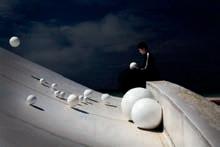
349
LEARNING PHOTOGRAPHY
Many courses, accessible to all, aim to help photography enthusiasts as well as image or education professionals expand their knowledge and creativity.
CLICKS AND CLASSES
WORKSHOP EVENING PRESENTATION
WEDNESDAY NIGHTS
PHOTOGRAPHY WORKSHOPS
The photography courses, a reference in Europe, are known for their instructors’ quality and attentiveness to participants whatever their experience.

Photographers and enthusiasts on all levels share their viewpoints and improve their work alongside recognized professionals.
Participants in this intense, friendly immersion alternate between eldwork and well-reasoned choices to create a personal series.
In 2019, courses will take place year round with: Jeannie Abert, Charlotte Abramow, Jane Evelyn Atwood, Jean-Christophe Béchet, Martin Bogren, Jérôme Bonnet, Machiel Botman, Jean-Christian Bourcart, Romain Boutillier, Éric Bouvet, Ludovic Carème, Léa Crespi, Antoine D’Agata, Denis Dailleux, François Deladerrière, Florent Demarchez, Claudine Doury, Christian Caujolle, Cédric Gerbehaye, Nicolas Havette, Laura Henno, Guillaume Herbaut, Sylvie Hugues, Françoise Huguier, Patrick Le Bescont, Yann Linsart, Diana Lui, Julien Magre, Corinne Mercadier, Bertrand Meunier, Julien Mignot, Paulo Nozolino, Yann Rabanier, Klavdij Sluban, Vee Speers, Frédéric Stucin, Ambroise Tézenas, Aurore Valade.
Main partner: Olympus.
With support from Hahnemühle FineArt.
Projections with course instructors. Each week, great professionals present a selection of their work and discuss their experiences.
FRIDAY POP - UP SHOWS
Opening of the show of work by course participants with their teachers in attendance. Created in a few days in Arles or the environs, the exhibitions cover photography’s many facets: documentary, ctional, intimate, conceptual, etc.
ARLES, BEYOND ENCOUNTERS
The Rencontres will present a selection of photographs made during the spring and summer 2019 courses. The goal: to show new work and share projects passionately constructed during a photo immersion in Arles.
The complete series are also presented at workshopsgalerie.rencontres-arles.com


Main partner: Olympus. With support from Hahnemühle FineArt.
Clicks and Classes, a national program run by Réseau Canopé on behalf of the Ministry of National Education, aims to raise young people’s awareness of photography.
Every year, classes on every level carry out a creative project with a photographer. A selection of their work is shown at the Rencontres and then across France in the Ateliers Canopé.
SEEING THE INVISIBLE, SHOWING THE INVISIBLE: THE 2018 — 2019 THEME
How can what cannot be seen because it has no material existence, like a philosophical concept, an idea, a feeling or something invisible, be shown? Participants are led to think about how photography shows reality and that which cannot be seen.
Based on that theme, from October to March, 14 groups from 19 classes on the primary to middle school levels worked with a photographer to represent ideas such as borders, passing time, fear, the archeological past, dreams, the invisible in the landscape, language, etc.
Clicks and Classes in gures: Over 500 students
14 projects
19 classes: 8 in primary and 11 in middle schools
13 photographers
With classes from: Le Vernet (09), Saint-Lizier (09), Gond-Pontouvre (16), Ezy-sur-Eure (27), Saint-Hilaire-de-Brethmas (30), Saint-Laurent-du-Pont (38), Vallet (44), Saint-Chély (48), La Canourgue (48), Sarreguemines (57), Nevers (58), Arleuf (58), Mulhouse (68), Saint-Varent (79), Ménigoute (79), Avignon (84).
With the photographers: Stéphane Bellanger, Frédéric Grimaud, Anthony Hamidovic, Frédéric Lecloux, Virginie Marnat, Leslie Moquin, Yann Pendaries, Carole Reboul, Benjamin Roi, Lisa Rondeau, Bridget Sheridan, Emilie Vialet, Olivier de Sépibus.
—
351 350
Editing, photograph by the Rencontres d’Arles.
Photograph: Loïc Colomb.
—
The Adhesive Tape Prospectors Produced by Yann Pendaries and pupils at tke Loges high school in Nevers – Réseau Canopée.
IMAGE EDUCATION
TEACHING HOW TO SEE
In the “age of images”, teaching children how to decipher and look at them critically is a matter of good citizenship. The public usefulness of image education no longer needs demonstrating. Democracy depends on it.

Aware of all that, for many years the Rencontres d’Arles has led an energetic visual education policy backed by many private, institutional and educational partners.
The Rencontres d’Arles has exponentially developed its education program for over 15 years.
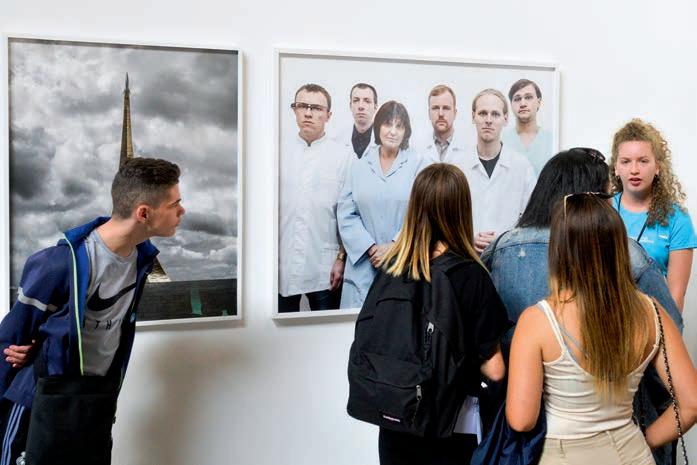
It o ers many courses and outreach activities year round and designs mobile teaching tools to support this mission in France and overseas.
The Pause Photo Prose game and the Observe-See visual education platform provide a rising number of inquisitive minds with the keys they need to con dently understand images.
SUMMER IN ARLES
YOUNG PEOPLE
YOUNG PEOPLE’S WORKSHOPS
The Rencontres d’Arles o ers little festival-goers fun educational breaks. Every day, a mediator-photographer leads di erent two-hour workshops on photography and reading images.
BACK TO SCHOOL IN IMAGES
THE 16TH EDITION SEPTEMBER 4 —18
Almost 10,000 students in nearly 300 classes from the primary school to master’s level and 700 teachers in every eld participate in Back to School in Images each year. For one day, they can watch projections, tour exhibitions, take hands-on workshops or explore Arles’s heritage.
PROFESSIONAL TRAINING
THE PROFESSIONAL IMAGE EDUCATION MEETINGS
SEPTEMBER 19—21
The Rencontres d’Arles invites cultural, educational, and social players, and anybody with questions about image education, to meet each other for three days of activities, experiments, and experience sharing. This event o ers turnkey tools to implement activities for all.
YEAR ROUND EVERYWHERE MOBILE & TRAINING TOOLS
OBSERVE-SEE
THE RENCONTRES D’ARLES IMAGE EDUCATION PLATFORM
The Rencontres d’Arles has developed Observe-See, a digital platform with free photography teaching tools and resources. It o ers schoolchildren and the education community 32 photographs selected from the festival’s di erent years and information on their authors, avenues of reflection, and speci c proposals for fun workshops based on this body of work. Participants can also give feedback about the workshops. Users can explore images by examining the production and dissemination context.
It also o ers content and resources to help everybody understand photography and its ecosystem better, including:
— A lexicon of nearly 200 photography and image terms
— A timeline of photography’s key technical innovations
— A photography and image and media education bibliography
— An interactive map with over 100 places devoted to photography in France: festivals, permanent exhibitions and image education
— A list of nearly 40 resource sites focusing on the history of photography, visual culture, techniques and image education
— News and links to many partners that will enrich the platform over time
— Information on photography careers and courses.
PAUSE PHOTO PROSE A GAME TO OBSERVE, LISTEN AND REASON AS A TEAM
The Pause Photo Prose board game fosters curiosity, expressiveness, attentiveness and collective intelligence and calls on speed, observation and team spirit.
TAILORMADE COURSES & EXPERIMENTATION
Every year, the Rencontres d’Arles o ers training on request in using the festival’s tools.
The courses are open to all but mainly aimed at the education community, public reading networks, cultural organizations and social workers.
353 352
Photograph: Romain Boutillier. —
Photograph: Romain Boutillier. —
ARLES OFF-SITE
2019–2020 ITINERANT EXHIBITIONS OF THE RENCONTRES D’ARLES
JIMEI X ARLES
INTERNATIONAL
PHOTO FESTIVAL
Xiamen, China
> November 22, 2019 — January 5, 2020
GREGOR SAILER
THE VILLAGE POTEMKINE
Centre de la photographie
Genève, Switzerland
> February 27 — April 21, 2019
HOME SWEET HOME
1970 — 2018: THE BRITISH HOUSE, A POLITICAL HISTORY
Institut pour la Photographie, Lille
> October 11 — December 15, 2019
LA MOVIDA
A CHRONICLE OF TURMOIL, 1978 —1988
Fundación Foto Colectania, Barcelona, Spain
> Fall 2019 — early 2020
MARINA GADONNEIX PHENOMENA
MOMENTA Biennale de l’image
Musée d’Art de Joliette, Canada
> September 4 — October 13, 2019
ON EARTH IMAGING, TECHNOLOGY AND THE NATURAL WORLD
FOAM, Amsterdam, Netherlands
> Fall 2019 — early 2020
PHOTO | BRUT COLLECTION BRUNO DECHARME & COMPAGNIE
American Folk Art Museum, New York City, USA
> June 16 — October 18, 2020
SINCERELY QUEER SÉBASTIEN LIFSHITZ COLLECTION

Musée des Beaux-Arts, Montreal, Canada
> April 2020
Sincerly Queer exhibition. Man dressed as a woman, United States, ca. 1930. Courtesy of the Sébastien Lifshitz Collection.
—
JIMEI x ARLES
INTERNATIONAL PHOTO FESTIVAL

NOVEMBER 22, 2019 — JANUARY 5, 2020
In four years, the Jimei x Arles festival has become a destination for photography fans in China and Asia. Founded by Rencontres d’Arles director Sam Stourdzé and Chinese photographer RongRong (of Three Shadows Photography Art Centre, China’s rst center devoted to photography), each year, Jimei x Arles brings several exhibitions from the Rencontres d’Arles to China and produces around 20 exhibitions for Chinese and Asian photographers. French President Emmanuel Macron has lauded the festival on several occasions (his State visit to China in 2018, for one) as an example of cultural cooperation between France and China. Bérénice Angremy and Victoria Jonathan (founders of the art and culture agency Doors) have taken on direction of the festival since 2017. Last year, the festival drew 70,000 visitors.
Xiamen, formerly Amoy, has for centuries been one of the largest ports of coastal China. Across a strait from Taiwan, known for its Gulangyu Island and architecture dating back to colonial times, Xiamen is a vibrant and modern city, home to China’s young independent fashion scene. The two main festival sites (including Three Shadows Xiamen Photography Art Centre, open year-round, with exhibitions by Araki, Daido Moriyama, and Bettina Rheims) are located in Jimei, the new business district. Since the beginning, the festival has included the Local Action program, drawing in the local creative scene and o ering satellite exhibition sites, such as Xiamen’s oldest cinema, an abandoned o ice floor in a tower block, an artist’s village, a university...
As much as the Festival brings international photographers to China (René Burri, Joel Meyerowitz, Toiletpaper, Matthieu Gafsou, Mathieu Pernot…) through its partnership with the Rencontres d’Arles, it is also a platform for young Chinese photographers. Every year, ten people of talent are nominated for the Discovery Award. At stake is a prize and an exhibition at the following summer’s Rencontres d’Arles. The 2018 award winner, succeeding Zhu Lanqing, Céline Liu, and Feng Li, is Lei Lei, with Romance in Lushan Cinema, created for the Rencontres d’Arles and shown at the Atelier des Forges.
In 2017, the festival inaugurated the rst award dedicated to female photographers in China, with the Chinese edition of Madame Figaro magazine and the support of Kering – Women In Motion. 2017’s winner was Guo Yingguang (born in 1983) with her series on arranged marriages, The Bliss of Conformity, shown at Arles in 2017 and at MEP in 2018. Pixy Liao is 2018’s winner, representing male-female relations by posing with her partner for the series Experimental Relationship , shown this summer at Croisière.
For photography from the Asian region, following Indonesia in 2017, and South Korea in 2018, several Indian photographers have been invited to the festival this year.
357 356
JIMEI x ARLES XIAMEN
BEIJING SHANGHAÏ HONG KONG
CREDITS
TWO ANNIVERSARIES 50 YEARS FOR THE RENCONTRES D’ARLES, 100 YEARS FOR OLYMPUS
Since its creation, Olympus has been a leader in developing cutting-edge optics, rst in science, then in photography and more recently in medicine. Its creative capacity, its know-how and the synergy between its various activities have fostered innovation and openness to new technology.
The brand continues to break new ground and meet professional and amateur photographers’ expectations. Its commitment to photography has remained steady over the years.
Backing the Rencontres for the 12th year is evidence of that.
This year, Olympus wants to introduce its latest cases and lenses. Every festival-goer and course participant will be able to discover, borrow and use the brand’s latest cameras. We look forward to this edition and wish the Rencontres d’Arles an unforgettable 50th anniversary.
359
PARTNERS ACKNOWLEDGEMENTS
BOARD OF DIRECTORS TEAM
ABOUT LUMA
In 2004, Maja Ho mann created the Luma Foundation in Switzerland to support the activities of artists, independent pioneers, and organizations working in the visual arts, photography, publishing, documentary lmmaking, and multimedia. Envisioned as a production tool for Ho mann’s multi-faceted ventures, the Luma Foundation produces, supports, and enables challenging art projects committed to an expansive understanding of environmental issues, human rights, education, and culture.
In 2013, Ho mann launched Luma Arles to plan, develop, and manage the Parc des Ateliers, an expansive former industrial site located in Arles, France. Luma Arles includes a resource center designed by architect Frank Gehry; various industrial buildings rehabilitated by Selldorf Architects; and a public park designed by landscape architect Bas Smets. In anticipation of its completion—the site’s main building designed by Gehry will open in 2020—Ho mann works closely with the Luma Arles Core Group (Tom Eccles, Liam Gillick, Hans Ulrich Obrist, Philippe Parreno, and Beatrix Ruf) on a program of exhibitions and cross-disciplinary projects presented each year in the site’s newly rehabilitated venues of the Grande Halle, the Forges, the Mécanique Générale and the Formation.
Recent projects produced by the Luma Foundation for Luma Arles at the Parc des Ateliers in Arles include: Picture Industry: A Provisional History of the Technical Image, 1844–2018, curated by: Walead Beshty (2018-19); Gilbert & George: The Great Exhibition, 1971– 2016 (2018-19); Pipilotti Rist – Pixel Forest (2018); Rirkrit Tiravanija, Nikolaus Hirsch and Michel Muller, Do We Dream Under The Same Sky (2018); Arthur Jafa – Apex (2018);
Amar Kanwar – Such a Morning (2018);
Lily Gavin – A story with Vincent (2018);
Jean Prouvé: Architect for Better Days (2017–18);
Annie Leibovitz – The Early Years: 1970-1983 (2017), the inaugural exhibition of the foundation’s Living Archives Program; Arthur Jafa: Love is the Message, the Message is Death (2017); a series of ongoing collaborations with several artists launched six years ago, that integrates diverse forms of artistic production, lm, and dance.
For the past ve years, Luma has hosted a guest program at the Parc des Ateliers, which includes among others, Les Rencontres d’Arles and the music festival Les Suds.
The Luma Foundation is delighted to have participated in de ning and supporting the Discovery Award from 2002 to 2016, and is now supporting Les Rencontres d’Arles through the Luma Rencontres Dummy Book Award, launched in 2015.
BMW AND CONTEMPORARY PHOTOGRAPHY
In 2019, BMW is celebrating two anniversaries: 10 consecutive years of patronage with the Rencontres d’Arles and the festival’s 5th decade. The BMW Residency presents the exhibition of the eighth laureate: When the Clouds Speak of Emeric Lhuisset at the Cloître Saint Trophime.
Since 2011, BMW Group has supported photography through an ambitious cultural partnership in the form of an artist’s residency. The BMW Residency emerged from the desire to promote contemporary photography and surprising young talents in partnership with Gobelins, the school of visual arts. The Residency includes an annual grant to help two students fund their education, combining support for young photographers and transmission, values at the heart of the group’s social commitment.
“As partners of emerging photographers,” says BMW Group France CEO Vincent Salimon, “every year we take the risk of choosing artists who advance on their projects during their residency. Emeric Lhuisset’s exhibition will not fail to surprise the public. More than any speech, it demonstrates the freedom to create that our company gives artists in residence.”
Philanthropy and cultural patronage have been an integral part of the BMW Group’s culture for over 45 years. This program allows an emerging photographer, chosen by a jury of recognized gures, to carry out a project during a three-month residency. Under François Cheval’s artistic direction, artists can explore new areas of reflection. In addition to receiving a €8,000 grant, the winners see their work exhibited at the Rencontres d’Arles, at Paris Photo and in a book co-published by BMW and les éditions Trocadéro.
BMW and the Rencontres d’Arles cooperate in a spirit of ongoing commitment.
Press contact BMW France: Maryse Bataillard + 33 (0)1 30 43 93 23 maryse.bataillard@bmw.fr bmw.fr/artetculture
361 360
KERING WOMEN IN MOTION
A global luxury group, Kering brings together and develops emblematic Houses in fashion, leather goods, jewelry and watches: Gucci, Saint Laurent, Bottega Veneta, Balenciaga, Alexander McQueen, Brioni, Boucheron, Pomellato, Dodo, Qeelin, Ulysse Nardin, Girard-Perregaux and Kering Eyewear. By putting creativity at the heart of its strategy, Kering allows its brands to push back their limits of creative expression while promoting sustainable, responsible luxury. That is the meaning of its signature: “Empowering Imagination”.
Kering has been committed to gender equality since its creation. Its initiatives include Women In Motion, a program launched in 2015 by Kering, a partner of the Festival de Cannes. Women In Motion focuses on women’s recognition and their inestimable contribution to the lm industry. The program’s prizes are awarded to inspirational individuals and talented young women, while its talks are an opportunity for people who have made their mark on the industry to share their views on the way women are represented both on the screen and within their profession. More than 50 talks have been held around the world since 2015 about the role of women and the issue of equality, not only in the movie industry but also in arts and literature.
In 2016, Women In Motion branched out into photography by supporting the Prix de la Photo Madame Figaro Arles and Arles x Jimei in China.
In 2019, Women In Motion is teaming up with the Rencontres d’Arles and bolstering its commitment to women photographers, rst by creating the Women In Motion Award to honor the lifetime achievement of a recognized photographer. Meanwhile, Kering and the Rencontres d’Arles will launch the Women In Motion LAB, which, in its earliest years, will be devoted to research on women in the history of photography worldwide.
Lastly, Women In Motion will renew its support of the Prix de la Photo Madame Figaro Arles, which is awarded to a young female talent.
For the past ve years, Women In Motion has been a platform of choice for helping to change mindsets, for celebrating the work of leading gures, and for reflecting on the role and recognition given to women in arts and culture, since the issue of inequality still applies to all the artistic elds.
Press contacts:
Emilie Gargatte emilie.gargatte@kering.com
Eva Dalla Venezia eva.dallavenezia@kering.com kering.com
THE FONDATION JAN MICHALSKI POUR L’ÉCRITURE ET LA LITTÉRATURE
In 2004, Vera Michalski-Ho mann set up the Fondation Jan Michalski pour l’Écriture et la Littérature in memory of her husband as a way of continuing their shared commitment to writers.
Designed as a small community in the heart of an inspirational natural setting, the foundation develops diverse activities, aiming to foster creative writing and encourage reading. The library—multicultural, multilingual, and open to all since 2014—has more than 65,000 works of modern and contemporary literature. The auditorium also hosts diverse cultural events: literary discussions, readings, projections, plays, concerts, performances… In addition, every year the foundation stages three temporary exhibitions showing writing, literature, and books from di erent perspectives: the world of writers, the history of movements and genres, and the works of artists that bring together image and word are made available. Since the spring of 2017, the writers-in-residence program, conceived to o er a conducive environment for creativity, has welcomed novice and established writers of all
backgrounds who are beginning, continuing, or completing a project. Furthermore, the Jan Michalski Prize for Literature, awarded annually, strengthens the foundation’s actions by honoring an outstanding work of world literature. The foundation also provides grants for numerous literature-related projects.
The Fondation Jan Michalski o ers a unique cultural space, open to the world, where writers, artists, and members of the public mix.
Fondation Jan Michalski pour l’Écriture et la Littérature En Bois Désert 10 CH-1147 Montricher fondation-janmichalski.com
363 362
SWISS CONFEDERATION
For ve years, Switzerland has had a presence in the heart of the Rencontres, which celebrate their 50th anniversary this year. Both anniversaries show that love lasts when the programme avoids routine.
This unique partnership allows us to exchange ideas and showcase our country through images. A country which is as diverse as the cultures that comprise it. Switzerland proudly expresses itself at Arles with its artists, institutions, schools, festivals, publishers—and the nonante-neuf. Yes, the nonante-neuf a welcoming venue of must see events where people discuss Switzerland and photography. This year, Croisière will host Swiss photography with the help from the canton and City of Geneva. The Swiss Arts Council Pro Helvetia o ers a series of discussions at nonante-neuf Talks, a friendly place in the heart of Temple Arles Books where people swap ideas and share.
The festival’s 50th anniversary programme o ers once again an in-depth look at Swiss photography, including Mario del Curto and his reflections on manmade gardens; Leo Fabrizio and Daphné Bengoa’s project featuring architect Fernand Pouillon’s work in Algeria; and, especially, Eldorado by Geneva’s Christian Lutz, an observation of two cities where anything goes, Las Vegas and Macao.
TECTONA
Awakening emotions, seeking out beauty, capturing the light of Provence… it was only natural for Tectona to become a partner of the Rencontres d’Arles.
As a creator of outdoor furniture, Tectona breathed new life into the brand by giving designers the mission of renewing its range. Design is the sign of a vital, dynamic brand that dares to innovate and challenge itself. Design brings forth creative solutions and looks to the future of the brand by analyzing our habits and needs.
Thanks to the combination of elegance and quality in materials and treatments, Tectona has established itself over nearly forty years as the benchmark for ne outdoor furniture. Forms of classic simplicity, materials chosen for their beauty and ability to defy the years, faultless quality produced by skilled craftsmanship allied with cutting-edge technology: all these contribute to the Tectona style. Tectona furniture combines the most classic shapes with the most contemporary designs for enjoying an outdoor lifestyle in the city, the country, the mountains and at the sea.
Open your senses to the spellbinding light of Provence: Tectona furniture, provided to the Rencontres d’Arles for the nonante-neuf terrace, invites visitors to slow down, relax, and absorb the marvellous encounters of this festival.
LËT’Z ARLES (LUXEMBOURG)
Lët’z Arles is a Luxembourg-based organization that supports and promotes photography and artists with ties to Luxembourg, especially by producing shows, catalogues and artists’ books.
Every year, Lët’z Arles presents two artists as part of the program associated with the Rencontres d’Arles: a main exhibition and an exhibition for the stART-up STUDIO award of the Œuvre Nationale de Secours Grande-Duchesse Charlotte and Lët’z Arles.
The artists are nominated by gures in Luxembourg’s art world and selected for the project they imagined for the exhibition venue in Arles: the Chapelle de la Charité. An international jury of contemporary art and photography specialists names two artists whose exhibitions are produced by Lët’z Arles, both in Arles and Luxembourg and accompanied by the realization of the publication of their choice.
This important initiative promotes contemporary photography in Luxembourg and Luxembourg’s cultural heritage in an international artistic environment.
Lët’z Arles receives support from the Cercle Cité, the City of Luxembourg, the Luxembourg Let’s Make It Happen initiative, the Ministry of Culture, the Ministry of Foreign A airs, the National Audiovisual Centre (CNA), the stART-up fund of the Œuvre Nationale de Secours Grande-Duchesse Charlotte.
The organization is placed under the High Patronage of Her Royal Highness the Hereditary Grand Duchess, Princess Stéphanie of Luxembourg.
More informations at: www.letzarles.lu
Facebook: @Letzarles
Instagram: @letzarles
LOUIS ROEDERER FOUNDATION
Nearly 10 years ago, the Louis Roederer Foundation was created with the purpose of prolonging the passion, in a tailor-made structure, sparked by discovering the admirable photography collection of the Bibliothèque nationale de France in 2003.
Great champagnes always reflect the light of their times in the ne play of shades within their golden robes. This singular relationship with light naturally attracted Roederer to the world of photography. There is an innate harmony and a continuing bond between the Foundation, which has become Major Patron of Culture and Arts, and photographers.
This year in Arles, we will all celebrate the 50th anniversary of these wonderful summers, monuments of intelligence and passion for beautiful photography, and the constant search for the most inventive ways of displaying it.
This year again, the Louis Roederer Discovery Award will be given in the lovely setting of the Theatre Antique to artists whose revelation honors the anniversary of the delightful Rencontres d’Arles.
Michel Janneau
General Secretary of the Louis Roederer Foundation
Press contact:
L’art en plus — +33 (0)1 45 53 62 74
Amandine Legrand — a.legrand@lartenplus.com
365 364
BNP PARIBAS CO-FOUNDER OF THE VR ARLES FESTIVAL
In 2017, BNP Paribas and the lm industry celebrated a century of history together. In those hundred years, they built a special relationship and cultivated shared values, allowing BNP Paribas to become Europe’s great cinema bank. The group directly or indirectly participated in nancing half the lms made in France. In Europe, it is involved on every level of the value chain, from nancing works to modernizing cinemas, promoting attendance, developing new technology, restoring old masterpieces and backing new talent. In a changing world of emerging new technology and uses, BNP Paribas aims more than ever to support cinema, encourage new kinds of writing and o er audiences new experiences, especially through virtual reality at the VR Arles Festival and in collaboration with mk2 VR.
Follow us
Facebook: @welovecinemafr
Twitter: @welovecinemafr
Instagram: @welovecinemafr
We Love Cinema, the cinema made for you: welovecinema.bnpparibas
EDF
The history of electricity is a great human adventure, a scienti c and technical epic led by EDF for more than 70 years. As a world leader in low-carbon energy, EDF has a tradition of welcoming the public on their production sites, emblematic places at the heart of history and territories.
By combining industry, innovation and creation, EDF tells the story of the odyssey of electricity, inviting us to discover these great adventures through “Odyss Elec”, an unprecedented valorization project. This artistic and cultural program is part of a historical partnership with heritage, culture and industrial tourism professionals, but also with local and international artists who have always sublimated these outstanding places.
EDF o ers original activities and events adapted to each of these exceptional sites: light shows, temporary and permanent exhibitions, guided tours and thematic conferences, virtual reality experiences, etc. Emotion and pedagogy are at the heart of the Odyss Elec program, which invites the public to a dialogue between art, history and industry, into the network of emblematic sites of EDF’s industrial heritage. Follow us: Facebook: @edf Twitter: @EDFo iciel Instagram: @edfo iciel edf.fr/odysselec
Contact: Isabelle Paillard isabelle.paillard@edf.fr
LOUIS VUITTON CITY GUIDE
The Louis Vuitton City Guide spots trends, gives advice and tracks the changes transforming cities. Exploring the world’s leading metropolises for 20 years, it takes an o beat look at fashion, design, contemporary art, food and culture in 30 cities, including Paris, New York, London and Tokyo. Writers and guests from all walks of life provide a completely subjective view of the most beautiful hotels, the best restaurants, the quirkiest shops and the most famous historic places.
To mark the 50th anniversary of the Rencontres de la photographie, the Louis Vuitton City Guide publishes a collector’s edition about Arles and its world-famous festival. Illustrated with previously unpublished photographs, it is available in bookstores and for free on the App Store during the festival.
Éditions Louis Vuitton boasts a pioneering catalogue of around 100 titles—city guides, sketchbooks, photo albums, art books and literary accounts—and series focusing on travel, art and fashion. Because travel is also an art, throughout the festival the publisher will have a pop-up bookstore at Le Buste et l’Oreille cellar restaurant in the heart of Arles that will host many events and book signings with writers, artists and photographers.
Contact Éditions Louis Vuitton: Julien Guerrier +33 (0)1 55 80 38 75 julien.guerrier@louisvuitton.com
367 366
SNCF GARES & CONNEXIONS, SPOTLIGHT ON CULTURE

The SNCF Gare & Connexions branch was born from a strong belief: that railway stations are living spaces in their own right, at the crossroads of many journeys. They are city’s lungs, transforming territories and making life easier for ten million daily travelers, visitors and residents.
Since its creation, SNCF Gares & Connexions has chosen to put the cultural life of regions and cities at the heart of railway stations: art is an essential element in life, enabling personal enrichment and improving our lives together. Revealing art in an e ective and active way, it o ers diversi ed and constantly renewed artistic and cultural events, created in close cooperation with local institutions and events. Railway stations become gateways to new territories, reinventing the concept of exchange and travel.
A referring partner of the largest institutions and events dedicated to photography such as the Jeu de Paume, LE BAL, Circulation(s), ImageSingulières and La Gacilly, this branch also invests in the elds of modern art and music. Today, more than a hundred railway stations all over the country liven up the daily lives of travelers and residents.
Faithful to the Rencontres d’Arles, SNCF Gares & Connexions supports the festival for the tenth consecutive year with two exhibitions resonating with its program.
At the Avignon TGV station, images from Philippe Chancel’s Datazone will be exhibited, a fteen-year project where he explored sensitive areas of our planet to study the world and document the most alarming symptoms of its decline. At the Gare de Lyon in Paris, travelers will discover a selection of photographs from The Anonymous Project, containing 700,000 slides from the 1930s to the 1980s. This exceptional collection of amateur images reveals, with humor and poetry, the role of photography in the daily lives of families during the second half of the twentieth century.

Press contact:
Gaëlle Le Ficher
+33 (0)6 17 50 92 53 gaelle.le- cher@reseau.sncf.fr
gares-sncf.com
sncf.com
ARTE AS A SPACE OF FREEDOM
ARTE’s unique, demanding photography documentaries reveal the world and men as they are.
Le Mexique dans l’objectif by Ángeles Alonso Espinosa and Benjamin Lalande, Augustin Viatte’s Albert Kahn, reflets d’un monde disparu, L’Amour à l’œuvre (Robert Capa, Gerda Taro, Lee Miller, Man Ray, Georgia O’Kee e and Alfred Stieglitz), by Stéphanie Colaux, François Landesman, Delphine Deloget and Agnès Jamonneau, Dezoom by Simon Bouisson and Ludovic Zuili, Adriana Lopez Sanfeliu’s Elliott Erwitt Silence Sounds Good see them soon on Arte.

369 368
In 2018, the Gare de Lyon hosted a blown-up version of the Rencontres d’Arles.
Photograph by David Paquin. —
— Elliot Erwitt
LCI
LCI o ers a wide range of themes, perspectives, formats and journalists.
LCI has always supported major cultural events and conducts an active partnership policy through over 50 events a year.
France’s rst 24-hour news network, LCI, a member of the TF1 group, is available on channel 26 of TNT. It is the second-most-watched news network in France.
LCI boasts an unmatched position on this market by emphasizing debates about ideas, analysis and pluralism to give the news more meaning.
Today, the second 24-hour news network continues its dynamic development with a line-up of prestigious journalists.
From Pascale de la Tour du Pin (La Matinale, 5:45-9 am) to David Pujadas (24h Pujadas, l’info en questions, 6-8 pm), Audrey Crespo-Mara (Audrey&Co, 10 am-noon), Roselyne Bachelot (L’heure de Bachelot, 9-10 am) and Pascal Perri (Perriscope, 4-5 pm), LCI o ers continuous news so that viewers can forge their own opinion of the news.
LCI is proud to support this rich 50th edition of the Rencontres d’Arles.
KONBINI
Konbini is delighted to be part of the latest edition of the Rencontres d’Arles, the world’s greatest photography event.
Every day, Konbini’s international editorial team provides fresh creative content to inspire the curious and the connected—in other words, those particularly in tune with the spirit of the festival.
Throughout the summer, click on konbini.com for an updated selection of photographs and exhibitions, curated by our editors…
Created in 2008, Konbini® is a new-generation media site that already reaches over ten million unique visitors per month in over thirty countries.
With its fresh journalistic approach and o beat articles, Konbini is making a name for itself as a global actor in pop culture. Thanks to Konbini’s active and influential community, its content goes explosively viral on social networks.
From Paris, London, New York, Mexico, and Lagos, Konbini covers a wide range of themes: entertainment, culture, lifestyle, and society, with a pop, creative, unique viewpoint.
All pop everything on konbini.com
Media partnership contact: Maud Darabasz maud.darabasz@konbini.com
+33 (0)6 50 64 49 82
FRANCE INTER PARTNER OF THE RENCONTRES D’ARLES 2019
France Inter is the number one generalist French public radio. It covers everything and speaks to everyone with its slogan “InterVenez”. An eclectic radio station, it welcomes all disciplines, mixes generations and cultivates a taste for discovery. With its news broadcasting, up-to-date digital presence, diversity, rich musical and artistic programs and its space devoted to humor, France Inter is a unique, free and modern radio station, close to its 6 million listeners.
France Inter will be broadcasting from Arles on Monday, July 5 to cover the Festival through dedicated programs and on franceinter.fr.
France Inter, the festival-goers’ radio, in Arles on 91.3
Press contact: Marion Glémet +33 (0)1 56 40 26 47
LE POINT
Le Point, France’s leading weekly newsmagazine in terms of sales per issue and premiums, boasts over two million weekly readers as well as a web readership of seven million. Proud of backing the Rencontres d’Arles since 2007, it o ers visitors to this magni cent event the “Rencontres guide”, specially written by its journalists.
Since 2016, Le Point’s editorial team and the various desks have led the spirited, open-to-the-public Rencontres/Le Point, o ering a journalistic, cultural, societal and geopolitical perspective every day on work by the photographers exhibiting at Arles.
Le Point, which always backs, and sometimes anticipates, innovations, is also delighted to join forces with the VR Arles Festival devoted to virtual reality, even sitting on its prestigious jury.
For the 50th Rencontres d’Arles, Le Point will publish special issues all summer. They are available with the weekly and on all its digital platforms. Happy anniversary!
371 370
ADAGP
A PHOTOGRAPHER’S VISION IS PRICELESS, THAT DOESN’T MEAN HE SHOULD WORK FOR FREE!
Created in 1953 by artists, the ADAGP represents more than 170,000 artists from all over the world in all disciplines of visual arts: painting, sculpture, photography, architecture, design, comics, manga, illustration, street art, digital creation, video art.
With a global network of nearly 50 sister societies, the ADAGP manages all the property rights held by artists (resale right, reproduction right, right of public communication, collective rights) for all modes of use: books, media, advertising, merchandizing, exhibitions, auction and gallery sales, television, video on demand, websites, etc.
Through its cultural action program, the ADAGP supports the creative scene by initiating and/or supporting projects that highlight visual arts, promoting them nationally and internationally. The ADAGP has set up several grants to support artists in key moments of their professional career:
• Each year, the ADAGP Revelations support the emergence of talents in ne arts, digital/ video art, urban art, comics, design, artist’s books, children’s books, photography. The laureates receive a grant and bene t from a video portrait available on Arte’s website.
• The ten annual Monographie Collection grants help fund the rst monographic book of mid-career ADAGP members.
• To help increase the visibility of French artists abroad, the two annual Connexion grants nancially support French venues to carry out an international co-production project or the resumption abroad of exhibitions of artists from the French scene.
Working alongside the Rencontres d’Arles for more than 10 years, the ADAGP is present during the professional week to meet the photographers and answer their questions.
Free legal consultations within the Photo Folio Review, an information stand located cour Fanton, or even a group picture of the photographers and guest curators: the ADAGP is as the heart of photographic creation to defend the rights of photographers!
Become a member of ADAGP and collect your royalties.
Contact : ADAGP 11, rue Duguay-Trouin, 75006 Paris +33 (0)1 43 59 09 79 adagp@adagp.fr adagp.fr
SAIF
CELEBRATING THE 20TH AND 50TH ANNIVERSARIES OF SAIF AND LES RENCONTRES D’ARLES.
Established in 1999, the Société des Auteurs des arts visuels et de l’Image Fixe (Saif) is the youngest author’s rights society in France. Saif is a civic organization created by authors to defend, collect and distribute visual artist’s royalties. Today it has over 7,000 members from the visual arts, including architects, designers, photographers, cartoonists, illustrators, graphic designers, painters, plastic artists, and sculptors. 4,500 of its members are photographers. The organization plays an important role in France’s artistic and cultural vitality, and we are thus pleased to be supporting Les Rencontres d’Arles for an 11th year. As Saif celebrates its 20th year in 2019, Les Rencontres d’Arles celebrates its 50th anniversary! We’ve found the occasion to con rm our support for the Rencontres d’Arles, which has been promoting international photography and the work of countless authors for half a century. It is thus quite naturally that we chose to coproduce the exhibition Clergue & Weston, First Show, First Works this year.
Photographer and co-founder of the Rencontres d’Arles, Lucien Clergue was an activist for author’s rights, involved in defending professional interests. A member of Saif from the very beginning, he was a patron at its creation.
It is a great pleasure for us to jointly celebrate our anniversaries by paying tribute to this iconic gure, who has done as much for photography as he has for author’s rights, by recalling the festival’s very rst exhibition in which Lucien Clergue invited Edward Weston to Arles. This year we look back at the festival’s foundation to honor this artist from Saif’s own history. For 20 years, this starting point would determine our personality and actions in collectively defending author’s rights, sharing resources, and building the tools needed to defend and distribute author’s works.
Contact: Saif 82, rue de la Victoire, 75009 Paris +33 (0)1 44 61 07 82 communication@saif.fr saif.fr
373 372
SQUIRE PATTON BOGGS
SUPPORTING THE RENCONTRES D’ARLES 2019 THROUGH SKILLS-BASED SPONSORSHIP
International law rm Squire Patton Boggs, has long provided pro bono services and, more generally, supported culture through sustainable partnerships. Thanks to the initiative of photography enthusiasts within the rm, Squire Patton Boggs o ers its lawyers’ skills and services to the Rencontres d’Arles, as part of a skills-based sponsorship arrangement.
ABOUT SQUIRE PATTON BOGGS
With a multidisciplinary team of more than 1,500 lawyers in 47 o ices across 20 countries, recognized by The American Lawyer in its Global 100 rankings as a “truly global law rm”, Squire Patton Boggs delivers, commercially focused legal services and invaluable connections on the ground to a diverse mix of clients across four continents.
Established in 1995, the Paris o ice has some 50 lawyers and provides a comprehensive range of legal services, with a reputation for delivering pragmatic French and transnational advice. Our clients include many household names and public companies listed in France, the UK, Germany and the US, as well as some of France’s largest state-owned concerns.
The Paris o ice provides legal advice in particular in corporate law (merger and acquisitions, private equity, company law and restructuring), tax law, labor law, litigation and dispute resolution, banking and nance, intellectual property and technology, insurance and reinsurance, competition law, construction law and real estate.
Partner in charge of the partnership: Jean-François Rage +33 (0)1 53 83 75 81 jean-francois.rage@squirepb.com squirepattonboggs.com
RIVEDROIT AVOCATS CORPORATE SKILLS SPONSOR FOR THE RENCONTRES D’ARLES 2019
Since its founding, the rm Rivedroit Avocats has taken an active role in supporting the arts and culture in all its forms. With past sponsorships of the Paris Orchestra (the main resident of the new Philharmonie de Paris), the Centre Pompidou-Metz, and the Quai Branly Museum, the rm is delighted to be a long-term sponsor of the Rencontres d’Arles, providing legal advice on various intellectual property matters.
“Over the years, Rivedroit Avocats’ art law team has gained recognition for its practice of intellectual property law, notably in the eld of photography, advising photographers, museums, and cultural institutions; it was thus natural for us to commit ourselves to the Rencontres d’Arles in the long run, as it is the world’s largest festival devoted to photography” says Nicolas Maubert, founding partner of the rm.
ABOUT RIVEDROIT A.A.R.P.I.
In 2009, lawyers from several major rms founded Rivedroit Avocats, which carries on a tradition of excellence and commitment to clients in a flexible, dynamic structure.
Accustomed to multicultural work environments, the rm’s lawyers develop close ties with their clients in France and abroad, helping them with the legal aspects of their projects. Clients include French and international corporations as well as SMEs.
A multidisciplinary rm, Rivedroit Avocats is principally active in the following areas: mergers and acquisitions, corporate law, foreign investment law, intellectual property law, art law, real estate law, labor law and complex commercial disputes. Rivedroit Avocats o ers transversal solutions to its clients.
Partner in charge of the partnership: Nicolas Maubert +33 (0)1 40 54 30 40 nicolas.maubert@rivedroit.com rivedroit.com
FIDAL
Fidal is France’s biggest independent business law rm.

As strategic partners of companies, institutions and organizations, we aim to make law a driving force to enhance their performance and growth in France and abroad. All our talents are experts in their disciplines and transversal in their approach. We speak the same language as our clients and understand their needs.
We encourage sharing knowledge and experience. That is our way of o ering our clients, whatever their size, activity, location or issues, committed, enlightened and well-informed operational advice that protects them and actively contributes to their strategic and commercial development.
Fidal pursues an active cultural policy by supporting major cultural institutions and creating the Fidal Photo Award for young photographers and established documentary photographers. dal.com dalphoto.org instagram.com/ dalphoto
FRENCH NATIONAL CENTRE FOR SCIENTIFIC RESEARCH
Created in 1939, the French National Centre for Scienti c Research (Centre National de la Recherche Scienti que, or CNRS) ranks among the world’s most prominent research institutions. Internationally recognised for the excellence of its scienti c work and ability to innovate, the CNRS aims to constantly push back the frontiers of knowledge. Its scientists conduct research on major societal issues (climate change, the environment, arti cial intelligence, health, ageing, etc.) and explore life, matter, the Universe and the functioning of human societies.
On October 19, 2019, the CNRS will celebrate 80 years of building new worlds and accompanying changes in society. This anniversary provides an ideal opportunity to honour the values that serve as the foundation of the CNRS: freedom of research, improvement of knowledge, teamwork, scienti c excellence, innovation, setting up companies, social progress and the dissemination of scienti c culture.
On this occasion, the CNRS also makes its unique visual archives accessible to the public, taking visitors back to the early days of its history, between 1915 and 1938. The photographs and lms tell the story of inventions and technological breakthroughs linked to the war e ort and national defence at rst, and then steered towards civilian and domestic purposes.
There is no better place than the Rencontres d’Arles to shed light on this heritage. Discover it at the exhibition The Saga of Inventions, from the Gas Mask to the Washing Machine.
CNRS Archives
375 374
MALONGO COFFEE
Since 1934, Malongo has sold individuals and businesses ne co ee grown by small producers using traditional farming methods (hand-picked, high-altitude Arabica) in the world’s best producing areas.
From plantation to cup, Malongo lavishes care on its co ee, performs regular quality inspections and does slow, traditional roasting “in 20 minutes”. Respecting the earth and the men who cultivate it is a fundamental value for the brand. That is why Malongo innovates for sustainable development, organic agriculture and fair trade, an area where it is France’s leader. The brand is also committed to passing on noble knowledge about co ee through its training centers and corporate foundation. Malongo is happy to support the Rencontres d’Arles for its 50th anniversary.
CONCERNING PROVENCE TOURISM
AN ORGANIZATION ASSOCIATED WITH THE COUNTY OF THE BOUCHES-DU-RHÔNE.
Provence Tourism aims to develop and promote tourism in the County while also aiming to preserve its tourist sites and quality of life. Provence Tourism has been asked by the County to organize MPG2019 concerning the gastronomic expertise it has developed over the years, and to position Provence as a signi cant piece of the global destinations’ jigsaw.
Food and wine are the main motivations for one-third of the tourists vacationing in France. Provence boasts a rich market-gardening and fruit-growing tradition, a unique culinary identity and culture. The region has everything it takes to become a major gastronomic destination.
Farm to plate gastronomy is a priority in Provence as a reflection of the region’s identity and in MPG2019, this identity is strengthened and highlighted by the events organized within the framework of strong partnerships and teamwork in the County.
Press contact: Manon Chaussende +33 (0)4 91 13 84 16 mchaussende@myprovence.fr
376
—
—

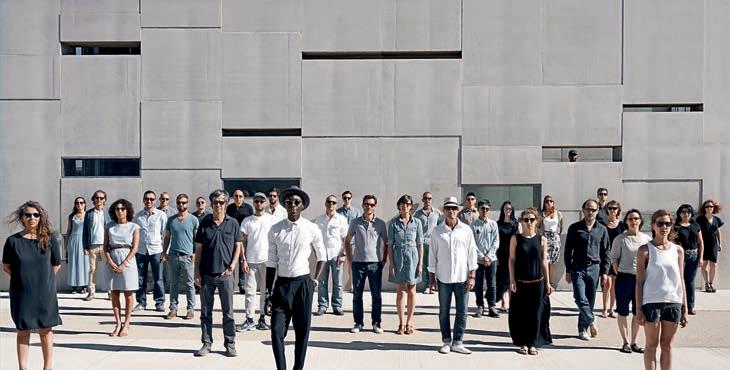
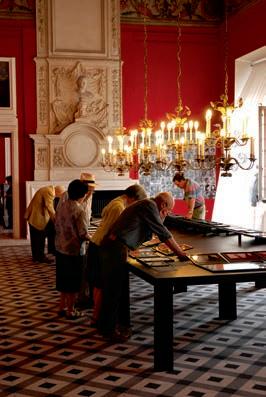
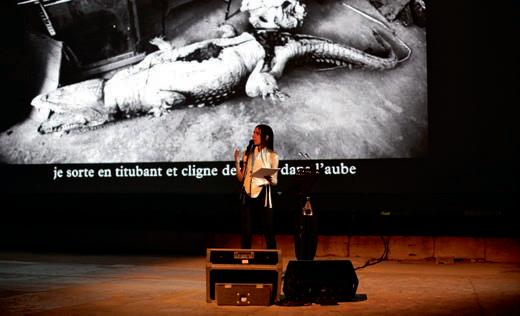

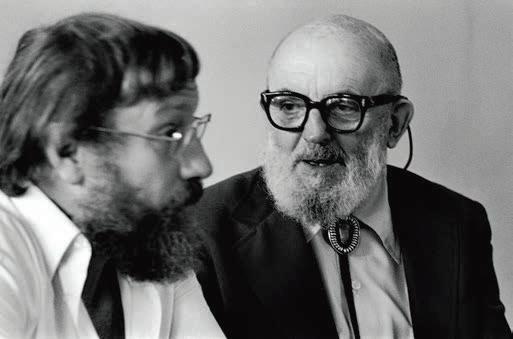


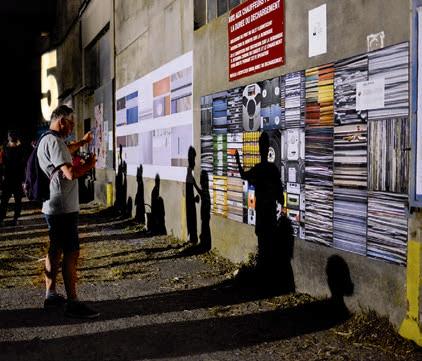
 — Pierre-Jean Amar, Denis Brihat and Ansel Adams 1974.
— Juliette Larochette, Night of the Year Papeteries Étienne, 2017.
— Claudio Marcozzi, William Ropp exhibition, 2002.
— Andres Donadio, Wong Qingsong’s The History of Monuments exhibition Église des Trinitaires, 2009.
— Thierry Bouët, Artists and curators of the 2015 edition.
— Anaïs Fournié, Bring Your Own Paper 2018.
Claire Debost, Cour Fanton 2016.
Claire Debost, PJ Harvey & Seamus Murphy The Hollow of the Land, Theâtre Antique, 2016.
—
Véronique Vercheval, Felicia Murray and Jane-Evelyn Atwood, 1985.
— Pierre-Jean Amar, Musée Réattu courtyard 1976.
— Pierre-Jean Amar, Denis Brihat and Ansel Adams 1974.
— Juliette Larochette, Night of the Year Papeteries Étienne, 2017.
— Claudio Marcozzi, William Ropp exhibition, 2002.
— Andres Donadio, Wong Qingsong’s The History of Monuments exhibition Église des Trinitaires, 2009.
— Thierry Bouët, Artists and curators of the 2015 edition.
— Anaïs Fournié, Bring Your Own Paper 2018.
Claire Debost, Cour Fanton 2016.
Claire Debost, PJ Harvey & Seamus Murphy The Hollow of the Land, Theâtre Antique, 2016.
—
Véronique Vercheval, Felicia Murray and Jane-Evelyn Atwood, 1985.
— Pierre-Jean Amar, Musée Réattu courtyard 1976.
—
Cover
(detail): Ouka Leele, Peluquería, 1979 / Agence Vu.

Design: ABM Studio.
Photoengraving: Terre Neuve.
Book reproduced and printed by EBS, Verona on conda mat 135 g paper, for Actes Sud, Le Méjan, place Nina Berberova, 13200 Arles. © Actes Sud 2019/ Les Rencontres d’Arles 2019 for this edition.

Legal deposit: July 2019.
 — Pierre-Jean Amar, Marc Riboud’s workshop, 1976.
Église des Frères Prêcheurs, 2011 —
Romain Boutillier, Group photo of Back to School in Images, 2018.
photo
— Pierre-Jean Amar, Marc Riboud’s workshop, 1976.
Église des Frères Prêcheurs, 2011 —
Romain Boutillier, Group photo of Back to School in Images, 2018.
photo
BERENICE ABBOTT
MAC ADAMS
HORST ADEMEIT
LAURENCE AËGERTER
THOMAS ALBDORF
ED ALCOCK
SHELL L. ALPERT
JONATHAS DE ANDRADE
DANEL G.ANDÚJAR
YING ANG
THE ANONYMOUS
PROJECT
DANA ARIEL
KEITH ARNATT
EVE ARNOLD
OLIVIA ARTHUR
NADIM ASFAR
STEVE ASHBY
LIONEL ASTRUC & ERICK BONNIER
VARTAN AVAKIAN
JEREMY AYER
ARNAU BACH
ATTILA BALÁZS
TINABARA
FABIO BARILE
MÁTÉ BARTHA
MORTON BARTLETT
MARCEL BASCOULARD
STEEVE BAURAS
ANNE-CATHERINE
BECKER-ECHIVARD
VALÉRIE BELIN
DAPHNÉ BENGOA & LEO FABRIZIO
SIBYLLE BERGEMANN
ISTVÁN BIELIK
LAURA BLIGHT
MÉLANIE BONAJO
GUY BOURDIN
MOHAMED BOUROUISSA
MATTHEW BRANDT
DAVID BRAUCHLI
JOHN BRILL
PERSIJN BROERSEN & MARGIT LUKÁCS
ELINA BROTHERUS
EUGENE VON
BRUENCHENHEIN
KURT BUCHWALD
JUNO CALYPSO
SERGI CÁMARA
LUDOVIC CARÈME
NATASHA CARUANA
MATTHEW CASTEEL
MARK CAWSON
PHILIPPE CHANCEL
EDMUND CLARK
LUCIEN CLERGUE
COLLECTIF IANDÉ
COLLECTIF TROIKA
FELIPE JESUS
CONSALVOS
CAROLINE CORBASSON
ALOÏSE CORBAZ
JESUYS CRYSTIANO
RAFAEL DALLAPORTA
LUTZ DAMMBECK
HENRY DARGER
DAVID DE BEYTER
YVONNE DE ROSA
MARIO DEL CURTO
CHARLES DELLSCHAU
DAVID DENIL
RAYMOND DEPARDON
JOHN DEVLIN
CURZIO DI GIOVANNI
MARK DORF
KRYSTYNA DUL
CHRISTIANE EISLER
FUMIHIRO ENDO
TIJEN EROL
JOHN PAUL EVANS
CAMILLE FALLET
VASILY FEDOSENKO
CLAUS FELIX
PETRA FERIANCOVA
CHRISTIANE FESER
THOMAS FLORSCHUETZ
LUCAS FOGLIA
KAREL FORMAN
ANNA FOX
FRÉDÉRIC
MARINA GADONNEIX
PEPE GAITÁN
GALLI
ALBERTO GARCÍA-ALIX
JEAN-LOUIS GARNELL
DANIELE GENADRY
GEORGE GEORGIOU
PIETRO GHIZZARDI
LEE GODIE
YOHANN GOETZMANN
NOÉMIE GOUDAL
KEN GRANT
ION GRIGORESCU
IGOR GRUBIĆ
AXEL GRÜNEWALD
HARRY GRUYAERT
ANETA GRZESZYKOWSKA
ANDRÁS D. HAJDÚ
PETRIT HALILAJ
KAZUO HANDA
ANTHONY HAUGHEY
MARIAN HENEL
MISHKA HENNER
FLORENCE HENRI
FEMKE HERREGRAVEN
PATRICK HERTZOG
ABIGAIL HEYMAN
ISA HO
MARK HOGANCAMP
CHIA HUANG
PAUL HUMPHREY
TOM HUNTER
HOU I-TING
BALÁZS IVÁNDI-SZABÓ
LIBUŠE JARCOVJÁKOVÁ
CIRIL JAZBEC
BENOÎT JEANNET
ADAM JEPPESEN
SARAH JONES
JÉRÉMIE JUNG
WANG JUYAN
GÜNTER K.
ŠEJLA KAMERIĆ
DEJAN KAPS
NEIL KENLOCK
PETER KENNARD
YORK DER KNOEFEL
KAREN KNORR
DAVOR KONJIKUŠIĆ
SIRKKA-LIISA KONTTINEN
ZDENEK KOŠEK
EVA KOT’ÁTKOVÁ
EVANGELIA KRANIOTI
STACY KRANITZ
ANOUK KRUITHOF
GERMAINE KRULL
MÅRTEN LANGE
DOMINIQUE LAUGÉ
DANIEL LEAL-OLIVAS
OUKA LEELE
LEI LEI
CHRIS LESLIE
JJ LEVINE
HELEN LEVITT
EMERIC LHUISSET
PIXY LIAO
ALEXANDRE LOBANOV
CHRISTIAN LUTZ
ANASTASIYA LVOVA
UTE MAHLER
EVA MAHN
DMITRI MAKHOMET
GÉRARD MALIÉ
SVEN MARQUARDT
VLADO MARTEK
CLAUDE
MARTIN - RAINAUD
STEPHEN M C COY
KEVIN M C ELVANEY
IAIN M C KELL
MERYL M C MASTER
MICHAEL M C MILLAN
DANIEL MEADOWS
ALEXANDRE MEDVEDEV
SUSAN MEISELAS
BARBARA METSELAAR
BERTHOLD
RANDA MIRZA
DONALD MITCHELL
CAMILLE MOIRENC
DAVID MOORE
SIMON MÓRICZ-SABJÁN
ALBERT MOSER
VIK MUNIZ
HANAKO MURAKAMI
CIPRIAN MUREŞAN
JOHN MYERS
EDWARD NADGRODZKI
SHINJI NAGABE
VLAD NANCĂ
VESSELINA NIKOLAEVA
DREW NIKONOWICZ
NORMA OLIVER
PAULINA OLOWSKA
JOSÉ PALAZÓN
MARTIN PARR
CLAUDIA PASSERI
MANFRED PAUL
PABLO PÉREZ-MÍNGUEZ
DAN PERJOVSCHI
SPIRITES
PHOTOGRAPHIES
MARCELL PITI
LUBOŠ PLNÝ
YANN POCREAU
AGNIESZKA POLSKA
LOUIS QUAIL
FRANKIE QUINN
TOMÁŠ RAFA
MEHRALI
RAZAGHMANESH
FERENC RÉDEI
MAK REMISSA
MANUEL RIVERA-ORTIZ
WILLY RONIS
TIMOFEY ROZHANSKY
ILMARI SALMINEN
RUDOLF SCHÄFER
LUTZ SCHMIDT
GUNDULA SCHULZE
ELDOWY
MILTON SCHWARTZ
ENGLISH VERSION
MAGDA SEGAL
TED SERIOS
JÉRÔME SESSINI
ANDY SEWELL
SORN SEYHAKTIT
VALENTIN SIMANKOV
GUILLAUME SIMONEAU
ŁUKASZ SKĄPSKI
LIM SOKCHANLINA
TAMÁS SÓKI
NEAK SOPHAL
PHILONG SOVAN
DAVID SPERO
ANGELIQUE STEHLI
EVA STENRAM
GABRIELE STÖTZER
CLARE STRAND
LEOPOLD STROBL
ICHIWO SUGINO
RAYYANE TABET
ELKE TANGETEN
MARJAN TEEUWEN
TERRAPROJECT
PHOTOGRAPHERS
DOMINIQUE THÉATE
COLIN THOMAS
DIT TI TIT
LAURE TIBERGHIEN
MIROSLAV TICHÝ
MACHCIŃSKI TOMASZ
ALYS TOMLINSON
KURT TONG
MIGUEL TRILLO
UFOS
TAMÁS URBÁN
AWOISKA VAN DER
MOLEN
GUIDO VAN DER WERVE
ELISABETH VAN VYVE
GEE VAUCHER
AUGUST WALLA
MAYA WATANABE
MELVIN WAY
GILLIAN WEARING
EDWARD WESTON
KAI WIEDENHÖFER
HENK WILDSCHUT
WIKTORIA
WOJCIECHOWSKA
ADOLF WÖLFLI
TOM WOOD
ULRICH WÜST
ALI ZANJANI
ZORRO






 Jacques Pénanguer, JR exhibition, 2009.
—
Jacques Pénanguer, Maurizio Cattelan and Pierpaolo Ferrari’s exhibition, Toiletpaper, Atelier des Forges, Parc des Ateliers, 2016.
Jacques Pénanguer, JR exhibition, 2009.
—
Jacques Pénanguer, Maurizio Cattelan and Pierpaolo Ferrari’s exhibition, Toiletpaper, Atelier des Forges, Parc des Ateliers, 2016.











 — Véronique Vercheval, Place de la République 1982.
— Anaïs Fournié, Bring Your Own Paper, 2018.
— Claudio Marcozzi, François Hébel at the Théâtre Antique 2007.
— Pierre-Jean Amar, Robert Doisneau 1975.
— Véronique Vercheval, Lucien Clergue and Jean-Maurice Rouquette rue des Arènes, 1984.
Antonio Biasiucci’s Cows exhibition at the cloître Saint-Trophime, 2002.
— Véronique Vercheval, Place de la République 1982.
— Anaïs Fournié, Bring Your Own Paper, 2018.
— Claudio Marcozzi, François Hébel at the Théâtre Antique 2007.
— Pierre-Jean Amar, Robert Doisneau 1975.
— Véronique Vercheval, Lucien Clergue and Jean-Maurice Rouquette rue des Arènes, 1984.
Antonio Biasiucci’s Cows exhibition at the cloître Saint-Trophime, 2002.





 — Andres Donadio, ttJR exhibition, Atelier des Forges, Parc des Ateliers, 2007.
— Lucy Vigoureux, Françoise Nyssen, Minister of Culture, in the center, Hervé Schivetti, Mayor of Arles, on the right, Sam Stourdzé, on the left, and one of the maid of honor of the Queen of Arles, 2017.
— Pierre-Jean Amar, Mary Ellen Mark, 1976.
Basile Simon, Architecture of Memory exhibition, Église des FrèresPrêcheurs 2012.
— Andres Donadio, ttJR exhibition, Atelier des Forges, Parc des Ateliers, 2007.
— Lucy Vigoureux, Françoise Nyssen, Minister of Culture, in the center, Hervé Schivetti, Mayor of Arles, on the right, Sam Stourdzé, on the left, and one of the maid of honor of the Queen of Arles, 2017.
— Pierre-Jean Amar, Mary Ellen Mark, 1976.
Basile Simon, Architecture of Memory exhibition, Église des FrèresPrêcheurs 2012.































































































































 Daniel Meadows & Martin Parr/Magnum, June Street, Salford Manchester, 1973.
Daniel Meadows & Martin Parr/Magnum, June Street, Salford Manchester, 1973.













































































































































 Portraits of Magali Nachtergael and Anne Reverseau: courtesy of the curators.
ERIC BAUDART & THU-VAN TRAN (1972 & 1979), FREDI CASCO (1967), MOYRA DAVEY (1958), DOCUMENTATION CÉLINE DUVAL (1974), RENAUD EPSTEIN & INITIATIVE URBANE KULTUREN (1971 & CREATED IN 2014). JEAN GEISER (1848-1923), JOANA HADJITHOMAS & KHALIL JOREIGE (1969), ROC HERMS (1978), SUSAN HILLER (1940-2019), JOHN HINDE (1916-1997), KATIA KAMELI (1973), AGLAIA KONRAD (1960), VALÉRIE MRÉJEN (1969), MARTIN PARR (1952), MATHIEU PERNOT (1970), BRENDA LOU SCHAUB (1993), STEPHEN SHORE (1947), JOHN STEZAKER (1948), ORIOL VILANOVA (1980), WILLIAM WEGMAN (1943).
Portraits of Magali Nachtergael and Anne Reverseau: courtesy of the curators.
ERIC BAUDART & THU-VAN TRAN (1972 & 1979), FREDI CASCO (1967), MOYRA DAVEY (1958), DOCUMENTATION CÉLINE DUVAL (1974), RENAUD EPSTEIN & INITIATIVE URBANE KULTUREN (1971 & CREATED IN 2014). JEAN GEISER (1848-1923), JOANA HADJITHOMAS & KHALIL JOREIGE (1969), ROC HERMS (1978), SUSAN HILLER (1940-2019), JOHN HINDE (1916-1997), KATIA KAMELI (1973), AGLAIA KONRAD (1960), VALÉRIE MRÉJEN (1969), MARTIN PARR (1952), MATHIEU PERNOT (1970), BRENDA LOU SCHAUB (1993), STEPHEN SHORE (1947), JOHN STEZAKER (1948), ORIOL VILANOVA (1980), WILLIAM WEGMAN (1943).


























































































 Portrait of Emmanuelle Halkin and Lee Shulman: Léa L’Azou.
Anonymous, 1972. Courtesy of The Anonymous Project [all photographs].
Portrait of Emmanuelle Halkin and Lee Shulman: Léa L’Azou.
Anonymous, 1972. Courtesy of The Anonymous Project [all photographs].

















 Emeric Lhuisset, Theater of War
Photograph with a group of Kurdish guerrillas, 2011. Courtesy of the artist / BMW 2018 Residency.
Emeric Lhuisset, Theater of War
Photograph with a group of Kurdish guerrillas, 2011. Courtesy of the artist / BMW 2018 Residency.



























































































































































































































 — Véronique Vercheval, Arlesian Astmosphere 1986
Jane Evelyn Atwood, Yvette Troispoux 1985. —
— Giovanna Calvenzi, Gianni Berengo Gardin and Gabriele Basilico during the hanging of Basilico’s exhibition, 1987.
Claudio Marcozzi, Stand 2006.
— Véronique Vercheval, Arlesian Astmosphere 1986
Jane Evelyn Atwood, Yvette Troispoux 1985. —
— Giovanna Calvenzi, Gianni Berengo Gardin and Gabriele Basilico during the hanging of Basilico’s exhibition, 1987.
Claudio Marcozzi, Stand 2006.






 — Jacques Bakker, Workshop 1977.
— Claudio Marcozzi, Portfolios review, 1997.
Jean-Luc Deru, Jean Dieuzaide and Alain Lequeux at the Théâtre Antique 1981.
— Claudio Marcozzi, Susan Meiselas’ Reframing History exhibition 2006.
— Pierre-Jean Amar, In an exhibition, 1976.
Flavio Edreira, Cosmos-Arles Books 2018.
— Jacques Bakker, Workshop 1977.
— Claudio Marcozzi, Portfolios review, 1997.
Jean-Luc Deru, Jean Dieuzaide and Alain Lequeux at the Théâtre Antique 1981.
— Claudio Marcozzi, Susan Meiselas’ Reframing History exhibition 2006.
— Pierre-Jean Amar, In an exhibition, 1976.
Flavio Edreira, Cosmos-Arles Books 2018.

























































































































































































 — Faustine Ferhmin, Erik Kessels’ Loving Your Pictures exhibition Église des FrèresPrêcheurs, 2007.
— Jean-Claude Gontrand, Maryvonne Arnaud’s Templum Merinos installation on the Chapelle du Méjan facade, 1990.
— Véronique Vercheval, Raymond Desjardins, Hôtel Arlatan manager, 1984.
Claudio Marcozzi, Harry Callahan 2003.
— Faustine Ferhmin, Erik Kessels’ Loving Your Pictures exhibition Église des FrèresPrêcheurs, 2007.
— Jean-Claude Gontrand, Maryvonne Arnaud’s Templum Merinos installation on the Chapelle du Méjan facade, 1990.
— Véronique Vercheval, Raymond Desjardins, Hôtel Arlatan manager, 1984.
Claudio Marcozzi, Harry Callahan 2003.








 — Marie Brosillon, François Hébel, on the left, Frédéric Mitterand, in the center and Clément Chéroux, on the right, visiting Shoot, Existential Photography, 2010.
— Juliette Larochette, Françoise Nyssen, Minister of Culture and Hubert Védrine, the Rencontres d’Arles president, 2017.
— Romain Protin, William Klein + Daniel Cohn-Bendit + Rodolphe Burger Evening Théâtre Antique, 2018.
— Véronique Vercheval, Joan Fontcuberta during his workshop 1982.
— Véronique Vercheval, Georges Vercheval and Martin Parr 1986.
Pierre-Jean Amar, Guy Le Querrec’s workshop 1976. —
Agence Vu’ Here Is New York exhibition, 2002.
—
Pierre-Jean Amar, Ralph Gibson and Willy Ronis Carmargue, 1975.
— Marie Brosillon, François Hébel, on the left, Frédéric Mitterand, in the center and Clément Chéroux, on the right, visiting Shoot, Existential Photography, 2010.
— Juliette Larochette, Françoise Nyssen, Minister of Culture and Hubert Védrine, the Rencontres d’Arles president, 2017.
— Romain Protin, William Klein + Daniel Cohn-Bendit + Rodolphe Burger Evening Théâtre Antique, 2018.
— Véronique Vercheval, Joan Fontcuberta during his workshop 1982.
— Véronique Vercheval, Georges Vercheval and Martin Parr 1986.
Pierre-Jean Amar, Guy Le Querrec’s workshop 1976. —
Agence Vu’ Here Is New York exhibition, 2002.
—
Pierre-Jean Amar, Ralph Gibson and Willy Ronis Carmargue, 1975.


























































 — Pierre-Jean Amar, Denis Brihat and Ansel Adams 1974.
— Juliette Larochette, Night of the Year Papeteries Étienne, 2017.
— Claudio Marcozzi, William Ropp exhibition, 2002.
— Andres Donadio, Wong Qingsong’s The History of Monuments exhibition Église des Trinitaires, 2009.
— Thierry Bouët, Artists and curators of the 2015 edition.
— Anaïs Fournié, Bring Your Own Paper 2018.
Claire Debost, Cour Fanton 2016.
Claire Debost, PJ Harvey & Seamus Murphy The Hollow of the Land, Theâtre Antique, 2016.
—
Véronique Vercheval, Felicia Murray and Jane-Evelyn Atwood, 1985.
— Pierre-Jean Amar, Musée Réattu courtyard 1976.
— Pierre-Jean Amar, Denis Brihat and Ansel Adams 1974.
— Juliette Larochette, Night of the Year Papeteries Étienne, 2017.
— Claudio Marcozzi, William Ropp exhibition, 2002.
— Andres Donadio, Wong Qingsong’s The History of Monuments exhibition Église des Trinitaires, 2009.
— Thierry Bouët, Artists and curators of the 2015 edition.
— Anaïs Fournié, Bring Your Own Paper 2018.
Claire Debost, Cour Fanton 2016.
Claire Debost, PJ Harvey & Seamus Murphy The Hollow of the Land, Theâtre Antique, 2016.
—
Véronique Vercheval, Felicia Murray and Jane-Evelyn Atwood, 1985.
— Pierre-Jean Amar, Musée Réattu courtyard 1976.


 — Pierre-Jean Amar, Marc Riboud’s workshop, 1976.
Église des Frères Prêcheurs, 2011 —
Romain Boutillier, Group photo of Back to School in Images, 2018.
photo
— Pierre-Jean Amar, Marc Riboud’s workshop, 1976.
Église des Frères Prêcheurs, 2011 —
Romain Boutillier, Group photo of Back to School in Images, 2018.
photo